
THE DEFINITIVE GUIDE TO HERITAGE IN THE UNITED KINGDOM
ISSUE 37
Email: info@visitheritage.co.uk
Thanks to all the many owners and managers of heritage places featured here for their information and for helping to keep Hudson’s accurate and up to date.
All images are copyright to Visit Heritage or to the places depicted unless otherwise stated. All rights reserved.

Publisher: Tina Veater, for Visit Heritage
Editorial: Sarah Greenwood, Likeminded, Berwick upon Tweed TD15 1XJ
Design: Studio 74 Creative Design, Motorworks, Frome, Somerset BA11 1HS
and Web management: Carmen Goodwin
Bookings
Hudson’s is published by Visit Heritage, a division of Ignyte Media Ltd, Bathway Farm, Bathway, Chewton Mendip, Somerset BA3 4LN 01761 410141
The definitive guide to heritage in the United Kingdom
Information carried in this publication is based on that supplied by the owners of the various places featured. Every effort has been made to ensure that the information given is accurate at the time of going to press but opening times, admission charges and facilities available at heritage places may be changed at the discretion of the owners. Visitors taking long journeys are advised to check details in advance to ensure that opening times are as published. While every care has been taken to ensure the data contained in the publication is accurate, neither the publisher nor its editorial contributors can accept, and hereby disclaim, any liability to any party for loss or damage caused by errors or omissions resulting from negligence, accident or any other cause. Ignyte do not officially endorse any advertising material included within this publication. All right reserved. No part of this publication may be reproduced, stored in any retrieval system in any form without prior permission of the publisher.
The views expressed by contributors do not necessarily reflect the views of Visit Heritage or its employees. When branded products are mentioned in editorial or advertising promotions, this should not be taken to imply endorsement of these products by Visit Heritage or Hudson’s.
© VISIT HERITAGE 2024
Front cover: St Andrews Abbey Archway, Scotland 2024
Published by Ignyte Media Ltd, Bathway Farm, Bathway, Chewton Mendip, Somerset BA3 4LN Tel: 01761 410141
3 visitheritage.co.uk

KEY TO SYMBOLS
Hudson’s is organised by region according to this map. We use the symbols on this key to include as much information as possible. We indicate ownership so if you are a member of a heritage organisation, you know if you can have privileged access, but please check first.
Information
Toilets
Baby Changing
Accepts Euros
Open All Year
Parking Available
Accessibility features
Cycling Routes
Dogs Welcome
Accommodation
Audio Tours
Guided Tours
Educational/School Visits
Café / Tearoom / Refreshments
Restaurant Shop
Plant Sales
Private or Corporate Venue
Special Events
Weddings
In the Movies
Spa Facilities
Haunted
Historic Houses but does not give free access to members
Historic Houses with free access to members
Owned by National Trust
Owned by National Trust for Scotland
In the care of Historic Environment Scotland
In the care of English Heritage
In the care of Cadw, the Welsh Government’s
historic environment service
Royal Horticultural Society Partner Garden
In the care of Northern Ireland
Environment Agency
In the care of the Landmark Trust
Churches Conservation Trust
ARUNDEL CASTLE LONDON KENT OXFORD SHIRE CAMBRIDGE SHIRE NORFOLK DERBYSHIRE LEICESTERSHIRE NORTHAMPTON SHIRE STAFFORDSHIRE SHROPSHIRE WARWICKSHIRE WORCESTER SHIRE WEST MIDLANDS LINCOLNSHIRE RUTLAND YORKSHIRE CO DURHAM TYNE AND WEAR TEESIDE NORTHUMBERLAND SCOTTISH BORDERS ABERDEEN ANGUS SCOTTISH HIGHLANDS WEST HIGHLANDS & ISLANDS NORTH WALES MID WALES SOUTH WALES AYRSHIRE DERRY TYRONE FERMANAGH ARMAGH ANTRIM DOWN DUMFRIES & GALLOWAY EDINBURGH LANARKSHIRE GREATER GLASGOW PERTHSHIRE ARGYLL & BUTE STIRLING FIFE MANCHESTER LANCASHIRE MERSEYSIDE CHESHIRE CUMBRIA HEREFORDSHIRE NOTTINGHAM SHIRE HERTFORD SHIRE BEDFORD SHIRE ESSEX SUFFOLK SUSSEX SURREY CORNWALL DEVON GLOUCESTERSHIRE SOMERSET DORSET WILTSHIRE HAMPSHIRE BERKSHIRE BUCKS 4 visitheritage.co.uk

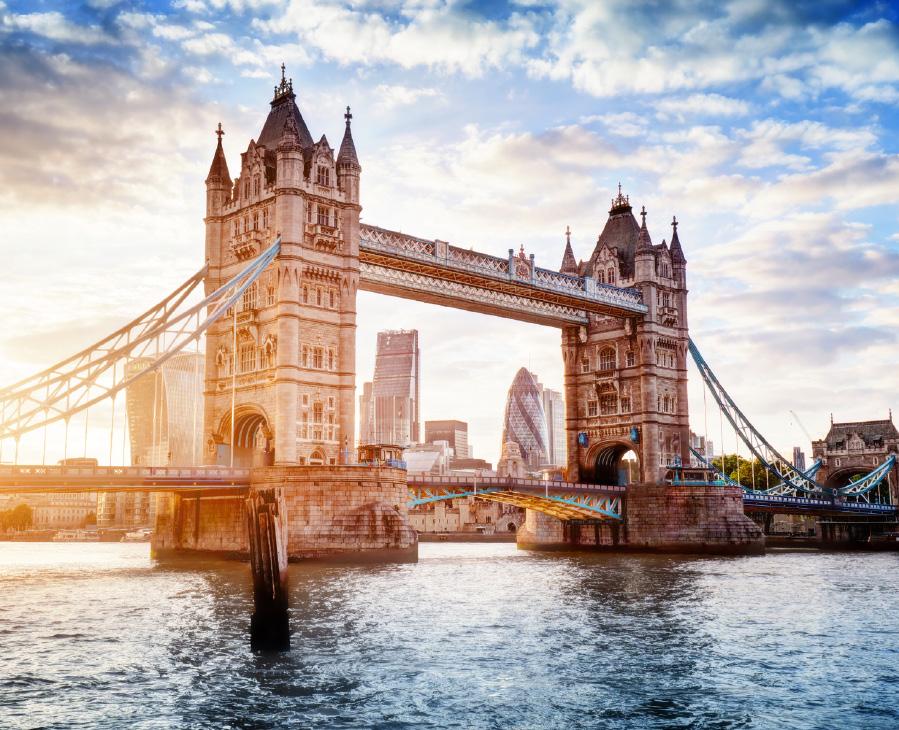
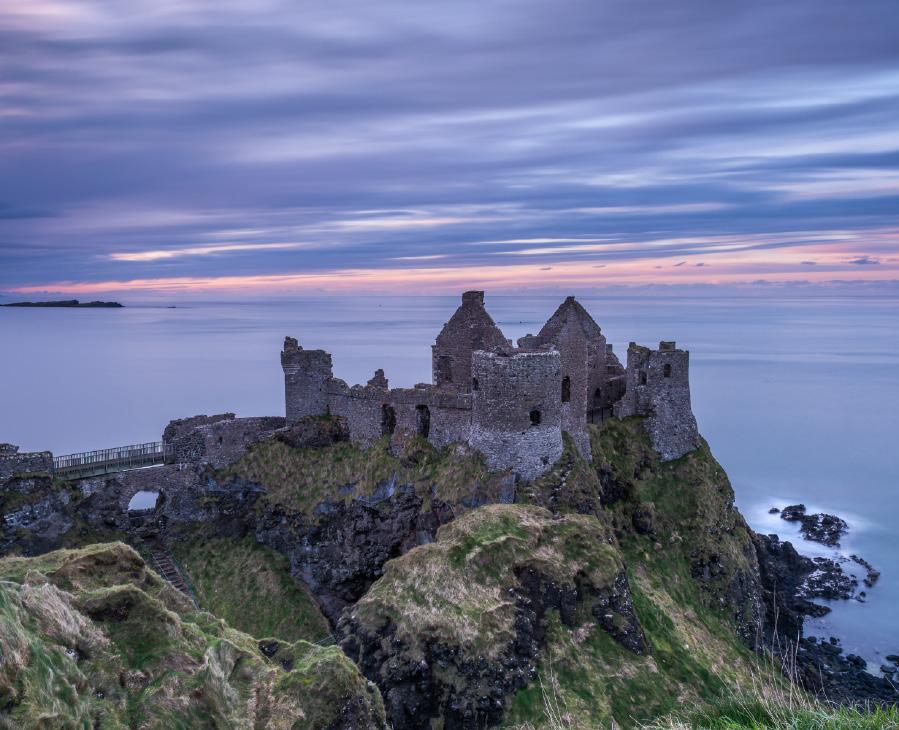

On behalf of Visit Heritage Welcome to
Welcome to the Hudson’s guide 2024 and a wealth of information to both inspire you to visit Britain’s heritage places and help you get there. We mix our insider knowledge of country houses, museums, cathedrals and battlefields with simply presented information on how to visit. You can plan trips to any part of England, Scotland, Wales and Northern Ireland and discover some fascinating parts of our national story.
This year our articles have a magical quality. Our trusty commentator, Mrs Hudson, has been seeking out fairy tale castles all over the country, we’ve been looking for places where you can explore some of the myths that underlie our history and finding legends on Northern Ireland’s coast. We’ve delved into the history of some fairytale romances and looked at how modern love is being played out in changes to modern marriages. It’s an anniversary year for Historic Houses, the organisation that stands up for the independently owned heritage, and you can remember a landmark exhibition at the V&A in the company of Ben Cowell or choose the company of Derek Tarr on a walk through the heritage of Suffolk. We’ve highlighted some Tudor houses and some places where food is revitalising kitchen gardens. For the adventurous, you can make your own fairytale holiday at a glamping site with a little history attached. And, as usual, you can rely on Hudson’s to find some new places on the map and spot why 2024 is a special year.
Use our directory pages and maps to get you there and spend this year discovering Britain’s extraordinary history where it happened.
Sarah Greenwood Editor
GLENFINNAN VIADUCT, SCOTLAND
TOWER BRIDGE, LONDON
DUNLUCE CASTLE, NORTHERN IRELAND
5 visitheritage.co.uk
LLANRWST, NORTH WALES

visitheritage.co.uk 6
Region map and key to symbols 4 On Behalf of Visit Heritage 5 A welcome to Hudson’s from Sarah Greenwood Mark the Year 8 Reasons to visit heritage places in 2024 New for 2024 14 Heritage Places to visit just open or opening in 2024 Myths & Legends 20 Historic places with myths and legends. Mrs Hudson’s Fairytales 26 Mrs Hudson and Dinky visit Fairy-tale castles Drive Northern Ireland 32 Explore the Causeway Coastal Route House of Tudor 38 Architectural writer Lucy Denton explores Tudor houses, built in the turbulent 16th century. The Glamour of Glamping 44 Hudson’s has found that some glamping sites combine history, countryside and a view. An interview with Ben Cowell 48 Historic Houses has just celebrated its 50th anniversary, so Sarah Greenwood went to ask him how much has changed. Stowe – Restoration of the century 52 Looking at the final reveal of the 20 year restoration programme at Stowe Tarr on the Road 58 Derek Tarr walks us through parts of Essex and Suffolk And the bride wore 68 Hudson’s has uncovered some new trends in weddings booked in historic venues around the country. Is love enough? 72 Hudson’s take a look at a few hidden romances that seems remarkably modern. Read all about it 78 We look into guidebooks and the new digital options The destruction of the country house 82 This edited extract from Ben Cowell’s book recalls the making of the landmark exhibition at the V&A Fresh produce 86 A look at heritage houses and kitchen gardens London 92 South East 96 Berkshire / Buckinghamshire / Hampshire / Kent / Oxfordshire / Surrey / Sussex / Isle of Wight South West 106 Cornwall / Devon / Dorset / Gloucestershire / Somerset / Wiltshire East of England 112 Bedfordshire / Cambridgeshire / Essex / Hertfordshire / Norfolk / Suffolk East Midlands 118 Derbyshire / Leicestershire & Rutland / Lincolnshire / Northamptonshire / Nottinghamshire Heart of England 126 Herefordshire / Shropshire / Staffordshire / Warwickshire / West Midlands / Worcestershire Yorkshire 132 East Yorkshire / North Yorkshire / South Yorkshire / West Yorkshire North West 136 Cheshire / Cumbria / Lancashire / Manchester / Merseyside North East 140 Co Durham / Northumberland / Tyne & Wear Scotland 144 Borders / South West Scotland / Dumfries & Galloway / Ayrshire & Arran / Edinburgh / Greater Glasgow / Tayside / West Highlands & Islands / Loch Lomond / Stirling & the Trossachs / Grampian Highlands / Aberdeen / Highlands & Skye Wales 148 South Wales / Mid-Wales / North Wales Northern Ireland 152 Index 156
We want Hudson’s to make discovering Britain’s heritage easy for you but please check opening times before you visit to avoid disappointment. Many heritage places open regularly but others only occasionally or only for special events. 7 visitheritage.co.uk
CONTENTS
MARK THE YEAR
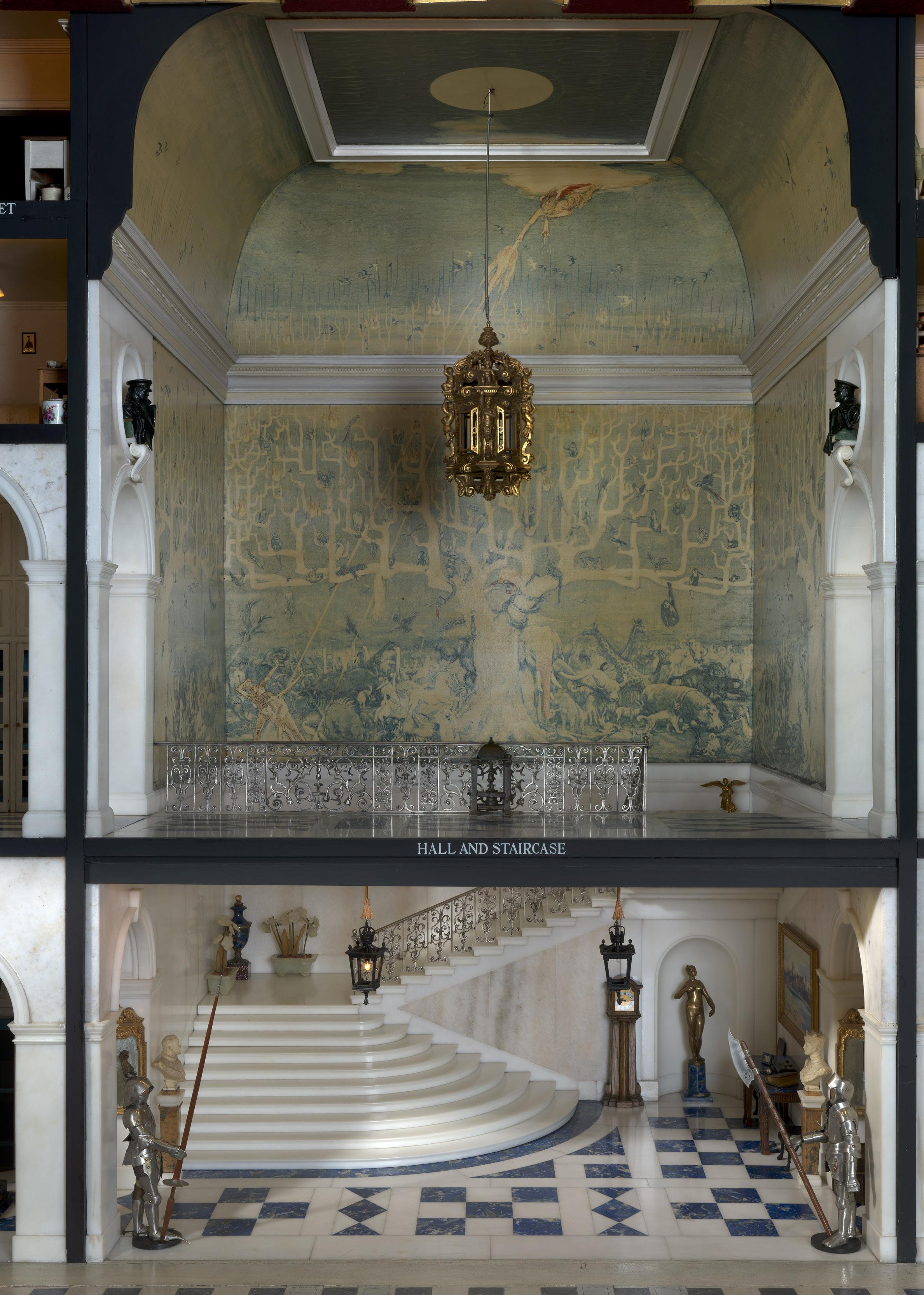
QUEEN MARY’S DOLLS HOUSE © ROYAL COLLECTION TRUST Royal Collection Trust / © His Majesty King Charles III 2023 visitheritage.co.uk 8


2024 A reason to visit heritage places in
AROUND THE COUNTRY
300 years -1724 - Birth of George Stubbs
George Stubbs, Britain’s greatest animal painter, was born 300 years ago in 1724. Today his paintings of horses are still unsurpassed for accuracy and emotion. George Stubbs was the son of a leatherworker from Liverpool who went briefly to work for Hamlet Winstanley, painter to the Earl of Derby at Knowsley Hall. Moving to York, he studied under the anatomist, Charles Atkinson and came to the notice of Sir Henry Nelthorpe of Scawby Hall in Lincolnshire, who commissioned Stubbs to paint his first portrait in 1745. The portrait of Sir Henry and his wife, Elizabeth, and two of their son, John, hang at Scawby Hall in Lincolnshire. Under Lady Elizabeth’s patronage, Stubbs travelled to Italy and then rented a barn where he undertook an extensive study of the anatomy of the horse, in the process acquiring the understanding of horses which give his later paintings an unrivalled sense of reality and movement. Moving to London, he was introduced, perhaps by Sir Joshua Reynolds, to many of the leading figures of the racing world. The 18th century aristocracy was more than a little obsessed by racing and horsebreeding and commissions followed for Stubbs to
capture the great racing champions of the era in paint or their owners involved in their various equestrian pursuits – hunting, racing, shooting – with their dogs as well. Perhaps his most famous portrait is of the chestnut stallion Whistlejacket, now in the National Gallery, a race winner owned by Charles Watson-Wentworth, 2nd Marquess of Rockingham who created a room at his house, Wentworth Woodhouse in Yorkshire, to show it off. Other places to see some of George Stubbs’ greatest works today include Goodwood House in Sussex, Down House (English Heritage) in Kent, Cottesbrooke Hall in Northamptonshire and Mount Stewart (National Trust) in Northern Ireland.

TWO
9 visitheritage.co.uk
HUNTERS &
A
GROOM (DETAIL) BY GEORGE STUBBS, COTTESBROOKE HALL
QUEEN MARY’S DOLLS’ HOUSE 100 years - 1924, Commissioned
What is perhaps the finest dolls’ house in the world was made, not for a child, but for the 57 year old Queen of England – Queen Mary - in 1924. Queen Mary was the great-grandmother of HM King Charles and renowned for her love of decorative objects. Her cousin, Princess MarieLouise, commissioned the dolls’ house as a gift, employing the architect, Sir Edwin Lutyens to oversee the project. He organised a committee who brought together 250
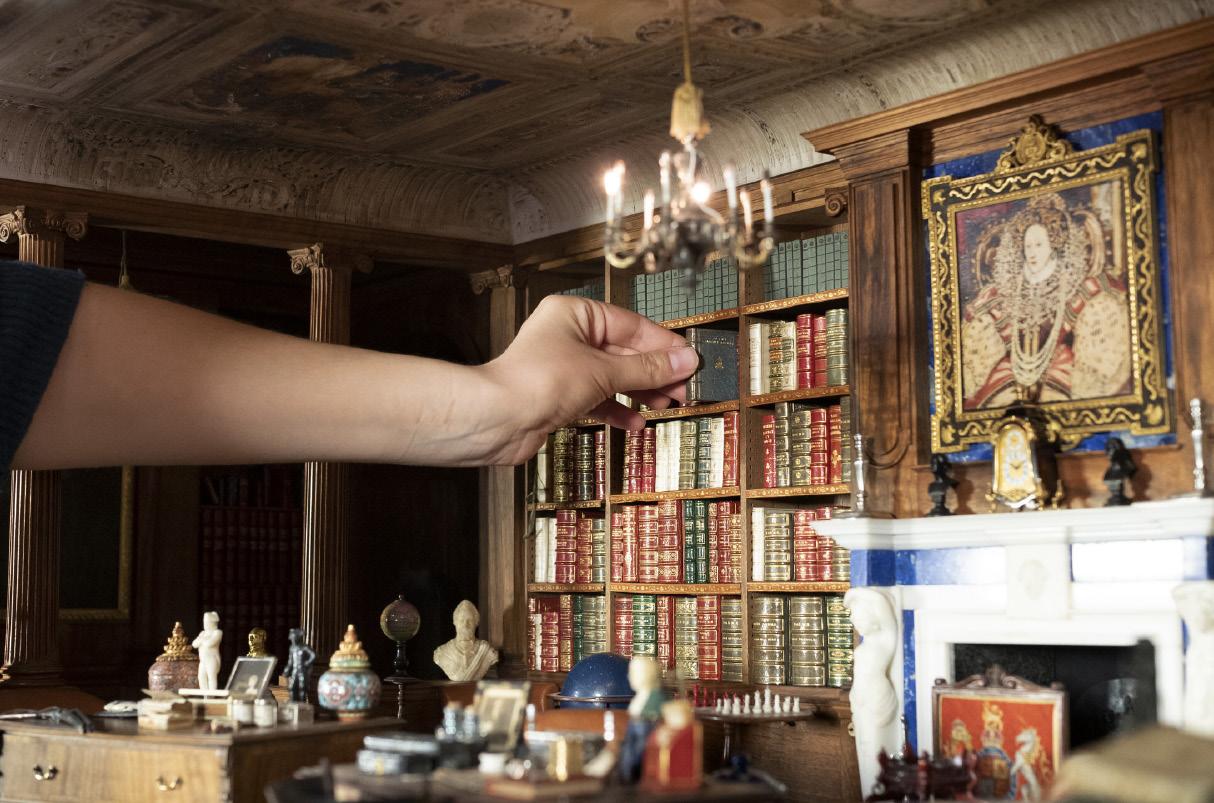
craftspeople, 60 decorators, 700 artists, 600 writers and 500 donors to create a perfect royal residence of the 1920s in 1/12 scale. Just after the First World War, it was becoming obvious that the days of the grand country house were numbered and the house provides a record of the domestic arrangements of the King and Queen, their children and staff. It has working electric light, lifts and running water. The building was designed by Lutyens and the garden by his long-time collaborator Gertrude Jekyll, murals were painted by Edmund Dulac and William Nicolson; musical scores written by Gustav Holst and Frederick Delius; and minute books written by Virginia Woolf, Thomas Hardy and Sir Arthur Conan Doyle. The firm of Broadwood made a miniature piano; Purdey, tiny shotguns; Cartier, the clocks; Doulton and Royal Worcester, the porcelain. Dinner was to be served on a silver service for 18 made by Crown jewellers Garrard & Co and kept locked in the butler’s Strong Room. Suppliers to the Royal Household provided goods for the kitchens; wine came from Berry Brothers, biscuits from McVities, tea from Lyons and mustard from Colmans. When, in 1924, the house was shown at the Empire Exhibition at Wembley, 1.5 million people flocked to see this glimpse of royal luxury and it is still enjoyed by the many visitors to Windsor Castle where it is on permanent display.
 Royal Collection Trust / © His Majesty King Charles III 2023
Royal Collection Trust / © His Majesty King Charles III 2023
10 visitheritage.co.uk
Royal Collection Trust / © His Majesty King Charles III 2023
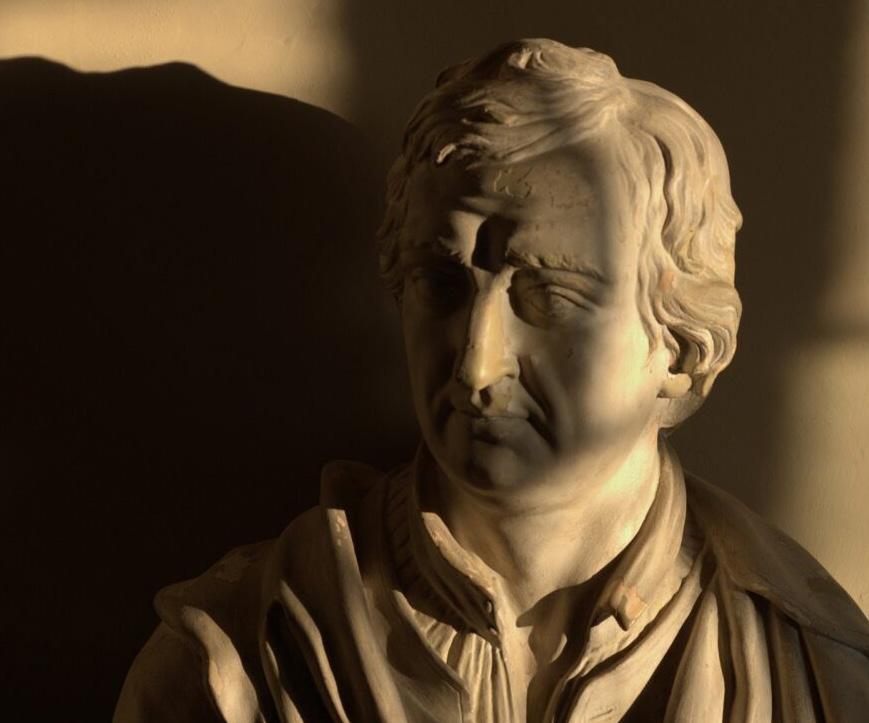
NEWSTEAD ABBEY
200 years - 1824
Death of Lord Byron
The romantic poet George, Lord Byron is remembered today as much for his scandalous love affairs as for his poetry. As soon as the first two cantos of Childe Harold’s Pilgrimage were published in 1811, he became an instant national celebrity, his readers connecting him with the hero of his story of a young man travelling abroad. His life story and his dark good looks still appeal to the romantic in all of us although the charm of his satirical poetry has suffered over time. After a chaotic childhood - his father abandoned his mother after spending her inheritancehis fortunes changed, aged 10, when he unexpectedly inherited the barony of Byron from an uncle, which came
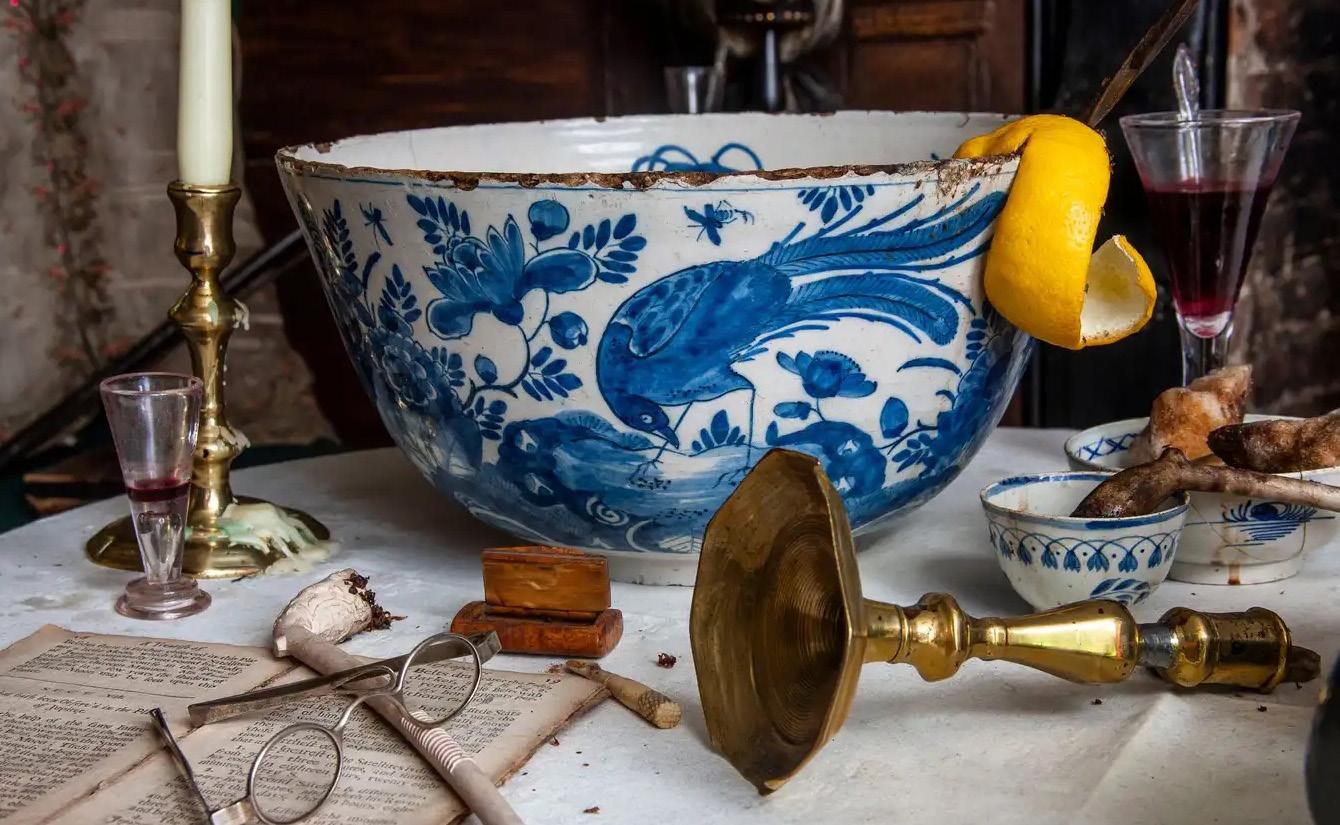


with debts and a dilapidated country house, Newstead Abbey in Nottinghamshire. The medieval gothic mansion fired Byron’s imagination, “Newstead and I stand or fall together”, and he associated it with the romantic decline of his family. He could only afford to live in it for brief periods before finally selling it in 1818. Byron published a series of extraordinarily popular narrative poems and earned a reputation as “mad, bad and dangerous to know” from his affairs with his half-sister, Augusta and a series of married women. He had a lifelong fascination with Albania, Greece and Turkey, captured in Thomas Phillips’ famous portrait of him in Albanian dress. (You can see the costume from the portrait at Bowood House in Wiltshire.) This connection led him to support the cause of liberation in Greece and led to his death at the Greek town of Missalonghi in 1824.
DENNIS SEVERS’ HOUSE
1724 - 300 years Building of 18 Folgate Street
The 1724 house that Californian Dennis Severs bought in Spitalfields, East London in 1979 was derelict. From the start, he had a vision of how to create, not an exact restored replica of its Georgian self, but a truly evocative experience that would transport visitors, mentally and emotionally, into the distant past. It is a masterpiece of storytelling; there are no mannikins, no interpretive noticeboards, no guidebooks. The story is of a fictional family of Huguenot silk weavers, the Jervis family, who settled after escaping persecution in France and making a new life on the edge of the city of London. Their presence is palpable – Dennis’ genius was to make you feel that someone has just stepped out of the room before you entered it. Their pipes smoke on the table next to their half full wine glasses and their washing steams in the basement. The effect was created as much out of light and shadow as authentic objects and it always felt a little ephemeral, yet after Severs’ death, the house was acquired by the Spitalfields Trust and given museum status. It you want to step back 300 years and jolt your imagination into a world where George I is still King, there is nowhere better.
11 visitheritage.co.uk
MARBLE HILL
1724 – 300 years
Building of Marble Hill
On the side of the River Thames at Twickenham stands an elegant white villa, a survivor of a series of country villas just outside London where the Georgian beau monde could enjoy leisure pursuits in country air. Marble Hill was built in 1724 to designs by the neo-Palladian architect Roger Morris, aided by the 9th Earl of Pembroke. It was home to Henrietta Howard, Countess of Suffolk who used a settlement from King George II, whose mistress she had already been for ten years, to buy land. Inspired by the villas of the Venetian architect, Andreas Palladio, Marble Hill became a model for similar villas in Britain and particularly in the American colonies.

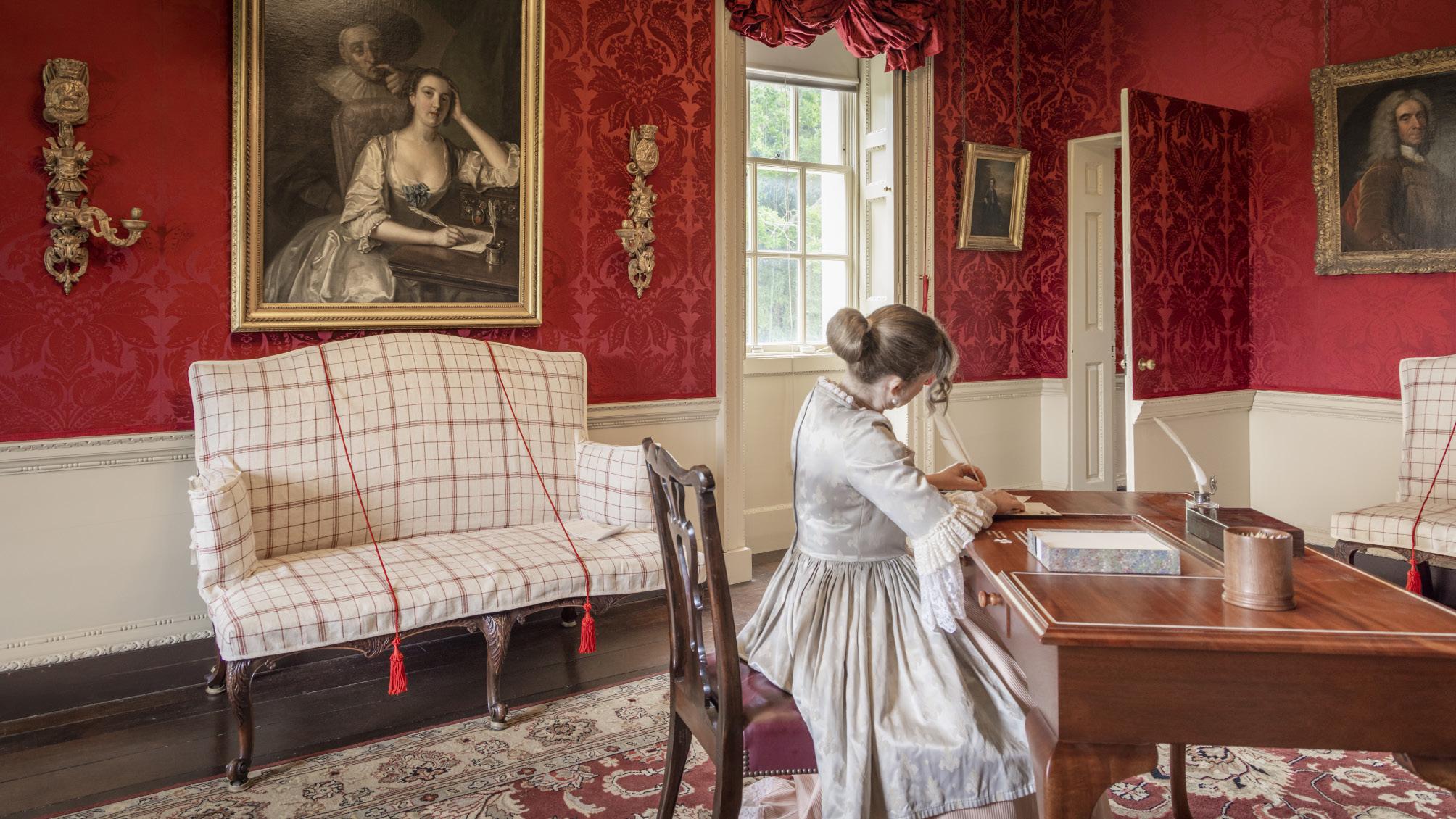
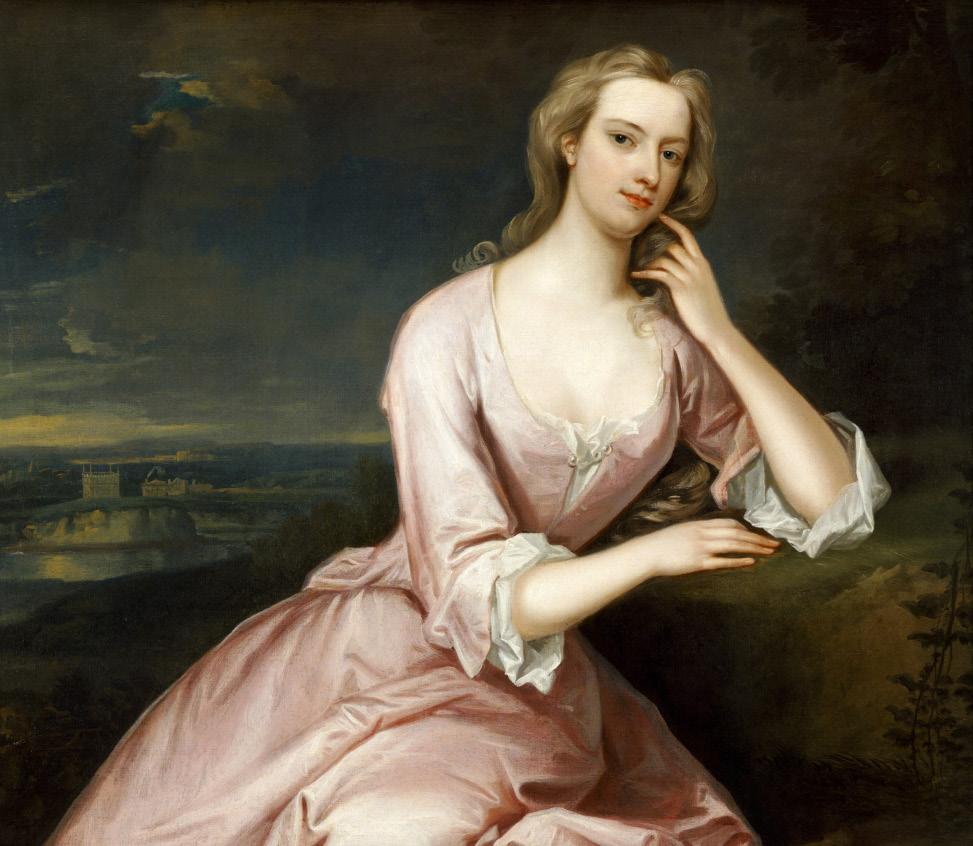
Henrietta Howard was a remarkable woman. Orphaned at 12, she was married at 17 to the profligate son of her guardian, Charles Howard, later Earl of Suffolk. When the young couple travelled to Hanover to ingratiate themselves with the future George I, she quickly became mistress to his son, the future George II. At court, she befriended the poet Alexander Pope and became part of a literary circle which would continue to revolve around her through two marriages and the defection of George II to another mistress. Alexander Pope and the writer Horace Walpole had neighbouring villas along the Thames, while the playwright John Gay and the satirist Jonathan Swift were regular visitors. Marble Hill has been the beneficiary of a seven year restoration programme by English Heritage so that today it looks as bright and fresh as the day it was built, 300 years ago.

12 visitheritage.co.uk

ABBOTSFORD
1824 - 200 years Building of Abbotsford
Wherever you go in Scotland you will encounter the turrets and towers that are characteristic of an architectural style known as Scottish Baronial. The fad for Scottish Baronial can be traced to the building of Abbotsford by the famous novelist Sir Walter Scott in 1824. He described his new house as “a sort of romance in Architecture”. When he acquired the land in 1811, Scott had published 3 successful long poems, but it was the publication of his Waverley novels over the next fifteen years that would secure him an income large enough to build himself a substantial country house. Like the poetry and prose works, the house has something of a medieval feel and the author filled it with his collections of books, curiosities, celebrity memorabilia and armour. Only a year after the house was complete, Scott was plunged into the financial difficulties which plagued him for the rest of his life. The threat of bankruptcy initiated a ferocious period of writing so that he had completed over 25 novels by the time of his death in 1832. Abbotsford was always a tourist attraction, as was Sir Walter himself, so he arranged a sunken entrance for the queues of people who came to visit. Today’s visitors enter by the front door and step immediately into the world of one of Britain’s most influential writers.


13 visitheritage.co.uk

Heritage places to visit, just open or opening in 2024
2024 - NEW FORvisitheritage.co.uk 14
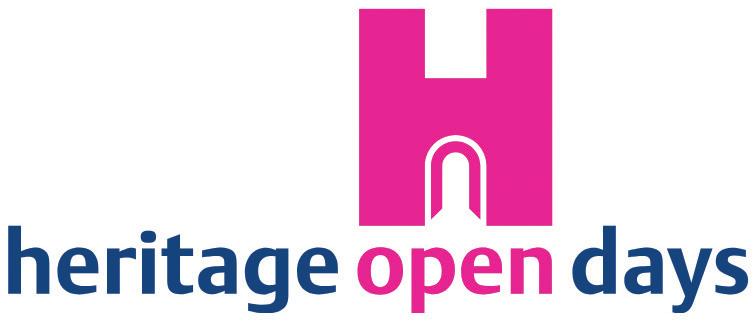
6th-15th September 2024
The annual celebration of England’s rich culture and history when the doors of heritage buildings, which are usually closed, are left open to the public in a welcome to all. Look out for openings near you. www.heritageopendays.org.uk

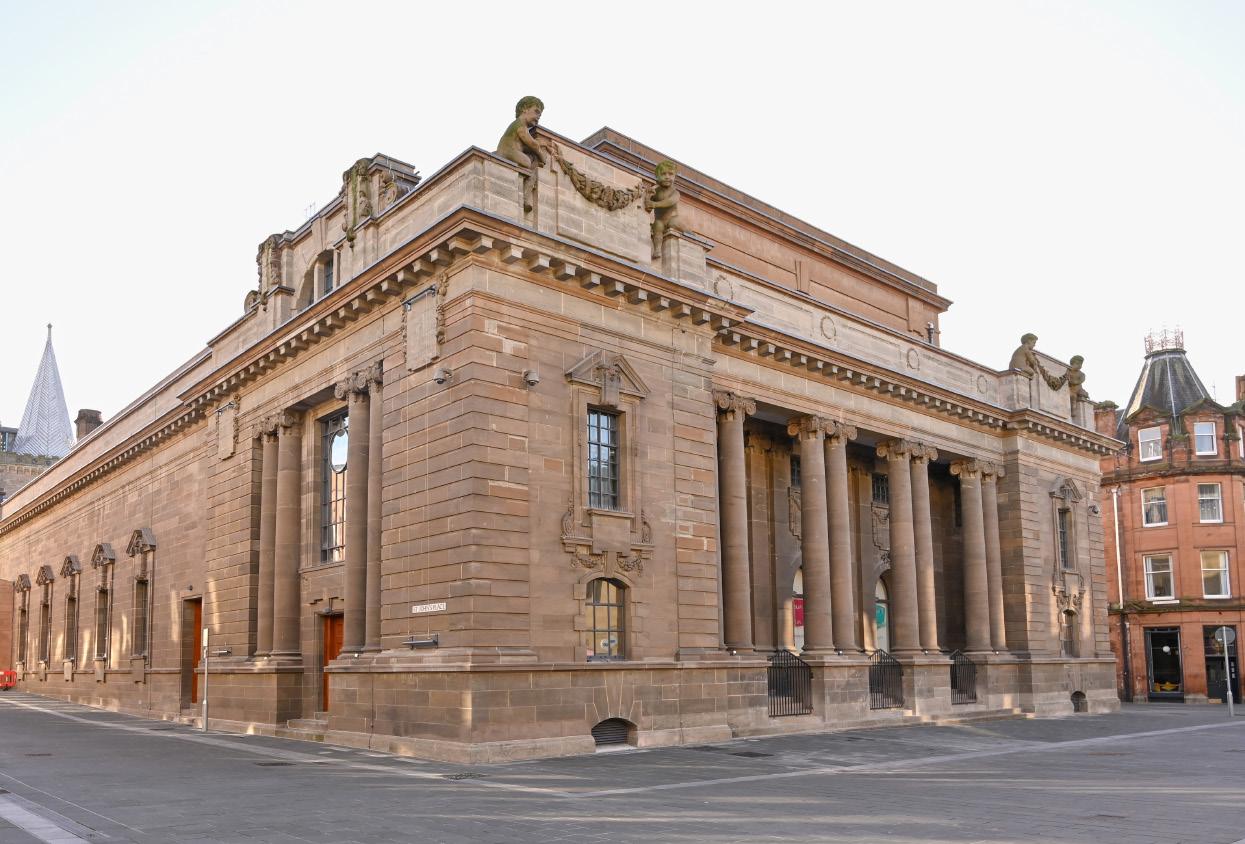
PERTH MUSEUM
The new Perth Museum will open its doors in Spring 2024 after a £26.5 million redevelopment project. Centrepiece of the new museum will be the Stone of Scone, on which the Kings of Scotland have been crowned since time immemorial until it was captured by Edward I of England in 1296. It was returned to Scotland in 1996 but travelled to Westminster Abbey for the coronation of HM King Charles in 2023. Other exhibits include a Bronze Age Carpow Logboat and an important collection of Jacobite relics, including the sword of Bonnie Prince Charlie. The new museum will be housed in the Edwardian City Hall and will tell the story of Perth as Scotland’s first capital and how the town shaped the nation through later writers, artists and thinkers. Opening Spring 2024.

15 visitheritage.co.uk
MUSEUM OF SHAKESPEARE
When an archaeological investigation in London’s Shoreditch uncovered remnants of the Elizabethan Curtain Theatre, it revealed surviving walls up to 1.5 metres high and a 14 metre stage. The theatre opened in 1577 and was the largest of the Elizabethan playhouses with an audience capacity of perhaps 1400 theatregoers. It was the main base for William Shakespeare’s company, the Lord Chamberlain’s Men, and saw the earliest performances of Romeo & Juliet and Henry V. The new immersive museum is be 3 metres underground and uses cutting edge AI to recreate the experience of standing on stage in 1598. Opening Spring 2024.


16 visitheritage.co.uk


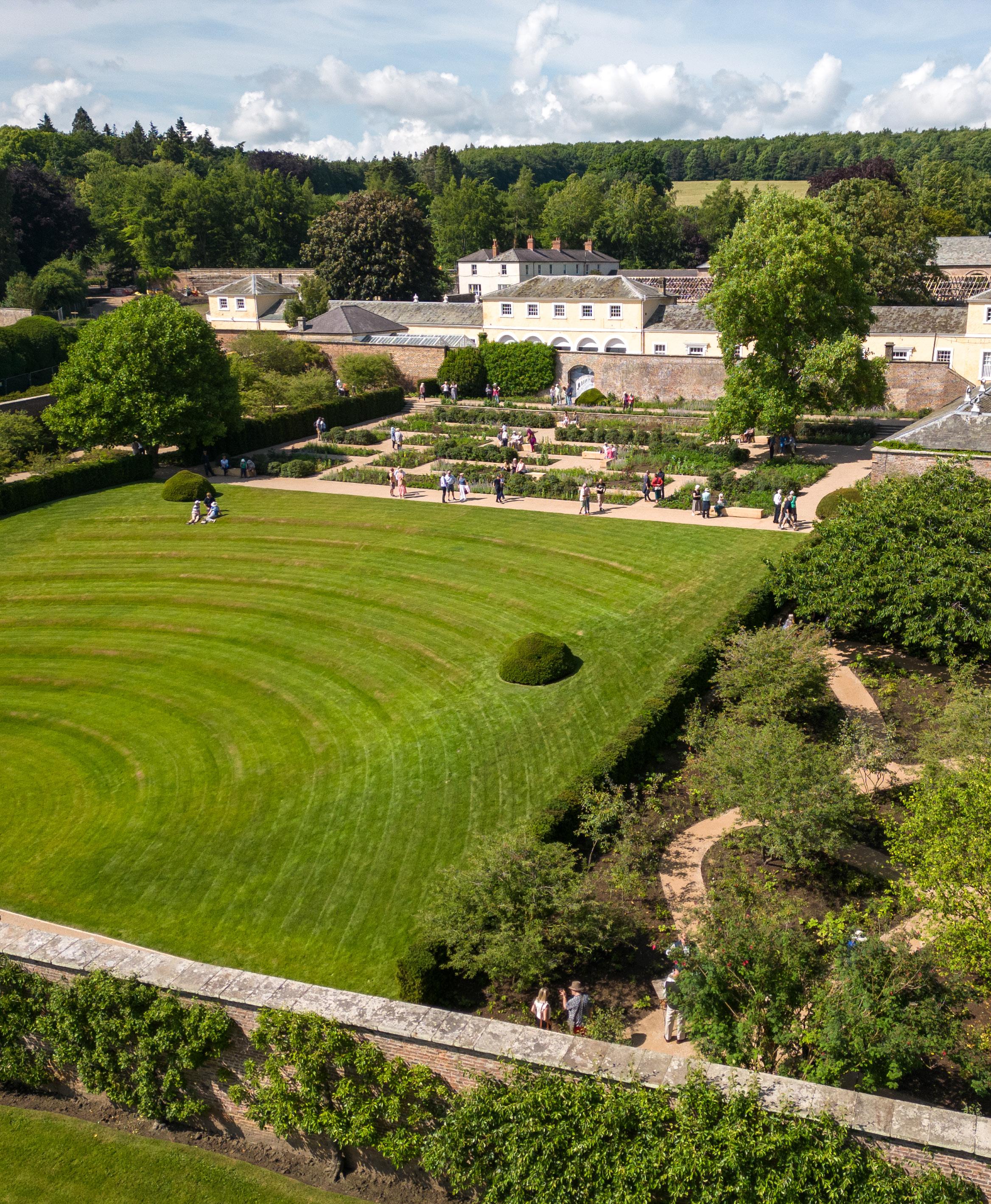
RABY CASTLE GARDENS
Work has been ongoing in the Walled Garden at historic Raby Castle in County Durham since 2022 as part of a new tourism development called ‘The Rising’. When the Walled Garden opens in 2024, visitors will be able to see the fruition of owner Lady Barnard’s plan for an exciting new visitor area. The gardens have been replanted by garden designer, Luciano Giubbilei, within the mellow brick walls of the old Kitchen Garden. First laid out in the 18th century, the gardens still contain an ancient yew hedge and a white Ischia Fig planted in a specially
designed Fig House in 1786. In the new gardens, a formal hedged area will complement the structure provided at the centre of the garden by the curving forms of the yew hedge. The East Garden has been transformed into a new South facing grass amphitheatre with views towards Raby Castle which will allow all types of outdoor performance within the shelter of the garden walls. The West Garden will feature beds edged with evergreens and planted with herbaceous plants in soft muted colours linked by a flowing line of water which leads the eye towards the castle. Open Spring 2024.
17 visitheritage.co.uk
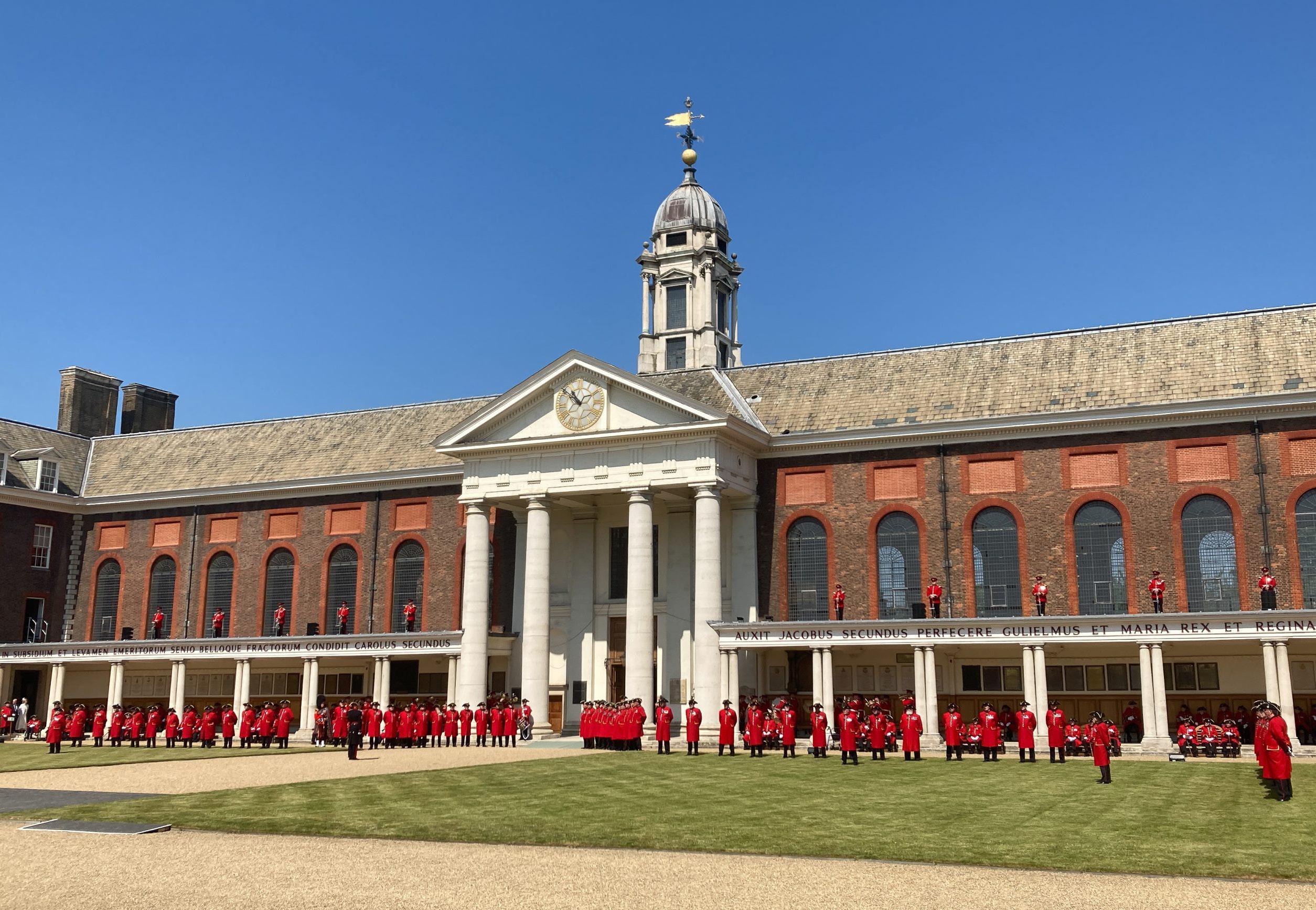
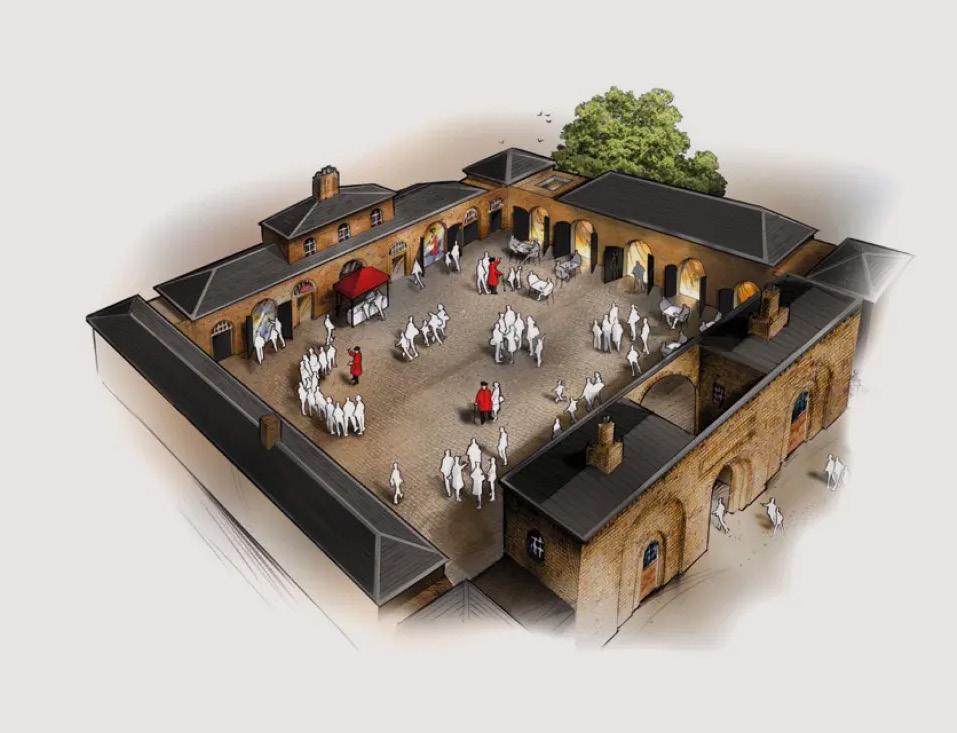
CHELSEA HOSPITAL
It has been possible to visit Sir Christopher Wren’s building at the Royal Hospital Chelsea on a special prebooked tour, however, in 2024, a specially designed new heritage centre in the previously underused stable yard added by Sir John Soane in 1817, will allow visitors to explore the Hospital daily, all year, from 9am to 5pm. The Royal Hospital Chelsea was founded by Charles II in 1692 as a hostel for army veterans, inspired by Louis XIV of France’s foundation of Les Invalides in Paris. The outstanding brick building designed by Sir Christopher Wren has become a familiar landmark as backdrop to the world famous annual Chelsea Flower Show. The new visitor centre will provide an insight into the history and workings of the Hospital and its buildings through a free exhibition, rare artefacts from the Hospital’s collection and audio visual displays alongside a café and wellness space. And, don’t worry, one or two of the Hospital’s residents, the iconic Chelsea Pensioners, will be in attendance. Opens Summer 2024.
18 visitheritage.co.uk

AUCKLAND CASTLE FAITH MUSEUM
The Faith Museum is the latest attraction to open at Auckland Castle in Bishop Auckland, County Durham. It joins the newly restored gothic Castle itself, its parkland, reimagined Walled Garden, Mining Art Gallery and the Spanish Gallery, aka the Prado of the North. The Faith Museum is housed in the Scotland Wing and an architecturally exciting new extension of the Castle, previously home to the Prince Bishops of Durham. On display are nearly 300 objects selected to explore how people over time have tried to answer three fundamental questions - Am I alone? How do I live? Where do I belong? The ground floor takes you on a chronological journey from neolithic carvings and Pagan-Roman statuary via the Binchester Ring, perhaps the earliest Christian object in Britain, and the Bodleian Bowl, a copper vessel which marks the expulsion of England’s Jewish population by Edward I, through to objects associated with the fragmentation of faith that began with the Reformation. Upstairs is devoted to arresting artworks by contemporary artists dealing with the same questions within a modern multi-cultural perspective. It is an engaging exploration through history and contemporary society. Open now.


19 visitheritage.co.uk

MYTHS& LEGENDS
GLASTONBURY TOR visitheritage.co.uk 20


Historic places are keepers of myths and legends. Visiting them can give you a tangible thrill that locks a legend in reality.
Britain is a place of myth. We are an ancient land, where long before history books, people told stories that helped make sense of the past and kept the memory of heroic deeds alive from generation to generation. These legends are an important part of our national story and their actual truth is less important than the fact that our shared knowledge of them helps to bind us together as a nation. Visiting a place where a legend may have originated gives them a weird veracity which creates a hold on the imagination.
Our most treasured national myth is of Robin Hood, the heroic outlaw who stole from the rich and gave to the poor. Chief enemy of Robin Hood and his Merry Men, from their camp in the depths of Sherwood Forest , was the Sheriff of Nottingham whose stronghold was Nottingham Castle . We just don’t know how much of the legend is based in truth, although it is much repeated in historical chronicles from 1377 onwards. It reflects the conquest of England by the Normans in 1066. Robin
Hood may have been a real person or a representational figure, standing for repression of the native Anglo-Saxon people by their new rulers, particularly the building of castles and the designation of large tracts of forest as royal hunting grounds. We know that Nottingham Castle was the centre of John’s rebellion against his brother, King Richard I while he was away on crusade in 1194. Meanwhile, in the royal hunting forest of Sherwood Forest, the Major Oak is a tree which is over 1000 years old so would certainly have been growing at the time of Richard and John. Whether Robin Hood camped under it is less certain but it is nice to know that this magnificent tree could have sheltered him. Nottingham Castle doesn’t look the part any more, having been rebuilt by William Cavendish, 1st Duke of Newcastle in the 1670s and again in the 1870s to house the town’s art gallery. One of the galleries is devoted to a thoroughly up-to-date interactive Robin Hood exhibition. You can even re-enact Robin’s famous skill with the longbow or take on a virtual Little John with a quarterstaff.
21 visitheritage.co.uk
© ENGLISH HERITAGE IMAGES
A little earlier than Robin Hood is a Saxon hero from East Anglia, Hereward the Wake, who led an army of Danes in a brief rebellion against the Normans in 1070. Although details of his life belong to legend, Hereward the Wake was definitely a real person. He rebelled when the new Norman rulers wanted to replace Abbot Brand of Ely Abbey with a Norman abbot who already had a poor reputation. The island of Ely, at that time completely cut off by water, was his stronghold. Towering above the flat lands of the Fens, Ely Cathedral is no longer on an island but it has earned the nickname, ‘The Ship of the Fens’. The current cathedral was first built by Abbot Simeon between the 1080s and the 1180s and became a cathedral in 1109. There was a wealthy abbey here in Hereward’s day which was largely destroyed by the
Normans and the early buildings which do survive – the largest complex of medieval abbey buildings still in use in England – date from the 12th and 13th centuries. From Ely, Hereward the Wake led a daring raid on the Saxon abbey which predated today’s Peterborough Cathedral The only relic at Peterborough which recalls the days of Hereward the Wake is the beautifully carved Hedda Stone, traditionally said to have recorded a Viking raid on the church in 864 when Abbot Hedda was killed. A century later, Hereward stripped the abbey of its wealth, ostensibly to save it from the Normans but more likely to pay his troops. After the Peterborough raid, Hereward retreated to Ely where he was betrayed and defeated before entering the realm of myth.


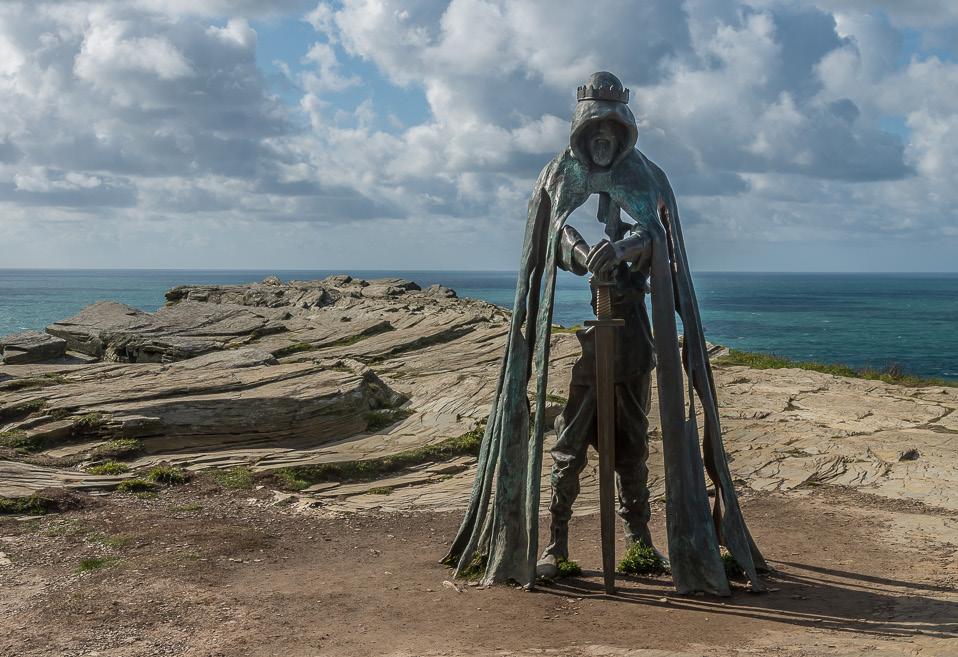

22 visitheritage.co.uk
PETERBOROUGH CATHEDRAL



The only other great British myth with some footing in history is the story of King Arthur, the Celtic King of Britain who led a troupe of chivalric knights on quests to kill dragons, rescue maidens and find the Holy Grail. The Arthur myth is firmly rooted at Tintagel in Cornwall. We have the 12th century chronicler Geoffrey of Monmouth to thank for the news that King Arthur was conceived at Tintagel Castle when his father, Uther Pendragon, disguised by Merlin, stole into the bed of Ygraine, Queen of Cornwall. The coastal island at Tintagel is spectacular and the legend appealed to the medieval mind, so Earl Richard of Cornwall, brother of Henry III, acquired the land and built a castle here around 1233 thereby forging a link between himself and the fabled Arthur. Now in the care of English Heritage, rugged Tintagel still feels like a place of legend from Merlin’s Cave on the foreshore to ‘Gallos’, the statue of a bearded bronze King who stares impassively over the island. The Arthur story has links with several other West Country heritage sites. Tradition associates Arthur’s court at Camelot with Cadbury Castle in Somerset, an iron age hillfort occupied between perhaps 5000BC and 600AD. The round table hanging in the Great Hall at Winchester Castle dates from around 1275 with paintwork restored in the reign of Henry VIII. It marks a continuing obsession of the Plantagenet Kings of England with the Arthur legend that inspired Edward III to create the Order of the Garter in 1348 so he had his own group of chivalric knights. Arthur was buried on the island of Avalon which medieval tradition associated with the hill of Glastonbury Tor, another place with a strong other worldly air, from which you may be able to see the fort at Cadbury Castle.
TINTAGEL CASTLE © ENGLISH HERITAGE IMAGES
GALLOS © ENGLISH HERITAGE
23 visitheritage.co.uk
THE GREAT HALL, WINCHESTER CASTLE
The greatest of the Arthurian quests was the search for the Holy Grail, the chalice used at the Last Supper in which the blood of Christ was later collected. One story says that the Grail was brought to Britain by Joseph of Arimathea who arrived first at Glastonbury Abbey As he landed, his staff struck the ground and from it sprang a Holy Thorn Tree that flowered twice in the year. The thorn trees at Glastonbury were cut down by the puritan troops of Oliver Cromwell in the 1650s but local people had taken cuttings so the thorn trees still bloom at Glastonbury Abbey and a branch is sent to the Monarch each year.
Legend also attaches the Holy Grail to the Knights Templar, the crusading order whose greatest treasure was supposed to have been rescued from the ruins of Solomon’s Temple in Jerusalem. When the Templar knights were outlawed by Philip IV of France, many
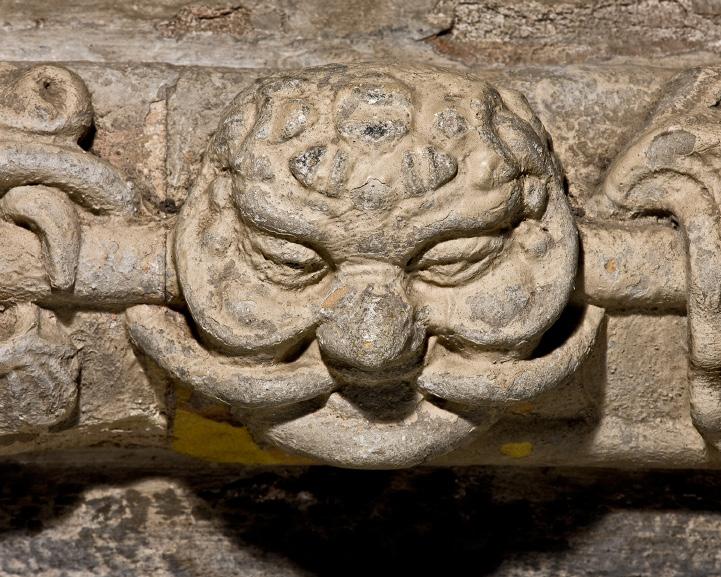
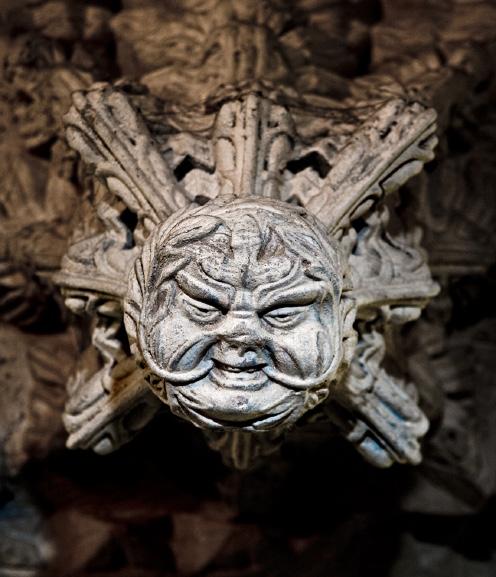
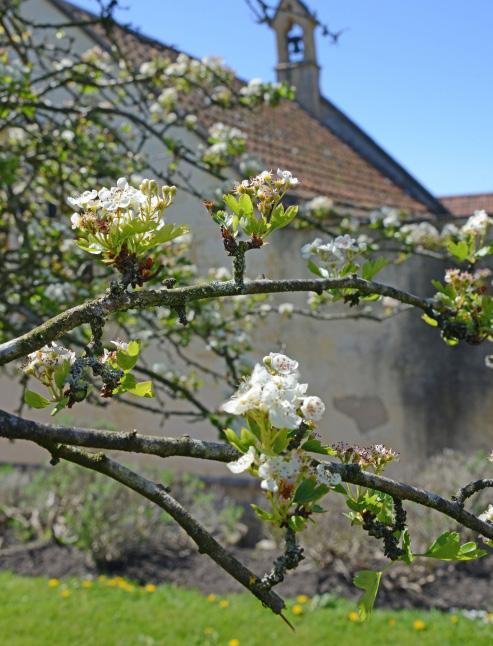
are said to have escaped to Scotland, hiding the Holy Grail in Rosslyn Chapel. This is the story that inspired Dan Brown’s hugely successful novel, The Da Vinci Code Rosslyn Chapel , just outside Edinburgh, is an extraordinary building, built around 1446 by Sir William St Clair as a family chapel, its rich, ornate carvings have inspired and intrigued thousands of visitors. Another legend hidden in the carvings is the Green Man, originally a Pagan symbol of rebirth and fertility. There are one hundred beautiful iterations of the Green Man at Rosslyn, each one different, demonstrating the cycle of the seasons.


 HOLY THORN TREE, GLASTONBURY ABBEY
HOLY THORN TREE, GLASTONBURY ABBEY
24 visitheritage.co.uk
ROSSLYN CHAPEL
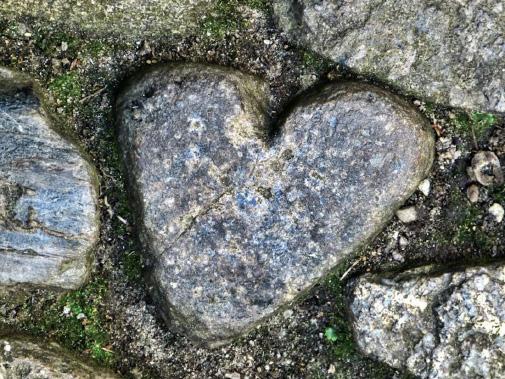
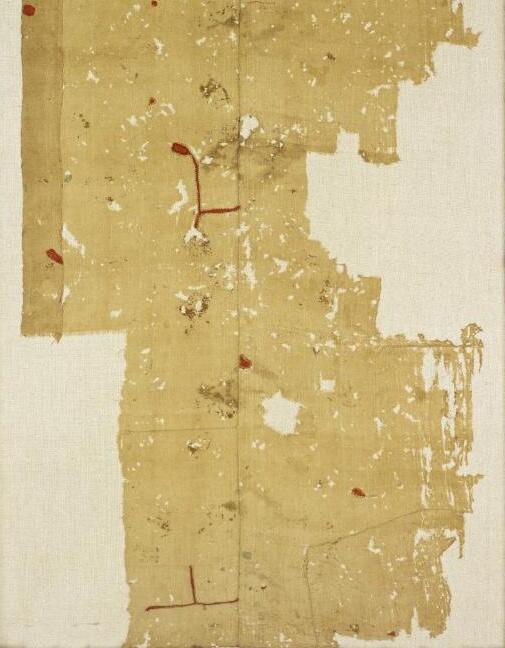
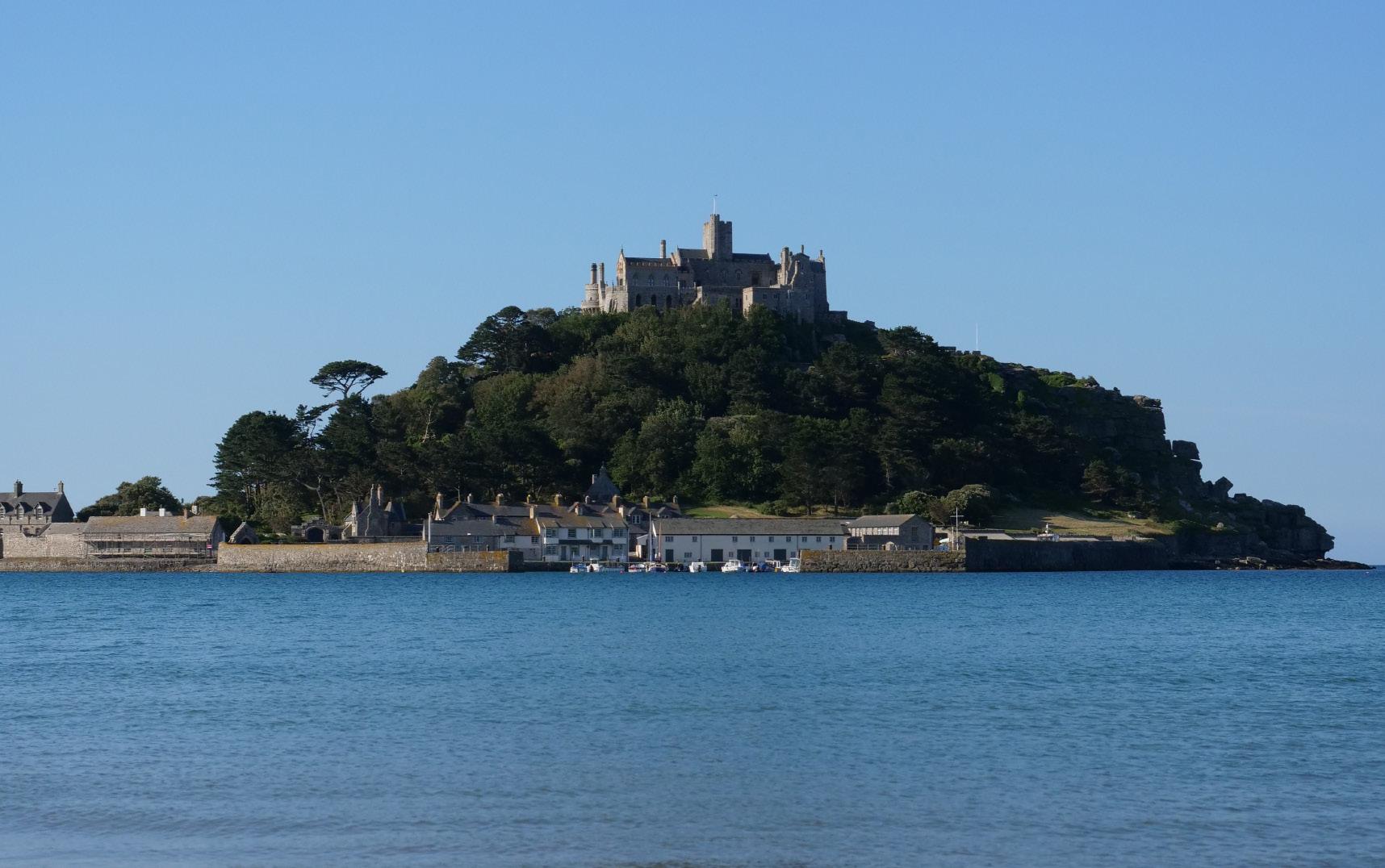


Other ancient legends are too fanciful for modern visitors to believe but the evidence is worth a look. Corineus, later Cormoran, was a Cornish giant who defeated Gogmagog (or so says the 12th century chronicler Geoffrey of Monmouth) and built a home at St Michael’s Mount . From his island home he raided cattle on the mainland until Jack, a lad from the mainland town of Marazion, trapped him in a pit. The giant’s stone heart is petrified on the cobbled path to the castle today. The Isle of Skye is rich in the history of fairies and one of the early MacLeod Clan Chiefs is said to have married a fairy. He may have met her at the Fairy Pools but she left him at the Fairy Bridge, both located near to Dunvegan Castle , home of Clan MacLeod. Visitors to the castle can still see the Faery Flag, supposedly a gift from the fairies to the clan, securing them success in battle. Bamburgh Castle in Northumberland is associated with the legend of the Laidly Worm. Bamburgh was the stronghold of the Saxon Kings of Northumbria, one of whom married a witch, who turned her beautiful stepdaughter into a dragon or worm. Luckily the girl’s brother returned in time to kiss her and restore her human shape. The story was recorded in a ballad in the 18th century.
Whether the myth is firmly based in history or owes more to rural superstitions, there is something worth discovering to make the legend more believable at historic places all round the country.
ST MICHAEL’S MOUNT
GIANT’S HEART, ST MICHAEL’S MOUNT
FAERY FLAG, DUNVEGAN CASTLE
DUNVEGAN CASTLE
25 visitheritage.co.uk
BAMBURGH CASTLE

Mrs Hudson loves visiting historic places with her dog Dinky. She has some recommendations for you.
DUNROBIN CASTLE IN SUTHERLAND visitheritage.co.uk 26
Fairytales MRS HUDSON’S

This is Disney’s centenary year so my mind is running on fairytale castles. Disney based his most famous castle on Neuschwanstein in Bavaria but there is a bit of Aberdeenshire’s Craigevar in there too. Where would your favourite fairytale castle be?
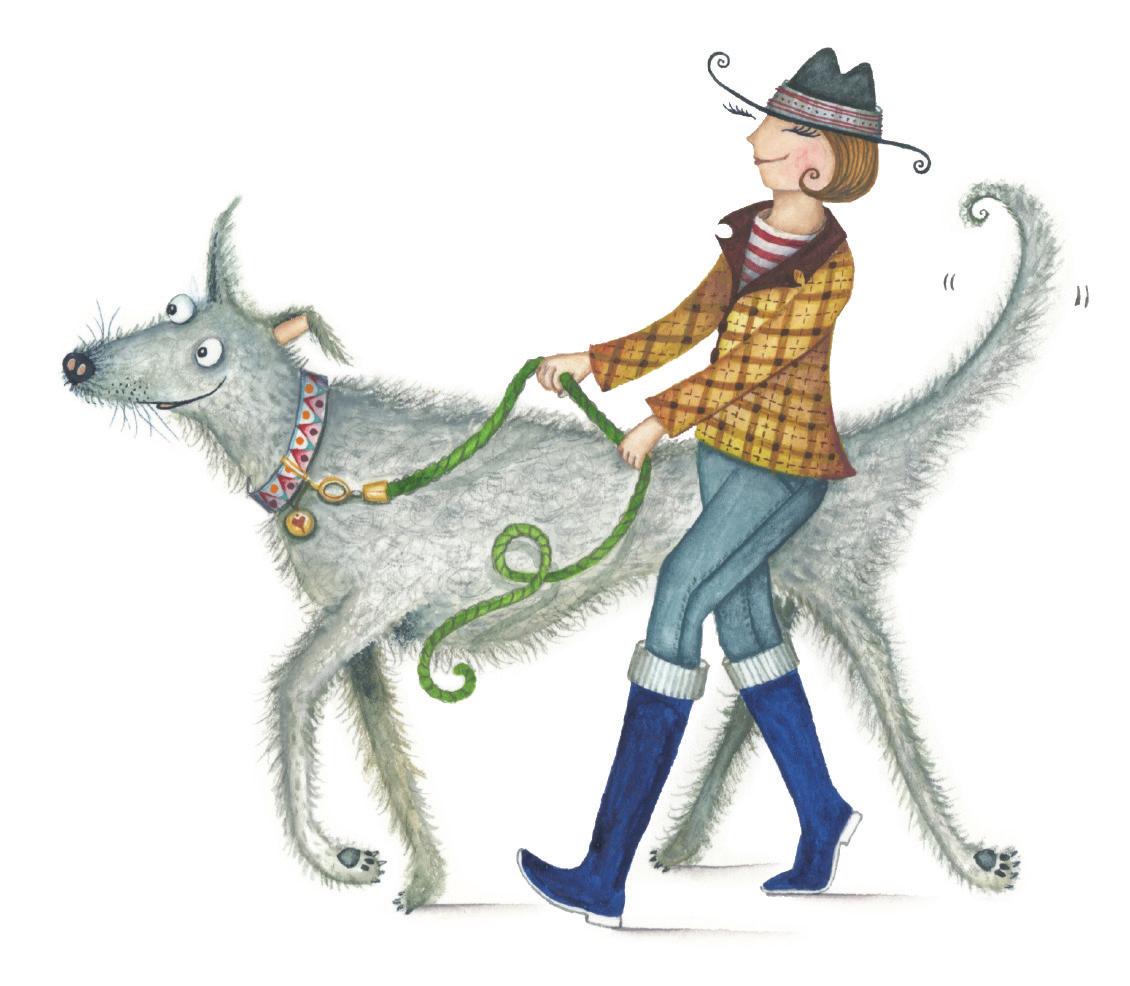
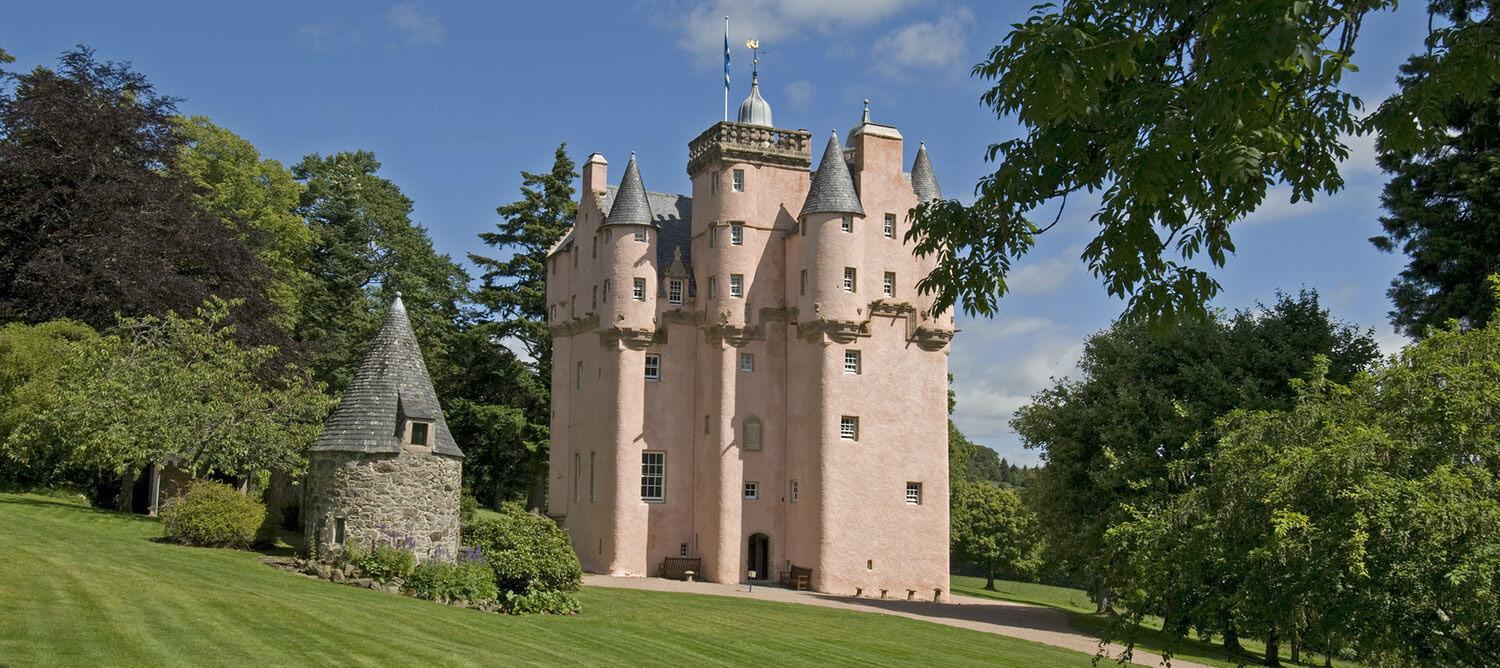

PERFECTLY PINK
Craigevar Castle is in the news and not just for its Disney associations. Following the release of the Barbie film, it has appeared on all sorts of lists of pink buildings and has just undergone a massive restoration to keep its pink exterior looking pristine. This castle was the grand home of merchant ‘Danzig Willy’ aka William Forbes, who made a fortune trading with the Baltic towns of the Hanseatic League in the early 1600s. The turrets and finials, which give it that true fairytale profile, were added by him in 1626 as a way of showing off his arrival in society. He’d bought the castle half finished by the Mortimer family who hadn’t felt the need for turrets. The Forbes family lived here for the next 300 years without changing much until it was handed over to the National Trust for Scotland in the 1960s. Inside, the rooms are small and beautifully finished with panelling and pendants dripping from the plasterwork ceiling in the Great Hall. The castle should be open again with its new pink coat in Spring 2024.
27 visitheritage.co.uk



ANIMALS AND DRAGONS
The Victorians loved gothic fantasy and no one more than John, 3rd Earl of Bute. Fabulously wealthy, he was a great builder and relished his relationship with the gothic revival architect, William Burges. Burges was already working with Lord Bute on the transformation of Cardiff Castle in South Wales when he began restoring the ruined 13th century castle at nearby Castell Coch He really went for it. The building has conical roofs, a working drawbridge, three mismatched towers and everything a Disney princess could wish for. Inside, only the Great Hall is truly gothic in style. Burges died before completing his vision and the Parlour and Lady Bute’s bedroom were finished after his death. Now, riotously decorated in naturalistic style which is more aesthetic movement than gothic, both rooms have a menagerie walking the walls - peacocks, garden birds, foxes and magpies in the Parlour and monkeys in Lady Bute’s bedroom which Lord Bute apparently thought “ lascivious”. The bedroom even has a dragon tap in the washbasin. For budding princes and princesses, there is nowhere quite so fabulously fairytale as Castell Coch.

28 visitheritage.co.uk

TURRETS OVER THE SEA
Few castles have turret roofs quite as satisfyingly tall and spiky as Dunrobin Castle in Sutherland. It also has an amazing setting high above its terraced gardens, looking out over the Moray Firth, inspiration for Frozen perhaps? The late medieval castle was remodelled in 1835 for the 2nd Duke of Sutherland by Sir Charles Barry, who built the Houses of Parliament and Downton Abbey’s Highclere Castle. Here, Barry went for a French chateau look rather than Scottish baronial but his lavish interiors were destroyed in a fire in 1915. The redecoration, by Edwardian architect Robert Lorimer, has created comfortable interiors which are still filled with family treasures. The Dukes of Sutherland were among the wealthiest in the land in the 19th century and their descendants’ house is a true stately home. The family portraits are by some of the great names – Phillips, Romney, Ramsay and de Lazlo, - the tapestries are Mortlake and the furniture is mostly French. You’ll be dazzled.
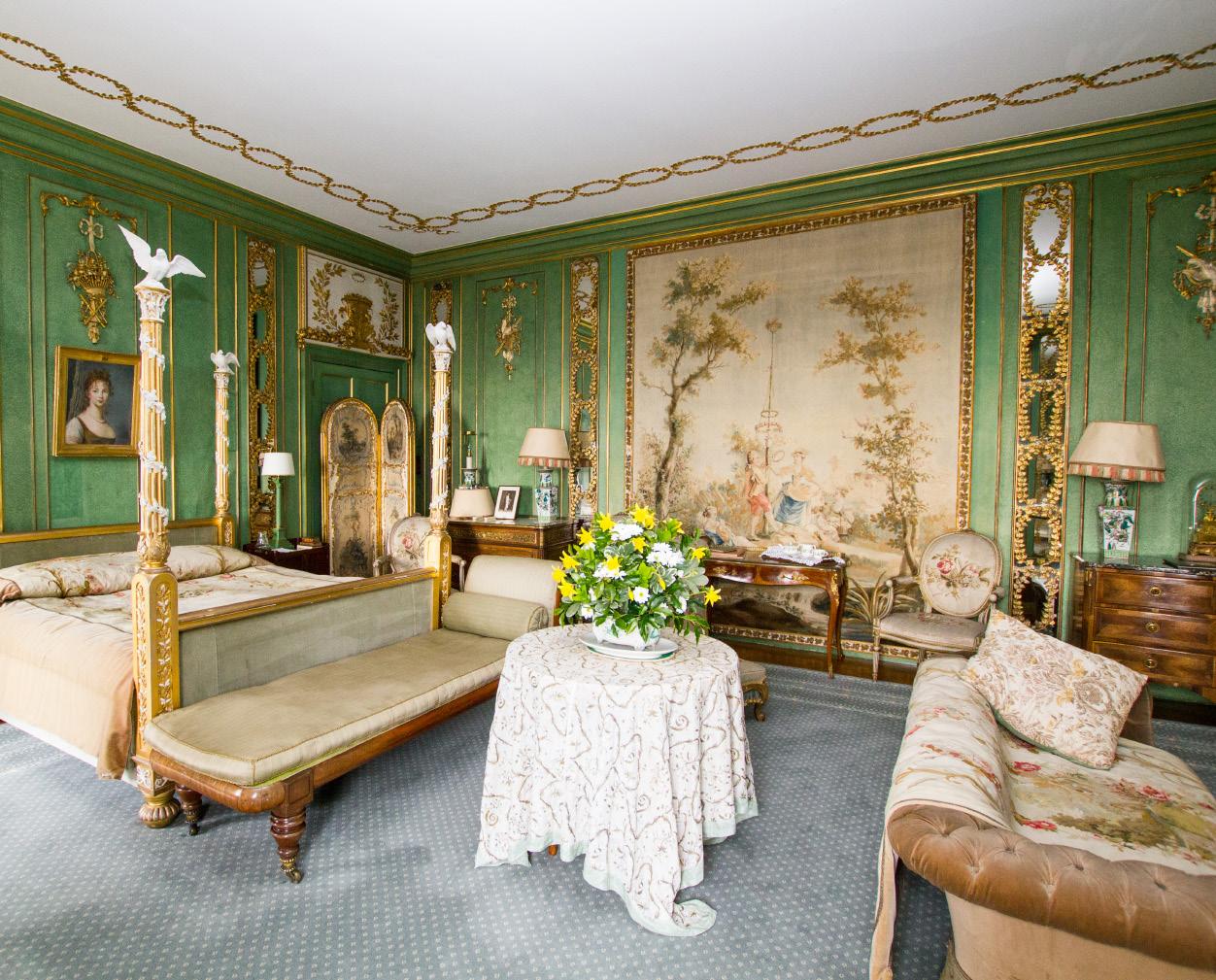
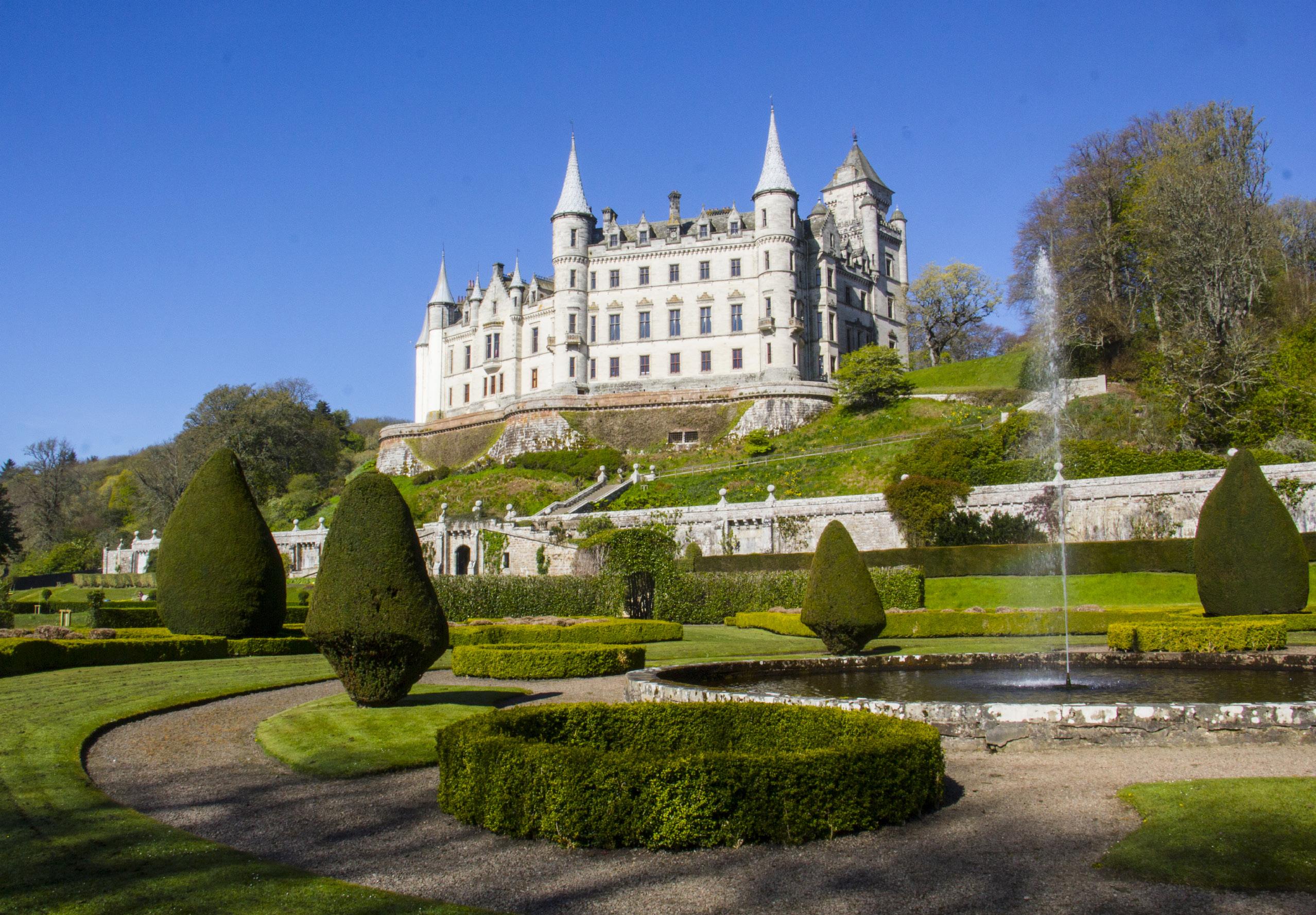
29 visitheritage.co.uk
GRYPHONS AND GOTHIC SPIRES
I know?! A fairytale castle in the home counties? Surely not! But just look at those turrets and pinnacles. Until the early 19th century, Knebworth House in Hertfordshire was a rather unremarkable red brick Tudor house but it was the imagination of the Bulwer-Lytton family and architect, John Biagio Rebecca, that really set it free. The remodelling was started by Elizabeth Bulwer-Lytton, who inherited the house in a dilapidated state. She knocked down three of the four wings and employed Rebecca to give it a fantasy flourish. Her Italian architect encased it in stucco and added a fringe of towers, turrets and pinnacles
to the façade and topped the gateposts with gryphons. Elizabeth lived at Knebworth with her youngest son, the politician and popular novelist, Edward Bulwer-Lytton. His prose has more than a touch of the gothic too –“ dark and stormy night ”, anyone? When his mother died, he employed John Crace to create a gothic memorial to his mother in the State Drawing Room, packed with armorials and a great stained glass window. The rest of the interiors were calmed down a bit by architect Edwin Lutyens after Bulwer-Lytton’s death but gothic princesses are still welcome.
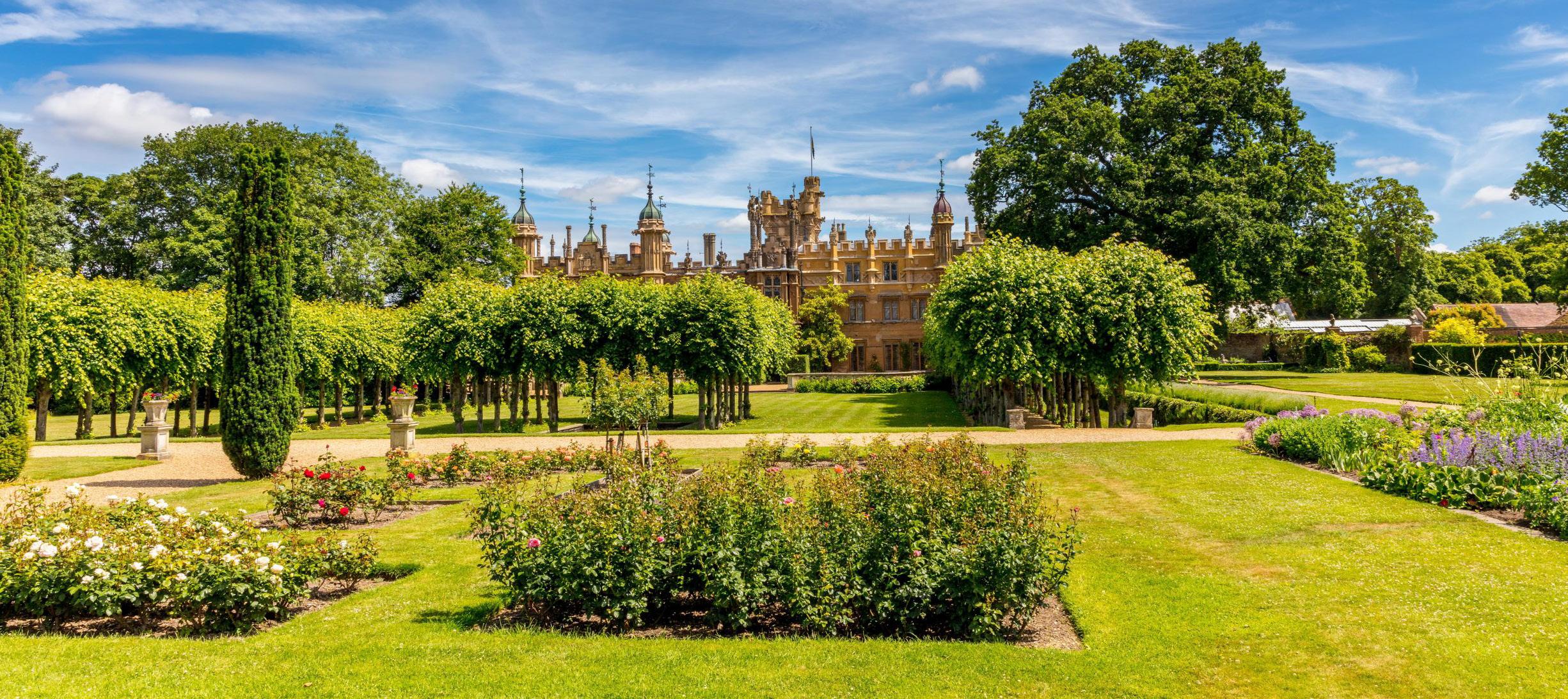
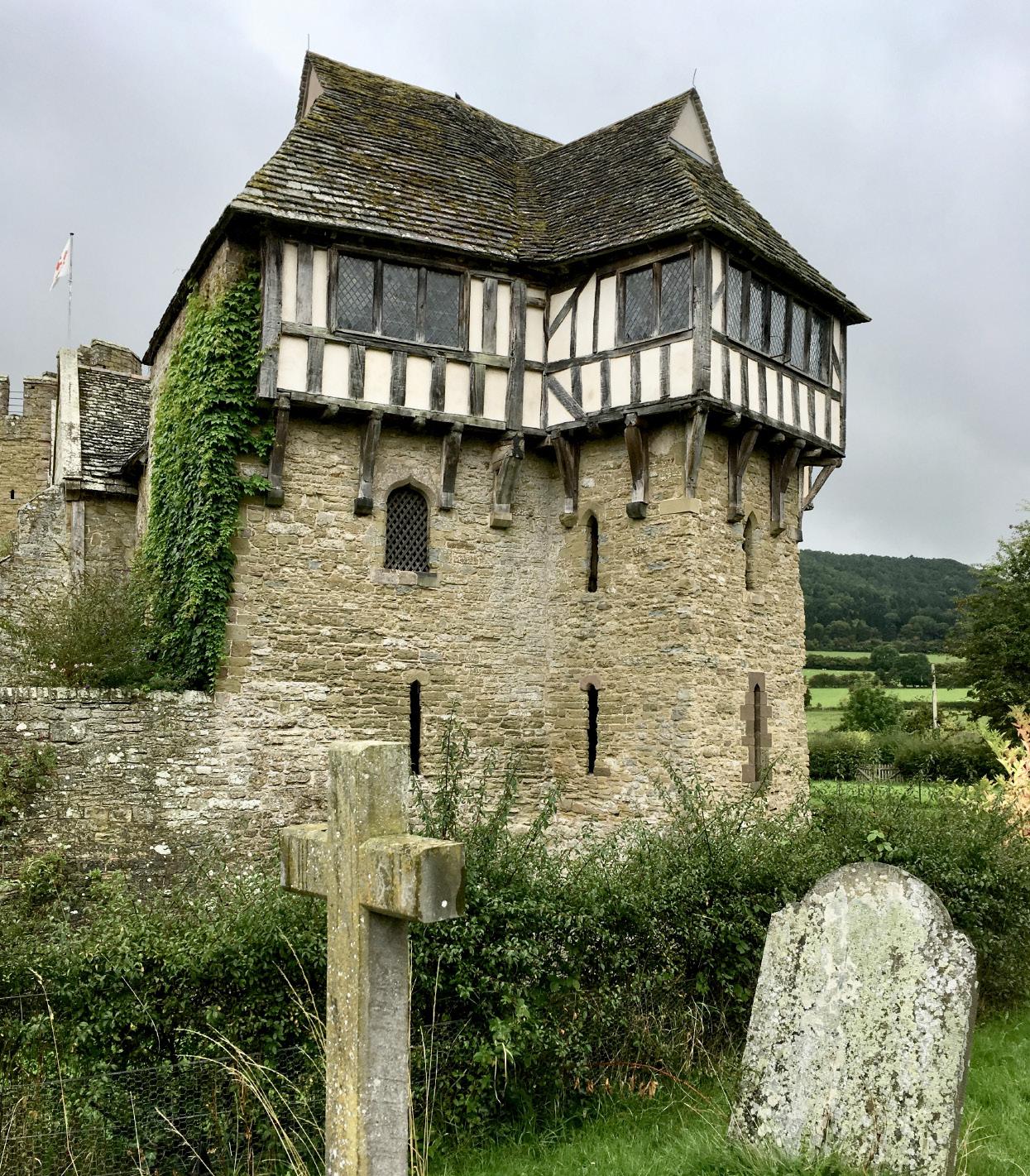
TIMBERED TOWERS
If gothic isn’t your thing, there is a tiny castle in Shropshire which has just the right style for a princess in a fairytale by the Brothers Grimm. English Heritage’s Stokesay Castle is a little medieval miracle of survival. It was built in the 1280s by merchant Laurence of Ludlow who had made a fortune in the wool trade just at a time when the Welsh borders were beginning to be a safer place to live. It’s not really a castle, more a fortified manor house. It does however, have a north tower fi t for Rapunzel with a timbered top storey added in the 17th century and jettied out over the stonework walls. A second tower has proper castellations and the two towers are joined by a magnificent double height Great Hall. It was sensitively restored in the 19th century by John Derby Allcroft who lived at neighbouring Stokesay Court. Standing by the central hearth in the Great Hall today, you’ll feel truly transported to the Middle Ages and while wimples or pointy hats (officially ‘steeple hennins’) are not compulsory, you will be right at home if you happen to be wearing one.
visitheritage.co.uk 30

HOUSE IN THE SKY
Scotland really is a land of fairytale castles, who can resist Ballindalloch Castle in Banffshire? Built in 1546, the core of the castle is a traditional Z-plan tower house but, as well as turrets aplenty, the round entrance tower is topped by what looks just like a cottage in the clouds known architecturally as a ‘caphouse’. Just the place for fairytale happenings. This is the stronghold of the Grants and the current Laird, Guy Macpherson-Grant, can trace his ancestry back through more than fi ve centuries to the builder, John Grant. The caphouse, at the top of the Highland Tower, is a plain stone-flagged chamber which was once a servant’s room. The rest of the interiors are anything but plain - gorgeously furnished by generations of Grants and Macpherson-Grants. The house is said to be haunted, not by a princess-in-a-tower, but by the portly General James Grant, Governor of Florida in the 1760s and a noted bon viveur, who lived to the grand old age of 85. The family think his ghostly spirit wanders the Dungeon Passage looking for the wine cellar. Cooking genes are still strong in the Macpherson-Grants as Guy’s mother is the cookery book writer, Claire Russell - you might even come home with a recipe for fairy cakes.

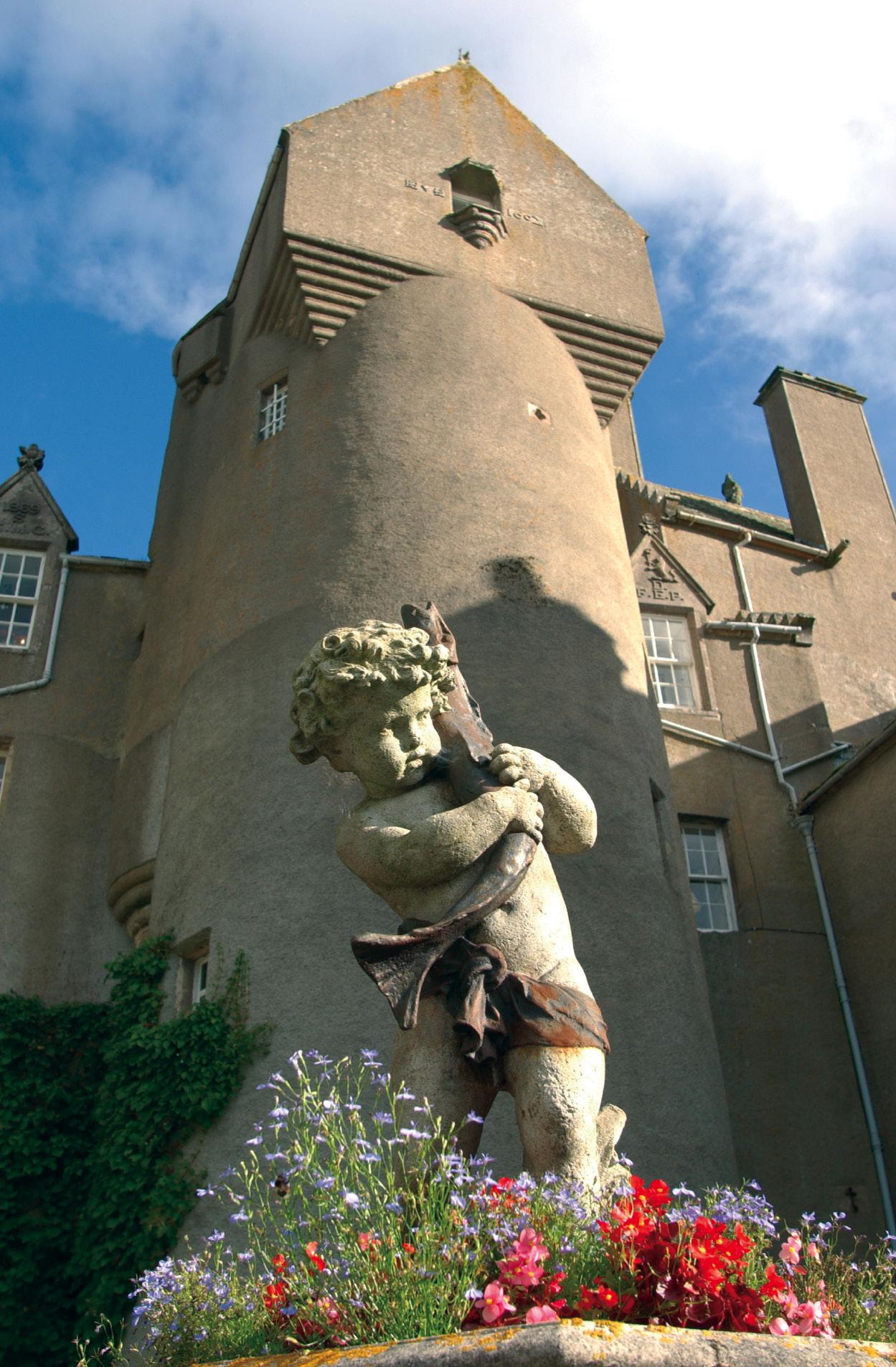

31 visitheritage.co.uk
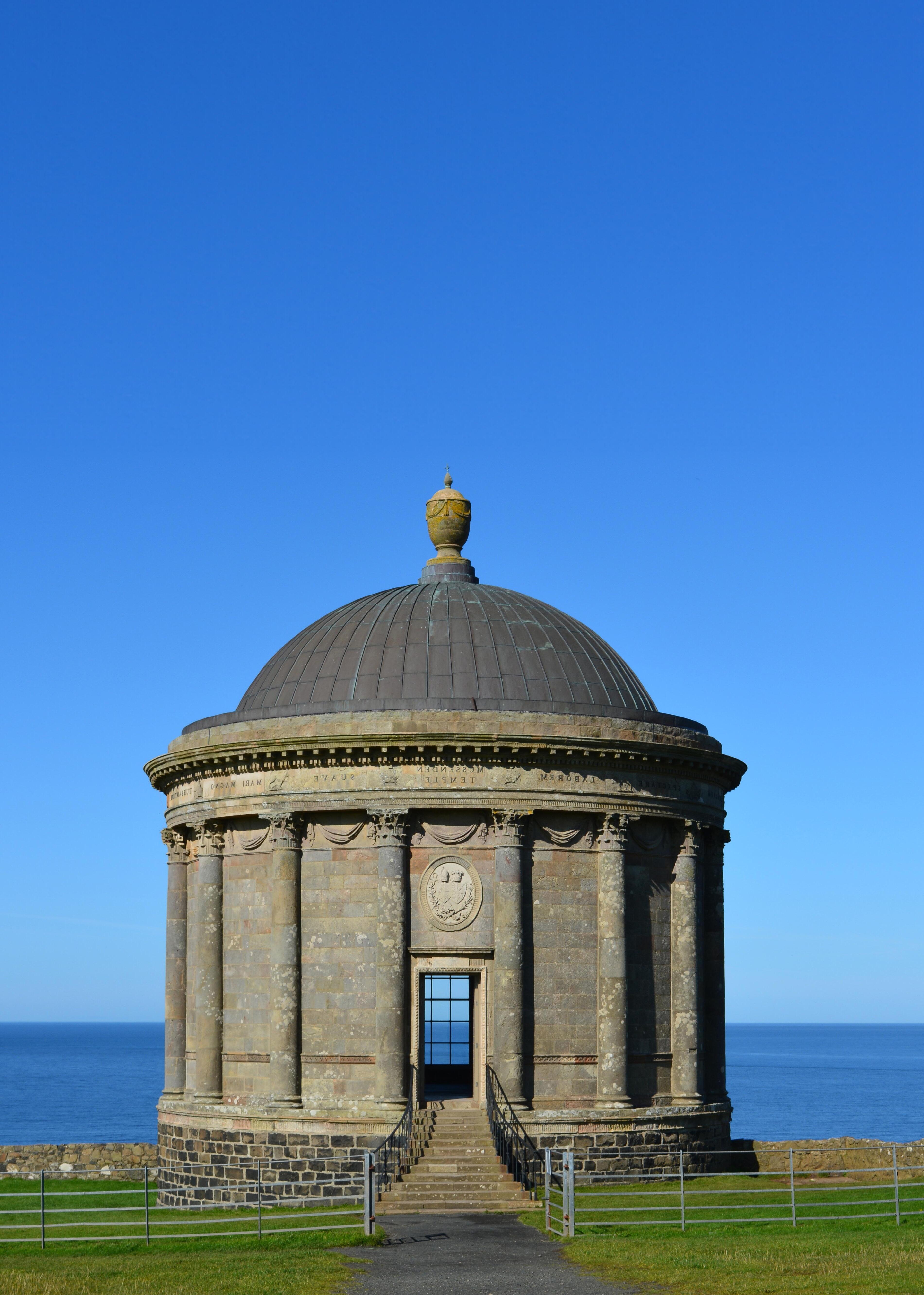
MUSSENDEN TEMPLE visitheritage.co.uk 32
Drive NORTHERN IRELAND

“ e very air is laden with poetry”
Proceedings of the British Association, 1902

One of Britain’s greatest scenic drives, the Causeway Coastal Route, cuts along the coast of Northern Ireland from Belfast to Derry-Londonderry.
Between the towns there are stupendous sights and heritage a-plenty.
We start at Carrickfergus Castle , one of the best preserved Norman fortresses in the UK. Begun in 1177 and a royal garrison since the 14th century, it has survived several sieges and was one of the most important strategic defences for the English settlement of Ireland. Visited by English kings – King John and William III – the castle was briefly captured by the French in 1760, resisted an attack by the Americans in 1778 and was finally given historic monument status in 1928. The castle has a fine rectangular Norman keep and an inner bailey with chapel and bakehouse, all contained within a thick curtain wall around the outer bailey. It is a great place to start an exploration of the complex history of Northern Ireland.
As the A2 turns north, take the road at Whitehead to The Gobbins Visitor Centre. It’s a minor detour but it will
give you an eye-opening walk along the cliff path linked by tunnels and fifteen cliff bridges. Restored in 2016, The Gobbins is an Edwardian tourist attraction designed by Belfast engineer, Berkeley Deane Wise, between 1901 and 1908. He foresaw that entertainment was needed to fill the increased leisure time afforded to Belfast workers at the same time that the railway was providing new opportunities for travel. The Gobbins walk is an exhilarating way to spot wildlife; kittiwakes, guillemots, puffins and razorbills nest in the cliffs and you can peer out at dolphins and seals.
At Larne, the A2 from Belfast joins the Antrim Coast Road, a route built by engineer William Bald between 1832 and 1842, which opened up a previously remote and inaccessible part of the country.
33 visitheritage.co.uk
THE SUSPENSION BRIDGE ON GOBBINS CLIFF PATH

Hidden in one of the nine Antrim glens, Glenarm Castle has been a base for the McDonnell family, Earls of Antrim, for 600 years. The house dates mostly from 1750 but was gothicised by Anne Catherine, Countess of Antrim around 1820, when she also built a walled garden near the house. Her portrait hangs in the double height entrance hall and visitors on a tour (book carefully, there are not
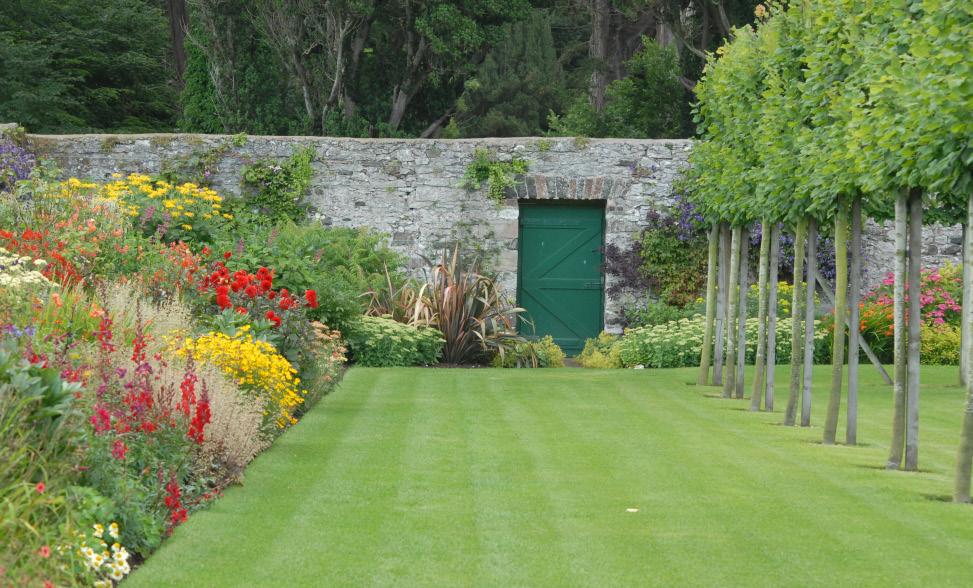
many) will also see the charming equestrian portraits in the Blue Drawing Room and artefacts recovered from the wreck of La Girona, a front-line ship from the Spanish Armada of 1588. The Walled Garden is open daily and was redesigned in 2004. Three large herbaceous borders provide colour all year and a series of fruit gardens, Medlar, Cherry, Pear, Crab Apple and Apple recall the garden’s early use providing fruit and vegetables for the house. Glenarm Castle’s Tulip Festival in May is a particular draw.
Before the road leaves the coast, you’ll spot the ruins of Red Bay Castle , another McDonnell stronghold, destroyed by the forces of Oliver Cromwell in the 1650s, a fate suffered by many castles along this coast. Take the road back to the coast to reach Cushendun Caves, a series of caverns reached from the beach. The caves have become a destination visit for fans of HBO’s Game of Thrones for which this was one of many Northern Irish locations.

 CARRICKFERGUS CASTLE
CARRICKFERGUS CASTLE
GLENARM CASTLE 34 visitheritage.co.uk
GLENARM CASTLE

As you approach Ballycastle, you will be able to look across to Rathlin Island . Now an RSPB nature reserve but once the scene of a horrible massacre. In the 1570s, there was a power struggle between Queen Elizabeth I and local chieftain, Sorley Boy McDonnell, over dominance of the area. McDonnell sent his family and the women and children of his followers to Rathlin Island for safety but an English force was sent to Rathlin where nearly 600 people were massacred. McDonnell reputedly watched the attack from the cliff at Ballycastle and was, not surprisingly, “like to run mad from sorrow”
Just before you reach the town is Bonamargy Friary, a well preserved 15th century Franciscan Friary though you need to imagine it with a thatched roof. It is the last resting place of the legendary Sorley Boy McDonnell and may still be haunted by a 17th century prophetess known as The Black Nun. After Ballycastle, a detour will take you
to the isolated ruins of Kinbane Castle , accessible down a narrow cliff path. Another stronghold of the McDonnell clan, Kinbane Castle was largely ruined in the mid-16th century. A depression between the castle and the sea called ‘Hollow of the English’ is the site of a successful sortie by the McDonnells which wiped out a troop of English soldiers from Carrickfergus Castle.
The Causeway Coastal Route now takes you into a UNESCO World Heritage Site, one element of which is Carrick-a-Rede Rope Bridge . The vertiginous bridge takes you from the mainland to a small island and was erected by salmon fishermen in 1755. The fishery here once sustained nearly 100 people from nearby Ballintoy and up to 300 salmon a day were caught. Their boats were raised and lowered down the cliff by crane. The fishery finally closed in 2002 and today, it is a rather thrilling scenic walk.
35 visitheritage.co.uk
CARRICK-A-REDE ROPE BRIDGE

Dunseverick Castle is an ancient place; there was a settlement here as early as the 5th century. St Patrick, the patron saint of Ireland, is supposed to have visited and the castle was repeatedly raided through the centuries, by Vikings, by Scots and finally by Cromwell’s forces in the 1650s. Since then it has been a spectacular ruin.
The Giant’s Causeway is the most popular destination along the route. Legend tells us that the extraordinary basalt rock formations were formed when Scottish giant Benandonner built a road to reach the Irish giant Finn McCool. Outwitted by his rival, Benandonner tore up the
causeway as he fled back to Scotland. Similar formations occur at Fingal’s Cave on the Scottish island of Staffa. If you haven’t already spotted Scotland across the sea, you’ll likely get a view from here.
You’ll deserve a break at the Old Bushmills Distillery
The earliest royal grant to distill spirits was given by James I in 1608 for a distillery on the River Bush. Whiskey has been distilled here ever since and the Bushmills company was set up as long ago as 1784; the present buildings date from around 1885.
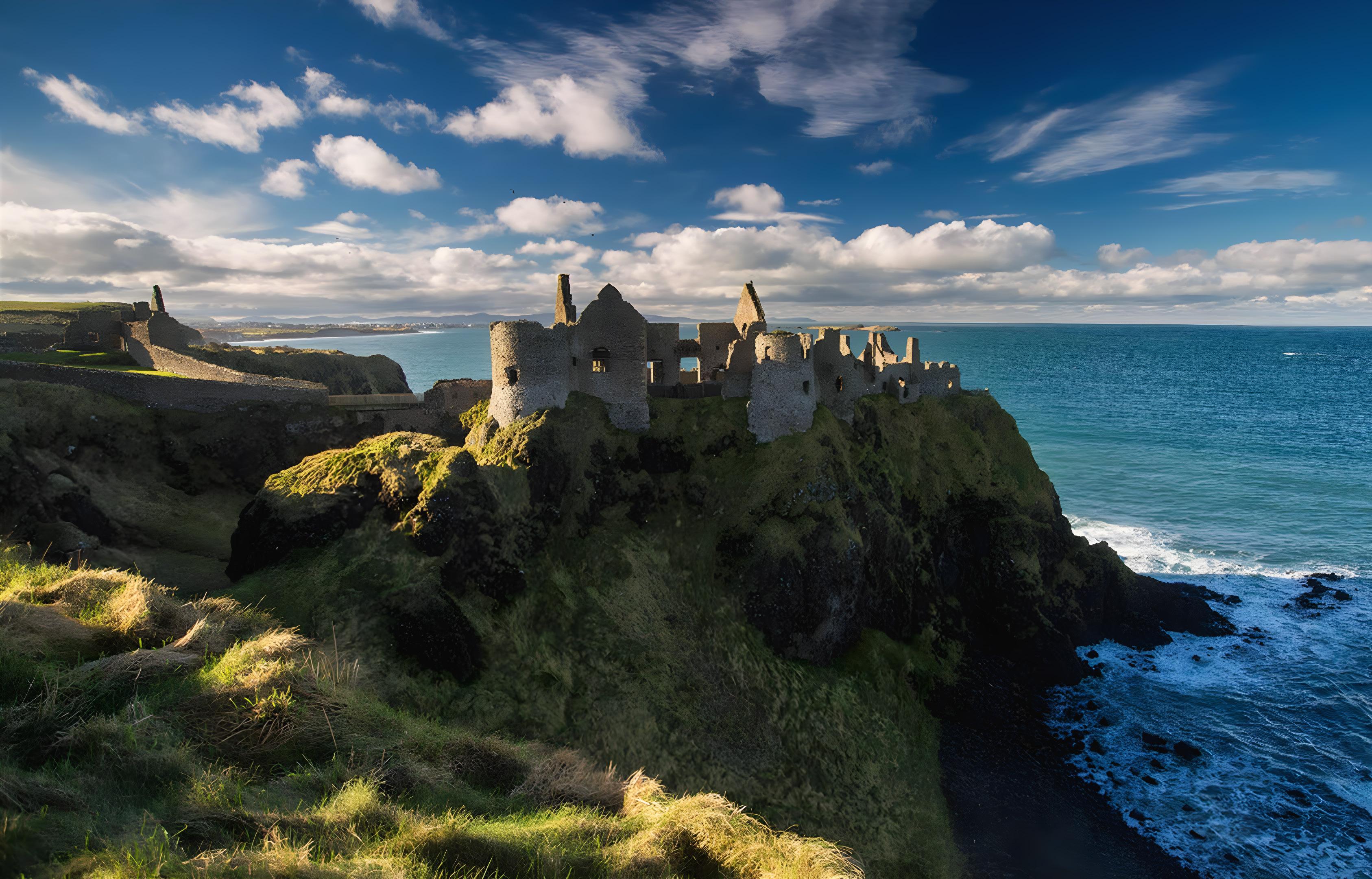
DUNLUCE CASTLE visitheritage.co.uk 36
DUNSEVERICK CASTLE

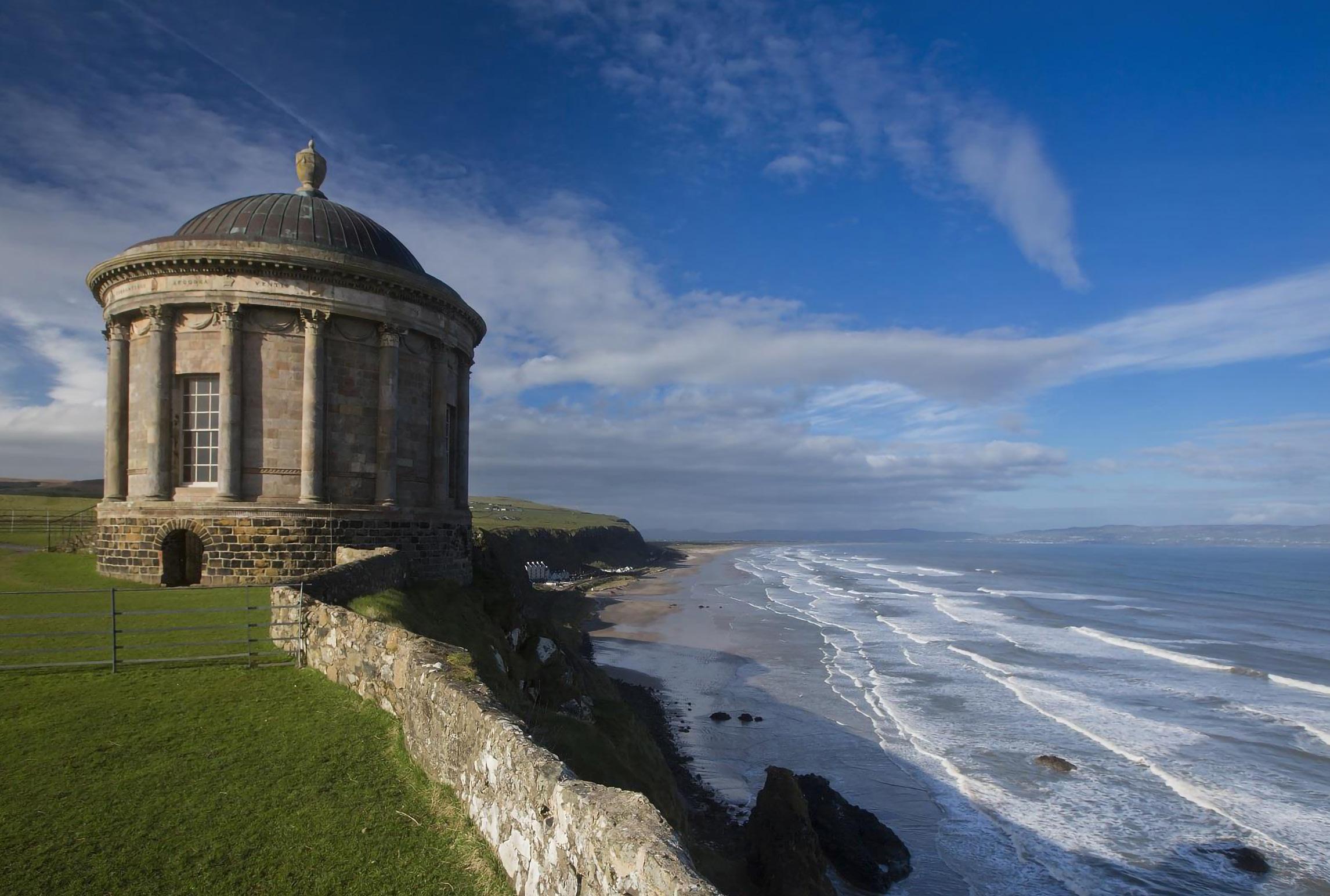
Back on the coastal road, your next heritage treat is Dunluce Castle . Even the weariest castle visitor will recognise the wow-factor at Dunluce. The cliff top fortress was the main stronghold of, first the MacQuillan family, and then the McDonnells, who were to become the Earls of Antrim. The castle was abandoned by the McDonnells in the 18th century in favour of more civilised living at Glenarm Castle. It is easy to imagine this windy outpost withstanding siege from sea and land, even though part of the living quarters fell into the sea in the 1700s. Its location is breathtaking.
Cliffs give way to yellow sand beaches on either side of the two Victorian resort towns of Portrush and Portstewart . Continue past them to the Downhill Demesne , on the very edge of which perches
Mussenden Temple . Built as a library, this elegant neoclassical building was commissioned by the flamboyant Frederick Augustus Hervey, Bishop of Derry and 4th Earl of Bristol, after the completion of his house at Downhill. Downhill mansion is now a roofless ruin but Mussenden Temple gives a hint of the beauty that the Earl-Bishop cultivated here. Mussenden Temple was built in 1783 for Frideswide Mussenden, the wife of the Earl-Bishop’s cousin. His fondness for her led to a scandal but she died
at 22, before her clifftop retreat was finished. Don’t be surprised if the building looks familiar; the central Rotunda of the Earl-Bishop’s main house at Ickworth in Suffolk is clearly from the same imagination.
The Causeway Coastal Route officially ends at DerryLondonderry. Your road here will have exposed you to a slice of the turbulent history of Northern Ireland and some its most spectacular coastlines.

37 visitheritage.co.uk
MUSSENDEN TEMPLE
TUDOR HOUSE OF


visitheritage.co.uk 38



Architectural writer
Lucy Denton explores Tudor houses, built in the turbulent 16th century.
‘ Burghley House represents the legacy of one of the greatest politicians this country has ever had’, points out Jon Culverhouse, Curator of the collections at this imposing 16th century sculptural monument to Elizabethan power, ‘William Cecil ran England and defended his Queen for forty years. His other homes at Theobalds Palace and in London are gone, the first demolished in the English Civil War, and the second destroyed by fire, this is his only surviving built contribution’. Burghley House, complete with surviving Tudor kitchen, is one of a number of great houses and more modest halls assembled in the period from the late 15th century until the end of the following century. In 1485, Richard III lost his life and crown at the Battle of Bosworth Field and was succeeded by Henry VII, the first sovereign of the Tudor dynasty which lasted until the death of Elizabeth I in 1603.
39 visitheritage.co.uk
THE TUDOR KITCHEN, BURGHLEY HOUSE
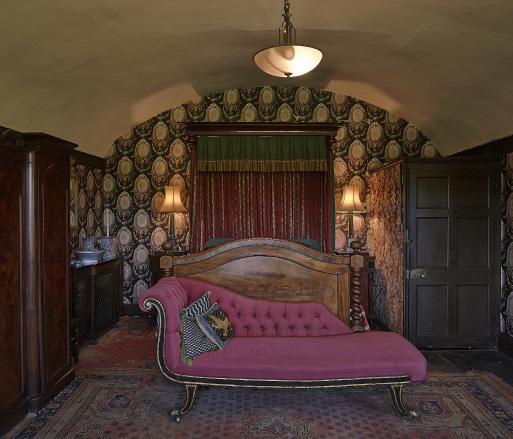

Not all were showpiece prodigy houses permeated with the symbols of political allegiance, but often built as restrained domestic creations in provincial manor style, integrating the features of the mediaeval era which had gone before. They collectively span a remarkable architectural range from black and white timber-framed mansions like Little Moreton Hall in Cheshire to the undulating mass of Bath stone that makes up Longleat’s gargantuan façades – and Sutton House in Hackney, a rare example of a brick dwelling of 1535. Even earlier is the family home of Dorney Court in Buckinghamshire, put up as a timber-framed and red-brick edifice in around 1510 by Robert Lytton, and which endures as a formidable example of the Tudor residences of the gentry, having been acquired by Sir William Garrard, Merchant

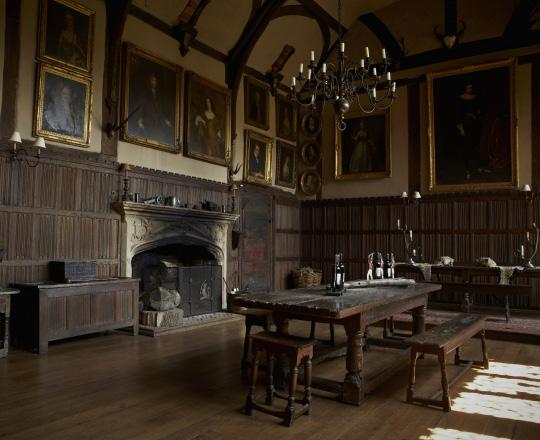
Grocer and Lord Mayor of London, in 1537. Although he must have installed linenfold panelling from Faversham Abbey post-dissolution, ‘there have actually been very few alterations since then’, say Anna and James, the 14th generation of the Palmer family to live here following the marriage of Sir Thomas Palmer and Martha Garrard in the 1620s, ‘and this is a Tudor house in its raw state. The Great Hall is as it was with a raised dais and huge stone fireplace. We still have and use a 1500s oak table which appeared in one of Garrard’s 16th century inventories.’
40 visitheritage.co.uk
THE GREAT HALL, DORNEY COURT


Other places reveal innovative unions merging existing buildings and brand-new works, albeit sometimes pursued with ulterior motives in mind – including at Kenilworth Castle , Warwickshire, now in the custodianship of English Heritage, but in 1563, granted by Elizabeth I to Robert Dudley, future Earl of Leicester, who transformed it into a classical palace with the aim of wooing his Queen. ‘She stayed here for 19 days in 1575’, notes Jeremy Ashbee, Head Properties Curator, ‘in one of the most opulent royal progresses ever made, but sadly it’s now ruined.’ Dudley created the Privy Gardens for the same reason, a powerful sensory experience in Tudor style, famously restored by English Heritage in recent years, which can be appreciated for its recreated walkways and all their floral perfumes. ‘The garden isn’t just beautiful’, adds Mr Ashbee, ‘but in its design and details, it was powerfully symbolic, reflecting the scholarship and interests of Robert Dudley himself and members of his household and circle. It has the potential to open up the thinking of these Elizabethans to a modern audience.’
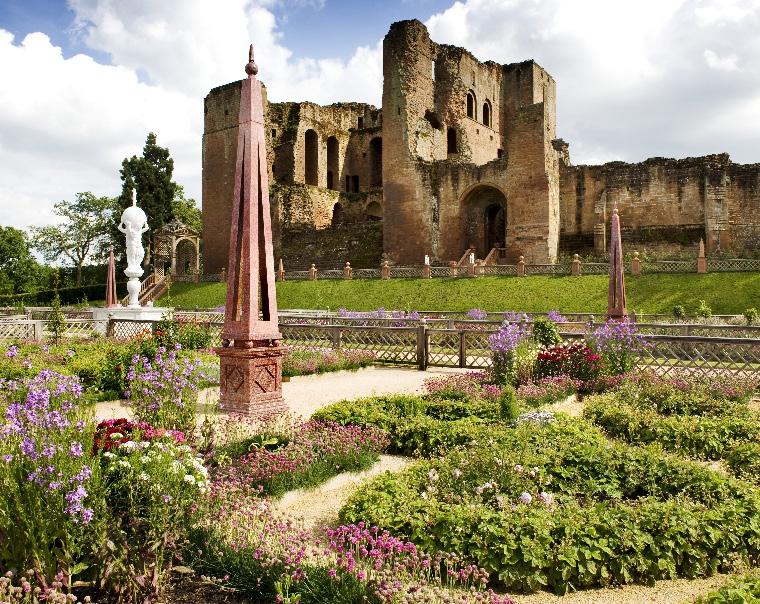
THE ELIZABETHAN GARDEN AT KENILWORTH CASTLE visitheritage.co.uk 41
Elsewhere, several retain the emblems of regal devotion flaunted in richly decorative schemes, seen at Ightham Mote in Kent, a mediaeval moated house built in 1320, but remodelled when its later owner, Sir Richard Clement, courtier, who bought it in 1521 for £400 (the bill of sale is on display), made his mark on the structure in line with his lofty social ambitions. Here are very rare survivals in its stained glass and highly unusual painted barrel ceiling of the Chapel, both infused with iconography from the
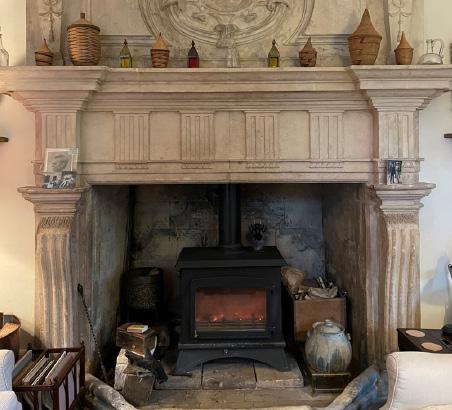
Tudor rose to the pomegranate in homage to the union of Henry VIII and Catherine of Aragon, meant to confirm loyalty to the monarch prior to a hoped-for visit, which may or may not have happened. ‘Richard Clement was a real mover and shaker, a Tudor mercenary’, says Bernadette Gillow, General Manager at the National Trust, ‘who had good marriages to elderly widows. His intact ceiling is one of the most important features of all 16th century houses.’
The Petres have been at Ingatestone Hall in Essex for centuries since it was built by them as a Tudor courtyardplan residence in 1540 with its pretty stepped gables, ‘and it has been in the family for all that time’, notes Dominic Petre, son and heir to Lord Petre, 18th Baron, ‘it is largely unchanged because we are and always have been Roman Catholics mostly unconcerned with the vicissitudes of politics. It remains a house on a human scale with all its accumulated junk!’ Rooms occupied by Queen Elizabeth on an early progress – ‘when it was still an honour’, adds Mr Petre, ‘although later she used it as a threat with its risks of bankruptcy’ – are fi tted with fine linenfold panelling, and the shopping list for the food consumed during her stay reveals a real taste for lavish spending on herons, gulls, quails, ‘bullockes levers’, fish including ‘sturgion’, plus ‘beare and ale’ and ‘gallons of creame’. Not one, but two priests’ hiding places hidden in the thick walls also reveal something of its religious and political history.

WHITTINGHAM COURT, GLOUCESTERSHIRE
visitheritage.co.uk 42
THE LIBRARY FIREPLACE, WHITTINGTON COURT

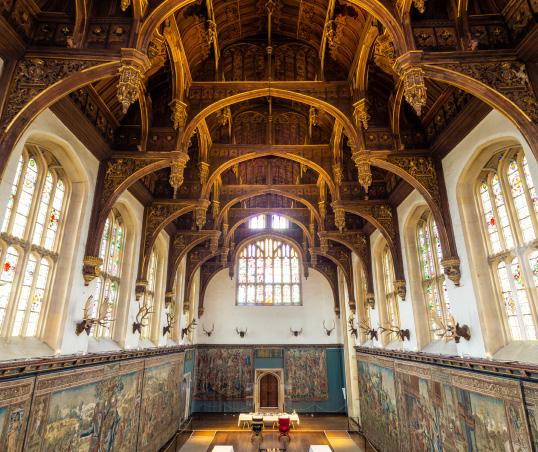
Whittington Court in Gloucestershire, another domain built on a domestic scale with all its idiosyncrasies, was assembled by Richard Cotton, a merchant from Carmarthenshire, in 1556 using local Cotswold stone, but a royal visit from Elizabeth I in 1593 was so expensive, that plans were downgraded, and the house is missing a cross-wing. ‘This gives it a slightly lopsided look’, says Lucy Williams, daughter of the current owner, ‘and the long gallery on the first floor with its matching classical arches and fireplaces were reconfigured into four smaller rooms and a corridor, probably the result of the Cotton family having to scale back on their original intentions’. The house contains an exceptionally unusual early timber dog gate, fi tted to cordon off the first landing on the stairs, and a strikingly beautiful Mannerist fireplace in the Library designed in aesthetic tribute to Sebastiano Serlio.
But surely the greatest of the royal Tudor houses is Hampton Court Palace: even though a third of it was lost when William III revamped it in Baroque style to designs by Wren, the red-brick side of Wolsey’s 1515 majestic renewal of what had been a country house in the rural fringes of London endured, albeit later commandeered by Henry VIII and enriched in his own style. ‘You become immersed the moment you walk down the drive’, points out Dr Karey Draper, Curator of Historic Buildings at Historic Royal Palaces, ‘because this building represents the grandeur, the strength of the English monarch. It is exquisite, it is evocative, it has symbols of underlying themes that Henry wanted to convey.’ These messages are especially compelling in the Great Hall, in its carved ceiling and its tapestries interwoven with gold thread. But the longest strand is the architectural richness of these places, their longevity, the best Tudor legacy of all.
 HENRY VIII’S GREAT HALL, HAMPTON COURT PALACE
HENRY VIII’S GREAT HALL, HAMPTON COURT PALACE
43 visitheritage.co.uk
THE WEST FRONT, HAMPTON COURT PALACE, DESIGNED FOR CARDINAL WOLSEY IN 1515

GLAMPING The Glamour of
KNIGHTS’ GLAMPING AT LEEDS CASTLE, KENT
visitheritage.co.uk 44


When Google reported a 400% increase in searches for ‘glamping’ in 2020, it became clear that holiday makers were looking for something different. Hudson’s has found that some glamping sites combine history, countryside and a view.
Our holiday needs are changing. The cost of living crisis makes us cautious about expense; lockdown made us determined to escape the city; climate change is making us conscious of our environmental impact; and Instagram requires us to frame memorable moments. Glamping ticks all the boxes. As country estates realise the potential, you can seek out a glamping experience in a place where history matters.


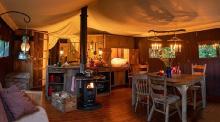
There are three basic options for intrepid glampers. You can opt for a tent, usually on a solid base, very like the luxury safari tents familiar to African travellers. Or you can enjoy a yurt, used for centuries by Mongolian herders and generally spacious and circular. Or if you like to be a little less close to the outdoors you can try the newly fashionable ‘pods’, simple wooden buildings which are perhaps a bit like living on a boat. The essentials for a true glamping site are a wood burning stove, a fire pit, a really comfortable king-size bed, top notch toiletries and plenty of space to roam.
YURT - KELBURN CASTLE, AYRSHIRE
PODS
SAFARI TENT - LAYER MARNEY TOWER, ESSEX
- BROWSHOLME HALL, LANCASHIRE
45 visitheritage.co.uk
KNIGHTS’ GLAMPING AT LEEDS CASTLE, KENT

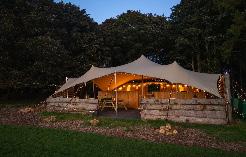
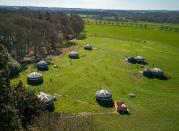
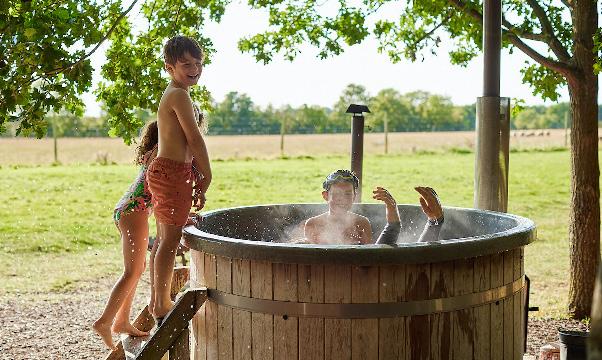
At Layer Marney Tower in Essex, Nick and Sheila Charrington are very experienced glamping hosts. The spacious family tents are tucked into the edge of woodland, where ash, alder and birch trees are also home to deer, owls, woodpeckers and pheasants. Candles, hurricane lamps and firepits create an unbeatable atmosphere in the six three-bedroom tents and a separate private shower keeps your comfort levels high. It’s a relaxed countryside holiday with an onsite playground, animal feeding every morning and occasional pizza nights. The real bonus is free access to spectacular Layer Marney Tower, one of the tallest and most ornate Tudor gatehouses in Britain.

Head to Norfolk for Wild Meadow Glamping in the grounds of 17th century Raynham Hall , home of the Marquess and Marchioness Townshend. Wild Meadow is carefully sited to make the most of sunsets to the West with space to explore both the meadows and the woods. There are 8 luxury yurts which will sleep up to 37 and everyone gets use of the Turnip Tent kitchen, named for Turnip Townshend, or more officially George, 2nd Viscount Townshend. When he lived here in the 1750s, he became a major figure in Britain’s agricultural revolution. There’s space for football games and kiteflying and Raynham is only 20 minutes from the spectacular beaches of North Norfolk. Raynham Hall is only occasionally open to the public and Lady Townshend organises much admired musical recitals in the Great Hall, designed by William Kent, so time your visit appropriately.
LAYER MARNEY TOWER, ESSEX
LAYER MARNEY TOWER, ESSEX
YURT - RAYNHAM HALL, NORFOLK
YURTS - RAYNHAM HALL, NORFOLK
46 visitheritage.co.uk
TURNIP TENT KITCHEN - RAYNHAM HALL, NORFOLK
Yurts are also the favoured accommodation at Kelburn Castle in Ayrshire. Although they merge better into the landscape than the famous graffi ti towers of the castle itself, they are certainly comfortable, sleeping either 6 or 4, with solar power and access to woodland walks and the fairytale discoveries along The Secret Forest trail. A burn runs through the glamping meadow and the views over the Firth of Clyde to the Isle of Arran are stunning. You can make use of the Kelburn equestrian centre for pony rides and treks.
The tents at Leeds Castle in Kent offer a rather different style of glamping, strictly for knights and their families. The striped campaign tents have a definitely medieval vibe as do the four-poster beds although you will have to share shower facilities in the Knight’s Cottage. What the experience lacks in authenticity – the stove is only ’flame effect’ – it makes up for in the fun of pretending to be a knight for a night. Complimentary access to Leeds Castle and its sumptuous interiors is included.

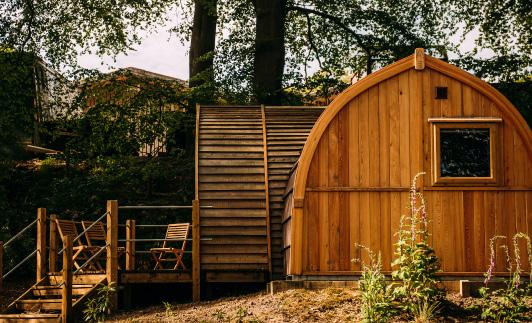



If you really want to get into the wilds, book one of the new bell tents at Mapperton in Dorset, slap bang in the middle of the 200 acres that is being rewilded by owners, Luke and Julie Montagu. Mapperton Wildlands are home to a herd of white park cattle and the pasture and copses are habitat for birds, butterflies and wildflowers. Binoculars are provided to spot all this biodiversity and you may want to train them on the far-reaching views over Dorset to the sea at the Jurassic Coast. The tents sleep 2, with an optional camp bed, and there are hot showers and composting toilets. You will find it hard to drag yourself away from this immersive nature experience but don’t miss the Countess of Sandwich’s wonderful gardens at Mapperton.
If you’d rather your walls were solid, opt for one of the lodges at Browsholme Hall in Lancashire. Tucked into the woods are 10 wooden pods, named after native tree species. Each lodge is self-contained with an en-suite shower and kitchenette and even underfloor heating for chilly nights. Two – Oak and Cherry - are set apart and slightly more luxurious but all have Wi-Fi. The surrounding Forest of Bowland is one of Britain’s least known beauty spots. Browsholme Hall’s panelled interiors and fascinating collections are open regularly through the summer and the landscape gardens are just waiting to be explored.
So, pack your toothbrush and pyjamas, you won’t need much more. Choose your glamping escape according to how remote you wish to be but at any one, you are assured of wonderful memories and nights close to the stars. You may never want four walls again.
BELL TENT - MAPPERTON, DORSET
THE BOTHY KITCHEN - KELBURN CASTLE, AYRSHIRE
PODS - BROWSHOLME HALL, LANCASHIRE
47 visitheritage.co.uk
KELBURN CASTLE, AYRSHIRE

An interview with... BEN COWELL
Ben Cowell is the Director of Historic Houses, the organisation that represents the interests of privately owned historic houses and gardens across the UK. Historic Houses has just celebrated its 50th anniversary, so Sarah Greenwood went to ask him how much has changed.

Why did owners of Britain’s historic houses band together in November 1973?
The idea for some sort of owners’ association had been around for a while before then. The National Trust had first suggested it back in the 1930s, and in 1952 Lord Montagu convened a group of owners at a meeting at the Dorchester Hotel to explore what such an association might look like. The idea didn’t quite take off at that point, but like all good ideas it refused to die. In the mid-1960s, there were enough individual country house owners who had joined the British Travel Association that the BTA formed a Historic Houses Committee. When the BTA became a governmentsponsored organisation (renamed as the British Tourist Authority) in 1970, a meeting at Mansion House led to the creation of a Standing Conference of historic house owners. The answer to the question also lies in the politics of 1973. The UK had joined the European Community in January 1973, and other European countries already had owners’ associations of their own –so the UK needed to keep up! Meanwhile, owners faced the potential for new taxes, in particular the Wealth Tax that was proposed in Labour’s manifesto for the general election(s) of 1974. A more independent association was required, which could be free to criticise government if this was felt necessary. Hence, the Standing Conference broke away entirely from the BTA to become the Historic Houses Association, on 8 November 1973.
LORD MONTAGU SCRUBBING FLOORS BEFORE OPENING BEAULIEU TO THE PUBLIC IN 1952 © MOTORING PICTURE LIBRARY / ALAMY STOCK PHOTO 48 visitheritage.co.uk
Who were the prime movers?
Lord Montagu of Beaulieu, our founding President, was a driving force. But alongside him was the Duke of Grafton - the association’s first patron, George Howard from Castle Howard, Michael Saunders Watson from Rockingham Castle, David Lytton Cobbold from Knebworth, and the Earl of March from Goodwood. Numerous other owners soon joined the 93 founder properties. Today, Historic Houses represents over 1,400 houses, castles, gardens and parks across the UK.
What did they achieve in the early days?
The association achieved a huge amount within a very short space of time. The tiny executive staff had quickly to become experts at Parliamentary lobbying, and at influencing the passage of legislation such as Finance Bills. Many late nights were spent stalking the corridors of power, pressing for amendments to clauses that would better protect historic houses from harm. A breakthrough came with the Finance Acts of 1975 and 1976, which gave owners the option of conditional exemption for their houses and gardens: provided a measure of public opening was on offer, the harshest capital tax charges were avoided. This was an important development, achieved relatively early in the life of the new association.
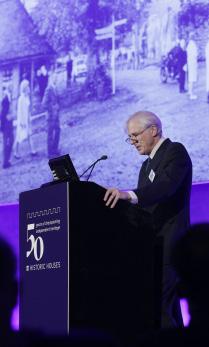

Has the organisation grown since then?
Within a few years the association started experimenting with a new category of member: the ‘Friends’. These were not (necessarily) the owners of historic houses, but rather avid supporters, who enjoyed going on regular tours of houses that might not normally be open to the public. From a few hundred Friends, then to a thousand or so, the number has really taken off in recent decades. We hit 75,000 this summer – a sign that the association is becoming better known. We have also been able to offer more services to houses over the years. We started by running occasional conferences and seminars, and now offer a full technical advice service and a programme of events and activities to support the owners of historic houses and gardens.
 LORD MONTAGU AND LABOUR MP FOR ENFIELD, TED GRAHAM, DELIVER A ONE MILLION STRONG PETITION TO THE HOUSES OF PARLIAMENT IN 1973
RALPH, LORD MONTAGU, SON OF THE FOUNDING PRESIDENT OF HISTORIC HOUSES, ADDRESSES THE DELEGATES AT THE 50TH ANNIVERSARY AGM IN NOVEMBER 2023
LORD MONTAGU AND LABOUR MP FOR ENFIELD, TED GRAHAM, DELIVER A ONE MILLION STRONG PETITION TO THE HOUSES OF PARLIAMENT IN 1973
RALPH, LORD MONTAGU, SON OF THE FOUNDING PRESIDENT OF HISTORIC HOUSES, ADDRESSES THE DELEGATES AT THE 50TH ANNIVERSARY AGM IN NOVEMBER 2023
49 visitheritage.co.uk
HISTORIC HOUSES VISITOR MEMBERS ENJOY PRIVILEGED ACCESS TO INDEPENDENT COUNTRY HOUSES

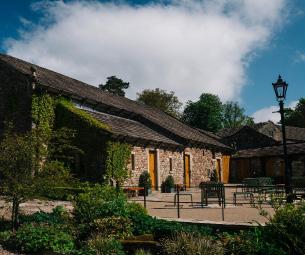
What were Britain’s historic houses like 50 years ago?
A great many were in a very poor state indeed. Years of neglect after the Second World War had taken their toll. Houses like Browsholme Hall in Lancashire and Combermere Abbey in Cheshire were in a really bad way, and needed significant investments by new generations of owners.
How have they changed?
In both of these cases, the situation has transformed over the last half-century. Both Browsholme and Combermere are now very successful wedding venues. The houses have been beautifully restored, to match 21st-century living conditions. Combermere Abbey won our Restoration Award in 2016, while Browsholme won our inaugural Sustainability Award for its adoption of renewable energy installations. Both houses are shining examples of the entrepreneurial spirit of their owners.
THE TITHE BARN, BROWSHOLME, A VITAL PART OF THE INCOME GENERATING BUSINESS THAT HELPS TO MAINTAIN THE TUDOR HOUSE 50 visitheritage.co.uk
BROWSHOLME HALL, TODAY A SUCCESSFUL WEDDING VENUE AND HERITAGE ATTRACTION

What is the organisation’s greatest success?
The mid-1970s tax changes were not to be underestimated. Since then, the association has fought other battles on policy matters, not always successfully, but in a way that reminds governments of the importance of private owners. The liberalisation of the rules around wedding licensing in the mid-1990s saw the creation of a whole new industry: the country house wedding. Around a third of our member properties now offer themselves as events venues. Encouragement of the diversification of businesses that can be carried out at historic houses and gardens is perhaps the association’s greatest legacy.
How important are its visitor members and what benefits do they get?
Our visitor members (the term we now use for our ‘Friends’) are hugely important to Historic Houses. Their subscriptions help to support all our work, and thereby to ensure that this important area of heritage is well looked-after. We offer a membership card that gives free access to around 300 places, a fascinating magazine that comes out four times a year, and regular online lectures, talks and insights into the world of independently owned historic houses and gardens.

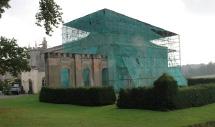
What does the future look like for Historic Houses and for its members?
We are very excited about the future. The more people hear and understand about our work, the more we can promote the cause of independently owned heritage. A great many people continue to be delighted at having the opportunity to visit wonderful houses and gardens, and Historic Houses can offer the chance to visit more of these places than any other heritage organisation. So we will continue to spread the word, while also offering vital services to owners and custodians through our technical advice, our events and seminars, and our political representation. Another major project for 2024 will be to use lottery funding from the Heritage Innovation Fund to enhance the jobs pages on our website, in order to make these more accessible to an even wider range of potential new employees at Historic Houses. There’s never been a better time than now to get involved in the business of looking after and caring for this important part of our heritage, and we want to highlight all the different ways in which jobseekers might be able to do that.
Ben Cowell’s book The British Country House Revival (Boydell & Brewer) is available from all good book shops from May. Order a copy at a special price of £30 + p&p at www.boydellandbrewer.com until 31 December 2024, quoting BB242.
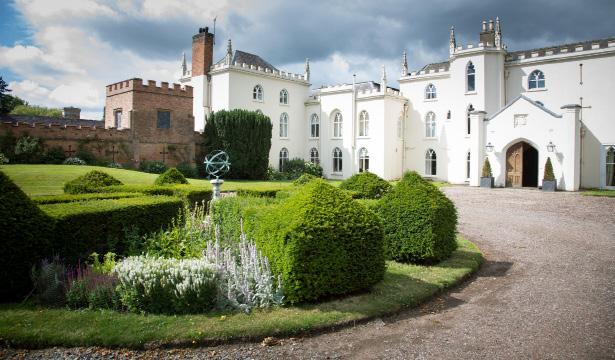

COMBERMERE ABBEY BEFORE RESTORATION IN 2013 COMBERMERE ABBEY RESTORED TO BEAUTY AND NOW ENJOYED BY MANY GUESTS AND BRIDAL PARTIES 51 visitheritage.co.uk

STOWE
Restoration of the Century
STATE DINING ROOM, RESTORED
visitheritage.co.uk 52

The final reveal of the 20 year restoration programme at Stowe last autumn has given the nation back a magnificent palace and proved the adaptability of a great country house in the modern world.


Britain has just a smattering of palaces on a grand scale. It is perhaps significant that Scotland’s grandest country house, Hamilton Palace, was demolished in 1922, the very same year that Stowe House, its equal in size, was put up for sale. Stowe’s national significance as a great political powerhouse throughout the Georgian era inspired a property developer called Harry Shaw to purchase it with a plan to raise funds to donate it to the nation. A year later, with no money on the horizon and stripped of most of its fireplaces and fi ttings, it was back on the market. This time, Stowe was luckier. The purchasers were an educational consortium who had a vision for a new type of public school and Stowe was large enough to accommodate it.
How did this happen? How did a house that by any standards is something of an architectural wonder and was a political nursery for four British Prime Ministers end up on the scrap heap? The story is as grandiose as the house.
STOWE HOUSE - SOUTH FRONT SIDE VIEW NORTH HALL 53 visitheritage.co.uk


Stowe’s prime began when it was inherited by a successful soldier who was to become Viscount Cobham at the accession of George I. Lord Cobham employed the best architects of the day, Sir John Vanbrugh and William Kent, to update his father’s house at Stowe and Charles Bridgeman to create a garden that became an instant tourist attraction. When Lord Cobham’s sister Hester was widowed, he became a mentor to her children and their friends, forming a parliamentary circle at Stowe which became known as ‘Cobham’s Cubs’. Hester was to become the mother of two Prime Ministers, George Grenville and William Pitt the Elder, and grandmother of two more, William Pitt the Younger and William, Lord Grenville.
In the next generation, Earl Temple continued to develop the house at Stowe along neo-classical lines, consulting architect Robert Adam and his cousin, Thomas Pitt. The house was finally given its present appearance by his nephew, George, 1st Marquess of Buckingham who added the extraordinary Egyptian Hall and the Libraries. At the turn of the 18th century, the family were among the wealthiest in the country.


STATE MUSIC ROOM LARGE LIBRARY 54 visitheritage.co.uk
In 1822, the family finally achieved a long held ambition to become Dukes of Buckingham & Chandos. They inhabited one of the largest and most impressive houses in the country and had the ear of governments but at this point things started to go downhill. The 1st and 2nd Dukes began to spend beyond their means on treasures to fill the grand rooms at Stowe, on military adventures, on travel and on entertainment until their debts reached £1.5 million, perhaps £150 million today. Their political influence also declined after parliamentary reform, though Queen Victoria was a guest in 1845 – “I am sure I have no such splendid apartments in either of my palaces” commented the Queen, acidly. The crash came three years later. The accumulated treasures of generations


of the Temple-Grenville family were sold in 1848 in a 40 day sale. Inheriting what was left in 1861, the 3rd Duke of Chandos painstakingly restored the family fortunes as a diligent public servant but failed to sire an heir. In 1922, after his grandson had been killed in the First World War, the house was put up for sale.
The arrival of Stowe School gave the house new life. Its corridors filled with school pupils and its grand rooms found a new purpose and new traditions. However, over the decades, maintaining a large and increasingly aging building was an unrealistic burden. By the beginning of the 21st century, Stowe was on the World Monument Fund’s list of buildings at risk.

DRAWING ROOM RESTORATION DINING ROOM RESTORATION DINING HALL RESTORATION visitheritage.co.uk 55
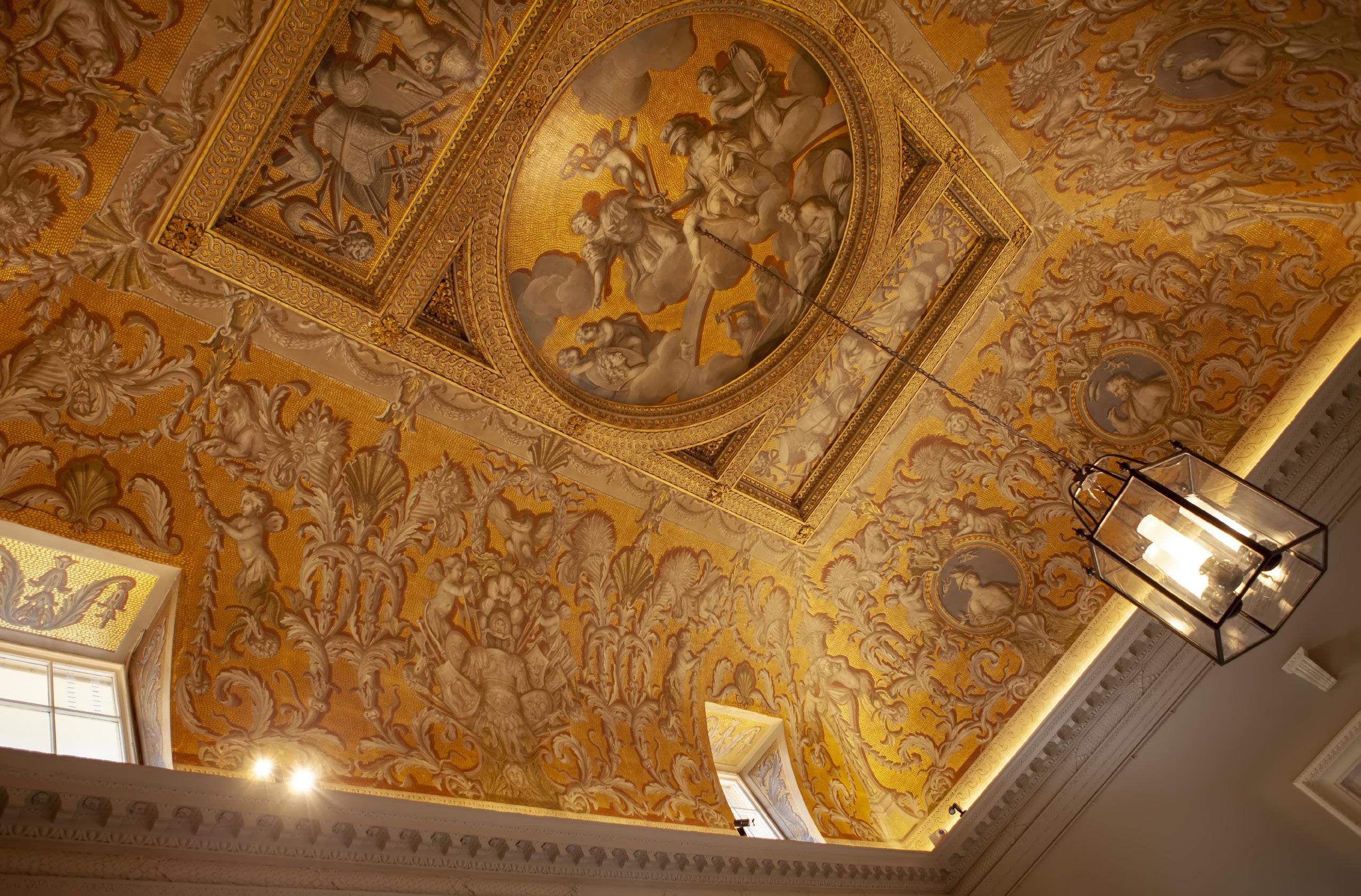
The solution was a trio of charities. Stowe School Foundation continues to occupy the building; the National Trust took on responsibility to run and restore the gardens; and the Stowe House Preservation Trust was formed in 1997 to raise money to restore and open the house. Over 20 years, funding has been sought from institutions and individuals to achieve what first seemed impossible. The interiors, particularly the ornate ceilings, have been repaired, repainted and regilded. Painted interiors have been cleaned and restored. Original statuary and fire surrounds have been traced and reacquired or copied and reinstalled. Paintings have been cleaned, reproduced and rehung. An exciting new ‘Discovery Room’ brings together an exhibition of donated objects that once belonged in the house and which together tell the story of Stowe.
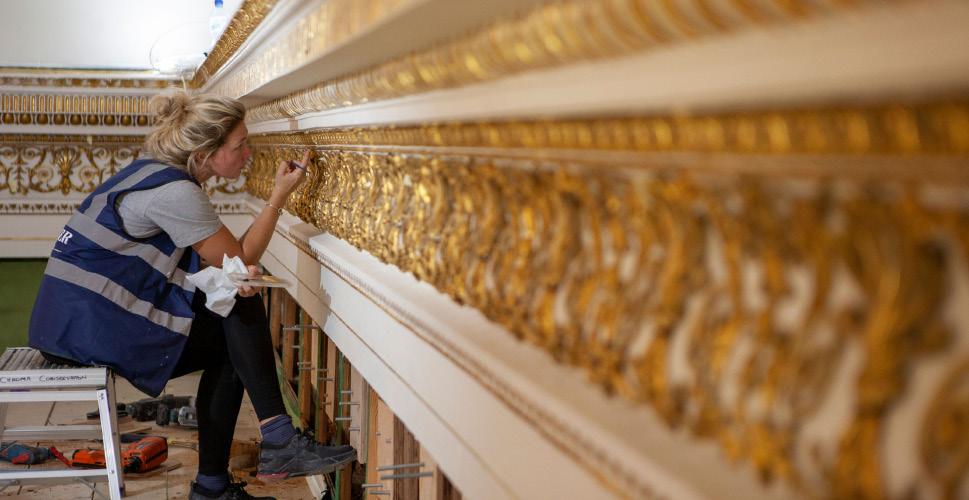
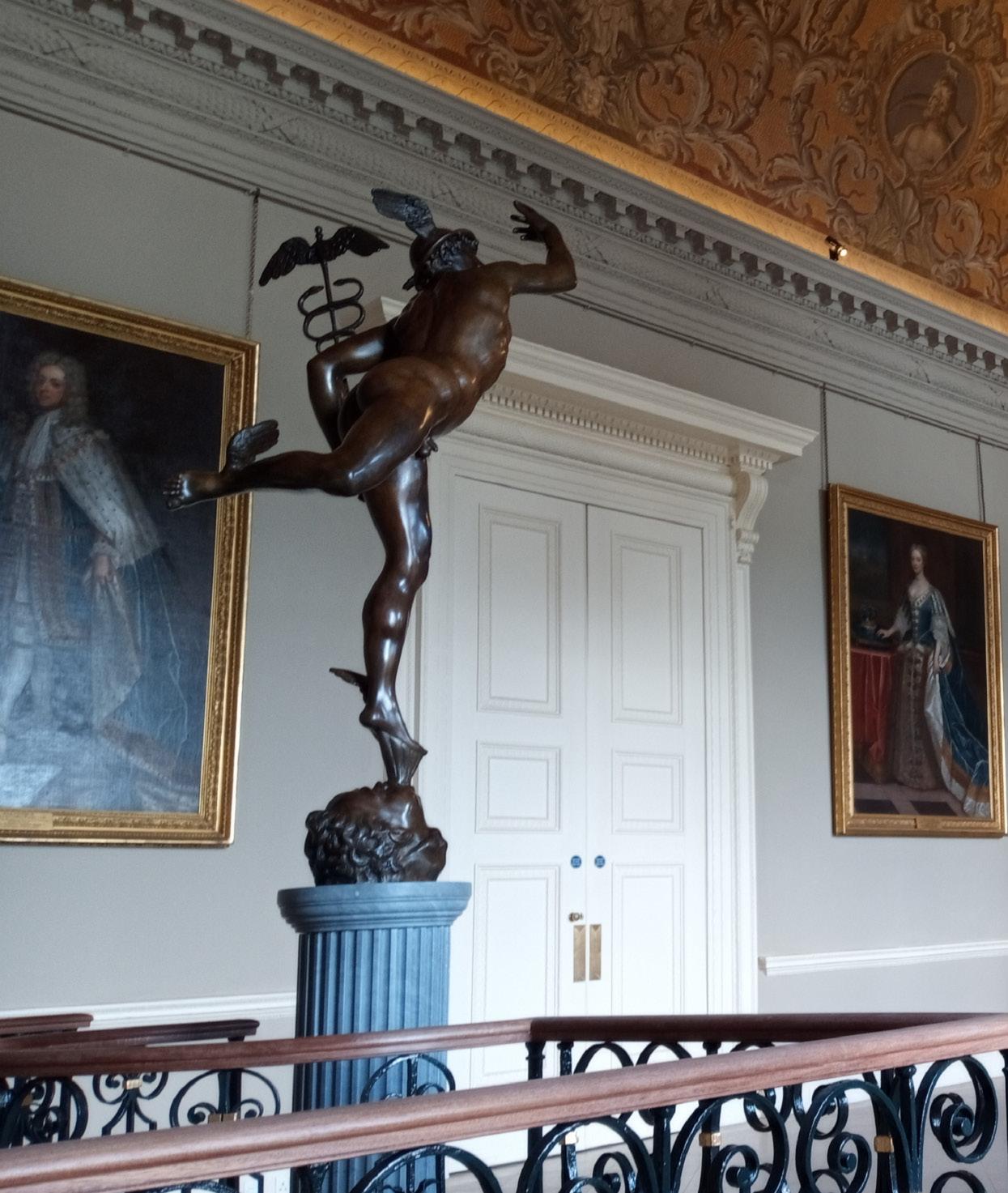

NORTH HALL CEILING STATE DRAWING ROOM CEILING 56 visitheritage.co.uk



There are many highlights. The North Hall with its triumphant grisaille murals by William Kent expose Viscount Cobham’s views of politics as he bestrides the ceiling with Mars, the God of War. The Large Library’s magnificent gilded ceiling gleams above school pupils studying for exams as it once did over the Marquess of Buckingham’s celebrated book collection. The delicate murals in the Music Room once again hint at the culture enjoyed at Stowe in the 1800s. Most exciting of all is where the past and future meet in the State Dining Room. Stowe School pupils eat their lunch in the room where Queen Victoria banqueted. The important series of tapestries on the walls were purchased in Brussels by


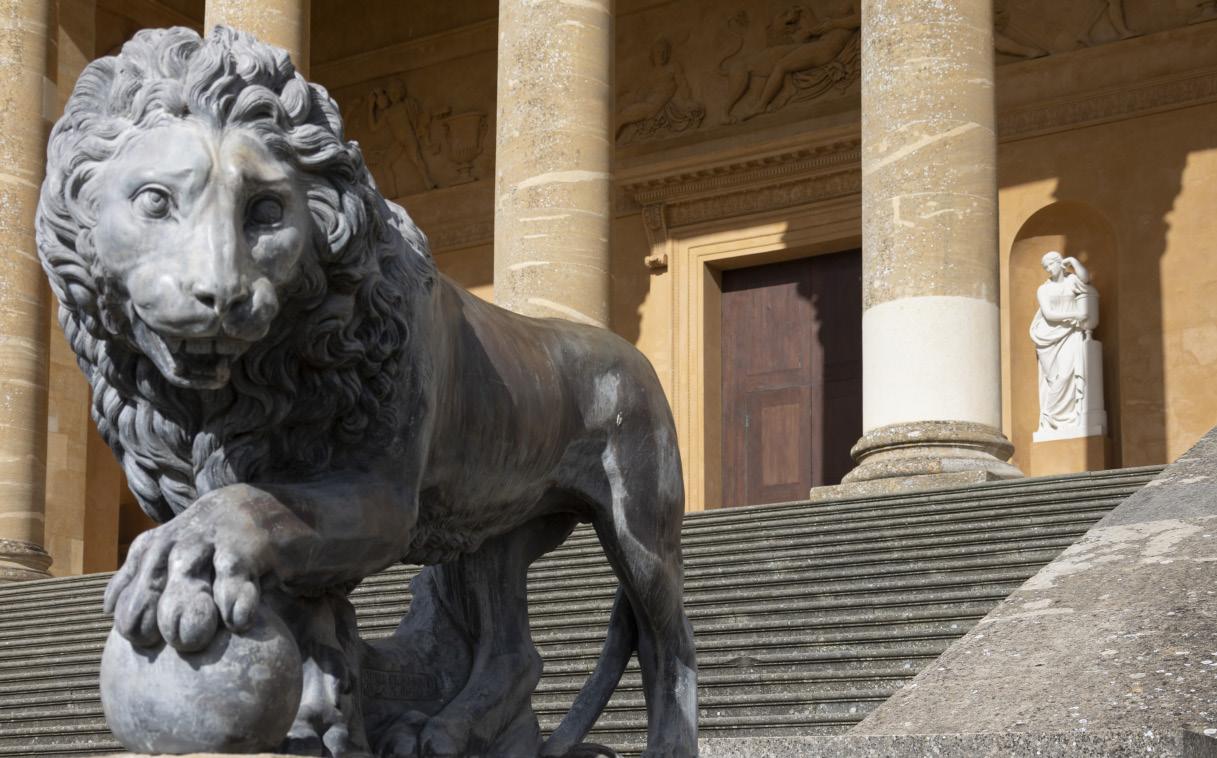
Viscount Cobham in the 1740s. Tracked down to various museums, they have been reproduced in high quality wallpaper that will resist students’ sticky fingers but convincingly recreates one of Britain’s grandest lost interiors.
The result is that today visitors can experience a house which even Queen Victoria regarded as a palace, muse on the fall of the ambitious Temple-Grenville family, and appreciate some of the greatest makers of the Georgian era. It is also inspiring to see what imaginative contemporary restoration can achieve.
NORTH HALL AFTER RESTORATION MEDICI LION STATE DINING ROOM STOWE HOUSE - SOUTH FRONT 57 visitheritage.co.uk
ON THE ROAD TARR

A SUFFOLK PORTRAIT
Derek Tarr embarked on a church to church walk through the heart of the Essex and Suffolk Claylands savouring the delights of Gainsborough Country along the way.
PHOTOGRAPHY: NICOLA BURFORD
Distances are approximate. Total distance: 17.8 miles
DEREK AT MELFORD HALL visitheritage.co.uk 58

In the 15th century, the expansion of the wool trade in Suffolk made many of the towns extremely affluent. This wealth was expressed through the building of elaborate wool churches and grand houses. The industry was decimated during the 16th century due to Henry VIII’s European wars curtailing trade and the growth in popularity of other materials for clothing. The rise of the Industrial Revolution in other parts of the country by-passed this area. Today we are fortunate to be left with a remarkable medieval architectural legacy.

DAY 1
BELCHAMP WALTER TO SUDBURY
5.9 miles
I arrived in Belchamp Walter, Essex, to start a walk through a countryside that will be forever associated with two of England’s greatest romantic landscape and portrait artists. While many of John Constable’s images were views around Dedham Vale further down the River Stour, he frequently painted in the area on the Essex Suffolk border. However, it was Constable’s predecessor, Thomas Gainsborough, who called it home and my choice of start was designed to see and ‘feel’ the landscape that so inspired his art.
The sun was disappearing behind threatening clouds as I approached the church of St Mary the Virgin, Belchamp Walter. The church, which now only has a monthly service, contains some rare red ochre murals that have survived from the 14th century. Across the road is the impressive Belchamp Hall, a Queen Anne red brick private residence owned by the Raymond family. It is probably best known for standing in for Felsham Hall in the late 20th century BBC television series Lovejoy, starring Ian McShane.
BELCHAMP HALL
59 visitheritage.co.uk
Down the hill towards Belchamp Brook, I passed the abandoned Venetian Canal, the building of which plunged an ancestor of the Raymonds into debt. As I crossed the fields heading towards Bulmer, the rain arrived. The moody sky, with the occasional ray of sunlight in the distance, was a fi tting reminder of possibly Gainsborough’s most famous portrait, Mr and Mrs Andrews, which today can be viewed in the National Gallery in London. The couple are buried in Bulmer’s church where a memorial plaque commemorating them can be seen on the wall. Robert Andrews hailed from the nearby Auberies Estate. It was there, in 1750, that the portrait was painted of the couple posing beneath an oak tree. The landscape in the painting is close to the view I enjoyed for much of my walk.
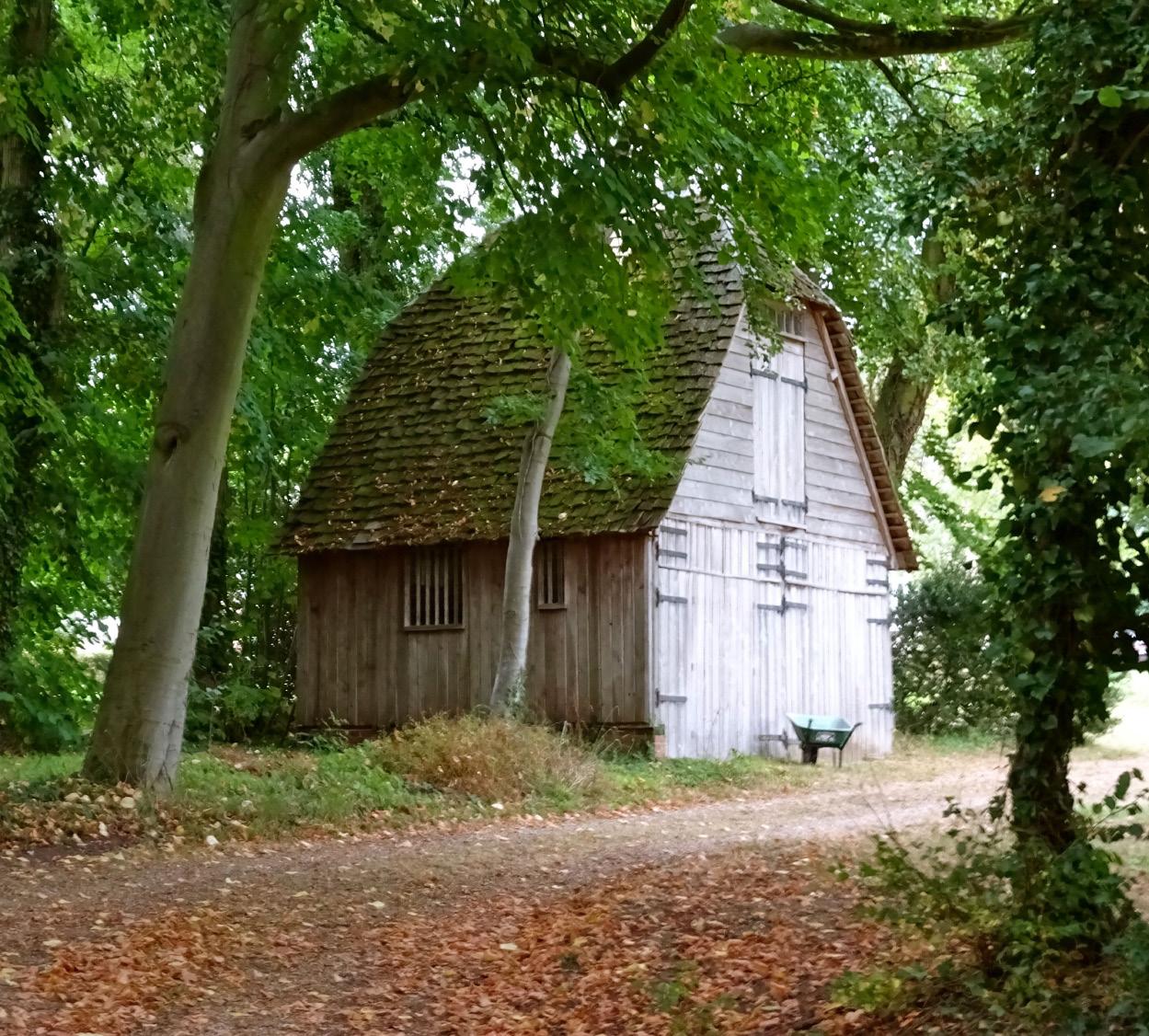
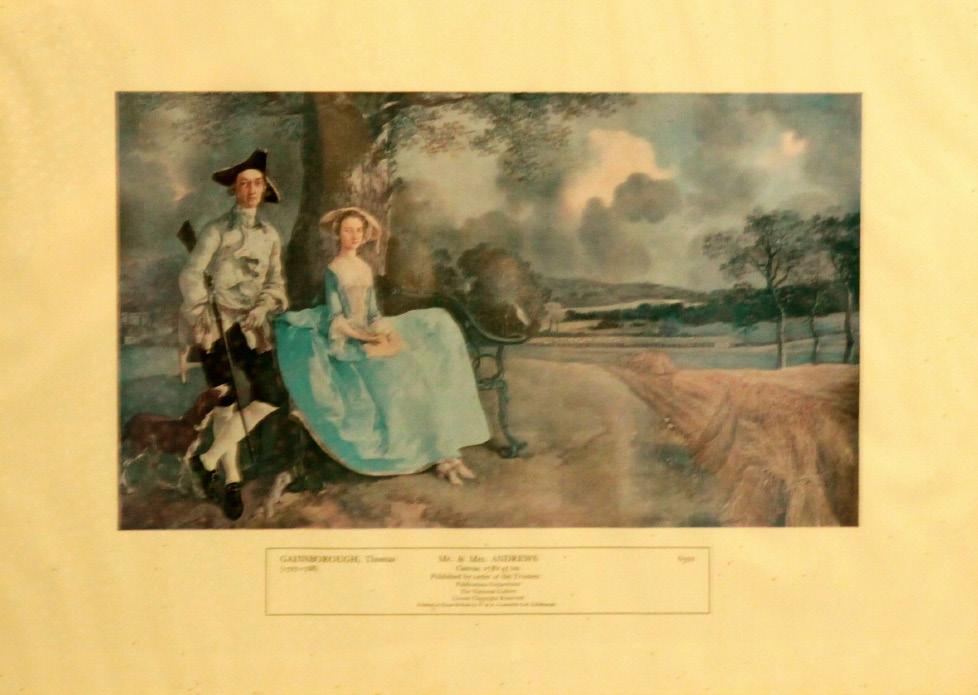

Bulmer Tye is an adjoining village a short distance away. I passed some pretty cottages before arriving at a sizable village green, which is home to a monument with depictions in relief of local life and a carving of Mr and Mrs Andrews. Crossing the busy A131, I headed onwards to Little Henny and joined the Stour Valley Path. As I descended towards the town of Sudbury, Ballingdon Hall stood in the trees to my left. Gainsborough and the Andrews would probably still recognise the Tudor building but would be confused by its location. In 1972 the owners, John and Angela Hodges, were unhappy with a proposed building development which would come extremely close to their property. They made the decision to move the hall up the hill away from the development. It was recommended that it wouldn’t survive being taken down and rebuilt so they decided to move the house in one piece! It was encased in a steel frame, placed on caterpillar tracks and dragged half a mile up the hill to where it stands today. The whole process took almost a year and brought international fame to Ballingdon Hall, which is now a health clinic.
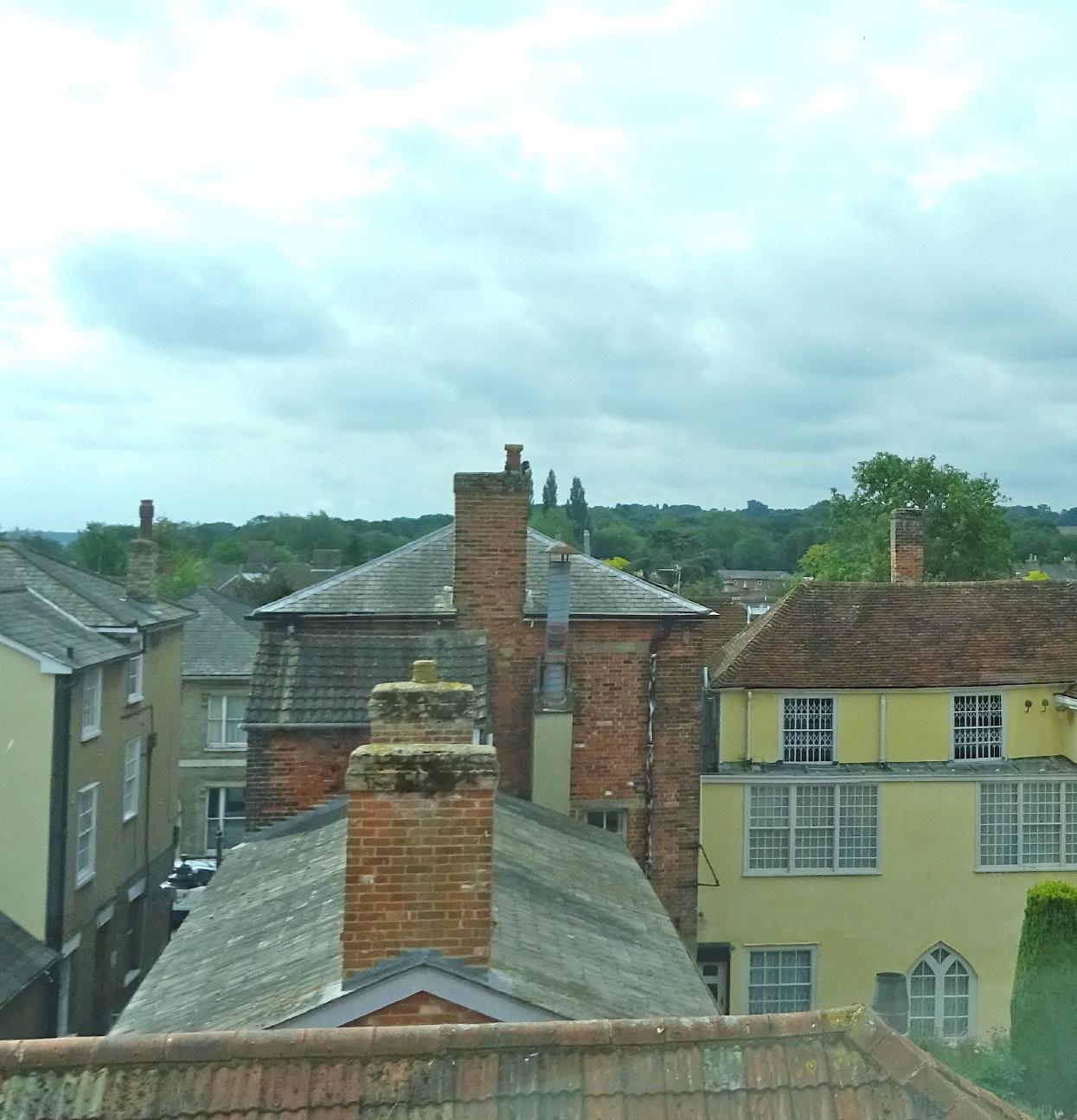
 VENETIAN CANAL, BELCHAMP WALTER
DEREK AT GAINSBOROUGH’S HOUSE, SUDBURY
PRINT OF MR AND MRS ANDREWS PORTRAIT, BULMER CHURCH
VENETIAN CANAL, BELCHAMP WALTER
DEREK AT GAINSBOROUGH’S HOUSE, SUDBURY
PRINT OF MR AND MRS ANDREWS PORTRAIT, BULMER CHURCH
60 visitheritage.co.uk
BARN AT BULMER TYE
Following in the footsteps of Missis and Pongo, as described by author Dodie Smith in her children’s book The Hundred and One Dalmatians, I crossed the bridge over the River Stour into Suffolk and the town of Sudbury. In the market square, by the church of St Peter, is the drinking fountain mentioned in the book with a dedication to its author.
There has been a settlement at Sudbury since AngloSaxon times and it is the largest town in the area. The influx of Flemish weavers during the reign of Edward III made Sudbury a major manufacturing centre during the boom years of the wool and silk trades.
I began exploring the town at the Sudbury Heritage Centre , which is a small but excellent museum of local history, before visiting the splendid Gainsborough’s House . This museum and gallery dedicated to the artist is housed at his birthplace. Since it opened in 1961 it has developed and expanded and now has the largest collection of Gainsborough’s work in one single location. The recently completed extension to the rear of the house, partly funded with a significant grant from the National Lottery Heritage Fund, is home to a gallery for temporary exhibitions. When I visited, work by the outstanding local artist Maggi Hambling was being exhibited.
I finished the day with a stroll following the Talbot Trail, a series of fourteen small sculptures dotted around the town depicting tales and stories from Sudbury’s past.



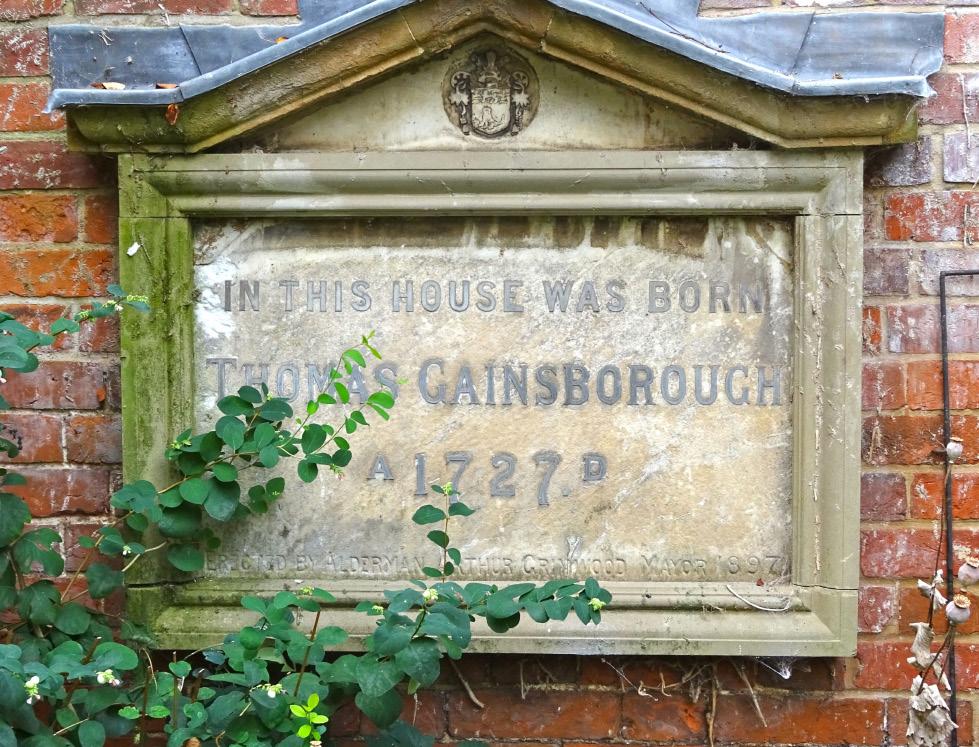
 PLAQUE IN GAINSBOROUGH’S HOUSE GARDEN, SUDBURY
PLAQUE IN GAINSBOROUGH’S HOUSE GARDEN, SUDBURY
PONGO SCULPTURE, TALBOT TRAIL,
61 visitheritage.co.uk
THE DINING ROOM AT GAINSBOROUGH’S HOUSE, SUDBURY
SUDBURY

DAY 2
SUDBURY TO LONG MELFORD
6.9 miles
I left Sudbury, crossing back over the River Stour and onto the ancient Water Meadows. This vast piece of land has never been ploughed or fertilised and is home to a wide variety of flora and fauna. Administered by the Sudbury Common Lands Charity since 1897 it was much loved and painted by both Gainsborough and Constable. However, I could not linger, for there was much to see this day and time was short.
After a few miles, I arrived at Long Melford and its magnificent church. Surveying the village below from its commanding position, Holy Trinity, Long Melford is a truly special place. It is one of a handful classed as ‘5 star’ in Sir Simon Jenkins’ England’s Thousand Best Churches book. There has been a church here since before the Norman Conquest but John Clopton, of nearby Kentwell Hall, can be credited for the structure we see today. This powerful wool merchant was a staunch Lancastrian and a significant figure during the Wars of the Roses. He financed the rebuilding of the church between 1467 and 1497. There are many references to the Clopton family in the church but, for me, the most moving is the tomb of Sir William, John’s father, which lies in The Clopton Chapel

LONG MELFORD GREEN WITH ITS 16TH CENTURY WATER CONDUIT HOLY TRINITY, LONG MELFORD 62 visitheritage.co.uk

A red rose has been placed on the figure surmounting the tomb as payment of an annual rent for the Market House in nearby Hadleigh. Having been paid since 1438 this is believed to be the oldest continuous agreement of this kind in the United Kingdom. The church has some of the finest and oldest medieval stained glass in the country. At the time of my visit, the glass was in the process of being restored, requiring it to be removed and taken to Canterbury one window at a time. As a result, there was a significant amount of scaffolding erected both inside and out. However, there was still plenty to admire. One window that particularly intrigued me was an image of Elizabeth de Mowbray, Duchess of Norfolk. It is believed that the illustrator John Tenniel used this image as inspiration for the drawing of the Queen of Hearts in the Alice’s Adventures in Wonderland by Lewis Carroll.



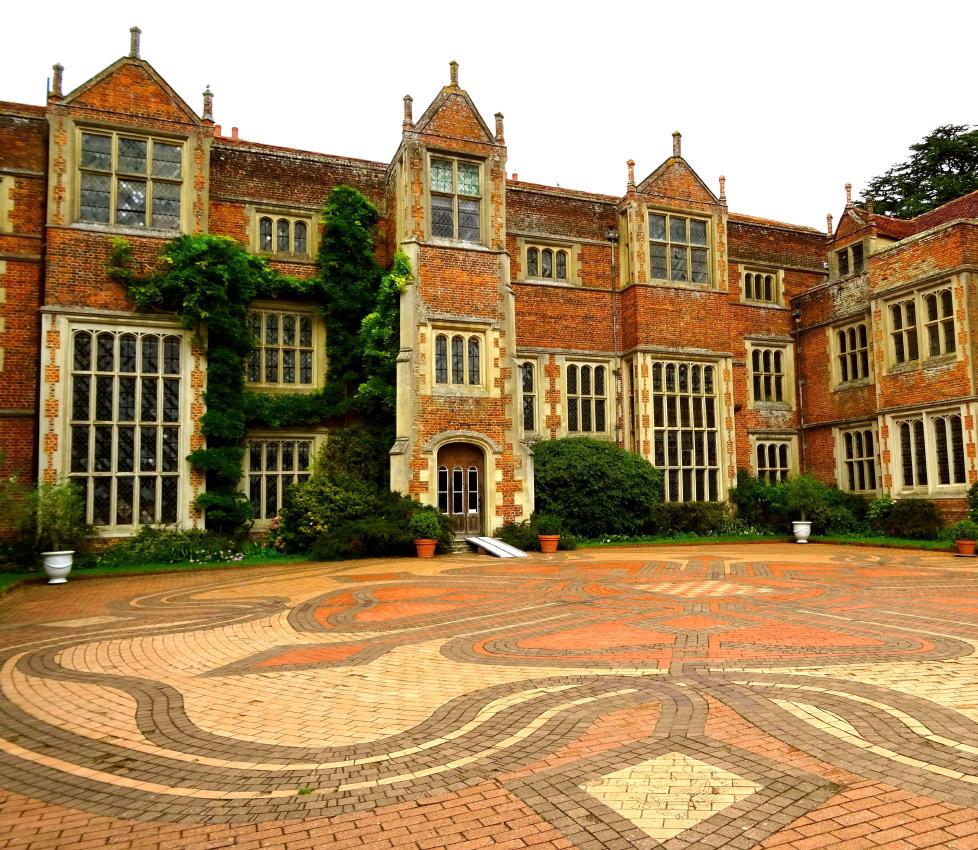


From the church, I followed a path to Kentwell Hall, a moated red-bricked Tudor house. The Anglo Saxons were the first to inhabit the estate and there have been many owners since. The present buildings are predominantly the achievement of the same Clopton family who had so much influence with the development of the church. Although records are limited, the mansion appears to have been completed by the 16th century. The Clopton connection ended in 1676 when the house was sold.
When the current owner, Patrick Phillips, purchased the estate in 1971, it was run-down and neglected. So began a labour of love to restore the house, gardens and estate that continues to this day.
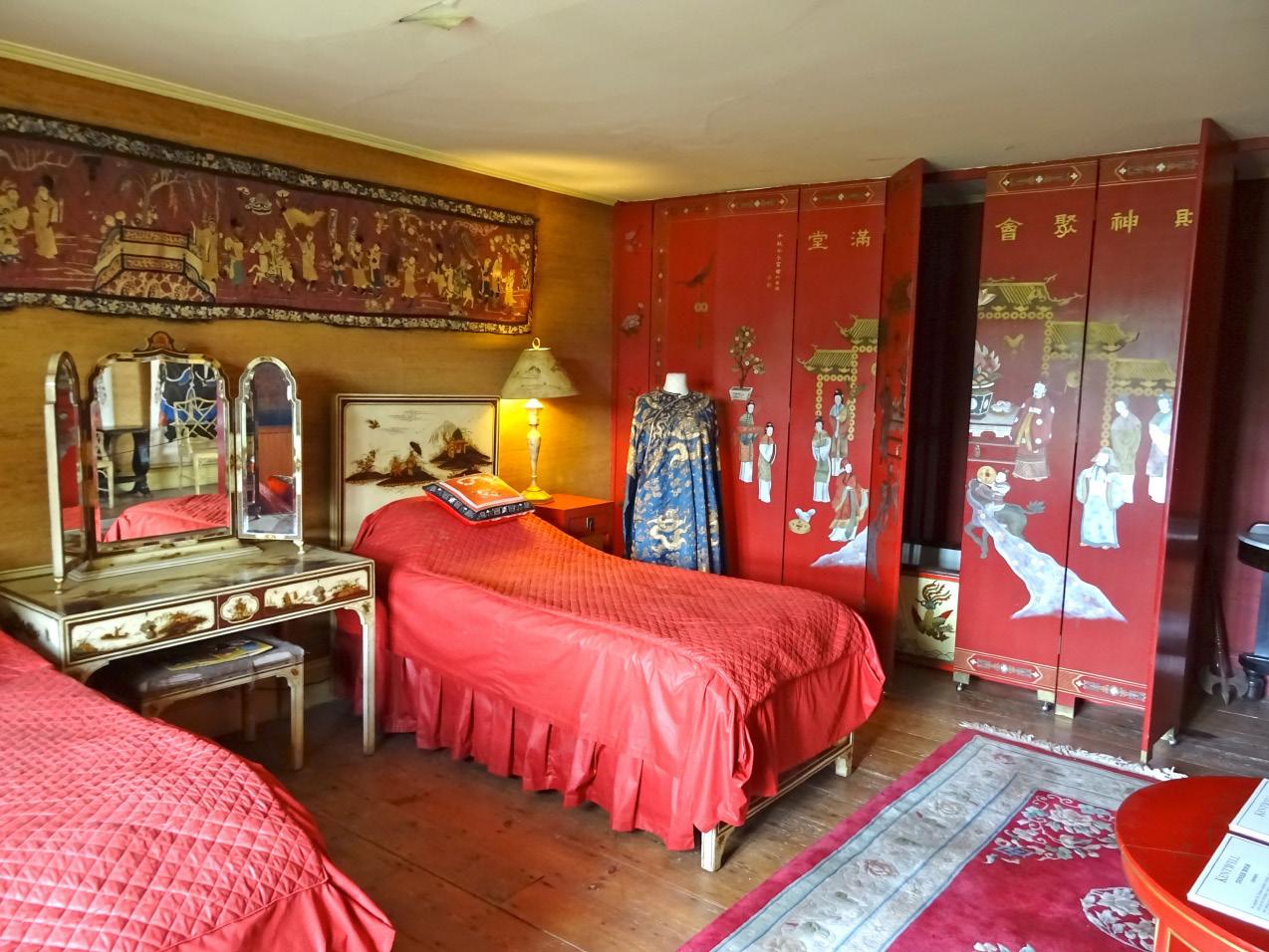
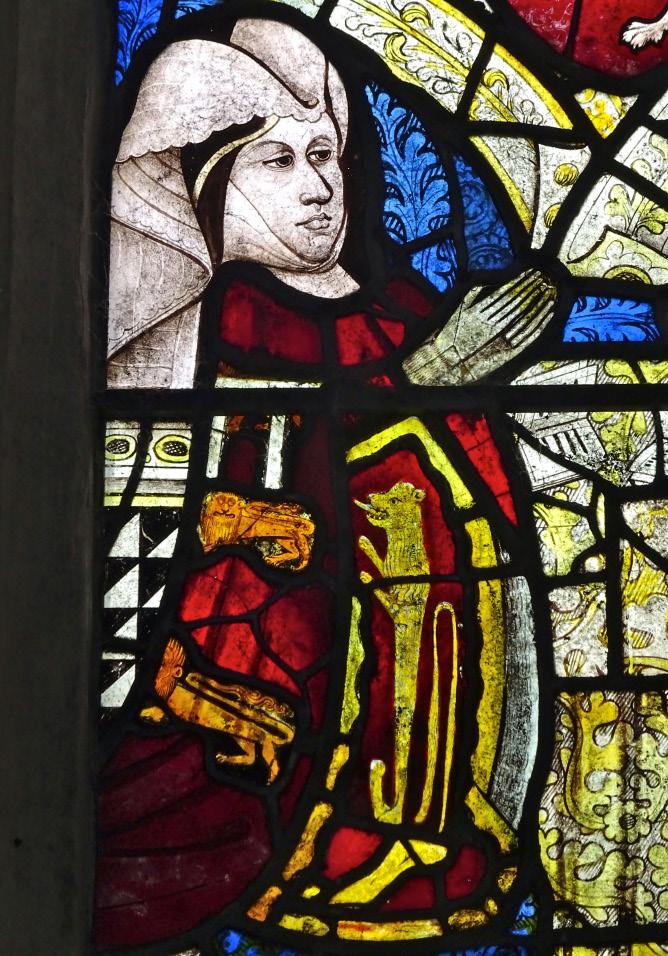 MELFORD HALL MOAT AND TOWER OF BABEL CEDAR TREE, KENTWELL
SIR WILLIAM CLOPTON’S TOMB, LONG MELFORD CHURCH
ELIZABETH DE MOWBRAY, QUEEN OF HEARTS, LONG MELFORD CHURCH
BULL INN, LONG MELFORD
THE GREAT HALL, KENTWELL
THE FORECOURT, KENTWELL HALL
MELFORD HALL MOAT AND TOWER OF BABEL CEDAR TREE, KENTWELL
SIR WILLIAM CLOPTON’S TOMB, LONG MELFORD CHURCH
ELIZABETH DE MOWBRAY, QUEEN OF HEARTS, LONG MELFORD CHURCH
BULL INN, LONG MELFORD
THE GREAT HALL, KENTWELL
THE FORECOURT, KENTWELL HALL
63 visitheritage.co.uk
THE CHINESE BEDROOM, KENTWELL
My first port of call was the on-site café. Over the years, I’ve had a number of unusual lunch companions but the peacock that joined me for a perusal of the menu must ‘take the biscuit’! The house itself is surrounded by a wide moat and the approach is across a bridge and onto The Forecourt. This has been laid with a highly decorative Tudor Rose Maze brick floor created by the current owners. To the right is a damaged, large cedar tree which has been carved into a sculpture entitled the Tower of Babel by the artist Colin Wilbourn.
This warm, cosy house is littered with surprises. A Chinese themed room, the Four Season ceiling painting in the style of Pieter Bruegel the Elder and the recreations of Tudor needlework hangings to name a few. Outside I discovered The Moat House with a solar room containing its 15th century-style wall paintings and a camera obscura. Most unexpected of all was the model of a galleon which was built for The Adventures of Baron Munchausen, a 1988 film by Terry Gilliam of Monty Python’s Flying Circus fame.
I headed back downhill towards Long Melford village passing an old water conduit and arrived at the National Trust owned Melford Hall. As with Kentwell, Melford has been occupied since the Dark Ages. Most of the current buildings date from the 16th century and it has been the home of the Hyde Parker dynasty since 1786. This intriguing family have had many colourful characters amongst their ranks, a number associated with the Royal Navy. Vice-Admiral Sir Hyde Parker, 5th Baronet, was commanding HMS Panther in 1762 and engaged and captured the Spanish galleon Santissima Trinidad with her treasure laden hold. Many of the artefacts taken
from the captured ship can be seen at Melford today. The haunting ivory figurine of the Madonna, Our Lady of the Immaculate Conception, is of particular interest. This once jewel encrusted statue had all its precious stones taken when the hall was burgled in 1915 and today, sadly, remains unadorned.
Melford Hall has been visited by royalty, nobility and many significant people. In popular culture, the Hall inspired the famous children’s author Beatrix Potter. She regularly visited her cousin who lived here and memorabilia associated with her can be found in the West Bedroom. Pride of place is a toy duck that was the inspiration for The Tale of Jemima Puddle-duck .
A short distance from the hall was my resting place for the night, The Bull. This pleasant, historic inn was built in 1450 and has an unusual claim to fame. In December 1969, the legendary John Lennon of The Beatles and his wife Yoko Ono stayed here before making the art film Apotheosis The main star of the film was a hot-air balloon rising out of Lavenham’s market place. The whole episode was filmed as part of the BBC’s documentary 24 Hours: The World of John and Yoko. This included a scene filmed in a bedroom in the Bull which was reminiscent of the Lennons’ famous ‘bed-in for peace’ at the Hilton Hotel in Amsterdam.
I had a pre-dinner walk around the delightful village before coming across the Nethergate Brewery and Distillery. I refreshed myself with a pint of Stour Valley Golden Ale in the brewery garden while relaxing in the early evening sun.
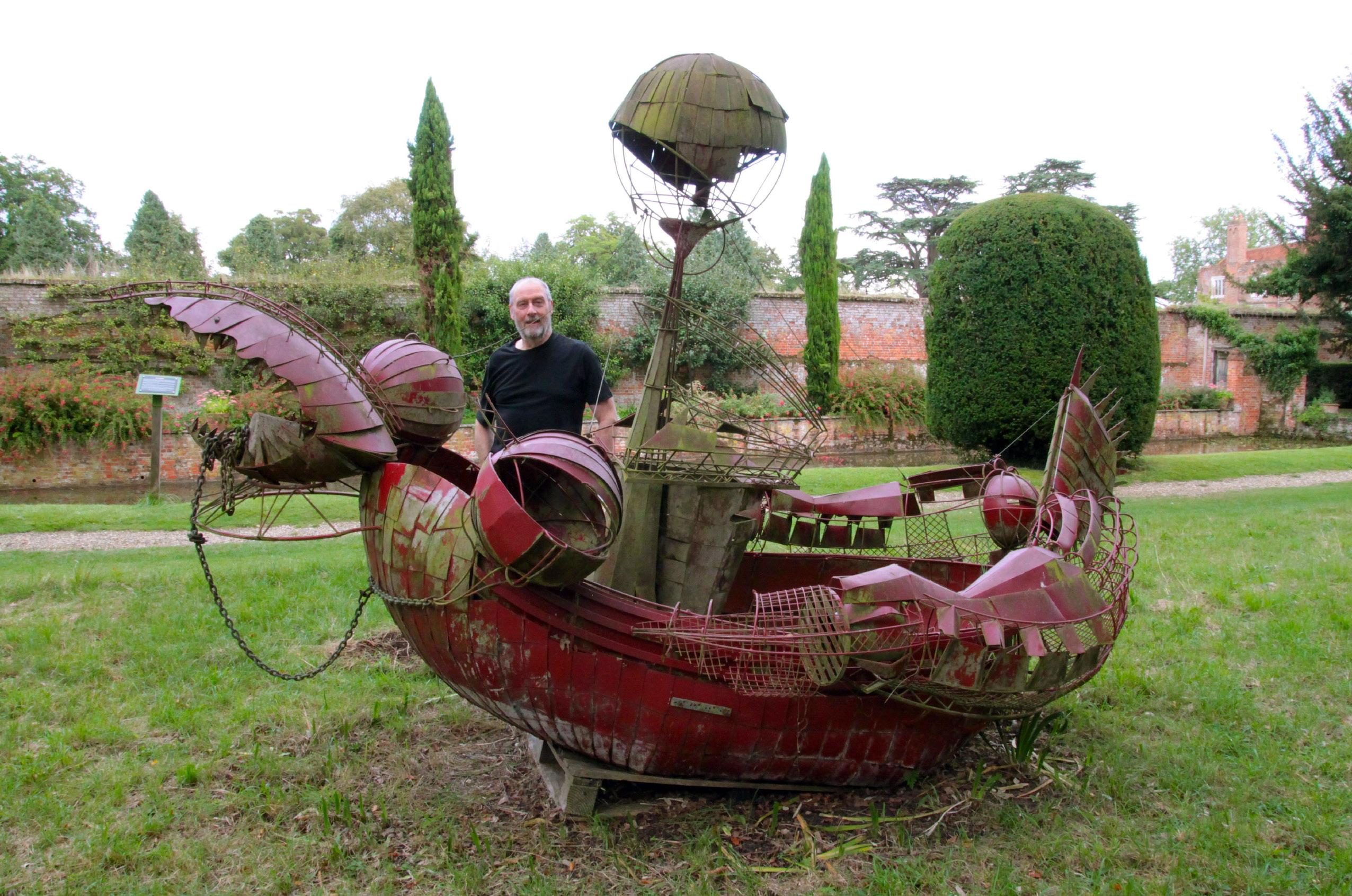 TERRY GILLIAM’S GALLEON FROM THE ADVENTURES OF BARON MUNCHAUSEN, KENTWELL
TERRY GILLIAM’S GALLEON FROM THE ADVENTURES OF BARON MUNCHAUSEN, KENTWELL
visitheritage.co.uk 64

LONG MELFORD TO LAVENHAM
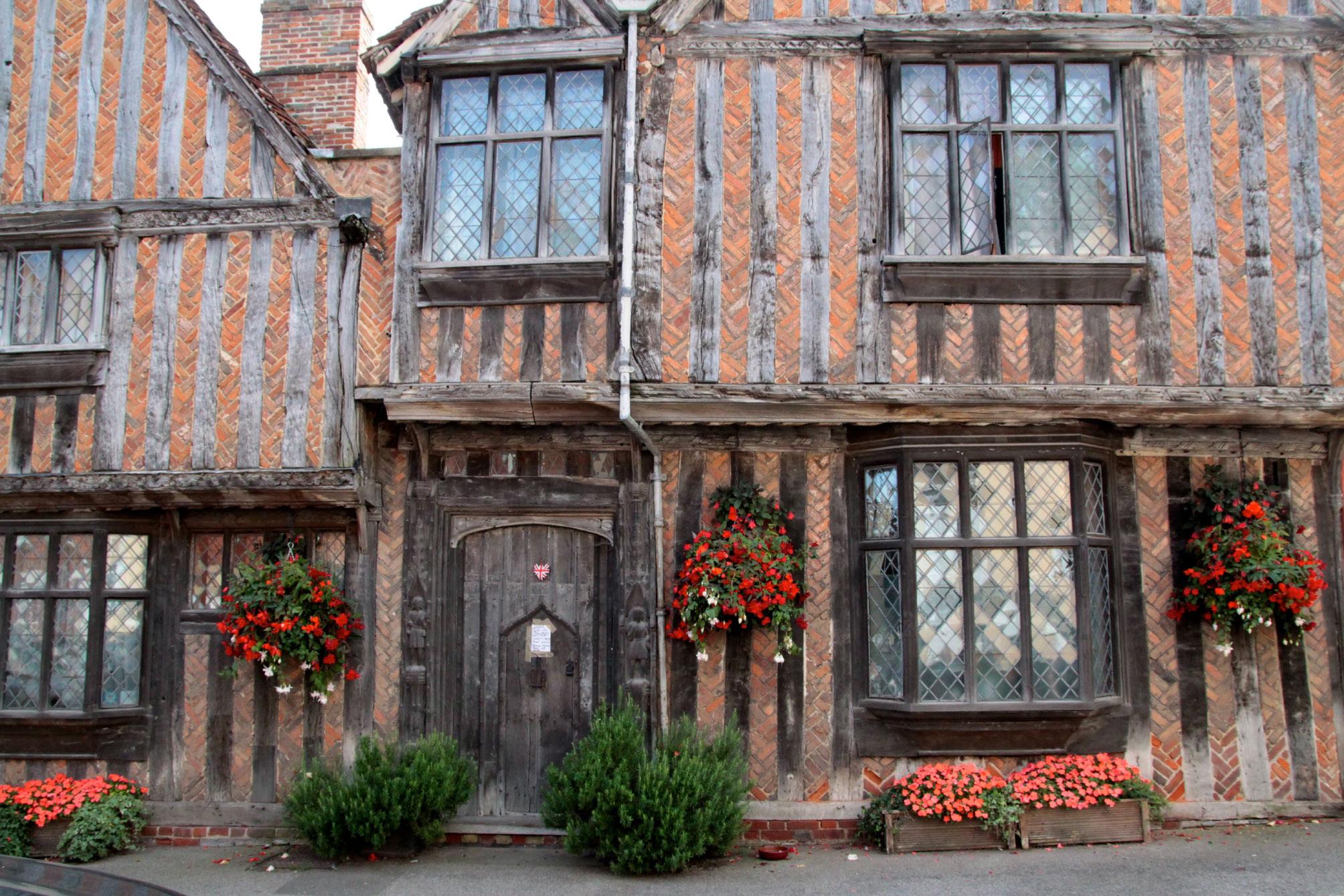
A glorious day greeted me as I ventured out from the Bull and retraced my steps passed Melford Hall and on to the Hare Drift , an ancient pathway. A short distance later, I crossed the A134 and on into a tranquil countryside of rolling hills, ploughed fields and dense woodland. The view was enhanced by early morning shadows being cast by the autumnal sunshine. Picking up the St Edmund Way, I followed the course of the old GER railway line, walking through Lineage Wood. Here I noticed pillboxes which were erected during the Second World War as part of the defence system against a land invasion.
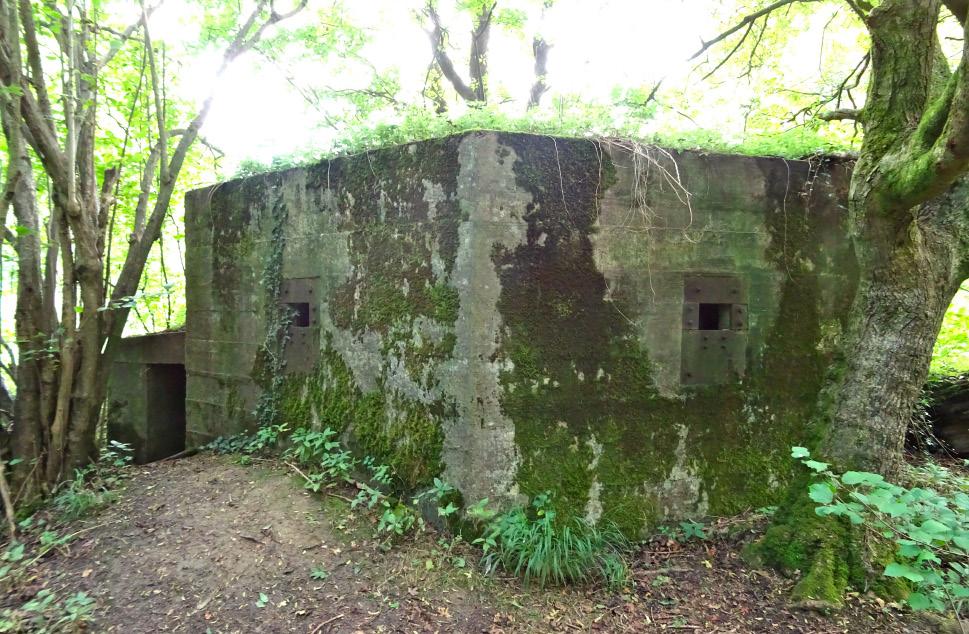
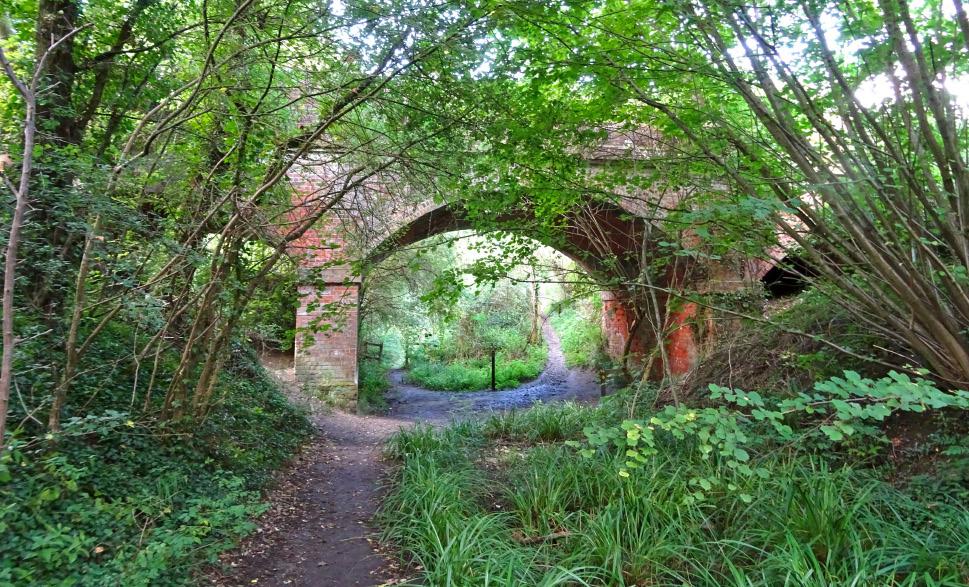
A little beyond the Bridge Street Road Bridge the mighty tower of Lavenham’s church came into view and shortly I arrived at the quintessentially ‘chocolate box’ English village full of gaily painted well preserved medieval houses. It is no wonder that Lavenham has been used many times as a film location. Stanley Kubrick used it in the 1975 historical romance Barry Lyndon and more recently it can be seen in Harry Potter and the Deathly Hallows as Godric’s Hollow. In Shilling Street, I passed the former home of the poet Jane Taylor, who wrote the lyrics for the nursery rhyme Twinkle, Twinkle Little Star, which is a fi tting epigraph for the village itself.
3
DAY
miles DE VERE HOUSE,
BRIDGE STREET ROAD BRIDGE SECOND WORLD WAR PILLBOX
5.0
LAVENHAM, HARRY POTTER’S BIRTHPLACE
65 visitheritage.co.uk
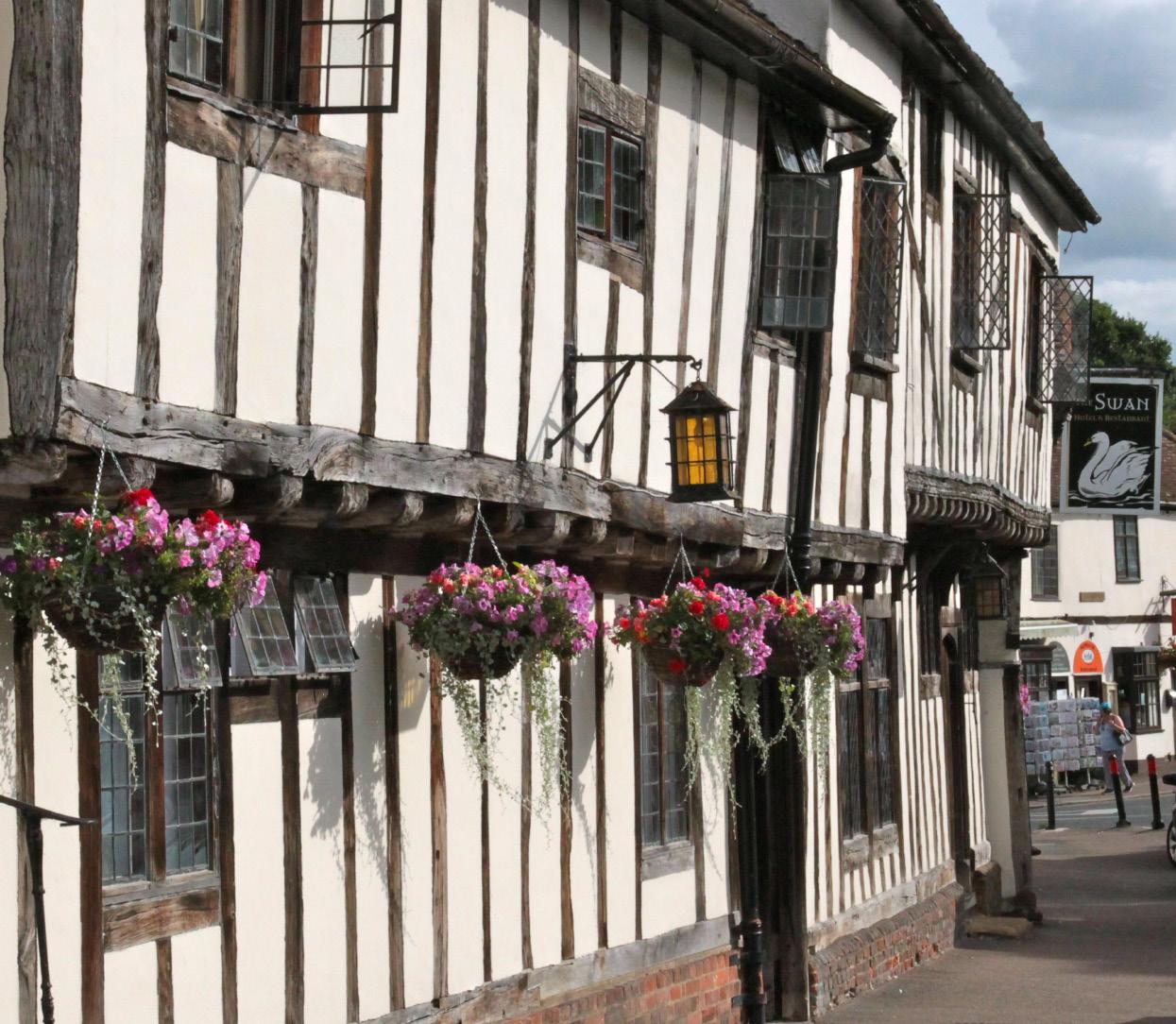
I was ready for lunch so ventured into The Swan Hotel, which proved to be an excellent choice. As well as an enticing menu there are war stories aplenty. The Airmen’s Bar contains memorabilia of the US airmen who were stationed locally during the Second World War and made this their evening haunt. The graffi ti and signatures scrawled on the wall from that time have been preserved. I spent some time talking to a charming barman who told the tale of the airman who intended to visit from America for a reunion but unfortunately died unexpectedly before the trip. His family decided to honour the event by sending his sofa in his stead. The leather covered seat, adorned with a painted Stars and Stripes flag, takes pride of place in the bar to this day.
A short walk from the Swan is the Market Place that John Lennon found so perfect for his lift-off. This picturesque square is home to many period properties. The dominating 16th century Lavenham Guildhall is a National Trust owned museum dedicated to the history of the village. There are stories and displays of domestic and rural life and demonstrations of yarn spinning can often be witnessed. Close by is Little Hall , run by the Suffolk Building Trust Ltd. Dating from the 14th century, this is not just a Little Hall but a ‘little gem’. Over the years the building has served many purposes. By the time of the 1851 Census it was being used as six tenements with twenty inhabitants. In 1924 it was purchased by the Gayer-Anderson brothers and restored back to one dwelling. The brothers, both fine artists, were avid antique collectors and many of their curios can be seen today. I lingered in the beautiful garden for a time, enjoying the peaceful tranquillity, before making my way up the hill to my final destination.
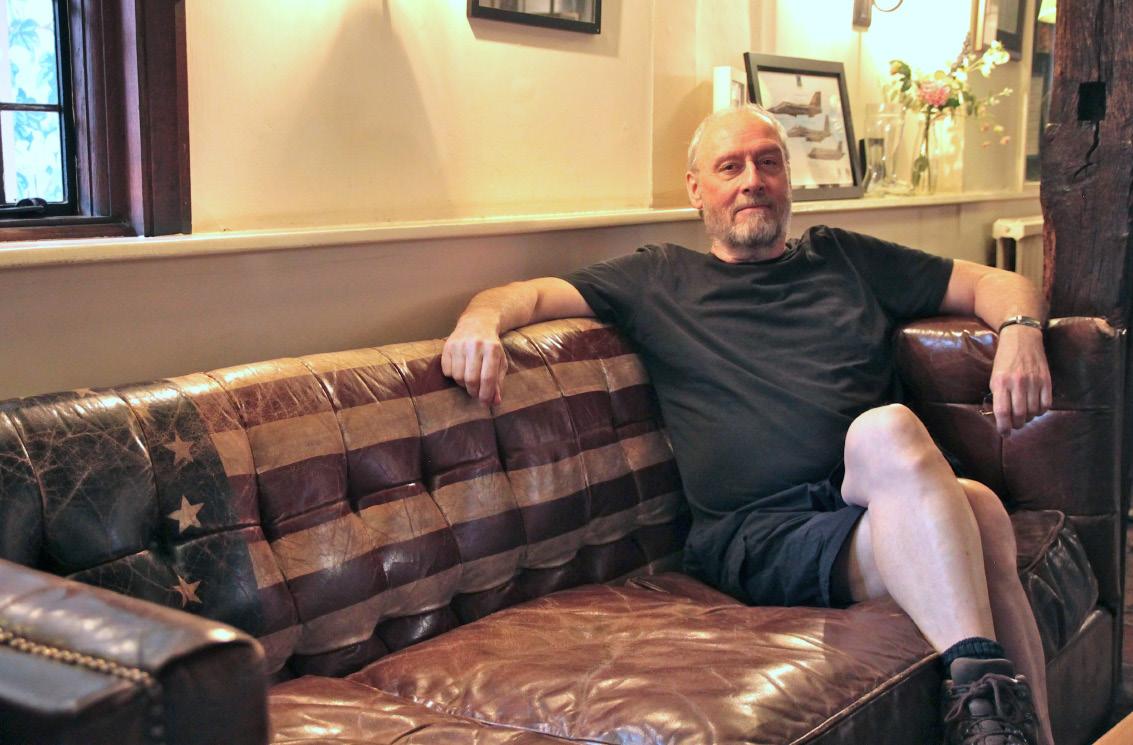
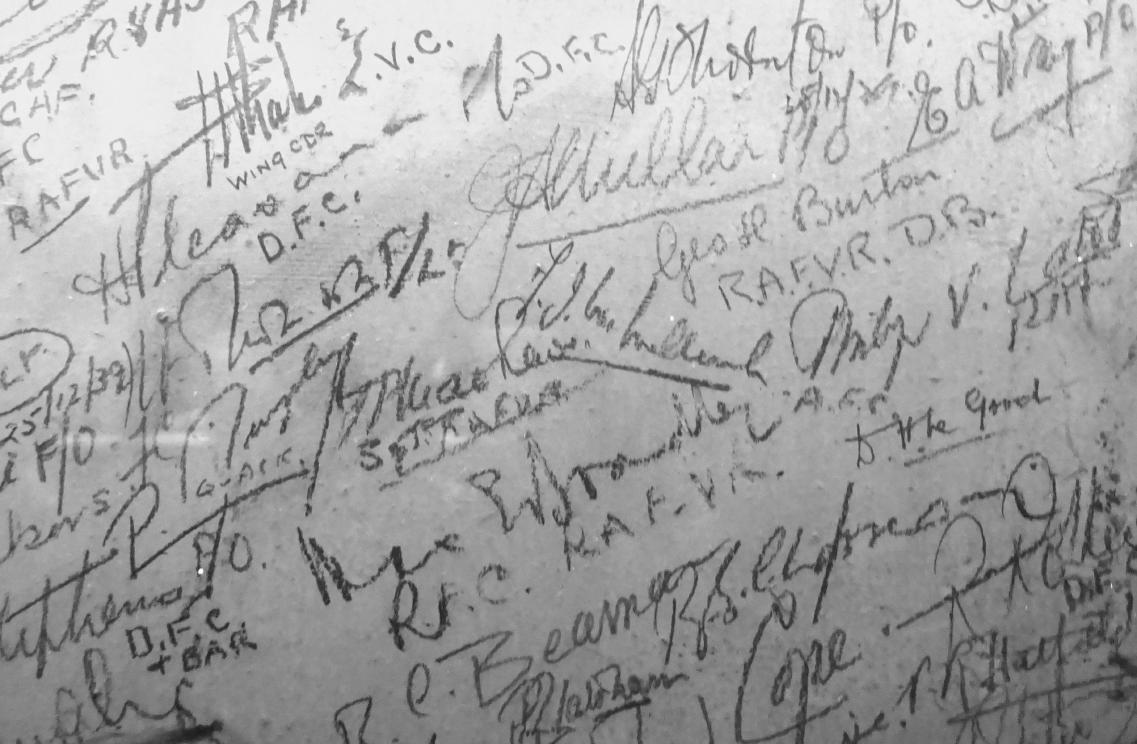
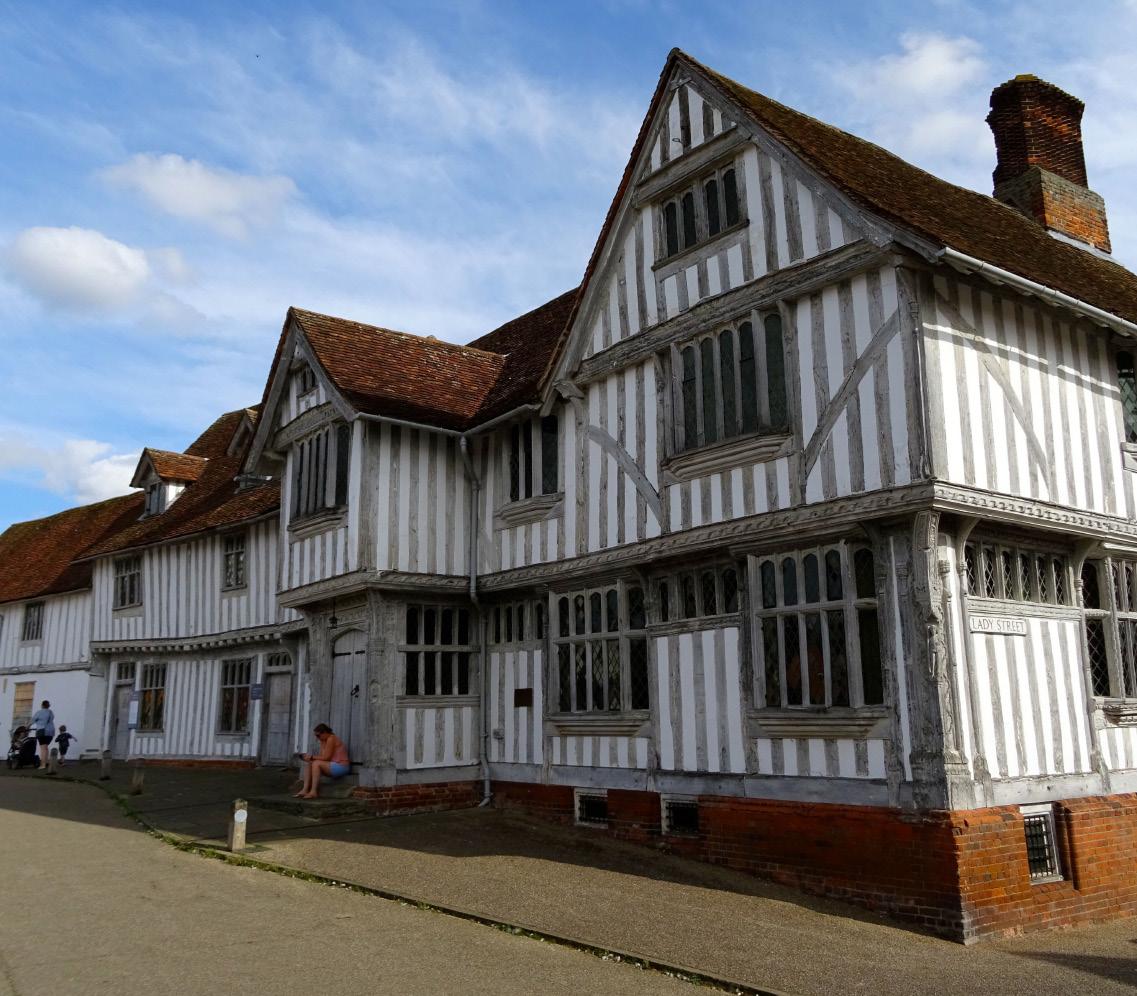

 THE SWAN, LAVENHAM GUILDHALL, LAVENHAM
THE SWAN, LAVENHAM GUILDHALL, LAVENHAM
66 visitheritage.co.uk
US AIRMEN’S SIGNATURES, SWAN INN, LAVENHAM AIRMAN’S SOFA, THE SWAN, LAVENHAM


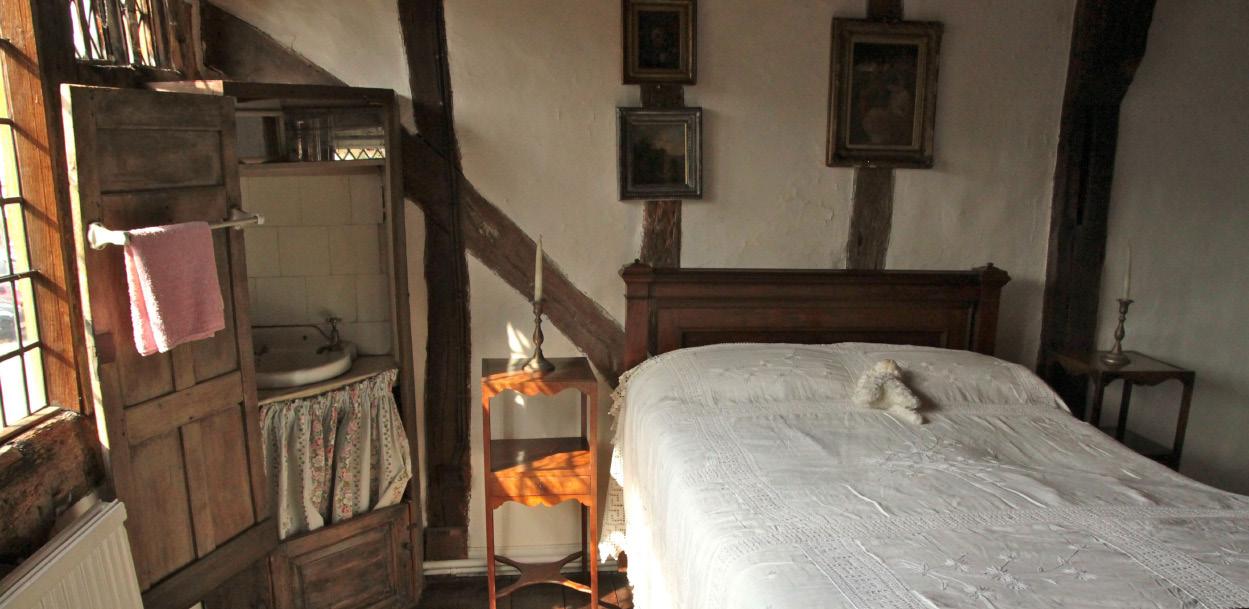
The tower of the church of St Peter and St Paul’s, Lavenham , which I had seen earlier across the fields, loomed up before me. Although less grand than Long Melford, it is still a masterpiece of Late Perpendicular Gothic architecture. Inside, the elaborate parclose screen is considered to be one of the finest in the country and there is a poignant brass commemorative plaque remembering the American airmen of the 487th Bomb Group who lost their lives between 1943 and 1945.
In the imagination, there is nowhere more typically English than the land that straddles the River Stour. The gentle and serene countryside peppered with quaint villages conjures up an England of a time long gone. The ghosts of Second World War heroes mingle with the remnants of ancient crafts blending into a historical patchwork.
Nothing has greatly changed and Thomas Gainsborough would recognise much of what we see today. To walk the paths of South West Suffolk is to wander through one of his paintings in this landscape of enduring beauty.
THE BEDROOM AT LITTLE HALL, LAVENHAM
GARDEN AT LITTLE HALL, LAVENHAM
67 visitheritage.co.uk
ST PETER & ST PAUL’S, LAVENHAM
And the Bride Wore...
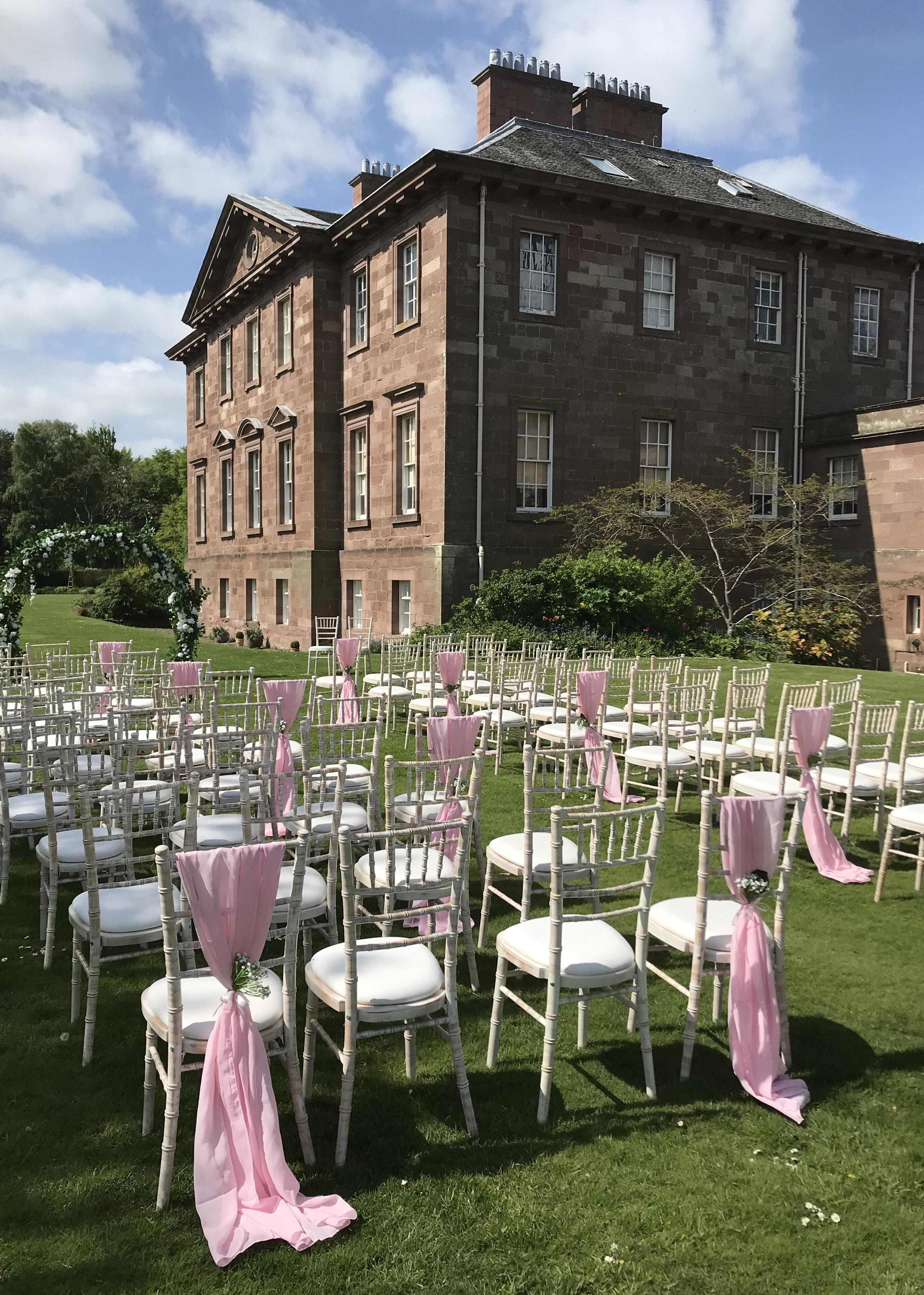
…white, says tradition, but Hudson’s has uncovered some interesting new trends in weddings booked in historic venues around the country.
THE LAWNS AT PAXTON HOUSE, SCOTTISH BORDERS
visitheritage.co.uk 68

The various magazines and websites that dominate the bridal market are very keen on marking new trends. Sometimes that is just publicity chasing but reports are coming in from heritage venues of some very distinct changes in behaviour since the end of lockdown in 2021.
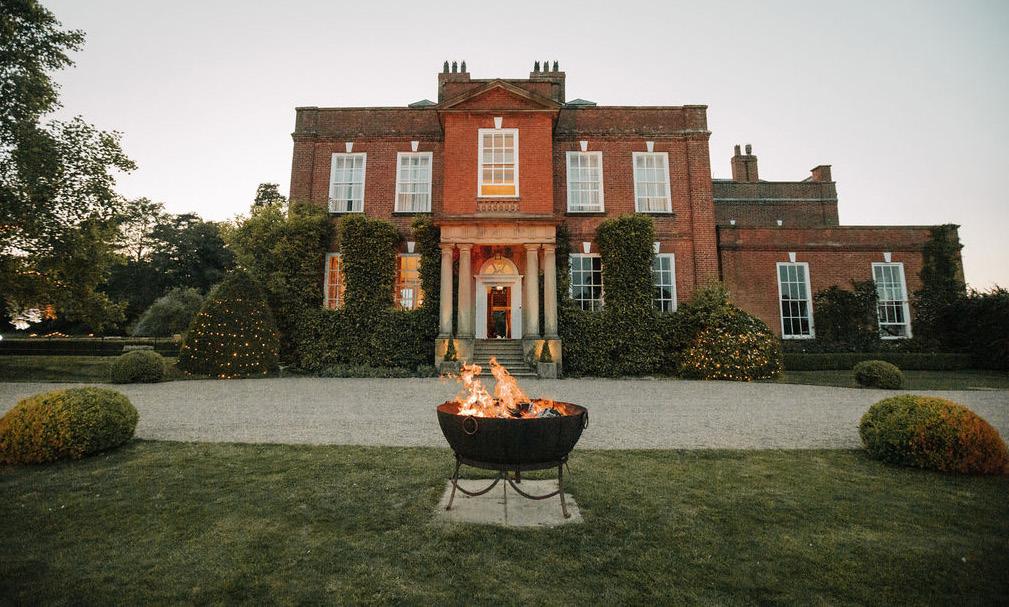



Many brides and grooms were forced to postpone weddings that were booked for 2020 or 2021, this led to a busy season for wedding venues in the following two years as everyone caught up. At Iscoyd Park , a glamorous and much admired venue in Shropshire, hosted by owner Philip Godsal and his wife Susie, bookings have been very healthy. Philip, who traces an unbroken line of seven Philip Godsals at Iscoyd back to 1843, is, however, spotting an odd trend. Bookings took a dip this year before rising again in 2025. He thinks that lockdown dealt a blow to relationships when people could not socialise and the knock-on effect is that, three years later, the couples that should have met in 2021 were not getting married.
69 visitheritage.co.uk

At Paxton House on the Scottish Borders, wedding organiser, Mel Buchan, has seen the biggest change in the number of microweddings or, as she calls them, #weeweddings. Paxton is well placed to respond. The most popular of the options for weddings at Paxton this year is not the grand surroundings of the elegant Palladian house and its regency library or even the marquee on the lawns, these days it is the tiny Victorian boathouse, a rustic venue that can only accommodate about 30 guests but which is historic, stylish and idiosyncratic as well as having lawns which run down to the River Tweed. It’s hard to beat for rural beauty.


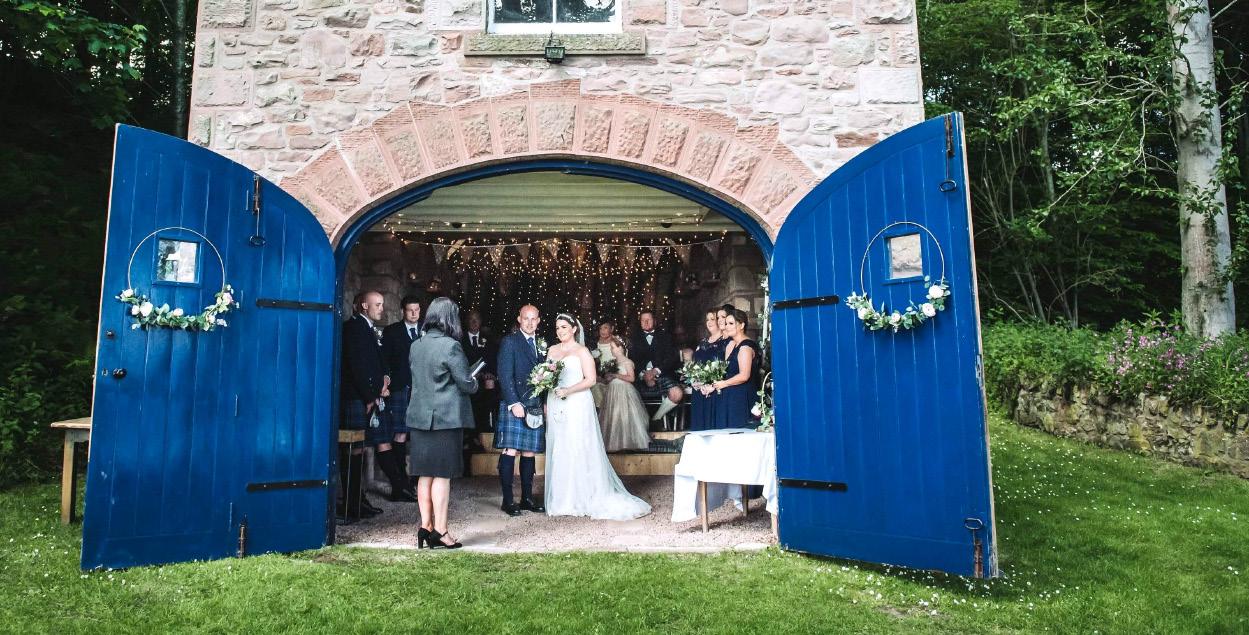
At Godwick Hall in Norfolk, owner James Garner has responded to the trend for microweddings in a more extreme way. He offers an Elopement Package, so that the happy couple can dispense with all the fol-da-rol that goes with a traditional wedding and keep it to just to two of them. This option is popular with couples whose wedding plans were spoiled by Covid 19 and includes overnight in the Godwick shepherd’s hut for romance in isolation. The micro trend is of course partly driven by the rising cost of living so it is no surprise to discover that Godwick’s Elopement Package is only available mid-week and doesn’t detract from Godwick’s other venues in their magnificent (and huge) medieval barn or the smaller 30 person dining or drawing room in Godwick Hall. James feels that where couples are trying to save money, they are most likely to cut back on numbers rather than the style of the wedding itself. Weekend weddings which start with supper on Friday and continue to lunch on Sunday with the wedding party staying together in the main house - which sleeps twelve with satellite guests in the three shepherd’s huts in the grounds - are definitely on trend.
70 visitheritage.co.uk

Another way couples are dealing with the cost of living crisis is reflected in the continuing search for personalisation. Idiosyncracy is all the rage. Everyone wants a wedding which is exclusively theirs. Venues like the Shuttleworth Collection in Bedfordshire where couples can chose to tie the knot in an aircraft hanger, one of fi ve rooms in a Jacobethan mansion (with tower), a Regency garden, tipis or a marquee make it easy to create a stand out theme. Unique to the Shuttleworth is the fernery with its Pulhamite grotto. This is as near as you can get to outdoors while still retaining a roof and its quality of inimitable style is irresistible to many.
However, entirely outdoors is increasingly where couples want to get married. Perhaps it is the impact of a couple of good summers in a row, but at Powderham Castle in Devon, they are old hands at alfresco weddings. You’d think the stunning mock medieval dining hall or regency ballroom would be favourites but Powderham have been offering weddings in the woods in The American Garden for some time. Named for the collection of North American tree species planted here in the early 1800s, the garden is centred around a gothic tea house; the perfect focus for any ceremony. The restoration of the Belvedere, built in the 1770s, combines the romance of a gothic tower with space for a marquee, and definitely keeps you in touch with the great outdoors with far reaching views over the estuary of the Exe.
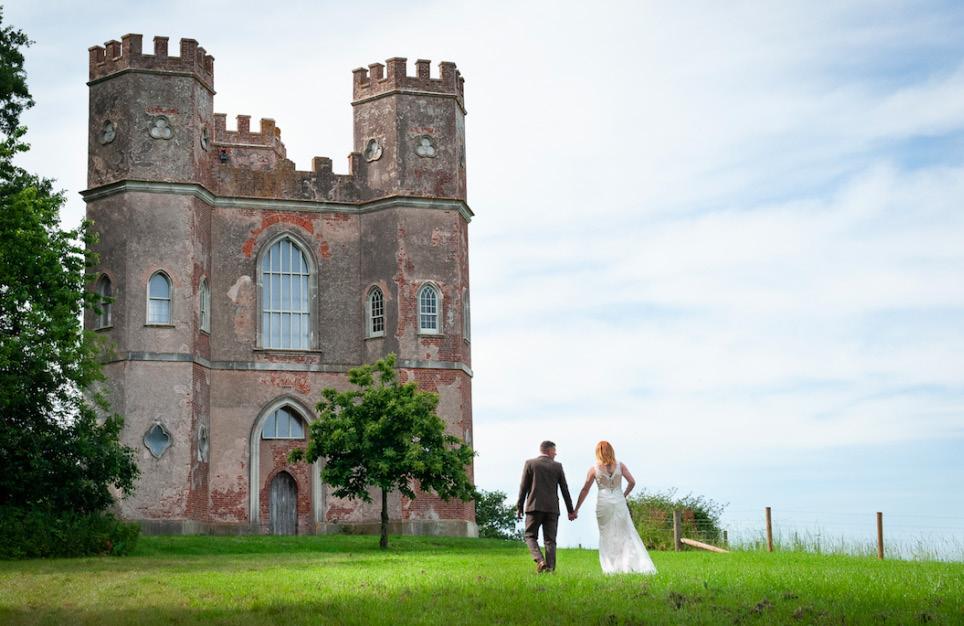

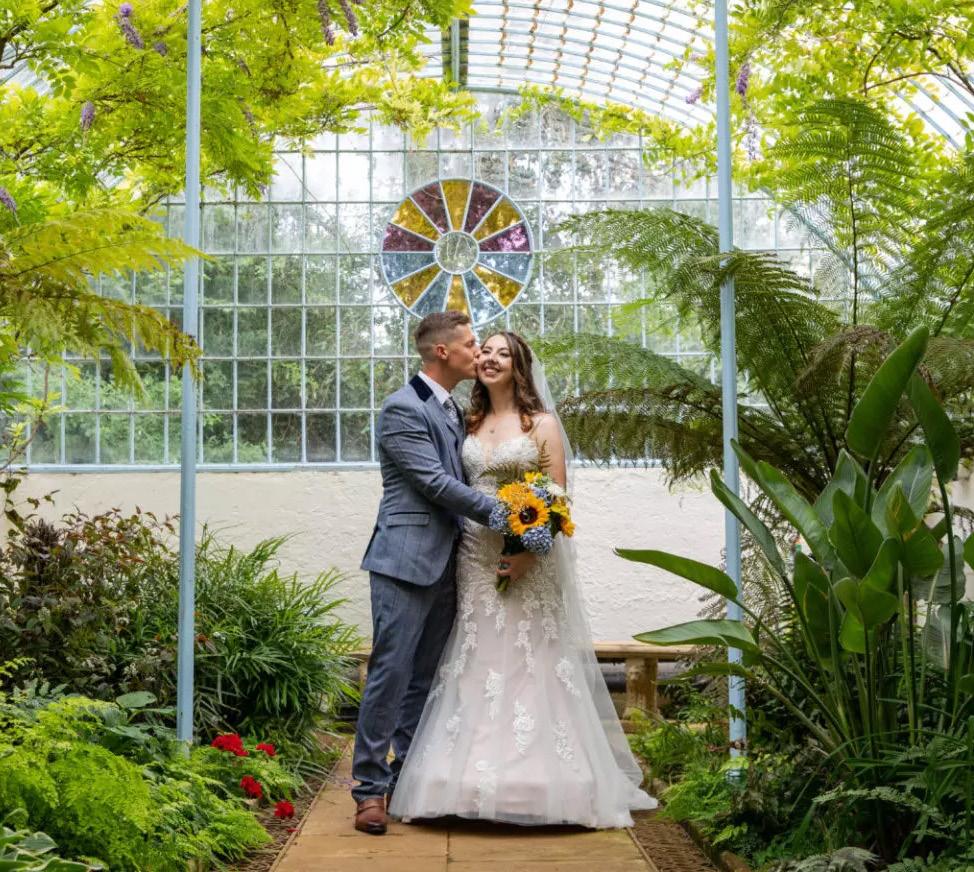
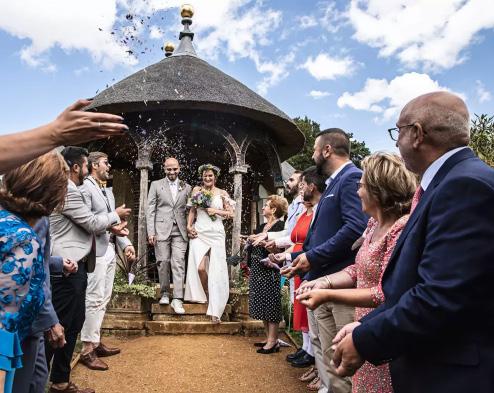
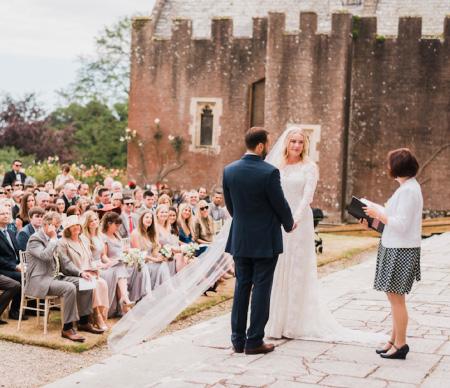
With alfresco comes a trend for a celebrant rather than traditional church vows at the core of the ceremony. As society becomes more secular, young couples in particular, like to tailor their own wedding ceremony as well. At Paxton House , the Celtic oathing stone tradition is seeing a revival as couples choose a stone to cast together into the River Tweed. The combination of stone and water is traditionally viewed North of the Border as strengthening the bond and it’s certainly different. Catering too, is much more varied. Formal meals are out and informal dining - sharing platters, pizza vans, ice cream trucks - are in. Dogs are welcome guests and themed weddings from steampunk to Disney increasingly the norm.
And white dresses? We won’t be seeing coloured wedding gowns any time soon. None of the heritage wedding venues Hudson’s spoke to had any doubt that white is still the go-to colour for brides.
71 visitheritage.co.uk
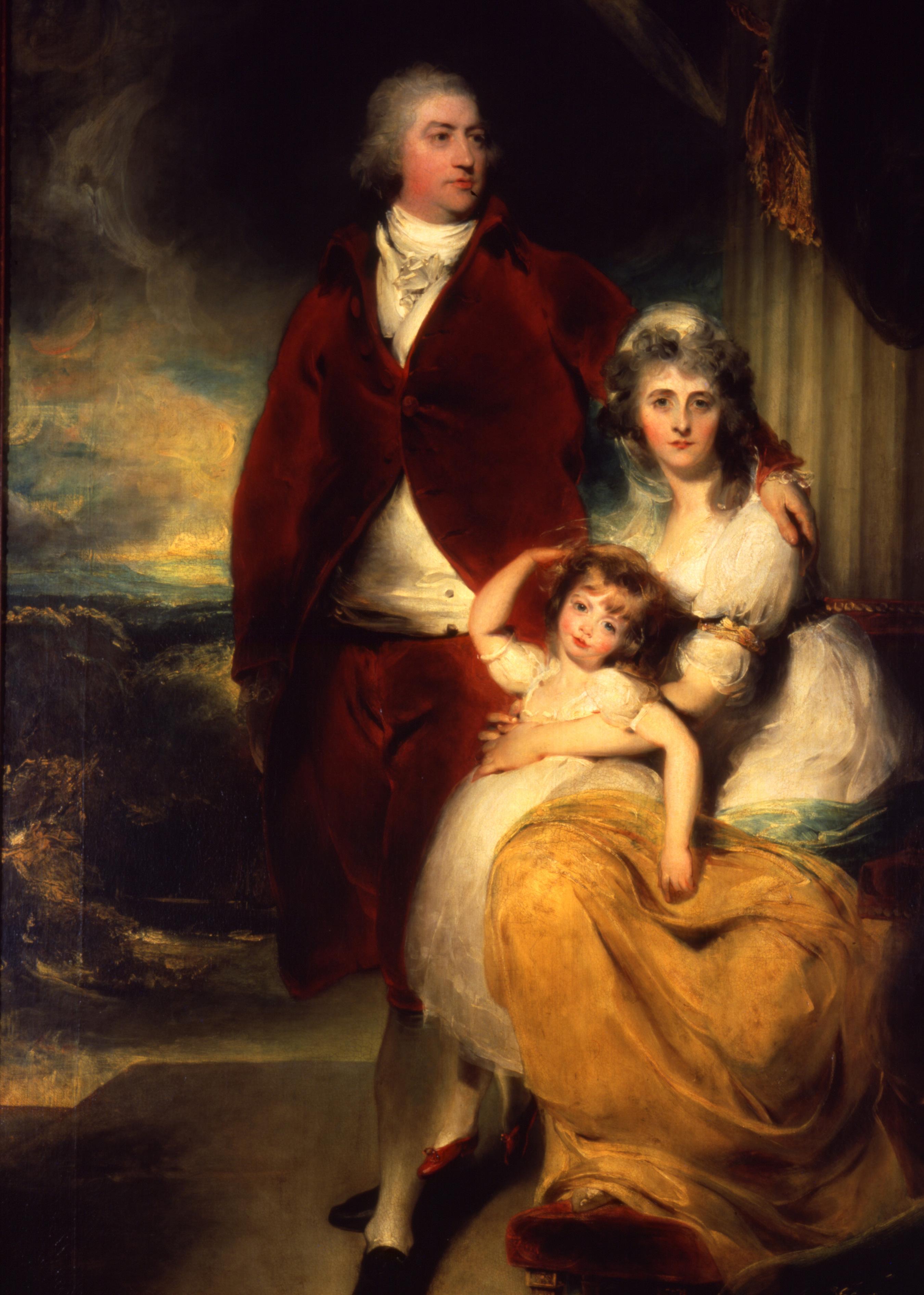
IS LOVE enough? THE 1ST MARQUESS AND MARCHIONESS OF EXETER WITH SOPHIA BY SIR THOMAS LAWRENCE © THE BURGHLEY HOUSE PRESERVATION TRUST visitheritage.co.uk 72


Amongst the faces of the portraits of country houses in Britain are some that hide romantic stories that can seem remarkably modern. Hudson’s took a look at a few places where it looks as if love overcame all society’s prejudices.
Aristocratic marriages in the past were not always arranged with someone suitable. Sometimes love got in the way. Examples of men and women marrying outside the strict class system that operated before the 21st century are not numerous, but they are provide intriguing stories. We all love a fairy tale where the Prince marries one of us and lives happily ever after.
There are few more convoluted love lives than that of Henry Cecil, 1st Marquess of Exeter of Burghley House near Stamford. In 1789, Cecil’s wife Emma confessed to an affair and ran away with the vicar. Henry, plain Mr Cecil MP at this point, was depressed and in debt, so decided to save money by decamping to the country. He moved to a village in Shropshire where he posed as John Jones, a simple landscape painter, and lodged with a farmer called Hoggins. Within a year he had fallen in love with the farmer’s beautiful daughter and, in 1790, they were married even though Sarah Hoggins was only 16 and the marriage was bigamous. Cecil obtained a divorce by Act of Parliament in 1791 and the couple married again, just in time before a daughter, Sophia, was born. They seem to have been happy in an unpretentious way until 1793, when Henry’s uncle died and he immediately became
Earl of Exeter with vast estates and a family home in the Tudor prodigy house at Burghley. Sarah, known to posterity as the Cottage Countess, quickly gave birth to two sons and died shortly after the birth of the second, aged only 23. The portrait of the couple with Sophia, painted by Sir Thomas Lawrence presents a united family group but reportedly Sarah never felt at ease in her new role. Her unhappiness was captured in a popular poem by Alfred, Lord Tennyson, who evidently found their story as fascinating as we do today.
“…Oh, that he Were once more that landscape-painter Which did win my heart from me!”
Although Lord Burghley married again, the Cottage Countess’ eldest son, Brownlow, duly inherited after his father’s death.
BURGHLEY HOUSE, LINCOLNSHIRE, TOO GRAND FOR A FARMER’S DAUGHTER? © THE BURGHLEY HOUSE PRESERVATION TRUST
73 visitheritage.co.uk


Another, probably even more famous example of a happy union that sumounted the barriers of class comes from Uppark, the fine Georgian house in Sussex, now in the care of the National Trust. Uppark , home to Sir Harry Fetherstonhaugh, was the setting for some of the wildest society parties of the 18th century – at one, Lord Nelson’s future mistress, Emma Hamilton, was famously rumoured to have danced naked on the table. Towards the end of Sir Harry’s rumbustious life, he apparently wanted to settle down and, charmed by her singing, unexpectedly chose the dairymaid, 18 year old Mary Ann Bullock. It is not hard to imagine the proposal scene in the delightful Georgian dairy building which survives, little changed, at Uppark. Sir Harry, now 71, did not press Mary Ann for an answer but suggested that if she liked the proposal, she might arrange for a slice to be cut from the leg of mutton that was to be served to him at supper. Their marriage lasted twenty apparently happy years until Sir Harry died in 1846 at the age of 90 leaving the estates to his wife. Mary Ann lived on at Uppark for nearly 30 years with her sister Frances.


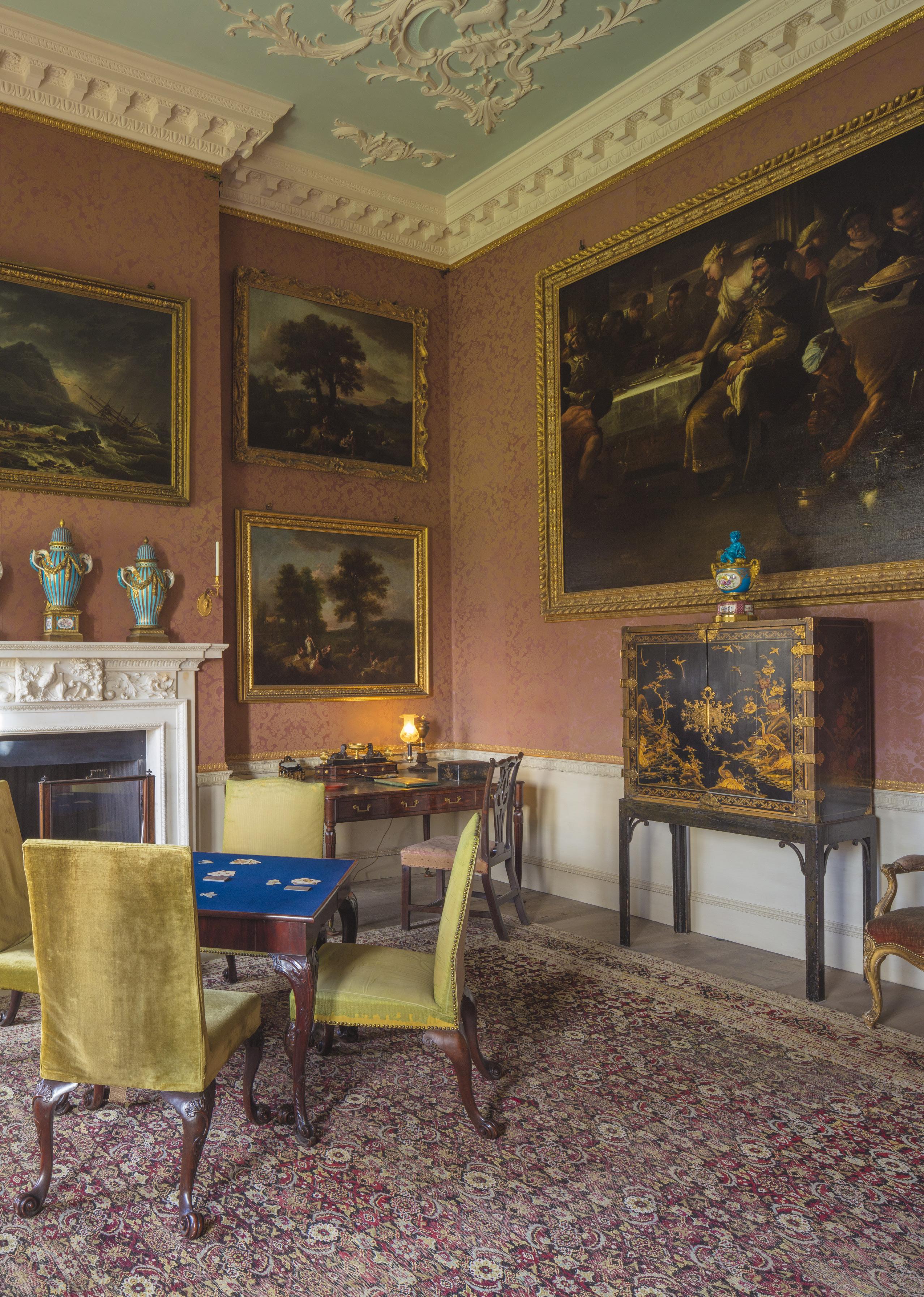 LEFT: SIR HARRY FETHERSTONHAUGH BY POMPEO BATONI ©NATIONAL TRUST IMAGES/PRUDENCE CUMING, WWW.NATIONALTRUST.ORG.UK / RIGHT: MARY ANN FETHERSTONHAUGH FROM A PHOTOGRAPH OF 1874 BY RNC USDELL © NATIONAL TRUST / ANDREW FETHERSTON, WWW.NATIONALTRUST.ORG.UK
LEFT: SIR HARRY FETHERSTONHAUGH BY POMPEO BATONI ©NATIONAL TRUST IMAGES/PRUDENCE CUMING, WWW.NATIONALTRUST.ORG.UK / RIGHT: MARY ANN FETHERSTONHAUGH FROM A PHOTOGRAPH OF 1874 BY RNC USDELL © NATIONAL TRUST / ANDREW FETHERSTON, WWW.NATIONALTRUST.ORG.UK
74 visitheritage.co.uk
THE DAIRY AT UPPARK © NATIONAL TRUST IMAGES/ ANDREW BUTLER, WWW.NATIONALTRUST.ORG.UK


THE LITTLE DRAWING ROOM AT UPPARK, GRAND SURROUNDINGS FOR A FORMER DAIRYMAID ©NATIONAL TRUST IMAGES/JAMES DOBSON, WWW.NATIONALTRUST.ORG.UK visitheritage.co.uk 75
These two (relatively) happy marriages may be exceptions, sometimes inequality of status merely lays up problems for the next generation. Frederick, 5th Earl of Berkeley of Berkeley Castle in Gloucestershire was, like Fetherstonhaugh, something of a libertine in his youth. At the age of 40, his eye fell upon local beauty Mary Cole, the youngest daughter of an innkeeper in Gloucester. Facts are few, but he seems to have stalked her fairly doggedly even after her father died and she removed to Kent. “Wherever I was, Lord Berkeley found me out or followed me” she later stated. Mary seems to have bravely held out for marriage and some sort of ceremony was held in 1785, the year before a son, William, was born. Mary was installed at Berkeley Castle as its mistress where she went on to have fi ve more children but her status remained ambiguous and she was not called Countess of Berkeley. The couple were officially married in 1796 but continued to claim that their eldest son, William, was legitimate, producing a page from the 1785 parish register to prove it. When the House of Lords found the page to be a forgery, the claim was dismissed. The judgement turned the oldest child, William, against his brother, Moreton, born in 1797, who was regarded legally as the 6th Earl of Berkeley. William inherited Berkeley Castle but had to earn his own titles.
At Hatfield Park in Hertfordshire, the reaction of the second generation to their father’s inappropriate liaison was more extreme. James, 6th Earl of Salisbury earned himself the title of “the wicked earl” as a result of his irregular life. Married to Elizabeth Keet in 1745, he stayed just long enough to father an heir before moving in with his former mistress, Mary Grave, at his house at Quickswood, near Baldock where she was employed as a housekeeper. By the time of his marriage, they already

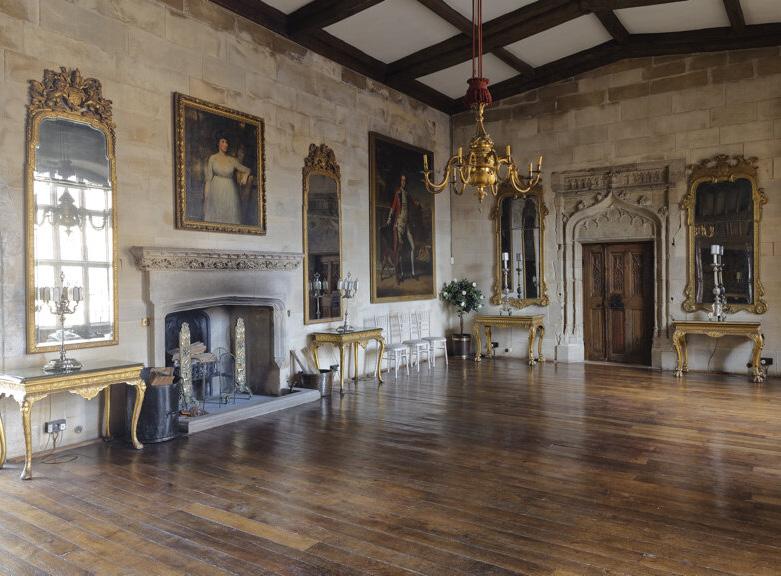
had two children together and she went on to have fi ve more. Their correspondence is preserved in the archive at Hatfield today. They lived together until the Earl’s death in 1780, while he became increasingly reclusive. Prudently, she persuaded the Earl to buy a house in her name so that she was well provided for after his death because his legitimate son, the 7th Earl, angrily disputed the generous bequests left to their children and demolished the Elizabethan house at Quickswood.
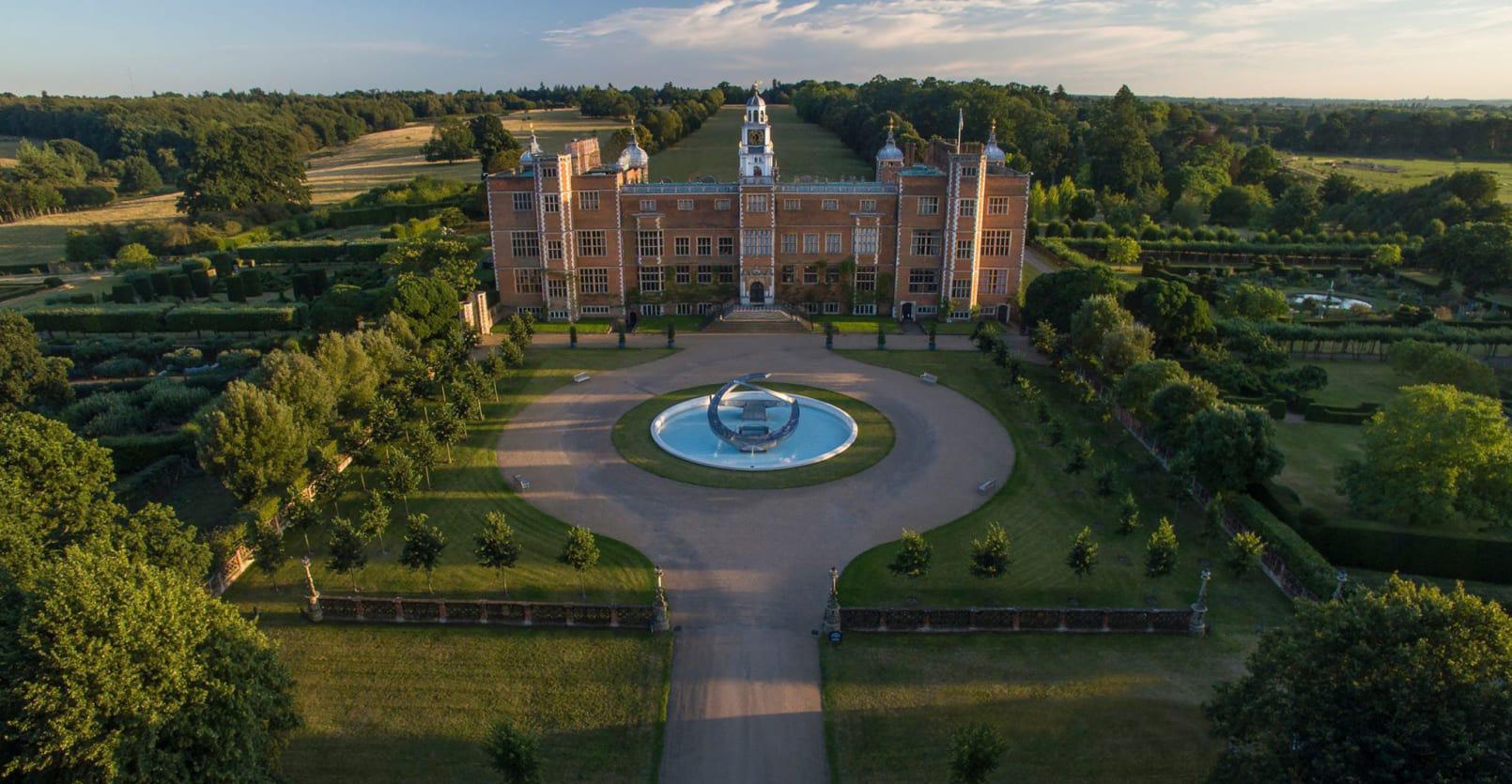
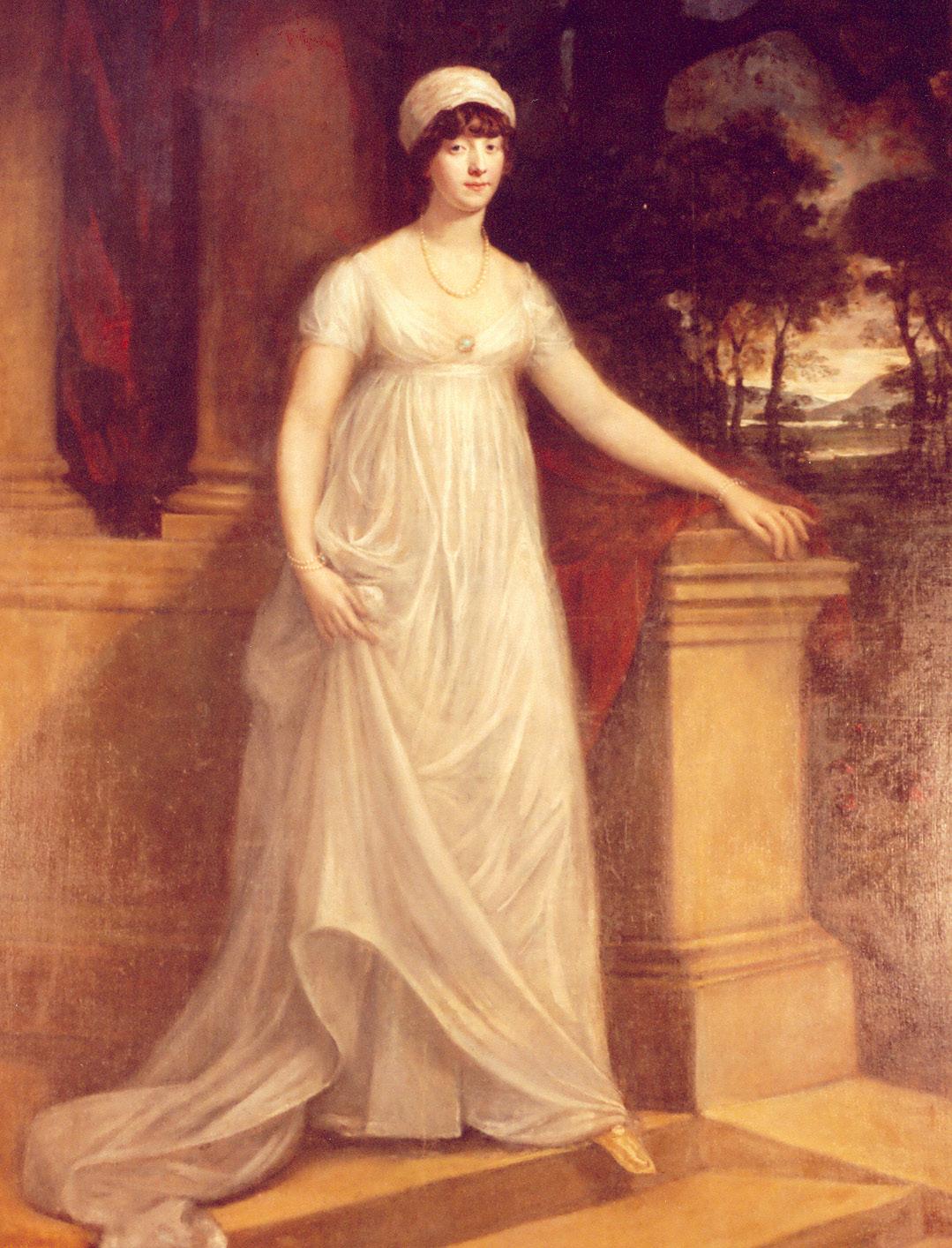
76 visitheritage.co.uk
THE SPLENDOURS OF HATFIELD PARK WERE NOT FOR THE 6TH EARL OF SALISBURY WHO PREFERRED HIS HOUSEKEEPER AT QUICKSWOOD.
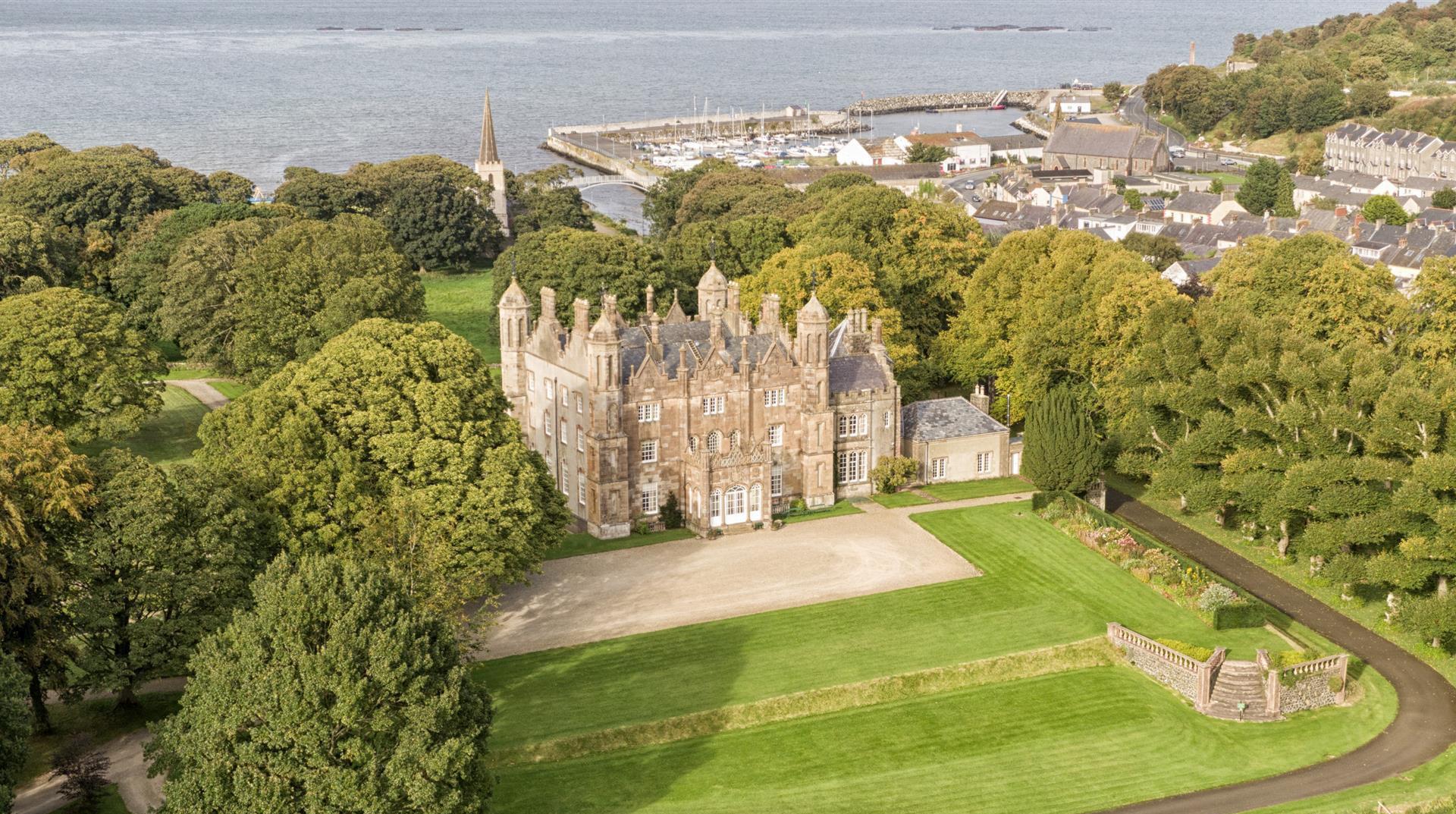

It wasn’t always the men. More rarely, aristocratic ladies took a fancy to men of lower social status. In 1791, Anne Catherine, daughter of Randal McDonnell, 1st Earl of Antrim became Countess of Antrim in her own right and inherited Glenarm Castle in Northern Ireland. She was married to Sir Henry Vane-Tempest and lived at Wynyard Park in Yorkshire. By 1817, Sir Henry had died and Anne Catherine married again, within a month of meeting her new love. He was Edmund Phelps, private secretary to another peer, son of a milliner and a Plymouth auctioneer. Despite the gap in their fortunes, the marriage seems to have been happy. Edmund took his wife’s name and persuaded her move back to Glenarm Castle where they updated and restored the house together and established the Walled Garden to give themselves a measure of self-sufficiency. Edmund outlived his wife by nearly twenty years, dying in Rome in 1852.
Marrying to your social advantage is a time honoured way of improving your fortunes and in most of these stories, wealth seems to have brought a degree of happiness. Today, realising that inequality of position reflects inequality of power, we may examine these relationships with a more jaundiced eye. Their existence, however, all dating from around the end of the eighteenth century, reveals much about changing attitudes to love and marriage in the Georgian era.
Please note that NT Uppark is closed for restoration and will reopen again in 2025
ANNE CATHERINE, COUNTESS OF ANTRIM WHOSE SECOND MARRIAGE WAS FOR LOVE
77 visitheritage.co.uk
GLENARM CASTLE, NORTHERN IRELAND
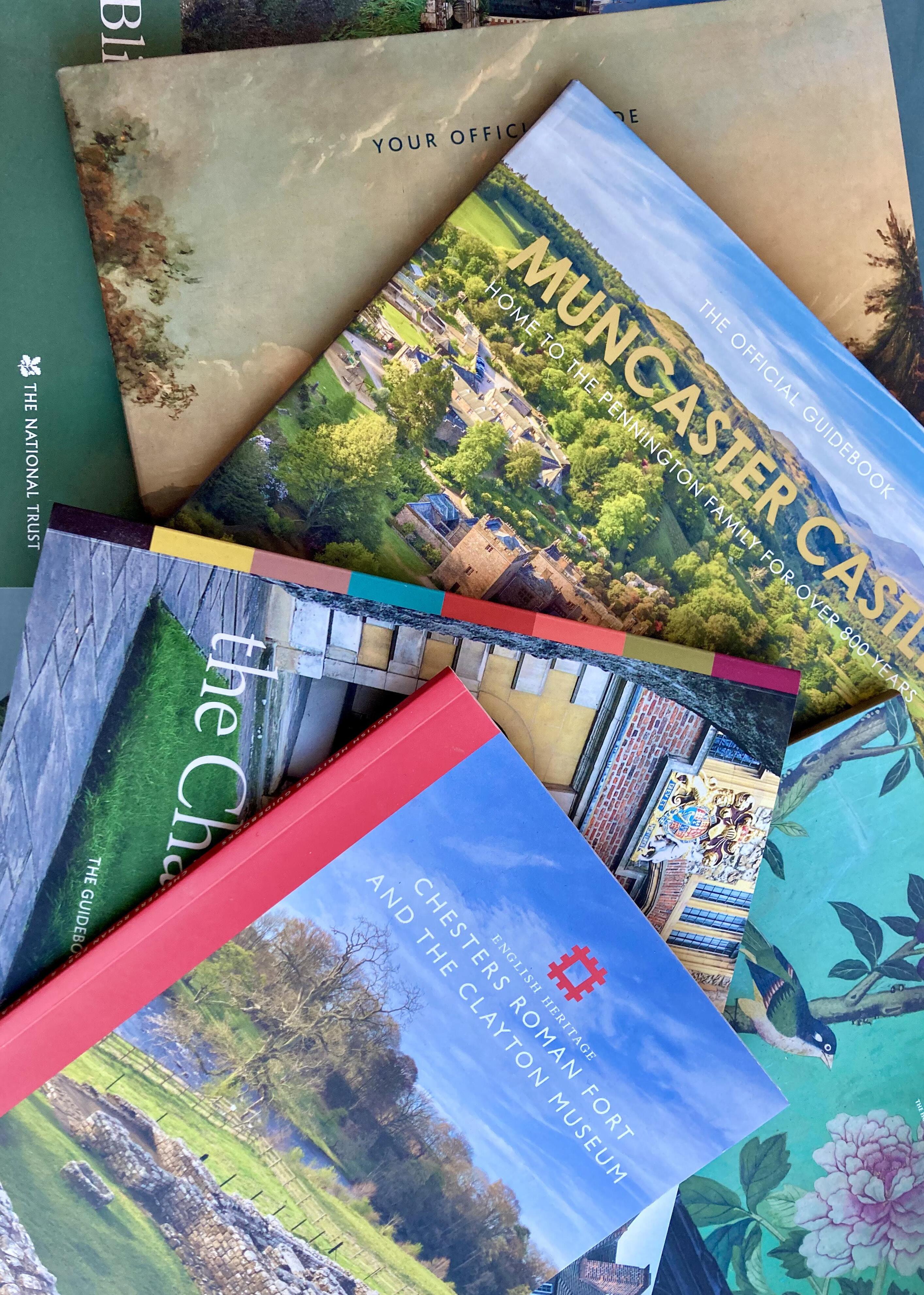
A RANGE OF MODERN GUIDEBOOKS - BRANDED, HIGHLY COLOURED AND INFORMATIVE
ABOUT IT! Read visitheritage.co.uk 78
ALL
Picking up a guidebook was once an integral part of any visit to a heritage site. Have digital options from apps to audio tours put paid to the humble guidebook? Hudson’s decided to find out.

What has happened to guidebooks? A generation ago, you couldn’t expect many extras from a visit to a historic place beyond a cup of tea and a copy of the trusty guidebook. Now, every heritage attraction relies as much on the money you spend in the shop, the garden centre and the cafés and restaurants as on your entry ticket. If it’s information you are after, it is everywhere. Many historic houses and museums have audio tours, others have apps which tell you everything you want to know and maybe even throw in a touch of augmented reality. The majority have websites. Is there still a place for an old fashioned traditional printed guidebook?
For a start, we need to remember that guidebooks have been around a long time and have always changed with the times. The very first site specific guide was probably Reges, reginae, nobiles et alii in ecclesia collegiata B. Petri Westmonasterii sepulti, a guide in Latin to the inscriptions and monuments of Westminster Abbey, ,originally published anonymously, by the antiquarian, William Camden, in 1600. It could be purchased from the verger and it was popular enough to run to three editions in six years.

The book often regarded as the first country house guide was Benton Seeley’s A Description of the Gardens of the Lord Viscount Cobham at Stow published in 1744. The gardens at Stowe in Buckinghamshire quickly became a major tourist attraction in their own right, eclipsing even the great house which wasn’t included
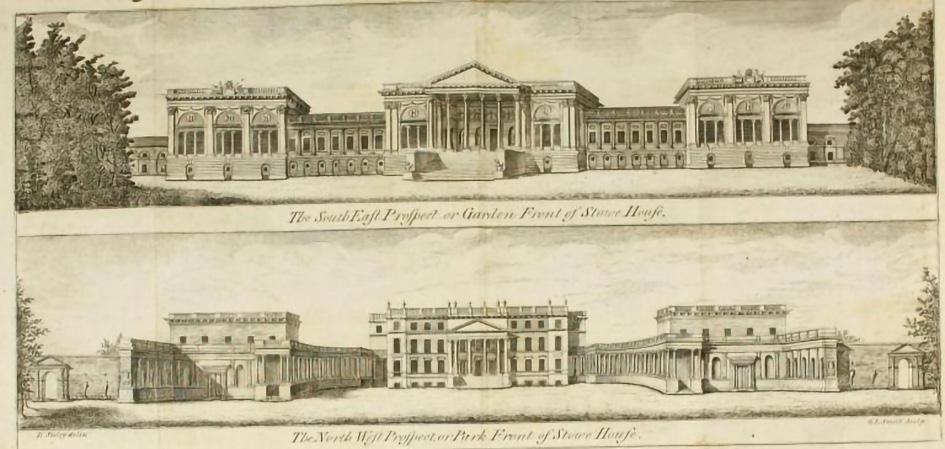
in Seeley’s guide until the 1759 edition. The guidebook included not just a description of the various walks and aspects of the gardens, but engravings of the buildings and eyecatchers, sometimes on impressive fold out pages.
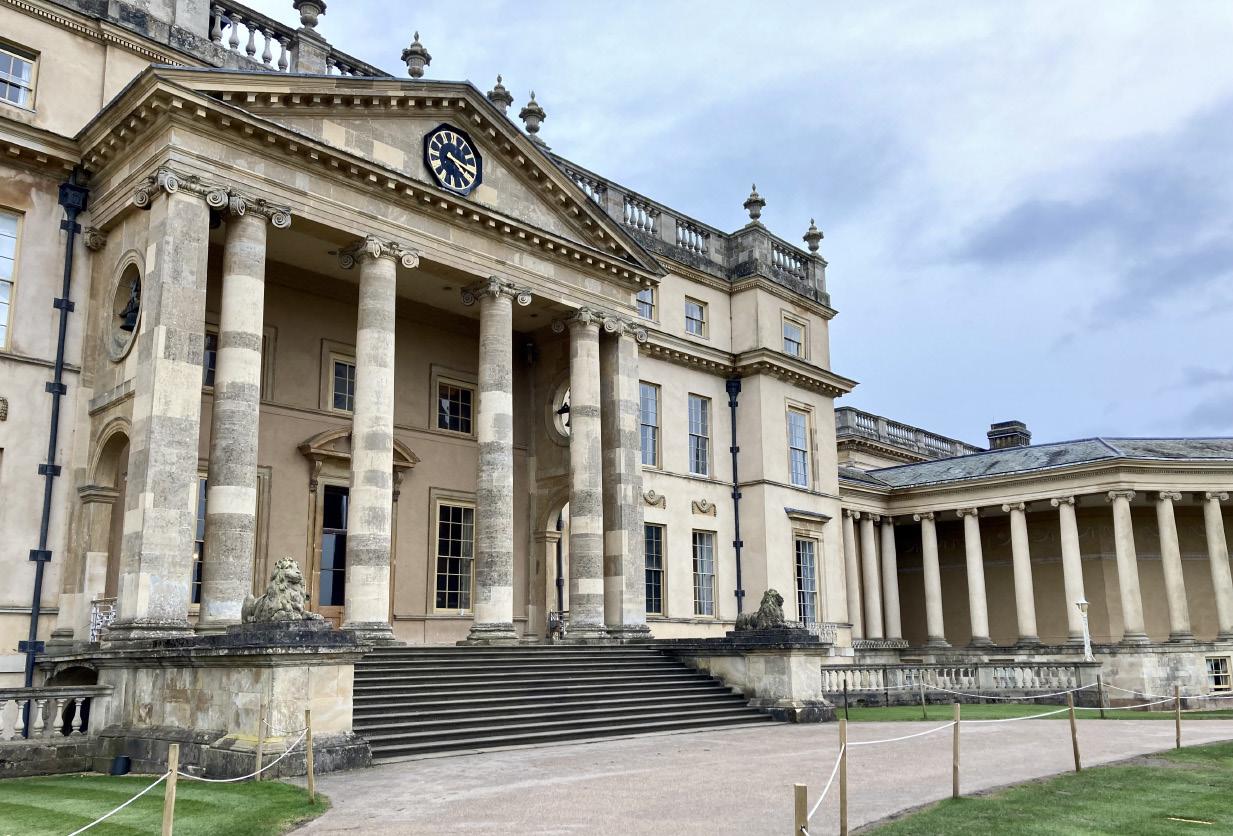
THE ANTIQUARIAN AND PIONEER GUIDEBOOK WRITER WILLIAM CAMDEN © BRITISH LIBRARY ILLUSTRATION FROM BENTON SEELEY’S SERIES OF 18TH CENTURY GUIDES TO STOWE HOUSE AND GARDENS STOWE HOUSE, LORD COBHAM’S HOUSE MADE IT INTO THE GUIDEBOOK AFTER 15 YEARS 79 visitheritage.co.uk
The book was a publishing phenomenon, running through seventeen editions between 1744 and 1797 and on its own did much to promote the influential gardening ideas expressed by Lord Cobham at Stowe. Within twenty years, it had inspired the publication of guidebooks on the same lines at other popular aristocratic mansions on the Georgian tourist circuit, including Hagley Hall and Blenheim Palace. Each included architectural drawings and was designed to point out salient features and explain the history to the educated tourist.
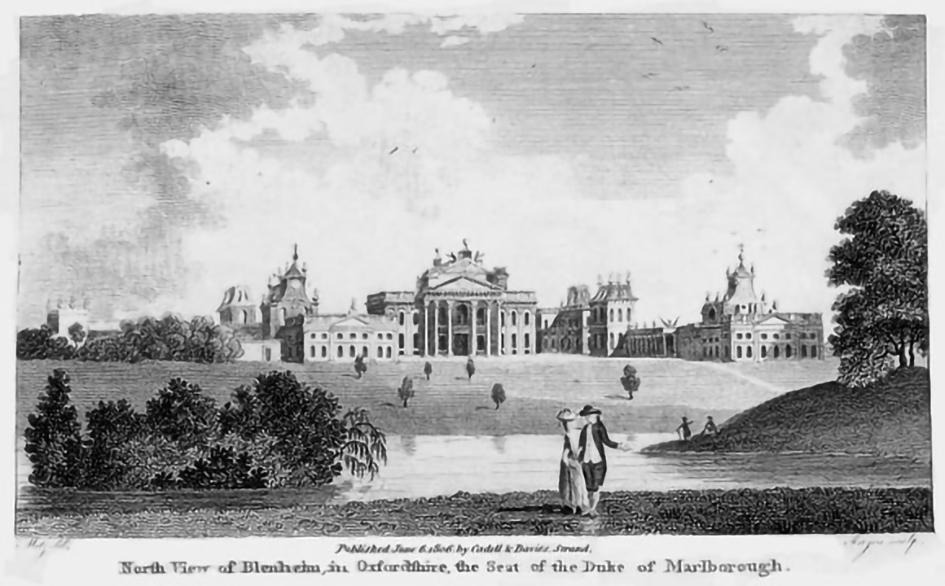

In the following century, guides often included detailed lists of paintings. Hampton Court Palace opened to the public in 1838 and visitors could purchase the Palace’s first guide, appealingly entitled A Summer’s Day at Hampton Court Palace. It was generously illustrated and included a catalogue of the pictures. As the century wore on, the rise in mass tourism changed the format of guidebooks. At the same time, printing processes advanced, so that it became possible to publish inexpensive paper guides, retailing for a few pennies, which satisfied the new class of visitor, who came by train or on an excursion. These guides were small volumes, printed on lightweight paper, that could fi t in most jacket pockets. They included enough information and, crucially, a souvenir illustration to mark the visit without overburdening visitors with detail. The most favoured illustration was a view of the property itself, perhaps set in landscaped grounds, that would act as a memento of the day out. At the same time, travel guides and itineraries proliferated, many pandering to contemporary gothic tastes for romantic atmosphere rather than reliable facts.
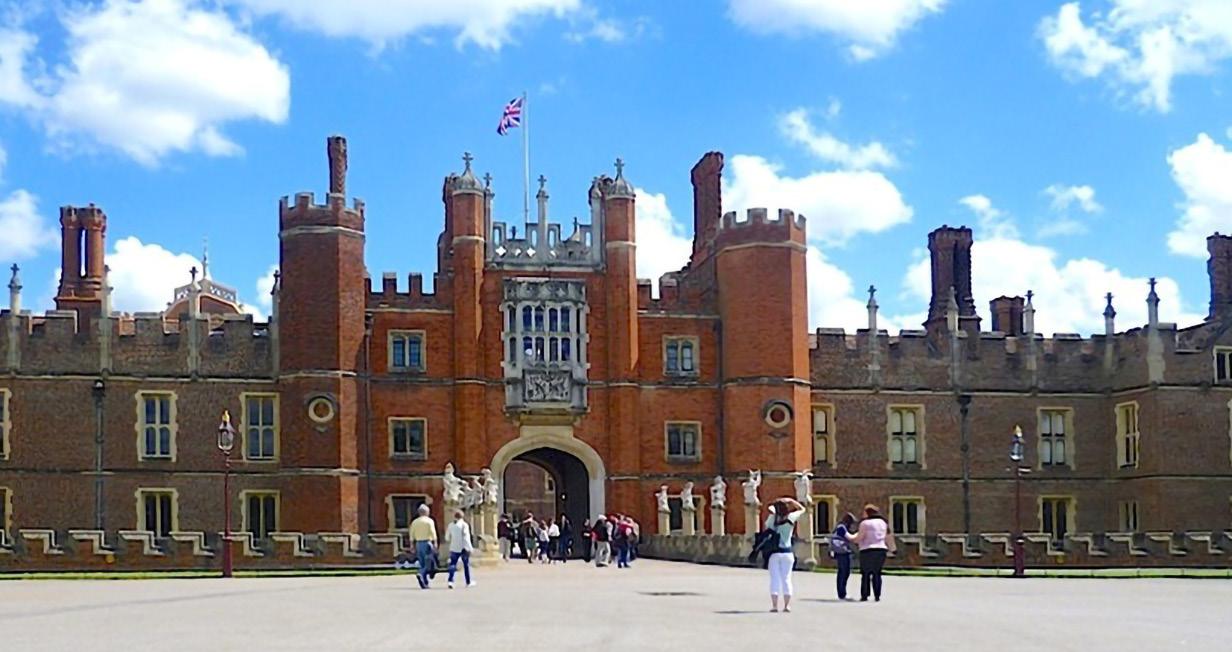
 BLENHEIM PALACE FROM A GUIDEBOOK BY WILLIAM MAVOR OF 1810
HAMPTON COURT PALACE, OPEN TO VISITORS FROM 1838
BLENHEIM PALACE FROM A GUIDEBOOK BY WILLIAM MAVOR OF 1810
HAMPTON COURT PALACE, OPEN TO VISITORS FROM 1838
visitheritage.co.uk 80
ROSSLYN CHAPEL, A TYPICAL 19TH CENTURY GUIDEBOOK

In the early part of the 20th century, The Ministry of Works set a pattern for dry instructive guidebooks to state owned monuments, long before the consistent independent branding of English Heritage. The decades after the Second World War saw the development of a recognisable pattern of visits to heritage attractions. It started with the Marquess of Bath at Longleat, who first opened his house to the public in blaze of publicity in 1948. The guidebook prepared for the event, Longleat, from 1566 to the Present Time, was written in three weeks by his wife, Daphne, who went on to become a society author. She focussed mostly on family anecdotes rather than lists of works of art or architecture. The Thynne family of Longleat have always provided a wealth of good stories; an approach which echoed the unreliable tours which would once have been led by the family housekeeper. Illustrations were now in colour.
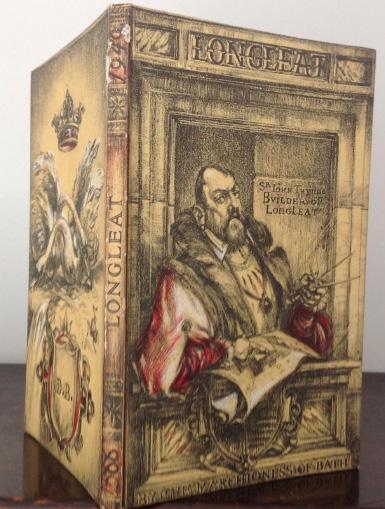

A quick look through the evolution of the guidebook establishes the usual elements: information on architecture, history and works of art, souvenir appeal and plenty of anecdote. In the 16th century, guidebooks were instructive and educational, in the 18th century, romantic and concerned with taste, in the 19th, interest switched to curiosity about how the rich lived and in the 20th, a kind of nostalgia for a lost world. According to period, they were either instructive, had souvenir appeal or handed down the gossip. How has this changed today?
Today, audio and apps provide the guide; social media, newsletters and website blogs soak up the stories; and gift shops are packed with souvenirs. But there are other influences at play. Guided tours are a less common, so, with no human guide, it is handy to have one in your hand, helping you spot key items and understand the historical context. You may find a book easier to navigate than the pre-set timing of an audio tour. Modern photography will fill your book with stunning imagery so you can indulge in the pleasure of reliving your visit at home. The content will certainly bring to life some of the relevant characters with anecdotes that are true and not always deferential. It seems that discerning consumers still feel a visit is only completed with the purchase of a guidebook, which today manage to be educational, entertaining and collectible. Like other kinds of printed books, reports of their death are greatly exaggerated.
LONGLEAT, TWO GUIDEBOOKS FOR TWO DIFFERENT CENTURIES OF VISITORS, 1948 & 2024
81 visitheritage.co.uk
LONGLEAT HOUSE
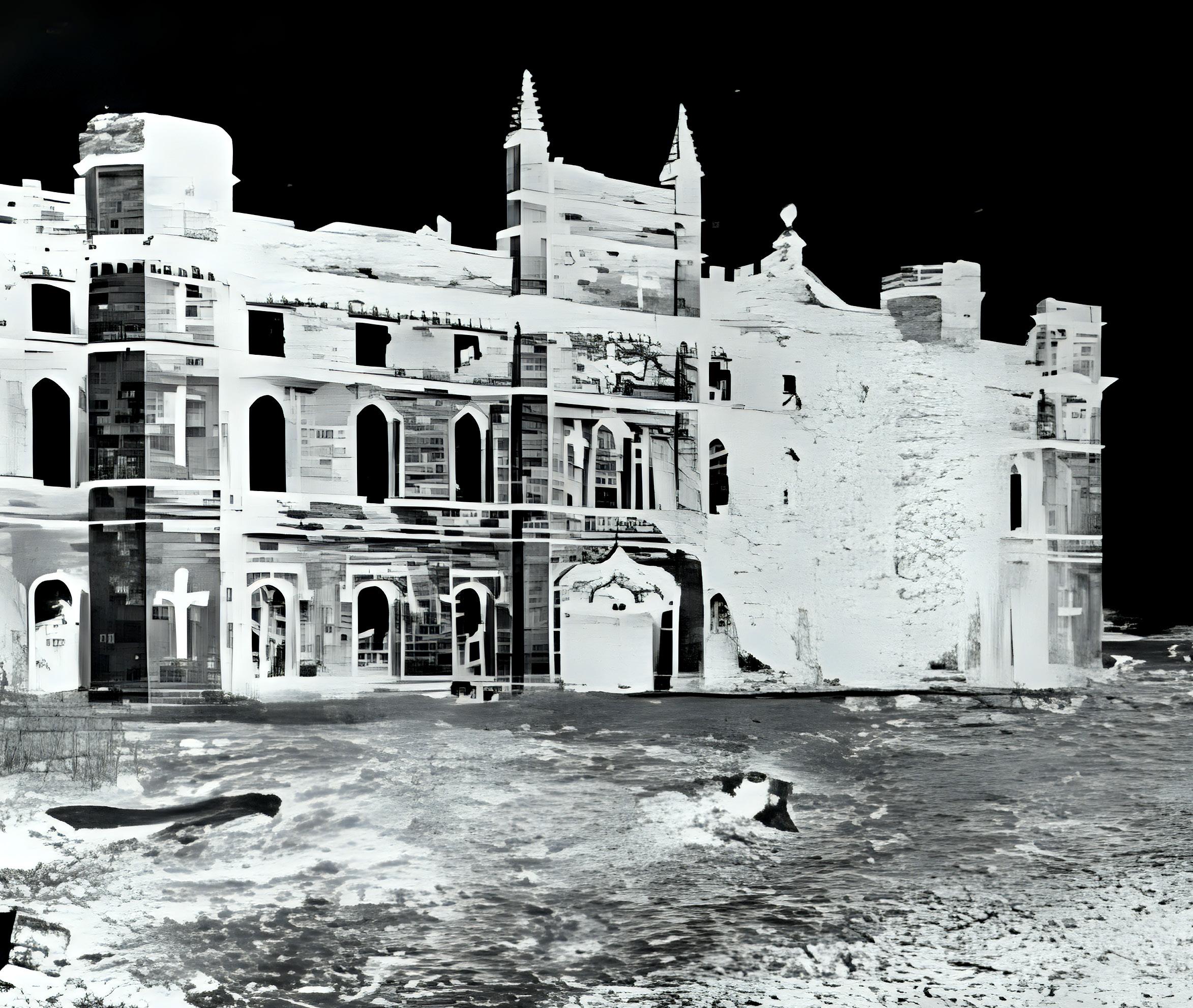
DESTRUCTION COUNTRY HOUSE of the The
82 visitheritage.co.uk



Fifty years ago this year, a landmark exhibition at the Victoria and Albert Museum put British country houses at the centre of our culture. It also brought the museum out of its Victorian inertia and sharply into the modern world. This edited extract from Ben Cowell’s book The British Country House Revival, recalls the making of the exhibition.
In October 1974, an exhibition opened at the V&A Museum in South Kensington, London. The exhibition’s alarmist intent was clear from its title, printed in a bold red capital type slanted across the black and white imagery of the promotional poster. The effect was akin to a piece of agit-prop of the sort that railed against fashionable contemporary causes such as the Vietnam war, nuclear proliferation, or pollution. This exhibition, however, drew attention to an altogether different problem. The Destruction of the Country House brought to the public gaze a list of significant country houses that had been eradicated from the British landscape over the course of the preceding century, many of them surprisingly recently. The exhibition averred that a wholly new phenomenon now beset the country houses of Britain. Mansions were no longer subject solely to the effects of fire and the elements, or to the familiar rhythms of building, rebuilding and then decline according to rising and falling tides of the financial fortunes of their owners. Instead, something different was now happening. The market for country houses had, since 1875, completely collapsed.
Destruction delivered its message with the showmanship and flair for communications that had come to be associated with the V&A’s new director, Roy Strong. With his colourful ties and stylish fedora hats, Strong cut a dandyish figure which was also reflected in the subject matter he chose for his exhibitions.
The Destruction show was one of the very first to open during Strong’s tenure at the V&A after he joined the museum in January 1974. Strong had started to sketch out his concept for the exhibition some time before his arrival in South Kensington, following conversations with John Cornforth. In the autumn of the previous year, in response to an offer of commercial sponsorship for his new museum, Strong had begun to conceive of an exhibition that focused on the conservation of historic interiors. As the idea developed, he decided to search for a way to link such an exhibition to the forthcoming Europe-wide Architectural Heritage Year in 1975. By October 1973 he had landed on the idea of using the V&A as an active heritage campaigning force.
83 visitheritage.co.uk

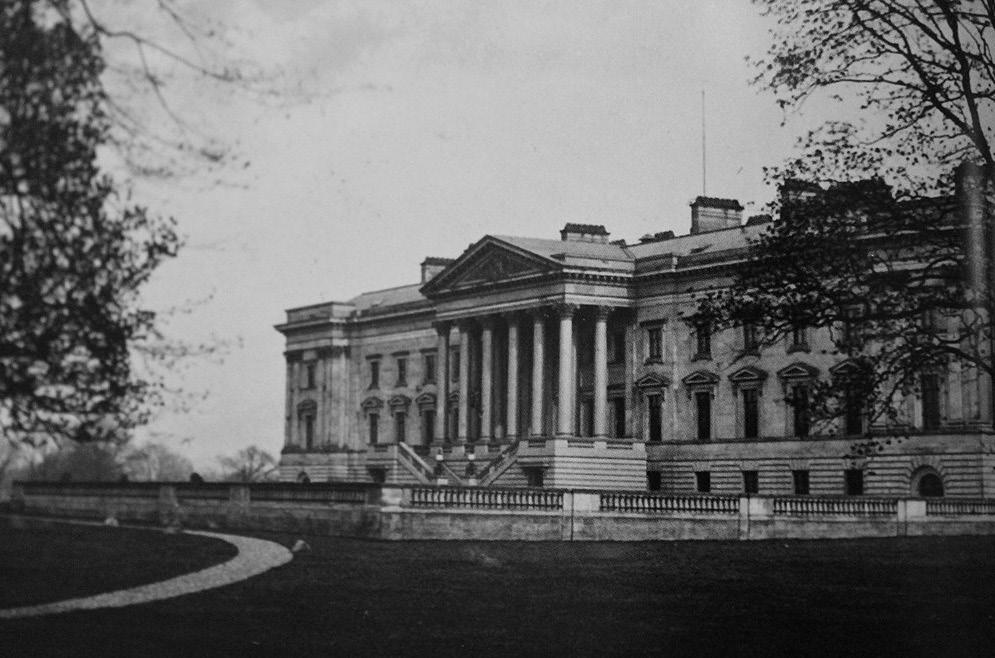
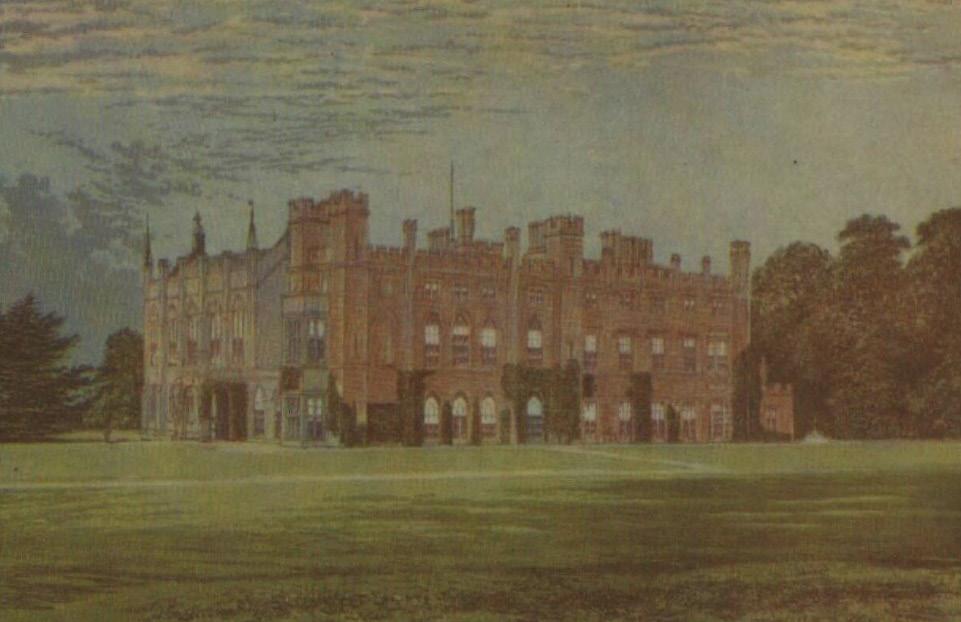
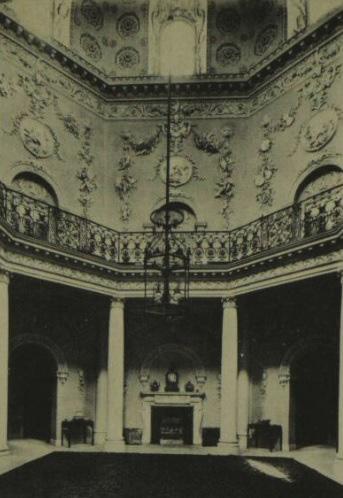



“I feel so strongly that the V&A represents the quintessence of our aesthetic heritage,” he wrote to Lady Dartmouth, “and that we should be seen to be deeply involved in what has been lost, and what will be lost, if we do not act immediately” He went on to explain that he envisaged the V&A as being “deeply associated with new movements at present in hand to save these things”, and not merely fall into the role of being “a mausoleum ready to receive odd bits that can be salvaged from these demolished beauties”.
He therefore anticipated “an explosive, controversial, exciting and dramatic exhibition,” which he dared to imagine could be pulled together for the Autumn of 1974, as a “fanfare” to the Architectural Heritage Year. The show would consist mainly of depictions of lost houses but could also encompass displays such as projections of period rooms comprising furniture now held in American museums, or shelves of country house sales catalogues from the preceding century. His original title for the show was “Gone, Going, Going”, and it was to be a clear statement of intent, showing how the V&A would in future be much more closely involved “in what is actually happening to things at the moment”. The show would need to combine “scholastic integrity and political immediacy” Strong envisaged that it would be followed by similarly crusading exhibitions, for example about churches and town houses.
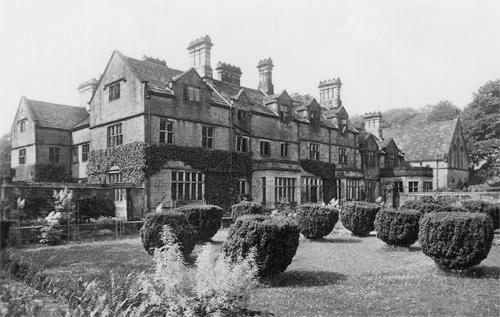
First, though, Strong had to contend with the institution that he joined in January 1974. “The first three weeks at the V&A were HELL,” he recorded in his diaries, a combination of “the dreary Civil Service-ness of it all, the terrible forms, files, signing, the filth, the smell of Jeyes fluid, the dirty loos”. He faced resistance to his ideas from some of the staff, but remained undaunted: “I swiped them down,” he claimed, “which is the only thing to do”. Soon he was in his stride, implementing his new vision for the museum:
I want to get the twentieth century into that place and make it alive and a comment on our times, to make the Museum symbolise the care of a heritage in all its richness...
Dandyism was in short supply here. Rather, Destruction made its point with all the subtlety of a clenched fist. It brought to the world of the national museums the same anger and energy that punk rock would soon unleash on popular music. Once again Strong was anticipating the public mood and, by so doing, was helping to shape it. It was a project conceived in passion and delivered with determination. Much of the show’s impact derived from the flair of its designer, Robin Wade, and its confident, bold messaging. An initial schema, conceived by V&A curator Simon Jervis, envisaged an exhibition laid out as if it were the basilica of an early Christian church. Visitors would enter via a narthex, where they would be pummelled with facts about the losses of the preceding
1 3 4 5 6 7 8 2 84 visitheritage.co.uk
century. This section would have a “bleak gloomy deadpan presentation”. Proceeding into the nave, visitors would then learn about the current situation, with side chapels revealing the truth about present-day dangers and risks facing country houses. Finally, in the choir, they would be sent off with a “rallying cry and an injunction to action”. The exit would, naturally, be through a book shop, where “suitably inspiring texts would be on sale”
The exhibition’s power derived from the power of photography. The more they looked, the more the curators, John Harris of the Royal Institute of British Architects (RIBA), Peter Thornton of the V&A, and Marcus Binney of Country Life found black and white images of houses that simply no longer existed. The pictures themselves did much of the emotional work of the show, as the relics of a world that was all-toorapidly slipping away. At the heart of the exhibition when it eventually opened was a room called the ‘Hall of Lost Houses’. Like a stage set, blocks were arranged as if they were part of a portico that was being smashed by a wrecker’s ball. Images of lost houses appeared on some of these blocks. Having been assembled in architectural formations, the blocks were caught midair as they tumbled down. Their use was an echo of the acrylic photograph cubes that could be found on coffee tables in suburban living rooms in the early 1970s as the

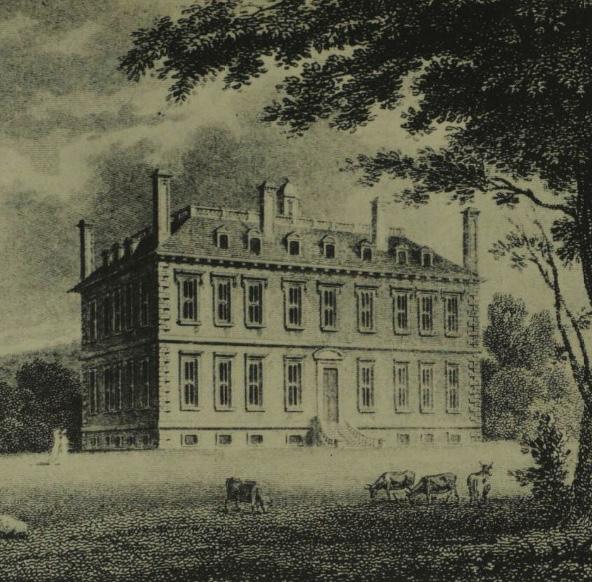
latest way of displaying polaroid snaps of holiday scenes or family members. Here, they were expanded to the size of pieces of masonry and captured in the freeze frame of the moment of demolition. Over a speaker system, meanwhile, against a background of the sound of crackling flames and falling timbers, John Harris intoned a list of the fallen houses, like a recitation of the fatalities of a recent war.
Looking back after forty years, Harris declared the show to have been “sensational”. This was not just because of the dramatic style in which the information was presented but also because of the sheer scale of the losses that were being highlighted. For Harris, this was an “unimaginable” number. Strong described the impact of the Destruction exhibition as “overwhelming” “Many was the time I stood in that exhibition”, he reminisced two decades later, “watching the tears stream down the visitors’ faces as they battled to come to terms with all that had gone”
Ben Cowell’s book The British Country House Revival is published in May by Boydell & Brewer at £75. Order a copy at our special price of £30 + p&p from www.boydellandbrewer.com until 31 December 2024, quoting BB242.
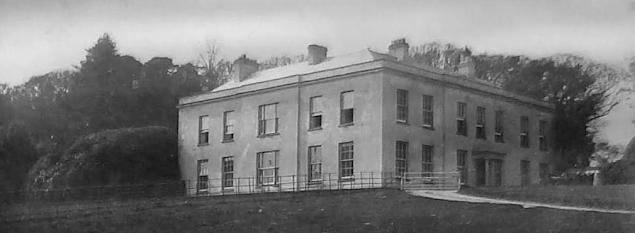




Opposite:
9 10 12 14 11 15 13 85 visitheritage.co.uk
1. Henbury Hall, Cheshire, demolished 1957; 2. Hamilton Palace, Lanarkshire, demolished 1932; 3. Cassiobury Park, Hertfordshire, demolished 1927; 4. Nuthall Temple, Nottinghamshire, demolished 1966; 5. Destruction of the Country House, book that accompanied the exhibition; 6. The Hall of Lost Houses, the centrepiece of the exhibition; 7. Bold Hall, Lancashire, demolished 1900; 8. Derwent Hall, Derbyshire, demolished 1944 Above: 9. Thorington Hall, Suffolk, demolished 1949; 10. Trelaske, Cornwall, demolished 1957; 11-12. Tong Castle, Shropshire, demolished 1954; 13. Coleshill, Berkshire, demolished 1958; 14. Streathlam Castle, Co Durham, demolished 1959; 15. Gidea Hall, Essex, demolished 1930.

PRODUCEf resh
visitheritage.co.uk 86

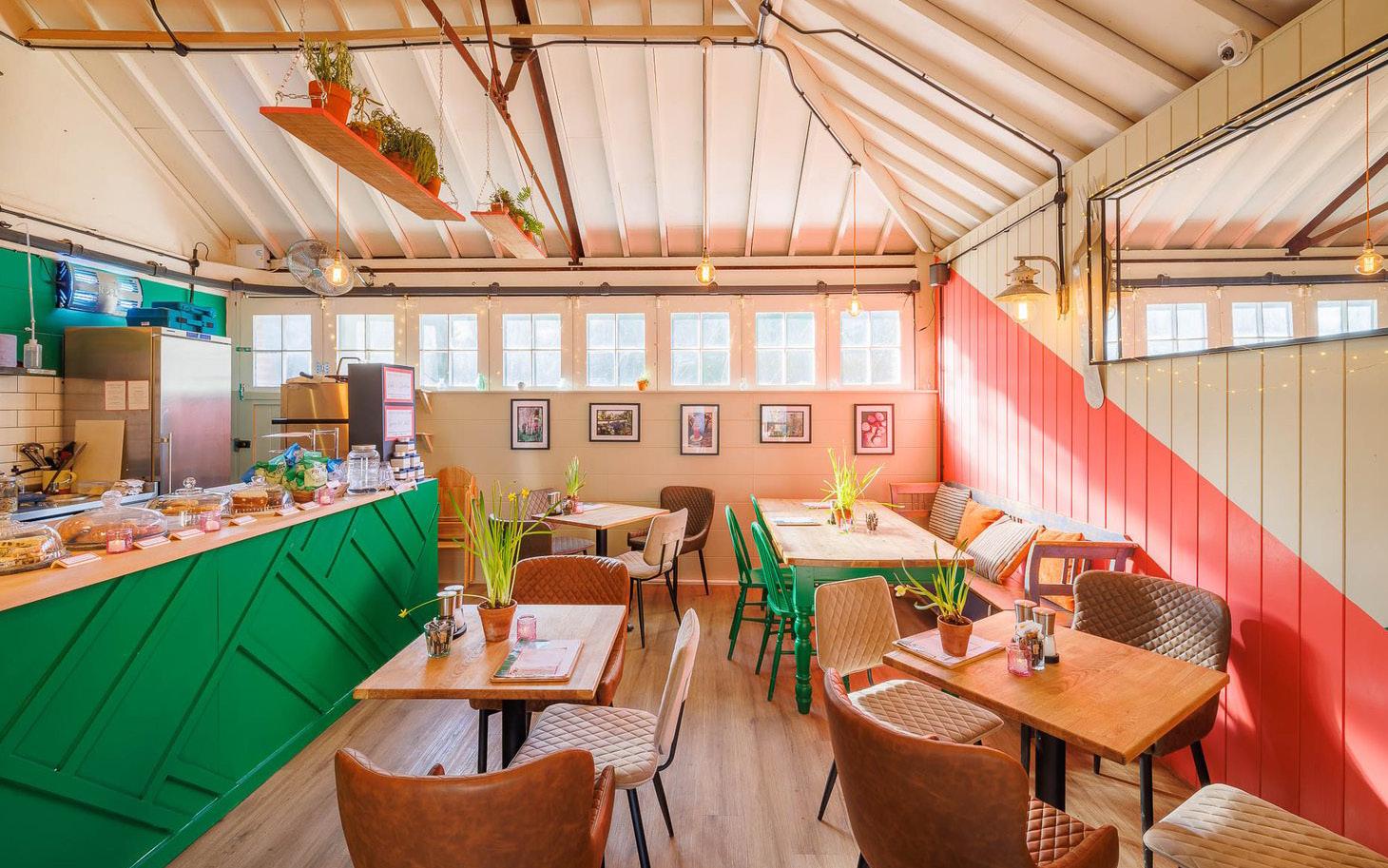
When you bite into a sandwich or guzzle soup on a visit to a heritage place this summer, you may fi nd that the key ingredients have travelled less far than you. Hudson’s has been munching on some very fresh produce indeed.
Kitchen gardens were once a hive of productivity for big houses. Two hundred years ago, teams of gardeners laboured to grow food for the household. As exotics were brought from far away lands in the 18th and 19th century and new gardening technologies developed, kitchen gardens became larger and filled with glasshouses, hotbeds, sunken pits, mushroom houses and other specialised growing areas. The decline of country houses which began with the First World War, saw kitchen gardens become white elephants and glasshouses disintegrate. Now a new generation of owners have found a new life for kitchen gardens, as an integral part of the attraction for visitors and as a new way of supplying cafés and tearooms with fresh produce and keeping those food miles down.
Deans Court in Dorset is a pioneer in this movement. For two generations at least, the gardens have been run on organic principles. The Hanham family have lived at Deans Court since 1551 and have a strong ecological ethos. The Walled Garden, added in the 18th century, is enclosed by a rare ‘crinkle crankle’ brick wall, built in repeated curves for stability. Inside the wall is the first organic garden in the country to be accredited by the Soil Association where a strict ‘no-dig’ policy is in operation, exploiting the soil’s natural ability to sequester carbon and dressing with compost to boost nutrients. This concern
with wellbeing of soil, people and the environment extends to the food served in the cheerful café, converted from a 1930s garage. As much as possible is grown in the Walled Garden and delivered to the café to be made into soups, quiches, sandwiches and cakes, with gluten free, vegan and vegetarian options too. Deans Court ran a successful veg box business sending organic vegetables around the district for a number of years but, having expanded their retail offer to include a homestore, excess produce is regularly available to buy in the café.
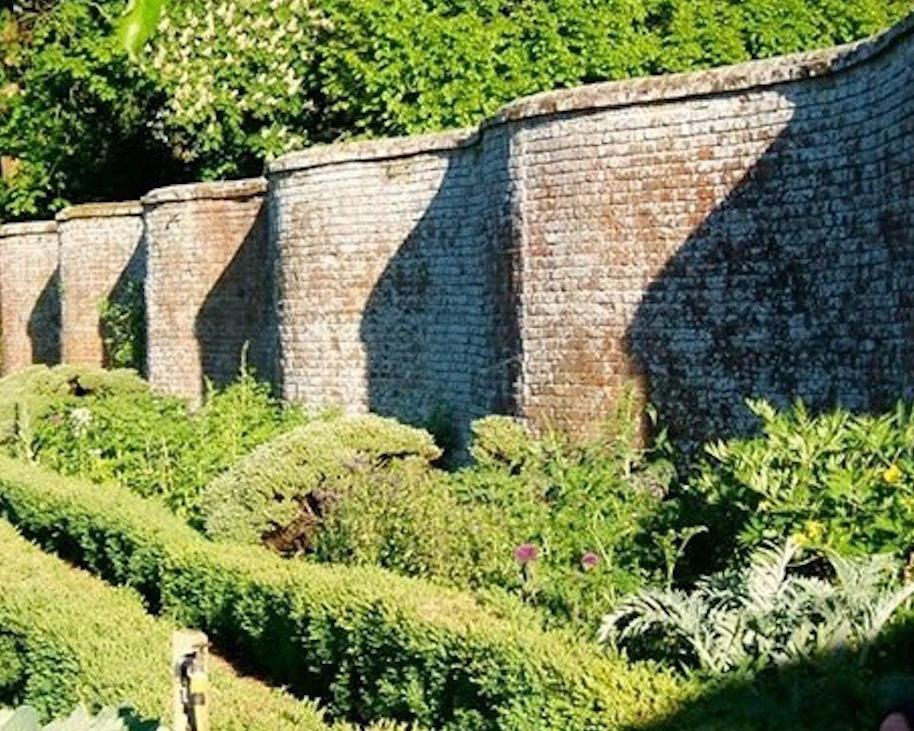
87 visitheritage.co.uk
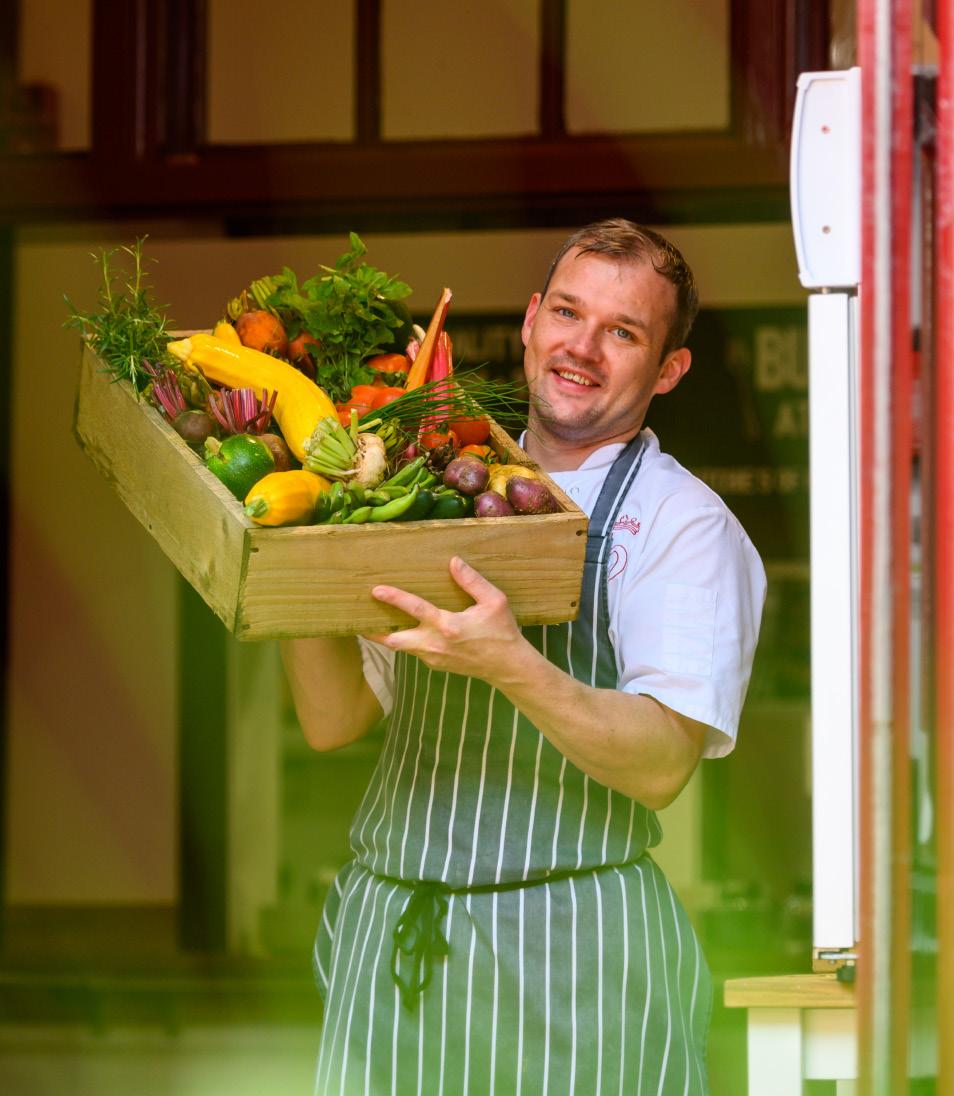

Food miles are also a concern at the other end of the country on the Isle of Bute. Bute, once a holiday playground for the people of Glasgow across the Firth of Clyde, has developed a strong reputation for sustainable food production. In the 1990s, when a new restaurant was planned and built at Mount Stuart , the idea of a kitchen garden that could supply fresh vegetables, fruits and herbs, was an important element of the scheme. The original designer of the kitchen garden was Rosemary Verey who had drawn inspiration from the potager garden at the Chateau of Villandry for her own garden at Barnsley House in Gloucestershire. At Mount Stuart, the evolving garden sees vegetables, fruits and flowers all grown together in profusion, a design which also owes something to the heritage of the Scottish kailyard where productivity still left room for beauty. The original kitchen garden at Mount Stuart covered fi ve acres and was completed in 1820 for John Crichton-Stuart, 2nd Marquess of Bute - only part of the enclosing wall survives today. Today’s kitchen garden, conveniently near the Courtyard Café, centres on a handsome glass pavilion where exotics like bananas and ginger are grown. The pavilion was snapped up by the 2nd Marquess’ greatgreat-grandson, John Bute, 6th Marquess from the Glasgow Garden Festival in 1988. Today’s Kitchen Garden is expanding to provide fruits, vegetables and herbs for the community across the island, via the Bute Yard market, and Mount Stuart’s own Courtyard Café restaurant.


88 visitheritage.co.uk

At Weston Park in Shropshire, where the restaurant is open all year round, the emphasis is on seasonality and the catch phrase of The Granary restaurant is ‘From Estate to Plate’. The Walled Kitchen Garden was built to the advice of Capability Brown in the 1760s, at the end of his work on the landscape at Weston Park for Sir Henry Bridgeman. When it was new, the garden featured a hot wall, heated by a series of brick stoves where tender
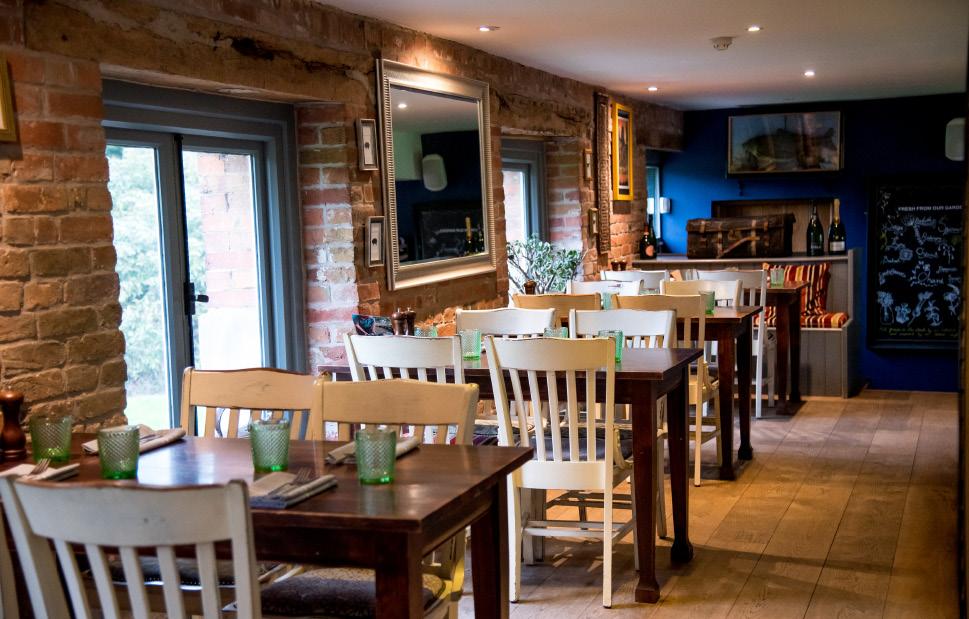
plants could be grown. There was also a Pinery, where gardeners vied to grow the largest number of pineapples, the most prestigious fruit of the era. Today, our tastes are for fresh seasonal produce that grows in harmony with the British seasons and inspires dishes particular to each month from spring asparagus to autumn apples and winter kale. The award-winning Granary restaurant has become particularly popular with locals for its Sunday lunches.
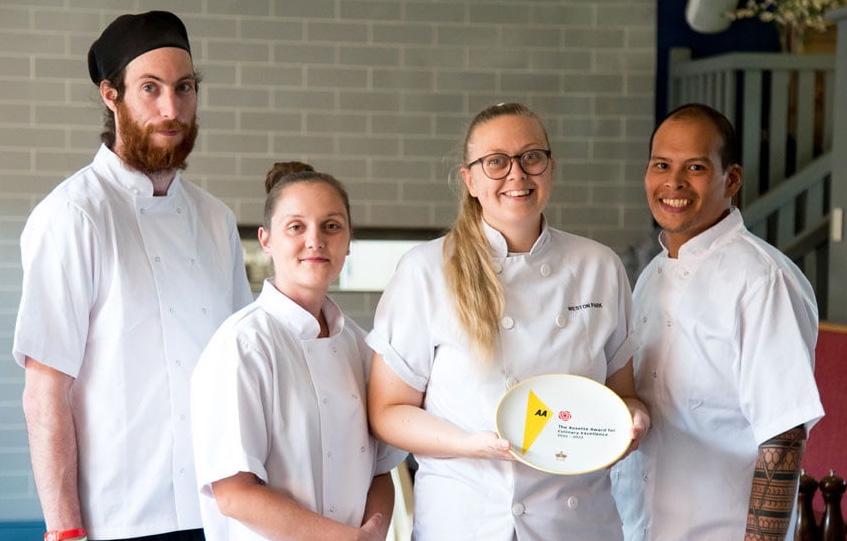
89 visitheritage.co.uk
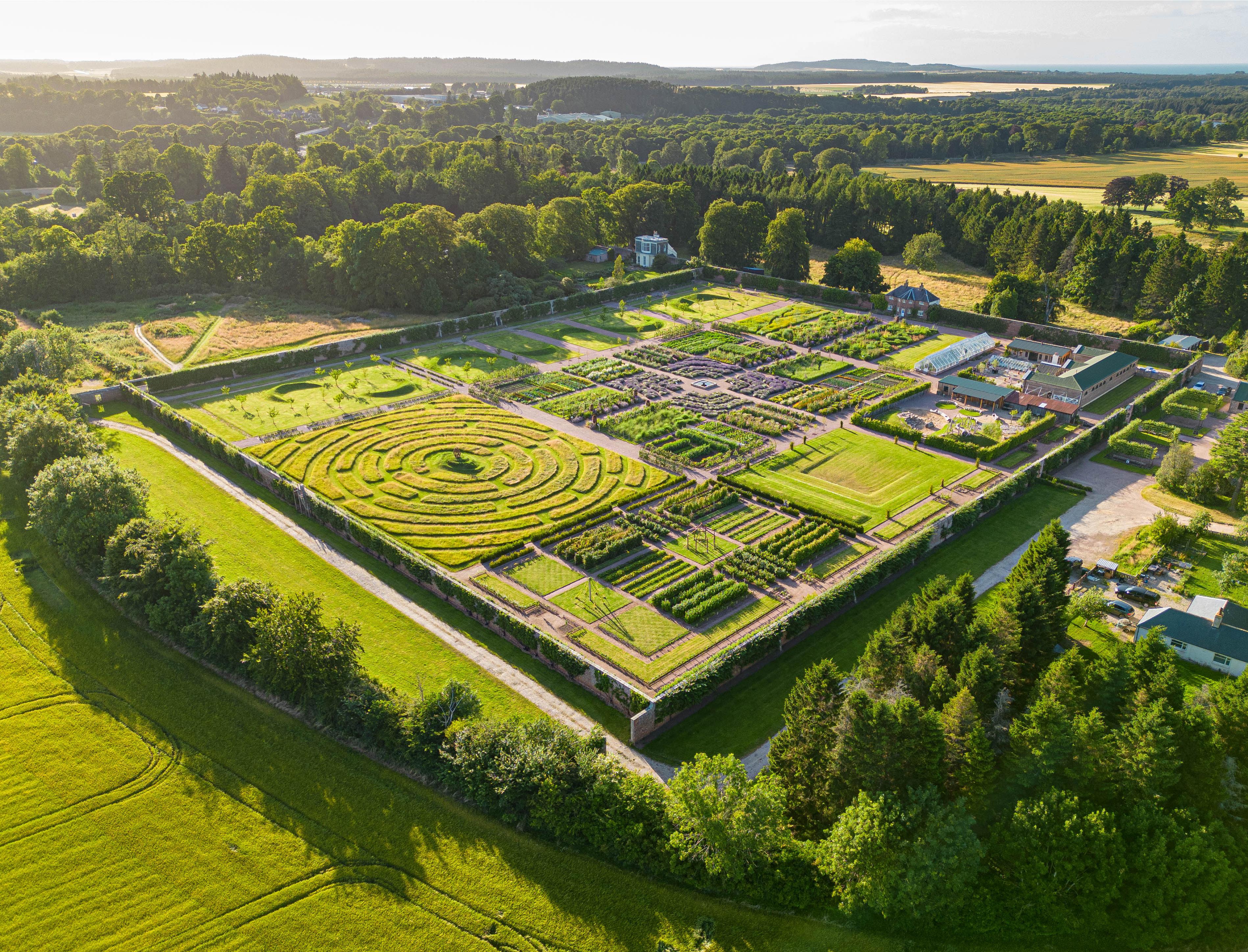
Sometimes the revival of a kitchen garden inspires a business. When Angus and Zara Gordon Lennox took over Gordon Castle in Morayshire from his parents they inherited one of the largest walled gardens in the country at nearly eight acres. Built to supply fruit and veg for the castle in around 1803, it was given over to commercial raspberry growing after the Second World War. Amazingly, many of the 249 trained fruit trees that covered the walls survived and motivated the new generation of the family to start a business making and selling high quality foods based on the best ingredients grown in the Walled Garden. Gordon Castle Gin was the flagship product of a range which has now expanded to include preserves, cider, a bath and body range and homewares. All the carefully branded products use flavours, aromatics and fragrances sourced from the Walled Garden. Meanwhile, the garden itself has been replanted to a masterplan devised by garden designer Arne Maynard and become a visitor attraction in its own right with an associated café serving lunches and teas, all, of course, using ingredients grown in the Walled Garden.

90 visitheritage.co.uk


Newest of the kitchen garden revivals is at Auckland Castle in Co. Durham, where the latest phase of the ambitious Auckland Castle Project, is the replanting and revival of the sloping south facing Walled Garden built in the 17th century by Bishop John Cosin. It was a pioneering garden which grew flowers and vegetables but also pineapples and grapes for the Bishop’s feasts in his palace at Auckland Castle. Now the garden is being replanted and revived by a group of leading landscape architects and garden designers both as a visitor attraction and to provide ingredients for food prepared at the Bishop’s Kitchen café and the new Tapas Bar at the Spanish Gallery in Bishop Auckland itself. Even last year, when only the lower garden was planted with flowers, fruit and vegetables, the plot was a sight to see and produced over 7,000 kg of produce. The new glasshouse on the Upper Terrace, which is scheduled to open in 2024, should reproduce the splendours of the heyday of hospitality in the powerful Bishopric of Durham.
Sustainability and taste meet in today’s kitchen gardens. For heritage attractions, this can mean reviving long abandoned walled gardens and bringing delicious dishes to visitors from ingredients grown right on the doorstep. Discover the flavours yourself.
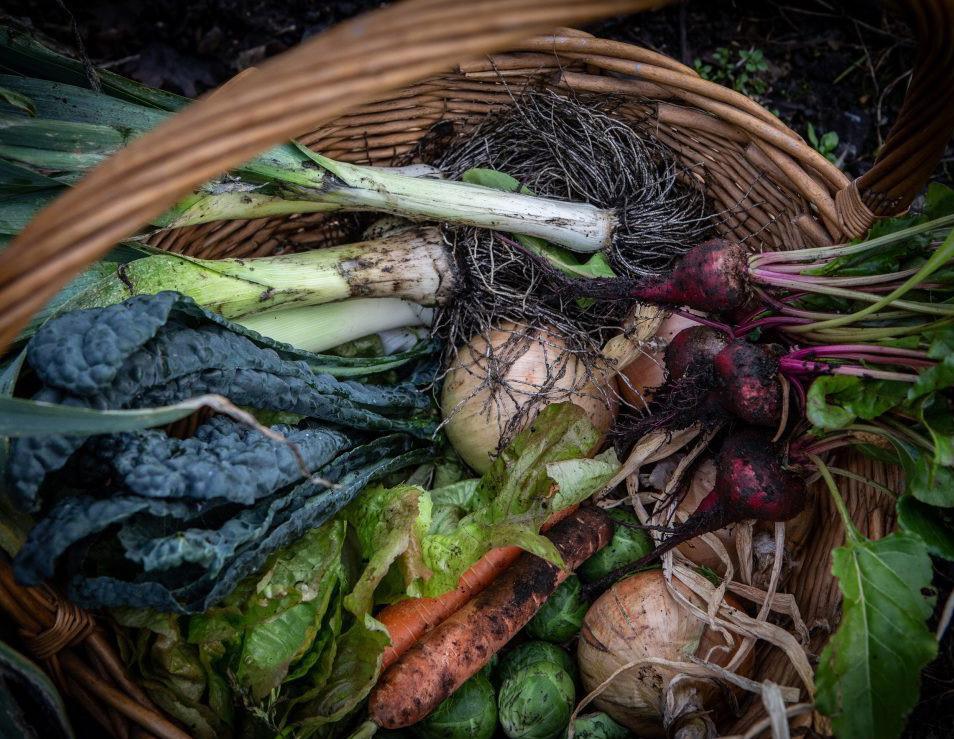
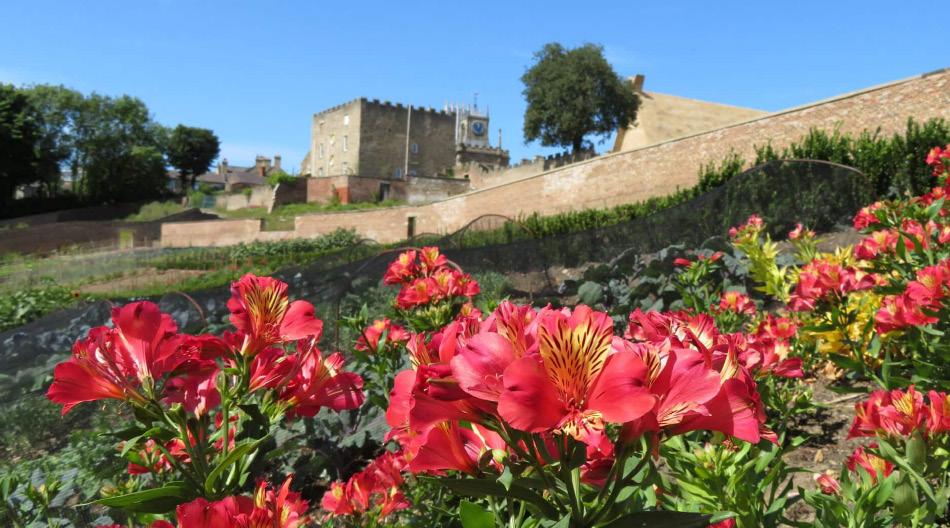
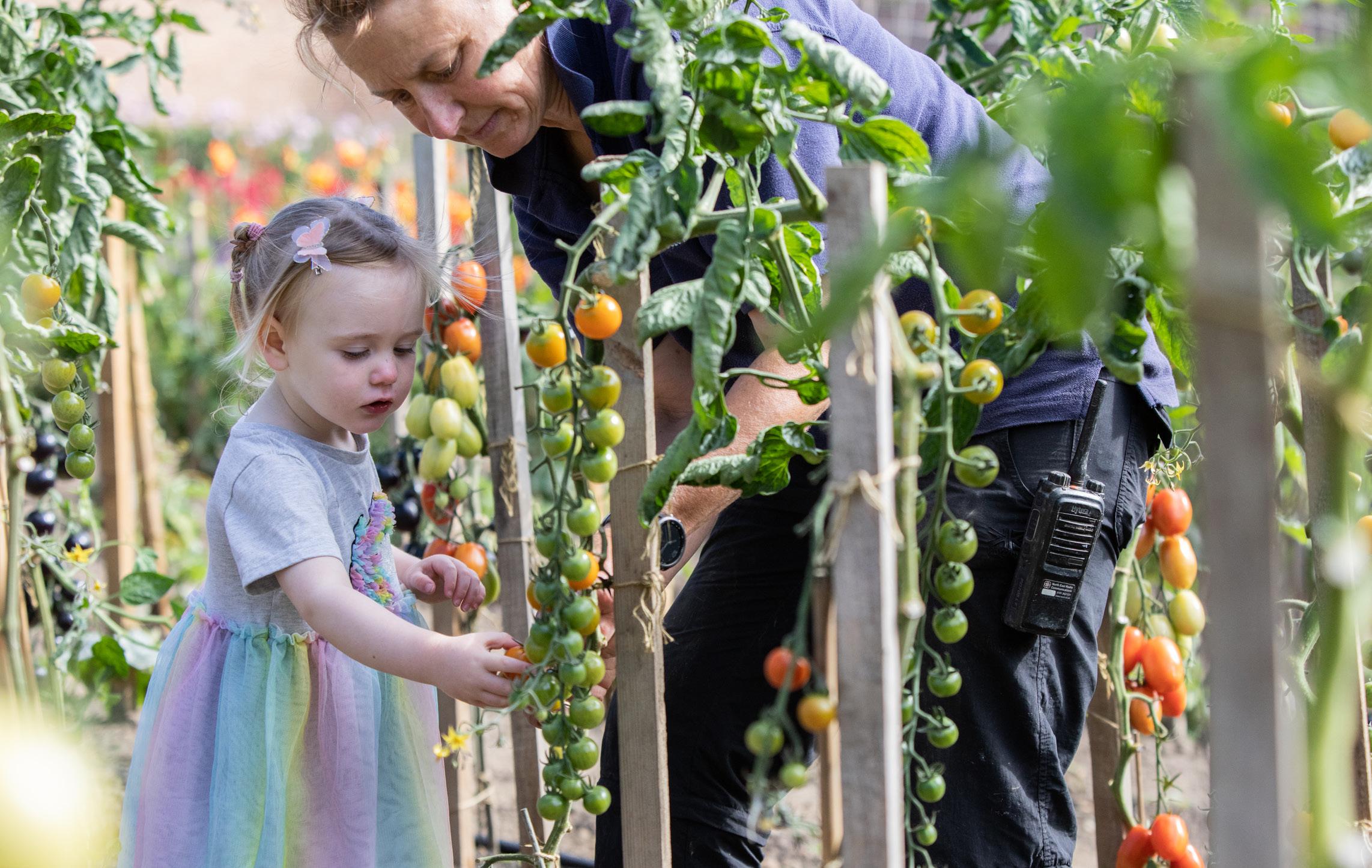
91 visitheritage.co.uk
LONDON
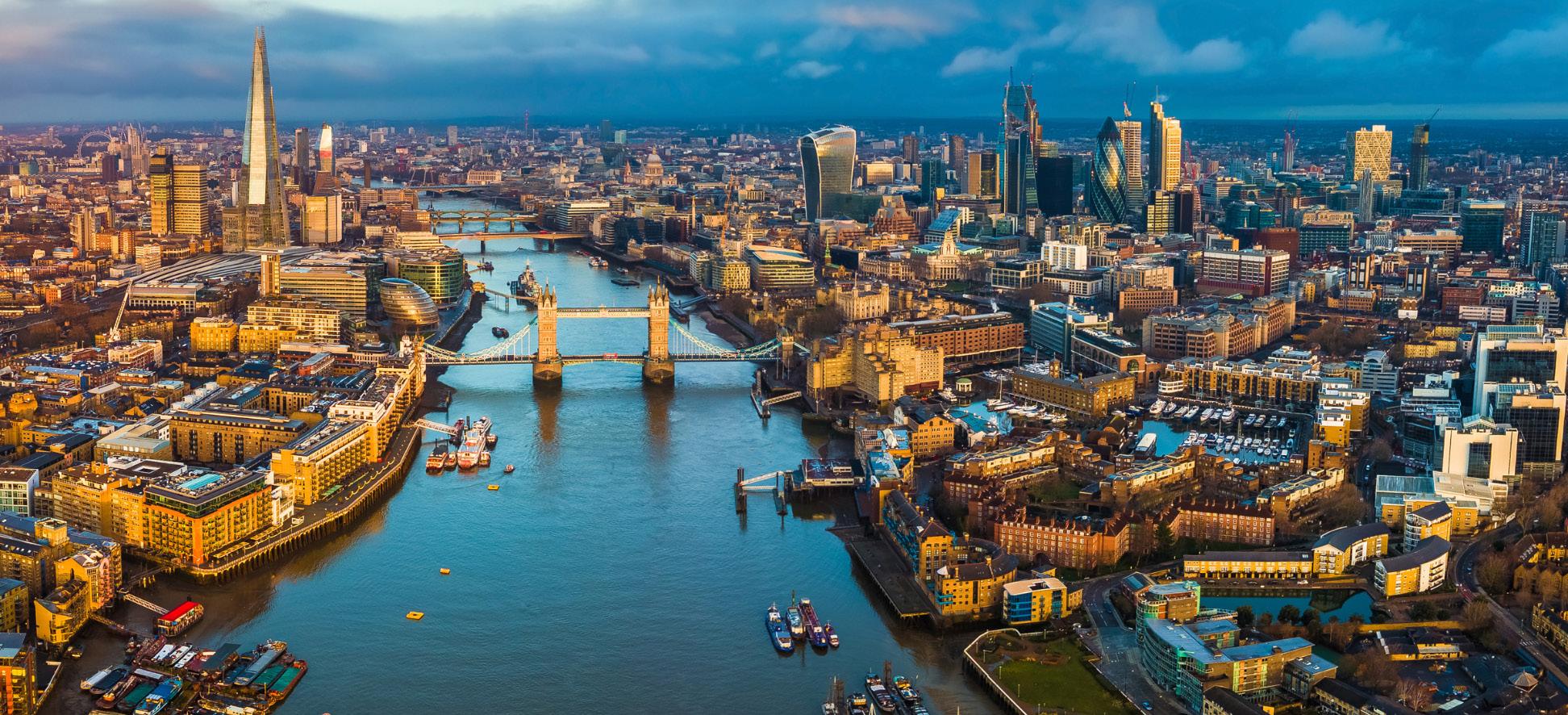
COUNTRYSIDE
Royal Parks
Hampstead Heath
River Thames
HERITAGE
Royal Palaces
Homes of the Famous
Parliament & Democracy
FOOD
Cuisines of the world
Jellied Eels
Chelsea Buns
GREATER LONDON
Westminster
visitheritage.co.uk 92
City of London
LONDON
Events

RHS CHELSEA FLOWER SHOW
21st to 25th May 2024
Every year, world-renowned garden designers, plant specialists, florists and nurseries come together in one of London’s most charming and affl uent neighbourhoods to show off cutting-edge garden designs and inspirational floral exhibits.
Stroll through show-stopping gardens designed by famous designers, learn about rare flowers and plants, or revel in creative floral artworks throughout the week. You can also spot emerging gardening trends as you browse the horticultural products on sale, from gardening gadgets to sculptures and plants.
NOTTING HILL CARNIVAL
August 2024 (Exact dates to be confirmed)
Notting Hill Carnival was fi rst held in 1966. It celebrates the rich history of Caribbean culture in London.
The fi rst Notting Hill Carnival attracted around 500 people. The carnival has since grown to become the largest street festival in Europe, attracting hundreds of thousands to London. You can usually expect to see some 50,000 performers in the parade and more than 30 sound systems, with more than one million people attending over the weekend.
CHANGING THE GUARD
Throughout the year
Changing the Guard is a formal ceremony in which the The Kings Guard currently protecting Buckingham Palace are replaced by a new group of soldiers. The famous London guards have been around for centuries, with the first ceremony taking place during the reign of King Henry VII where it was originally held at the Palace of Whitehall.
Changing the Guard takes place at Buckingham Palace Forecourt every Monday, Wednesday, Friday and Sunday. It starts at 10:45am and lasts for about 45 minutes.



93 visitheritage.co.uk
SYON PARK
www.syonpark.co.uk
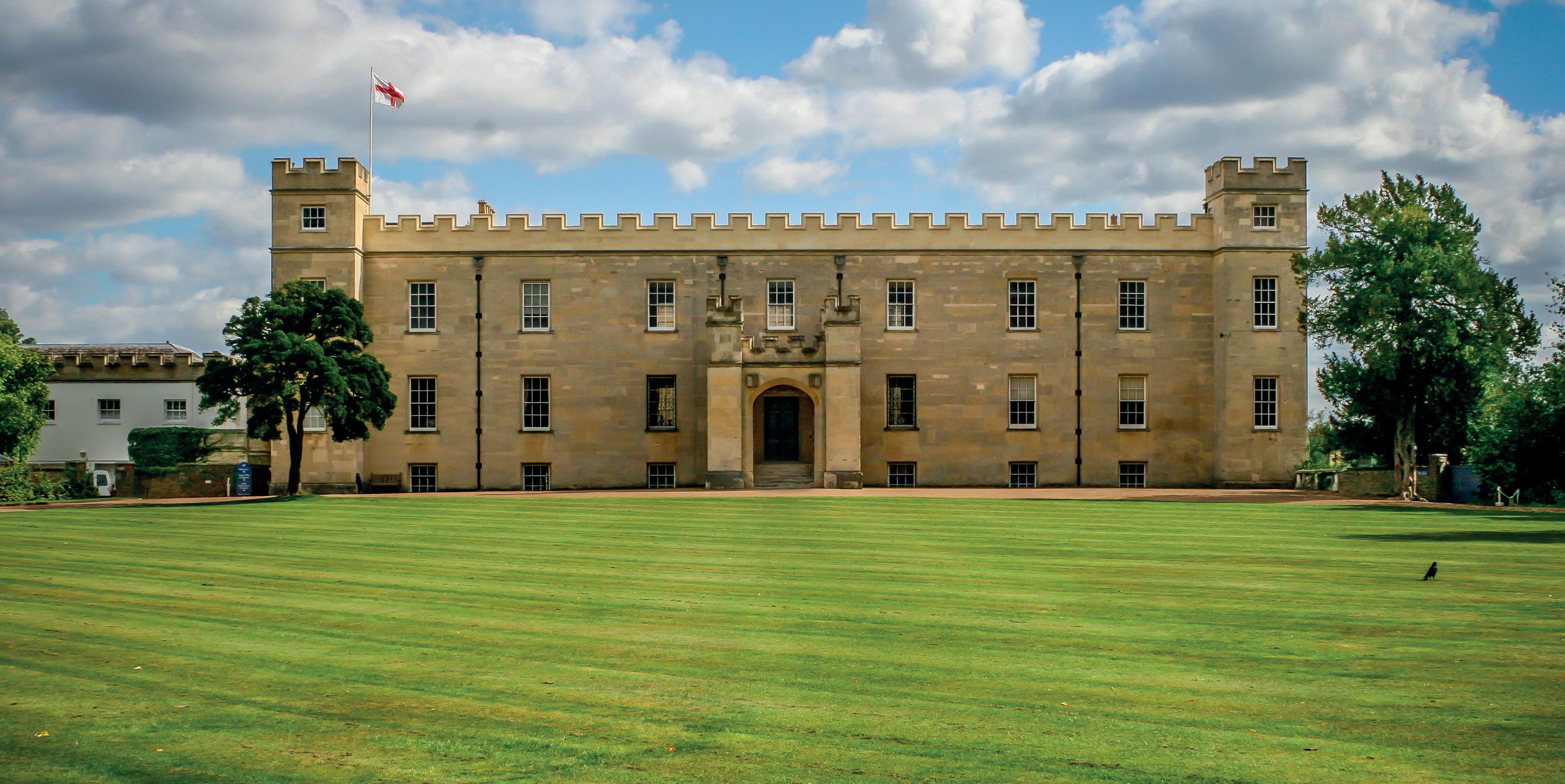
London home of the Duke of Northumberland with magnifi cent Robert Adam interiors, 40-acres of gardens, including the spectacular Great Conservatory.
Described by John Betjeman as the ‘Grand Architectural Walk’, Syon House and its 200-acre park is the London home of the Duke of Northumberland, whose family, the Percys, have lived here for 400 years. Originally the site of a late medieval monastery, excavated by Channel 4’s Time Team, Syon Park has a fascinating history. Catherine Howard was imprisoned at Syon before her execution, Lady Jane Grey was offered the crown whilst staying at Syon, and the 9th Earl of Northumberland was imprisoned in the Tower of London for 15 years because of his association with the Gunpowder Plot. The present house has Tudor origins but contains some of Robert Adam’s fi nest interiors, which were commissioned by the
OWNER
The Duke of Northumberland
CONTACT
Contact: Estate O ce
Tel: 020 8560 0882
Email: info@syonpark.co.uk
Events: events@syonpark.co.uk

1st Duke in the 1760s. The private apartments and State bedrooms are available to view.
The house can be hired for filming and photo shoots subject to availability. Within the ‘Capability’ Brown landscaped park are 40 acres of gardens which contain the spectacular Great Conservatory designed by Charles Fowler in the 1820s. The House and Great Conservatory are available for corporate and private hire. The Northumberland Room in Syon House is an excellent venue for conferences, meetings, lunches and dinners (max 60).
The State Apartments make a sumptuous setting for dinners, concerts, receptions, launches and wedding ceremonies (max 120). The Great Conservatory is available for summer parties, launches, filming, photoshoots and wedding receptions (max 150).
LOCATION
Syon House, Syon Park, Brentford, Middlesex TW8 8JF
Map Ref: 19:7C
Between Brentford & Twickenham, o A4, A310 in SW London.
OPENING TIMES
Please see website for opening times.
No ash photography in the house. By arrangement.
WCs.
Free parking.
WCs. House - Limited access. Gardens and Great Conservatory - fully accessible. By arrangement.
Café.
Syon Park Visitor Centre, Wed-Sun 10.30am4.30pm. Last entry 3.30pm. Visitors can check website for more details.
ADMISSION
Please see website.
ADDITIONAL
Syon House Ventures reserves the right to alter opening times. Please phone or check website for up to date details and special events.
Syon House & the Great Conservatory available for exclusive luncheons, meetings & corporate.
Available for formal dinners, ceremonies, receptions & parties.
See website for details.
London 94 visitheritage.co.uk

KEATS HOUSE
www.cityoflondon.gov.uk/keats


Discover the beauty of poetry and place in the former home of Romantic poet John Keats. The house tells the story of how the young poet was inspired through friendship, love, and the surroundings of Hampstead to create some of the greatest works in the English language. Listen to Keats’s famous odes, see the engagement ring he gave to his true love Fanny Brawne, and explore our beautiful garden. The House comes alive with regular events, from poetry performances to family fun days.
CONTACT Tel: 020 7332 3868 Email: keatshouse@cityoflondon.gov.uk
LOCATION
10 Keats Grove, London, NW3 2RR.
OPEN DAYS & ADMISSION
See website for details.
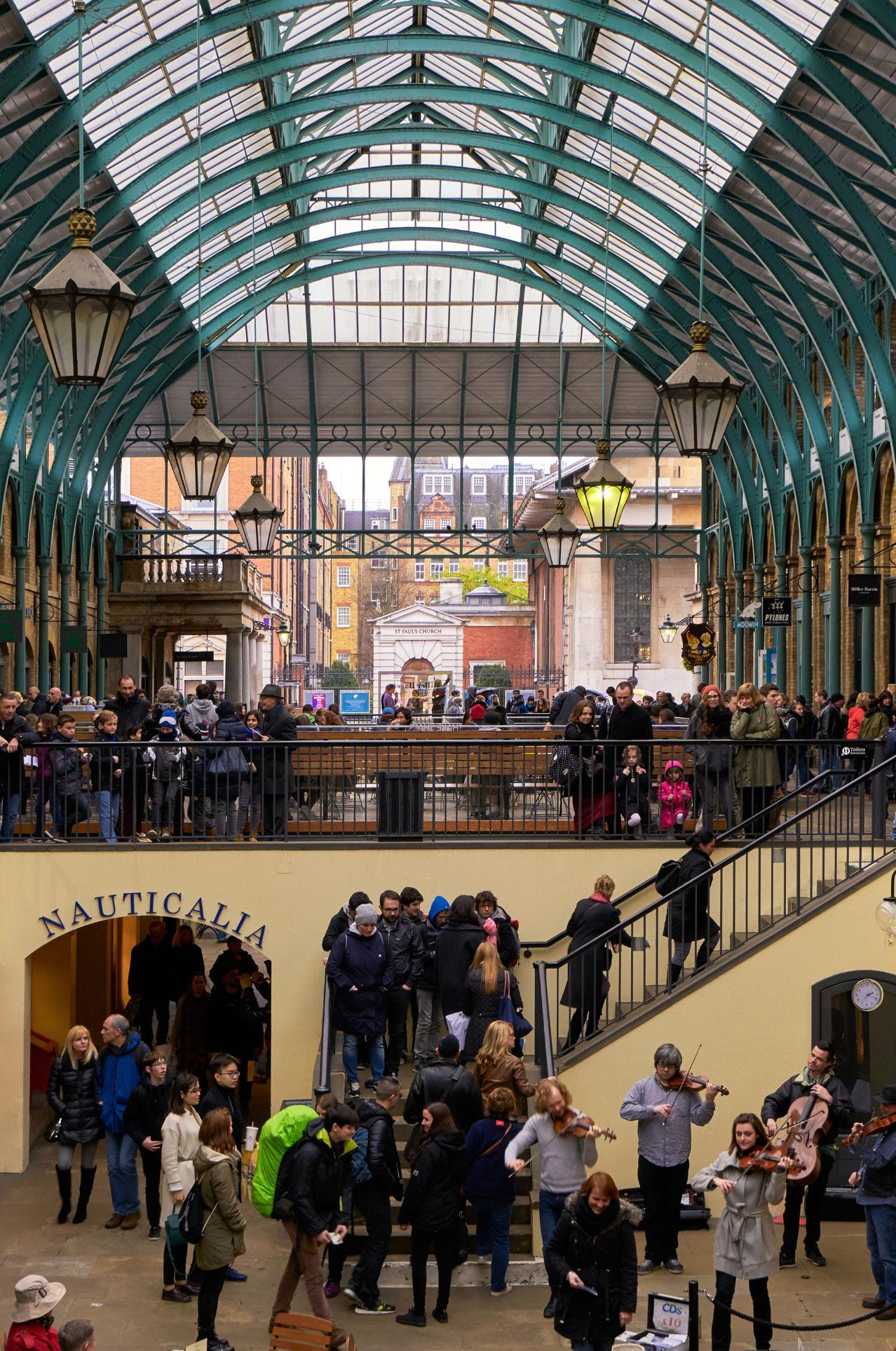

London
95 visitheritage.co.uk
SOUTH EAST
OXFORDSHIRE • BERKSHIRE • BUCKINGHAMSHIRE • HAMPSHIRE
ISLE OF WIGHT • SURREY • SUSSEX • KENT

COUNTRYSIDE
Chalk downs
New Forest
The Solent
HERITAGE
Oxford
• Aylesbury
OXFORD SHIRE BUCKS
• Abingdon
Winchester
Southampton
Portsmouth
Midhurst •
Petersfield
•
Sevenoaks •
HAMPSHIRE KENT
• Bournemouth
Mansions & manor houses
Plant collector gardens
Naval heritage
FOOD
Apples & cherries
Banoffee pie
Fine English wine
• Guildford
SUSSEX
Brighton Chichester
Bognor Regis
•
ISLE OF WIGHT SURREY
• Brockenhurst Dover •
• Arundel
• Lewes Tunbridge Wells •
visitheritage.co.uk 96
SOUTH EAST
Events

BBC GARDENERS’ WORLD SPRING FAIR
Friday 3rd to Sunday 5th May 2024
The popular BBC Gardeners’ World Spring Fair will be bringing glorious garden displays and plenty of eye-catching plants to the Beaulieu event fields. Returning for its fourth year, this green-fingered paradise has already established itself as a favourite with gardeners. From inspirational Beautiful Borders and vibrant flower displays, to plants and gardening supplies for sale, plus expert advice, the BBC Good Food Market, street food, musical entertainment and more, there will be so much to see.
ROYAL WINDSOR HORSE SHOW
Dates throughout May 2024
Royal Windsor Horse Show is the UK’s largest outdoor premier Show and takes place in the private grounds of Windsor Castle. The Show will host International Show Jumping, the Land Rover International Driving Grand Prix, International Endurance and National Showing. There are also National classes in Show jumping and Windsor is one of the UK’s premier Showing events.
THE NEW FOREST AND HAMPSHIRE COUNTY SHOW 2024
30th July - 1st August 2024
The New Forest and Hampshire County Show is an annual agricultural show held for three days at the end of July at New Park, Brockenhurst in Hampshire.The show attracts, on average, 95,000 visitors every year and brings together a celebration of traditional country pursuits, crafts, produce and entertainment.
Countryside traditions and demonstrations, international show jumping, crafts, antiques, art, show ring displays, show gardens, flowers, vegetables, huge variety of food & drink available, local produce, animals galore and over 600 trade strands.



97 visitheritage.co.uk
RESTORATION HOUSE
www.restorationhouse.co.uk
Fabled city mansion deriving its name from the stay of Charles II on the eve of The Restoration. This complex ancient house has beautiful interiors with exceptional early paintwork related to decorative scheme ‘run up’ for Charles’ visit. The house also inspired Dickens to create ‘Miss Havisham’ here. ‘Interiors of rare historical resonance and poetry’, Country Life Fine English furniture and strong collection of English portraits (Mytens, Kneller, Dahl, Reynolds and several Gainsboroughs). Charming interlinked walled gardens and monumental Renaissance water garden now an astonishing reality with fountains, water railings, water cannons, antique and modern sculptures, oculus domed gazebo, grassed and gravelled walks and ponds. Arranged dramatically over three levels with all the walls raised from the archaeologically excavated footings, this garden is a climax to the well established and much loved sequence of walled gardens. A private gem. ‘There is no finer pre-civil war town house in England than this’ - Simon Jenkins, The Times. ‘Deserves a medal’ - Jools Holland.
Antique privies with lavender strewn floors.
Charity run Tea Shop. Open when house is open.
BROUGHTON CASTLE
www.broughtoncastle.com
Broughton Castle has been lived in by the Fiennes family since 1377. The original medieval Manor House, of which much remains today, was built in about 1300 by Sir John de Broughton. It stands on an island site surrounded by a 3 acre moat. The Castle was greatly enlarged between 1550 and 1600, at which time it was embellished with magnificent plaster ceilings, splendid panelling and fine fireplaces. In the 17th Century, William Fiennes, 8th Lord Saye & Sele, played a leading role in national affairs. He opposed Charles I’s efforts to rule without Parliament and Broughton became a secret meeting place for the King’s opponents. During the Civil War, William raised a regiment and he and his four sons all fought at the nearby Battle of Edgehill.
Photography allowed in house. Available for booked groups.
Limited parking.

CONTACT Owner: R Tucker & J Wilmot Tel: 01634 848520
Email: robert.tucker@restorationhouse.co.uk
LOCATION 17-19 Crow Lane, Rochester, Kent ME1 1RF Map Ref: 4:K2
In historic centre of Rochester, off High Street, opposite the Vines Park. 5 minutes’ walk from Rochester Station with high-speed to St Pancras and regular services to Victoria and Charing Cross.
OPENING TIMES (2024) 13th June to 27th Sept, Thurs and Fri only, 10-5, and Sat 13th June 12-5
ADMISSION House and Garden: Adult £11/Concession £9 (40 page colour guide book included), Student/Art Fund £7.50, Child £5. Garden only: Adult £6.
Tickets on the door on the day. Pre booked Guided tours Thurs and Fri in April, (except Good Friday) min. 12 @ £15 per head. Groups welcome for free flow visits throughout open days@ £10 per head.

OWNER Lord Saye & Sele.
CONTACT The Manager Tel: 01295 276070
Email: office@broughtoncastle.com
LOCATION Broughton, Nr Banbury, Oxfordshire OX15 5EB
Map Ref: 7:A10 Broughton Castle is 2½m SW of Banbury Cross on the B4035, Shipston-on-Stour - Banbury Road.
Disabled parking available. Guide dogs only in house. On leads in grounds.
Groups may book morning coffee, light lunches and afternoon teas.
Partial, please see the ‘Disabled Access’ section of the website for further details.
Available by prior arrangement. Primary and secondary school groups are welcome.
There is a small gift shop next to the tearoom.
OPENING TIMES Sundays and Wednesdays from Easter Sunday
(March 31st) to end of September. 2-5pm, and Bank Holiday Mondays.
Private groups any day by appointment. See website for details.
ADMISSION Please see website or email for all pricing information.
(There is a minimum charge for groups - please contact the manager for details).
South East 98 visitheritage.co.uk


LANCING COLLEGE CHAPEL
www.lancingcollege.co.uk/chapel

Lancing College Chapel is a magnifi cent Gothic Revival chapel set in the South Downs National Park, in the grounds of Lancing College, and is the largest school chapel in the world - the height of the nave is 90ft to the apex of the vault. It was founded by Nathaniel Woodard in 1868 and consecrated in 1911. The west end includes the spectacular rose window, dedicated by Archbishop Coggan in the presence of HRH The Prince of Wales in 1978, which at 32ft in diameter, is the largest in England. The west wall was designed
OWNER
Lancing College Chapel Trust
CONTACT The Verger Tel: 01273 465949
Email: verger@lancing.org.uk
Reception, Lancing College Enquiries Tel: 01273 452213.
LOCATION
Lancing, West Sussex BN15 0RW Map Ref: 3:H6
Car: North of the A27 between Shoreham-by-Sea & Lancing at the Coombes Rd/Shoreham Airport tra c lights. Filter right if coming from the East. Turn o
Guide books, information lea ets and a DVD.
Toilet facilities available.
Every day of the year except for Good Friday, Easter Sunday, Christmas Day, Boxing Day and New Year’s Day.
Please follow signs to the Main Car Park.
by Stephen Dykes Bower and constructed between 1960 and 2017. In 2020 work began to complete the west end of the chapel with an elegant three-arched porch designed by Michael Drury to provide an entrance worthy of this Grade 1 listed national monument. The porch, which was dedicated in April 2022, won a Sussex Heritage Trust award and is greatly admired.
The chapel lies in the school grounds of Lancing College, an independent boarding and day school for boys and girls aged 13-18 founded in 1848.
Coombes Rd at sign for Lancing College and proceed to the top of Lancing College drive, then follow signs to the Main Car Park.
Rail: Train to Shoreham-by-Sea or Lancing on the London-Littlehampton & Portsmouth line & take a taxi.
Bus: The nearest bus routes are Brighton & Hove Buses 2A, Compass Buses, 106 & Coastliner 700.
OPENING TIMES
Open daily 10am-4pm, and 12 noon-4pm on Sundays
The upper chapel (but not the crypt) is easily accessible for those with mobility issues.
Guide dogs only in Chapel. Dogs on leads welcome in College grounds.
Guided tours & brief talks can be booked with the Verger. Groups should be booked in advance.

and Bank Holidays (closed on Christmas Day, Boxing Day, New Year’s Day, Good Friday & Easter Sunday). For the latest news and updates visit the website or our Facebook page @lancingcollegechapel.
ADMISSION
Free. Donations are requested for the Friends of Lancing Chapel. Visitors are asked to sign in for security purposes as they enter the Chapel. The other College buildings are not open to the public.
School & other educational groups are welcome & may request guided tours & other information.
Stall with guide books and postcards at entrance to the Chapel.
Please see website for special events.
South East 99 visitheritage.co.uk
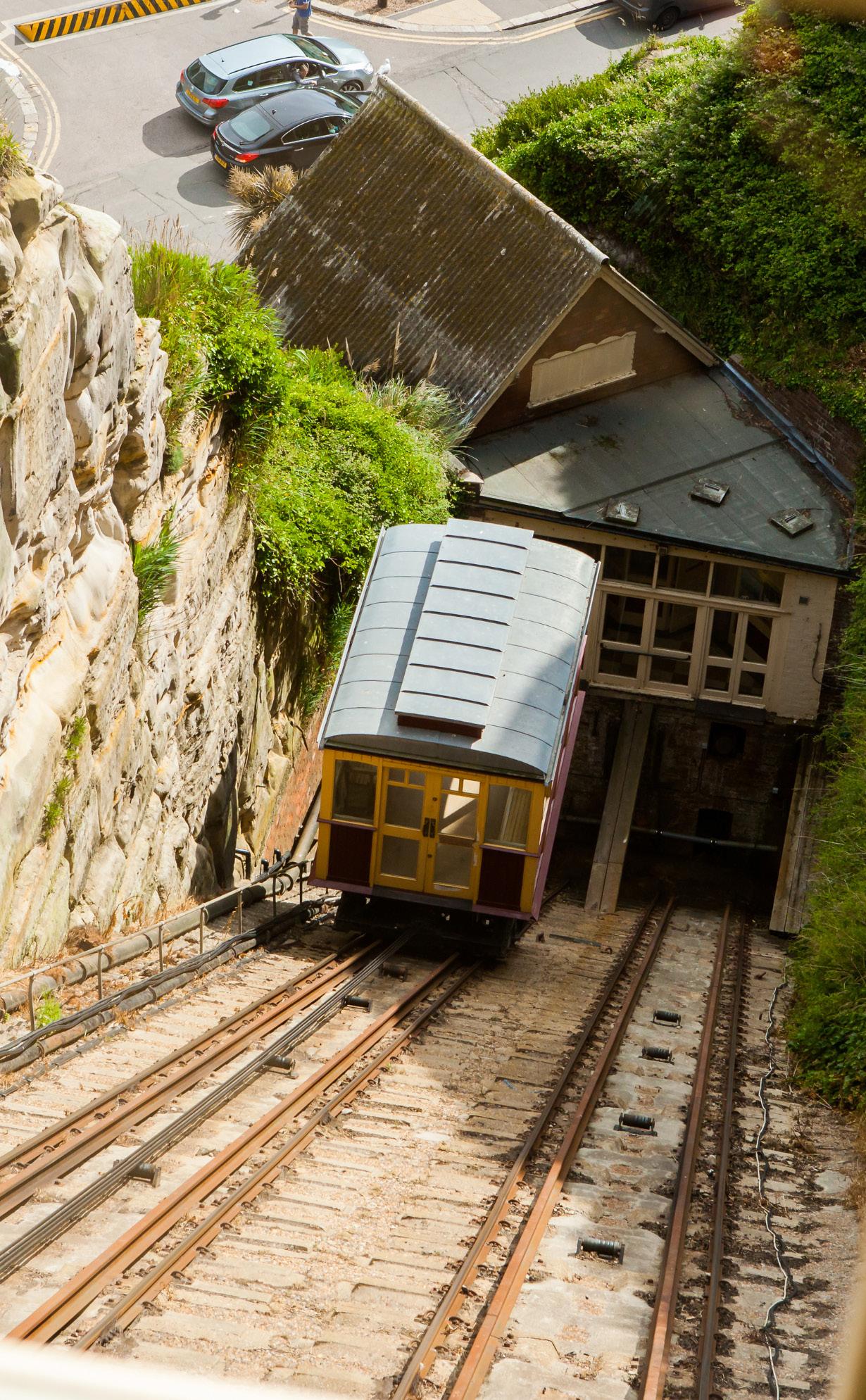
KINGSTON BAGPUIZE
www.kbhevents.uk

A picturesque family home in built in 1660’s, extensively remodelled in 1720’s in the style of Queen Anne. Beautifully proportioned panelled rooms furnished with English and French furniture. The mature parkland and garden display a wide variety of trees, shrubs, perennials and bulbs giving year-round interest and colour. Wedding venue & film location.
CONTACT Owner: Mrs Virginia Grant
Tel: 01865 820259
Email: info@kbhevents.uk
LOCATION Kingston Bagpuize, Abingdon, Oxfordshire OX13 5AX
Garden accessible by wheelchair.
OPENING TIMES Open on Selected dates February - September. Please see website for details.
ADMISSION Please see website for details.
Free parking is available. For pre-booked group visits 20+. Self guided tours on open days. Available on an exclusive basis, for civil ceremonies & receptions.
Tearoom on all open days.
See our website for events.
See ‘Corporate’ section of the website.

South East visitheritage.co.uk 100
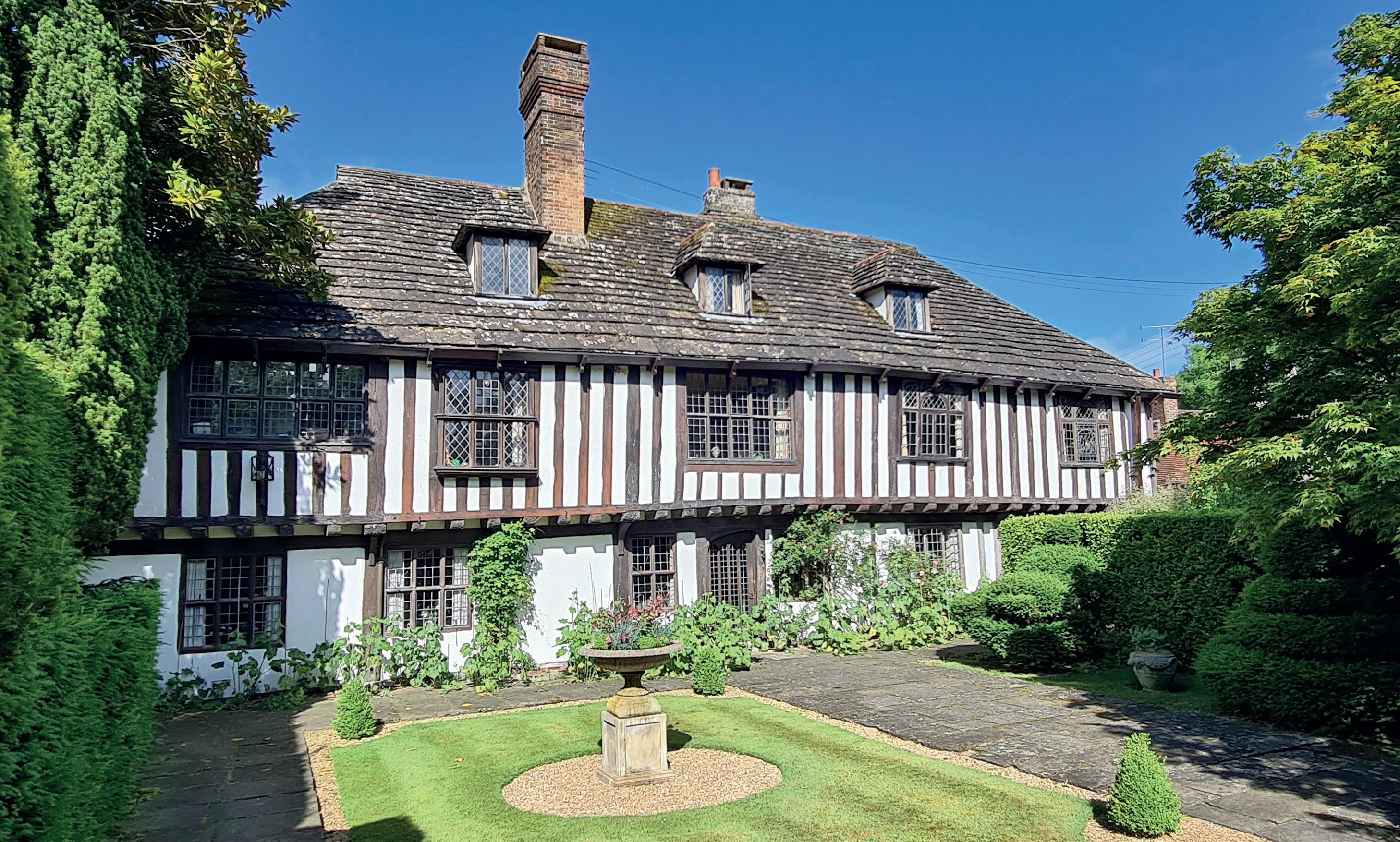
ST MARY’S HOUSE & GARDENS
www.stmarysbramber.co.uk
Enchanting medieval house and family home, winner of Hudson’s Heritage ‘Best Restoration’ award in 2011. Features in Simon Jenkins’ book ‘England’s Thousand Best Houses’. Fine panelled interiors, including unique Elizabethan ‘Painted Room’. Magnificent Victorian Music Room. Interesting family memorabilia and other fascinating collections.
Charming cottage-style tea room. Five acres of grounds. Formal gardens, an exceptional example of prehistoric tree Ginkgo biloba. ‘Secret’ Garden, with Victorian fruit-wall and rare pineapple pits, Rural Museum, Jubilee Rose Garden, Terracotta Garden, King’s Garden, unusual circular Poetry Garden, woodland walk and Landscape Water Garden with island and waterfall. A haven of tranquillity and beauty.
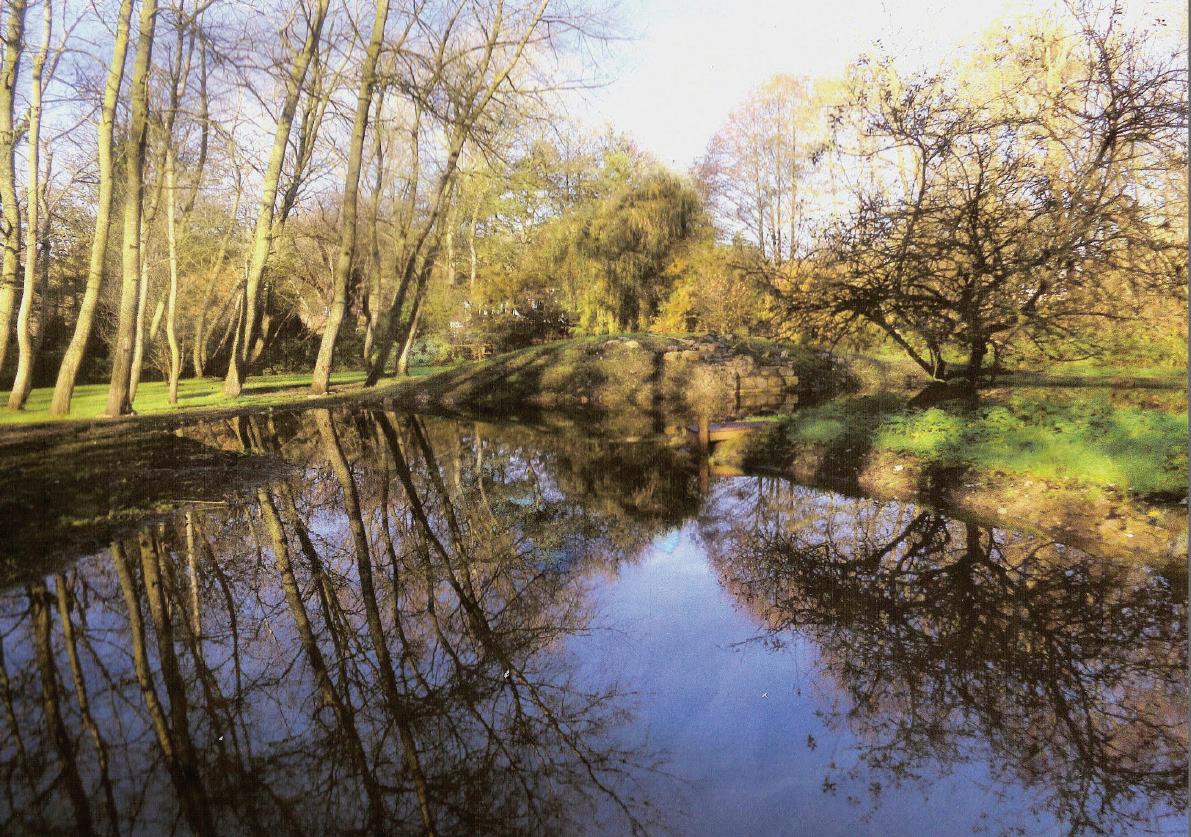
CONTACT
Owner: Mr Peter Thorogood MBE & Mr Roger Linton MBE
Tel: 01903 816205
Email: info@stmarysbramber.co.uk
LOCATION
Bramber, West Sussex BN44 3WE
Bramber village o A283. From London 56m via M23/A23 or A24. Buses from Brighton, Shoreham and Worthing. Map Ref: 3:H6
No photography in house. Printed room guides for visitors on open days. Obligatory for groups (max 55).Visit time 2½-3 hrs.
In main house and the tea rooms. Disabled toilets available.
Car park for visitors. 20 cars or 2 coaches.
Partial. Welcoming visitors with disabilities; please see access statement on the website.
Contact to organise a school visit for an educational experience.
A wide selection of refreshments are available in the cottage-style Orchard Tea Rooms.
Well-stocked gift shop selling souvenirs, collectables, books and music.
OPENING TIMES & ADMISSION
May-end Sept: Suns, Thur & BH Mons, 2-6pm.
Last entry 5pm. Groups at other days and times by arrangement. Please refer to website for current entrance prices. (www.stmarysbramber.co.uk)
Plant sales in restored 19th Century glasshouse.
Surrounded by formal and topiary gardens with fountains, perfect for private functions.
For events and concerts, see website and sign up to the mailing list for updates.
Elegant Victorian Music Room licensed for 90. Exclusive use of reception rooms & gardens.
South East 101 visitheritage.co.uk
CANTERBURY CATHEDRAL
www.canterbury-cathedral.org
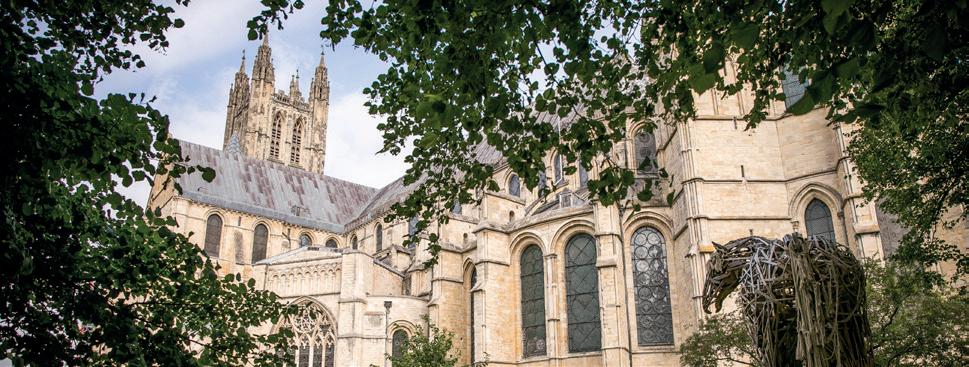
Established in 597, Romanesque and Gothic masterpiece and UNESCO World Heritage Site contains stories from Magna Carta to the Blitz, with King Henry IV and the Black Prince buried within. Following Archbishop Thomas Becket’s 1170 murder, his shrine became a popular pilgrimage site and Canterbury Cathedral continues the tradition of visitor welcome today.
CONTACT Email: melodie.robson@ canterbury-cathedral.org.
Tel: 01227 762862, Group enquiries: 01227 862749, Corporate: 01227 865350, Website: www.canterbury-cathedral.org, Email: visits@canterbury-cathedral.org
LOCATION The Precincts, Canterbury, CT1 2EH. Well served by M20 and M2 links to the rest of England.
Transport routes: Car, Bus, Train, Aeroplane, Ferry.
OPENING TIMES See website for up-to-date opening dates & times.
ADMISSION Adult £17.00. Annual ticket which allows unlimited entry for one year. (See website for Ts & Cs) Children under school age free. Free carer ticket when accompanying a visitor with a disability. Group discounts available, please contact the Visits Team.
REGULAR EVENTS Daily: Guided tours and mini talks (subject to availability).
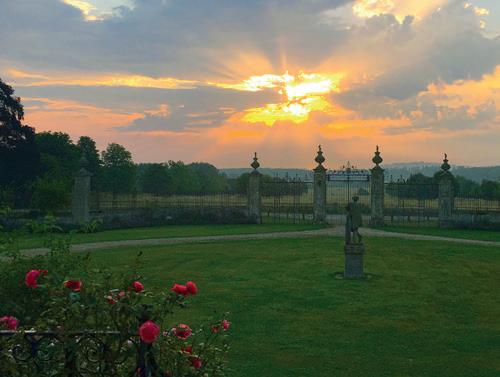
WOTTON HOUSE
The Capability Brown Pleasure Grounds at Wotton, currently undergoing restoration, are related to the Stowe gardens; both belonged to the Grenville family when Brown laid out the Wotton grounds between 1750 and 1767. A series of manmade features on the 3-mile circuit include bridges, temples and statues. Please note that only the Pleasure Grounds are open to the public, not the House.
CONTACT Owner: David Gladstone Tel: 01844 238363 Email: landscape@wottonhouse.com
LOCATION Wotton Underwood, Aylesbury, Buckinghamshire HP18 0SB Map Ref: 7:B11
Either A41 turn off at Kingswood, or M40/J7 via Thame. OPEN Every Wednesday from 3 April to 4th September; 2pm-5pm. Also: Monday 1 April, 27 May: 2pm-5pm. Saturday 22 June, 3 August, 24th August: 2pm-5pm. One guided tour per afternoon, starting at 2pm.
ADMISSION Adult £10, Children £5, Concessions £5. Groups max 25.
Limited parking for coaches. Accessible. Dogs welcome on leads.
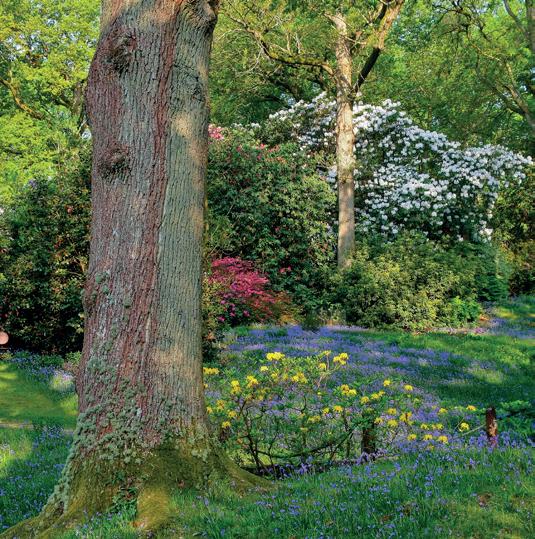
HIGH BEECHES
WOODLAND & WATER GARDEN
www.highbeeches.com
A beautiful woodland and water garden which has been sensitively planted with many rare trees and shrubs. A superb wildflower meadow and spectacular autumn colour.
CONTACT Sarah Bray
Tel: 01444 400589
Email: gardens@highbeeches.com
LOCATION High Beeches Lane, Handcross, West Sussex RH17 6HQ Map Ref: 4:I4
OPENING TIMES Everyday (closed Weds) 1 pm to 5pm.
ADMISSION Adult £10, Children (5-16) £4.

South East 102 visitheritage.co.uk
DORNEY COURT
www.dorneycourt.co.uk
‘One of the finest Tudor Manor Houses in England’Country Life. Grade I Listed and noted for its outstanding architectural and historical importance. Home of the Palmers for nearly 500 years, passing from father to son over 14 generations. Highlights include the magnificent Great Hall, oak and lacquer furniture and artwork which combine to tell the story of the House. The stunning Coach House Barn with its landscaped courtyard provides a beautiful space for events.
Film & photo shoots. Weddings. Events No stiletto heels.
Loos equipped with disabled facilities at the House and Kitchen Garden.
By special appointment. Min 20
The Tea Room offers a range of light snacks, homemade goodies, soft drinks & delicious cream teas.
Licensed. The Palmer Arms - good, hearty food in a classic pub setting. Plenty of free parking available. Garden centre (www.crocus.co.uk/dorney-court/).
Welcomes disabled visitors. Video tour of upstairs rooms.
Obligatory. A range of flexible options for visiting Dorney Court.
Gift shop offering stationery, postcards & mementos of a wonderful day.
Accepts Euros.
Flexible venue for conferences, meetings and launches.
For events & activity days, please see the ‘Events’ section of the website.
Perfect wedding reception venue with landscaped gardens and 12C Church. Perfectly suited for filming & photographic shoots; unquestionably unique with stunning backdrops. Guided tour aimed at the curriculum with a focus on the Tudors.
BEAULIEU
www.beaulieu.co.uk
Once the gatehouse of Beaulieu Abbey, Palace House has been the Montagu family home since 1538. Costumed guides will give you a flavour of life ‘below stairs’. Visit the restored Victorian Kitchen and discover The Art of Belinda, Lady Montagu. Founded in 1204, Beaulieu Abbey was largely destroyed during the Reformation. The conserved ruins and exhibition tell its story, while the National Motor Museum features over 285 vehicles. There is plenty to explore in the grounds, from the Victorian Flower and Kitchen Gardens to the informal Mill Pond Walk. Younger visitors will love the Little Beaulieu adventure play area.
Allow 4-5 hours for visits.
3 sets of disabled toilets on the site.
Baby changing facilities available.
Closed 25 Dec.
Unlimited.
Palace House Kitchen Shop & Main Reception Shop.
In grounds, on leads only.
Conferences, meetings or receptions.
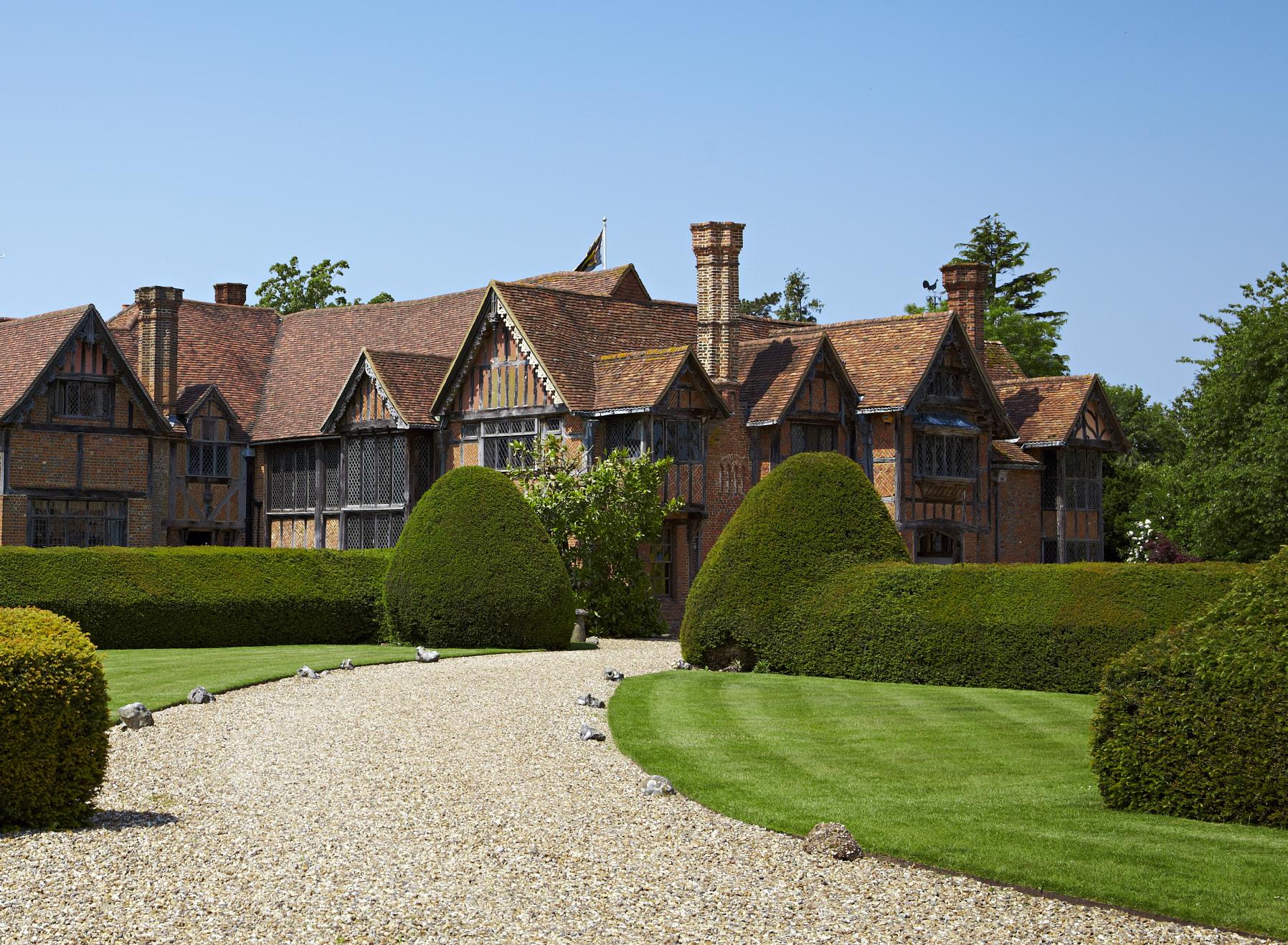
CONTACT Owner: James & Anna Palmer Tel: 01628 604638
Email: info@dorneycourt.co.uk Twitter: @dorneycourt
LOCATION Nr. Windsor, Berkshire SL4 6QP
Map Ref: 3:G2 5 mins off M4/J7, 10 mins from Windsor, 2m W of Eton.
OPENING TIMES June (every afternoon) 1230 - 1600.
ADMISSION Adult £13, Child £7.50, Concessions £11.
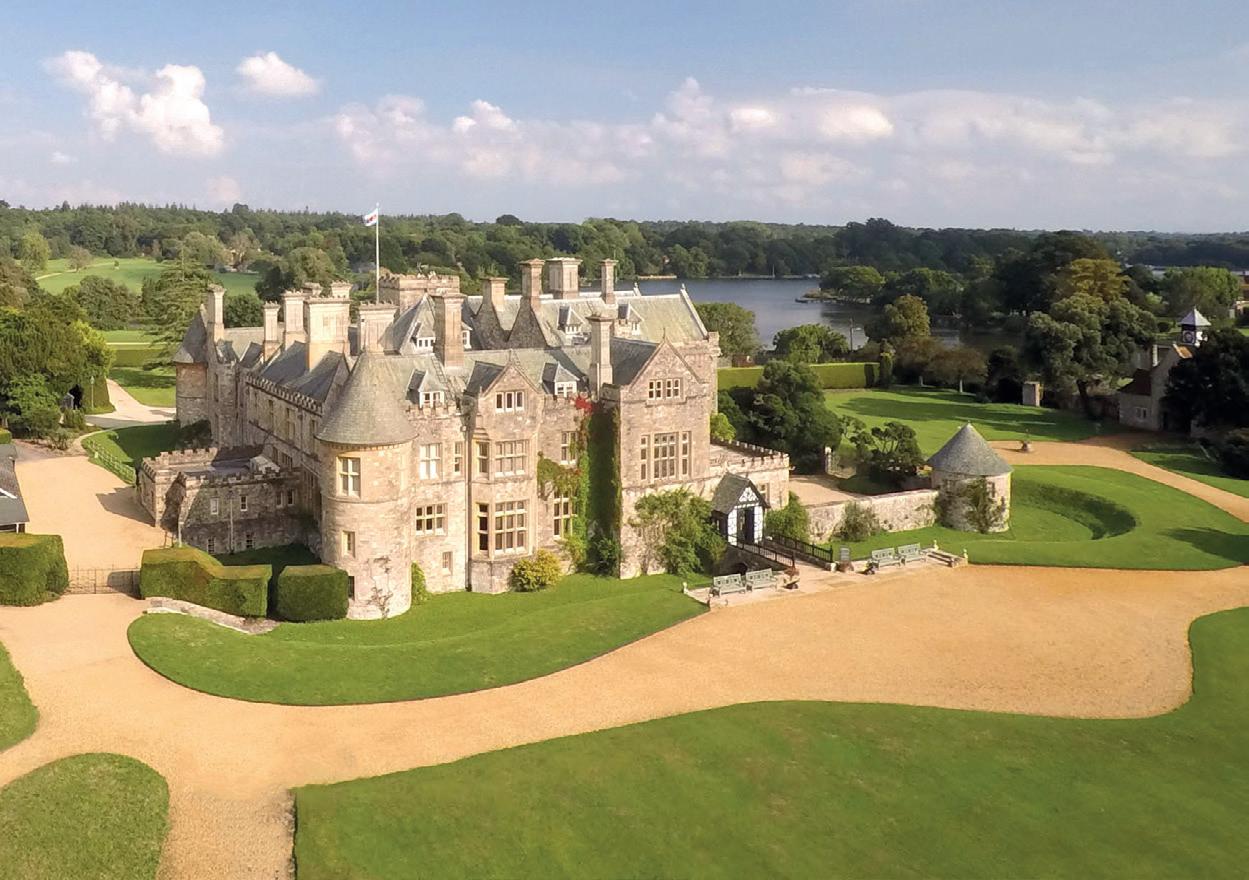
Cycle route through the estate.
Wheelchairs in Visitor Reception by prior booking.
Attendants on duty.
Professional staff available.
Sandwiches to cooked meals, and hot & cold drinks.
Seats 250.
Please see website.
Please see website.
OWNER Lord Montagu. CONTACT Visitor Enquiries: Tel: 01590 612345
Email: visit@beaulieu.co.uk LOCATION Beaulieu, Hampshire SO42 7ZN
Map Ref: 3:C6 M27 to J2, A326, B3054 follow brown signs. Take the local bus service within the New Forest. There is a Station at Brockenhurst 7m away. OPENING TIMES Summer Whitsun-Sep Daily, 10am-6pm. Winter Oct-Whitsun Daily, 10am-5pm. Please check website for exact dates.
ADMISSION All year individual and group rates upon application.
Group Discount: 15+. REGULAR EVENTS Beaulieu hosts a range of family-friendly and motoring themed events throughout the year. Visit www.beaulieu.co.uk for details.
South East 103 visitheritage.co.uk

NYMANS
www.nationaltrust.org.uk/ nymans
A garden for all seasons, with rare and unusual plant collections, set around a romantic house and partial ruins. The comfortable, yet elegant, house reflects the personalities and stories of the talented Messel family.
CONTACT Tel: 01444 405250 LOCATION Staplefield Road, Handcross, Haywards Heath, West Sussex, RH17 6EB OPENING TIMES House: Open all year 11am-4pm*, Mon-Sun Garden, café & shop: Open all year 10am-5pm*, Mon-Sun. Woodland: Open all year, 7am-8pm, Mon-Sun ADMISSION See website for Admission costs.
On-Site café/restaurant/catering. Gift Shop. Public toilets.
*Exceptions apply, check website for opening times.
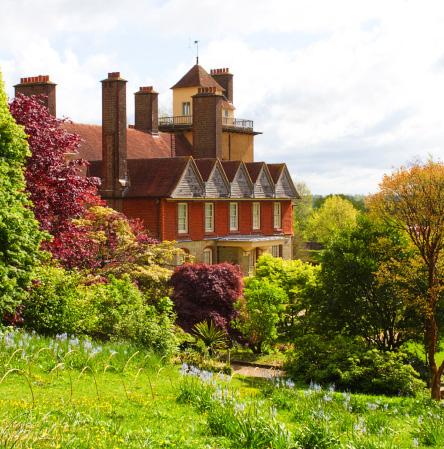
CONTACT Tel: 01342 323029
STANDEN
www.nationaltrust.org.uk/ standen-house-and-garden
Arts and Crafts family home designed by Philip Webb with Morris & Co. interiors, set in a beautiful hillside garden with views across the Sussex countryside. On the wider estate, footpaths lead into Ashdown Forest and the High Weald Area of Outstanding Natural Beauty.
LOCATION West Hoathly Road, East Grinstead, West Sussex, RH19 4NE
OPENING TIMES House, garden, café and shop open all year round 10am – 5pm (exceptions apply). For admission times please see the website.
On-Site café/restaurant/catering. Gift Shop. Public toilets.

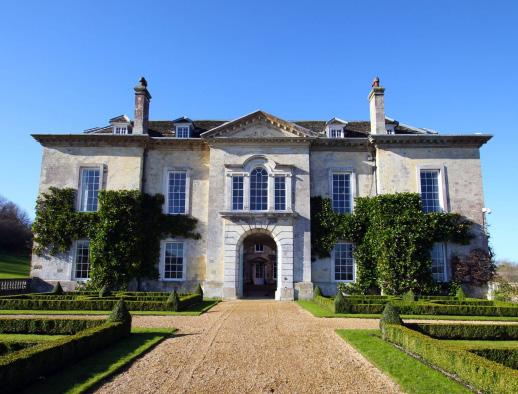
FIRLE PLACE
www.firle.com
An outstanding country house, dating from the time of Henry VIII and substantially remodelled in the Georgian period. Home of the Gage family, it houses an exemplary collection of works of art and Sèvres porcelain.
CONTACT 01273 858307 Email: events@firle.com LOCATION Firle, Nr Lewes, East Sussex Map Ref: 4:J6 4m SE of Lewes on A27 Brighton/Eastbourne Road. OPENING TIMES Please see website for 2024 summer season opening days and times. Tea Room is open to all on house opening days only ADMISSION Please see the website. All tickets can be pre-booked online. Contact the Events Team for group tours - 01273 977364.
Wheelchair access to the ground floor and Tea Room only In grounds on leads and outside on tea terrace Exclusive out of hours guided tours Tea room, please see website for details Available for private hire Please see website for special events For details on weddings, contact weddings@firle.com
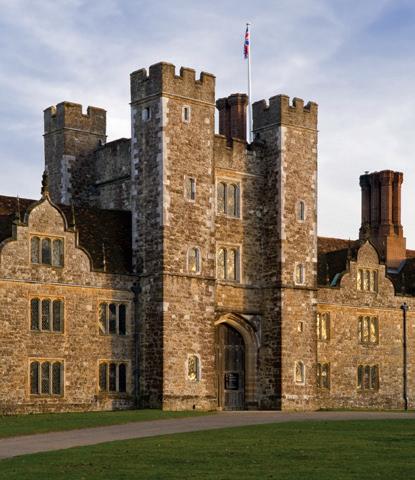
KNOLE
www.nationaltrust.org.uk/knole
Discover this magnificent 600-year-old estate, with grand courtyards, vast parkland and historic showrooms with collections of Royal Stuart furniture and paintings by renowned artists. Take in panoramic views from the top of the Gatehouse Tower. The Brewhouse Café is open for drinks, snacks and light lunches, while the gift shop offers souvenirs, fashion and home accessories, food and drink, and locally made gifts. In the bookshop you’ll find titles inspired by Knole’s collections and literary history as well as a children’s area filled with toys and books. This year we’ll also be exploring the story of Vita Sackville-West’s life at Knole through to her wedding in 1913.
CONTACT Tel: 01732 462100 Email: knole@nationaltrust.org.uk
LOCATION Sevenoaks, Kent, TN15 0RP (Sat nav TN13 1HX).
OPENING TIMES & ADMISSION Please see our website for more details.
NETHER WINCHENDON HOUSE
Nether Winchendon House, Nr. Aylesbury HP18 0DY
Email: contactus@netherwinchendonhouse.com Website: netherwinchendonhouse.com Open: 2024: 2.30-5.30pm on May 7-24th & May 27-June 6th (exc. all Sats); Aug 26 & 27th. Adm: £10.00 guided tours only at quarter to each hour. Pre-booking required via house website. HHA: No concessions on Sundays or Bank Holidays. OAP: No concessions. Private groups at any time by appointment.
BROADLANDS
Romsey, Hampshire SO51 9ZD.
Broadlands is the historic home of the Mountbatten family. Map Ref: 3:C5 Email: housetours@broadlandsestates.co.uk
Tel: 01794 505080 Website: www.broadlandsestates.co.uk
Open: Tues 19th March to Mon 1st April and Tue 13th August to Mon 26th August. Please see the website for more info.
PARHAM HOUSE & GARDENS
Pulborough, West Sussex, RH20 4HR.
Set within an ancient deer park below the South Downs, Parham is one of the country’s finest Elizabethan Houses.
Tel: 01903 742021 Email: enquiries@parhaminsussex.co.uk
Website: www.parhaminsussex.co.uk ///this.songbird.contain
Open: 31 Mar -13 Oct 2024, Wed, Thurs, Fri & Sun. 12-5pm.
HOUGHTON LODGE GARDENS
Stockbridge, Hampshire SO20 6LQ
Tel: 01264 810502 Email: info@houghtonlodge.co.uk
South East 104 visitheritage.co.uk

105 visitheritage.co.uk
• St Ives
• Penzance
SOUTH WEST
CORNWALL • DEVON • DORSET
SOMERSET • WILTSHIRE • GLOUCESTERSHIRE
• Barnstaple Chipping Campden • Okehampton • Tavistock •

GLOUCESTER SHIRE SOMERSET
• Marlborough • Chippenham
• Devises • Swindon
WILTSHIRE DORSET
• Yeovil
CORNWALL DEVON
• Padstow Dartmouth • • Torquay
COUNTRYSIDE
Jurassic Coast
Dartmoor, Exmoor, Bodmin Moor
Surfing beaches
HERITAGE
Drake & Raleigh
King Arthur
Tin mining heritage
FOOD
Seafood
Cornish pasties
Clotted cream
visitheritage.co.uk 106
Gloucester Bristol Wells Truro Bath Salisbury Exeter Plymouth
SOUTH WEST
Events

BRISTOL INTERNATIONAL BALLOON FIESTA
8th - 11th August 2024
The Bristol International Balloon Fiesta is Europe’s largest annual meeting of hot air balloons, attracting over 130 hot air balloons from across the globe. The Fiesta truly is a sight that can only be seen in Bristol.

BUDLEIGH SALTERTON LITERARY FESTIVAL
18th - 22nd September 2024
Budleigh Salterton Literary Festival, held in the charming coastal town in Devon, England, is an annual celebration of literature and the arts. Featuring a diverse line up of authors, speakers, and workshops, the festival fosters a love for reading and intellectual exploration. Its scenic setting adds a special charm to this cultural event.

BATH MOZARTFEST
Dates throughout November 2024
Bath Mozartfest, an annual classical music festival held in the historic city of Bath, England, is a celebration of Wolfgang Amadeus Mozart’s enduring legacy. Renowned musicians perform Mozart’s masterpieces in various venues, creating a harmonious blend of music and heritage. The festival enriches Bath’s cultural tapestry with its classical brilliance.

107 visitheritage.co.uk
MINTERNE GARDENS
www.minterne.co.uk

Landscaped in the manner of ‘Capability’ Brown, Minterne’s unique garden has been described by Simon Jenkins as ‘a corner of paradise’. 20 wild, woodland acres of magnolias, rhododendrons and azaleas providing new vistas at each turn, with small lakes, streams and cascades. Private House tours, dinners, corporate seminars and weddings.
CONTACT Owner/Contact: Lord Digby
Tel: 01300 341370
Email: enquiries@minterne.co.uk
LOCATION Minterne Magna, Nr Dorchester, Dorset DT2 7AU Map Ref: 2:O6 On A352 Dorchester/Sherborne Road, 2 miles North of Cerne Abbas.
Parking is free for visitors in the car park opposite St Andrews Church. Picnic tables in car park.
Serves as a spectacular venue for guests seeking a private dining experience.
Features various steep and uneven surfaces and are therefore NOT advised for wheelchairs.
OPENING 2024: 1st February to 6th November. RHS Members free entry 1st February to 5th November.
ADMISSION Adult £8, Child (accompanied by an adult) Free. Season Tickets available.
Café on East Terrace open from 10.30am, Apr - Oct (weather permitting) Light lunches & cream teas.
Offering a small & intimate wedding venue for licensed civil ceremonies or large reception for your wedding.
Toilet facilities available.
STANWAY HOUSE & WATER GARDEN
www.stanwayfountain.co.uk
‘As perfect and pretty a Cotswold manor house as anyone is likely to see’ (Fodor’s Great Britain 1998 guidebook) Stanway’s beautiful architecture, furniture, parkland and village are complemented by the restored 18th Century water garden and the magnificent fountain, 300 feet, making it the tallest garden and gravity fountain in the world. The Watermill in Church Stanway, now fully restored as a working flour mill, was re-opened my HM in 2009. Its massive 24-foot overshot waterwheel, 8th largest waterwheel in England, drives traditional machinery, to produce stoneground Cotswold flour.
Toilet facilities available.
Group visits all year round.
Parking available.
SEZINCOTE www.sezincote.co.uk

Exotic oriental water garden by Repton and Daniell.
Large semi-circular orangery. House by S P Cockerell in Indian style was the inspiration for Brighton Pavilion.
CONTACT Contact: Dr E Peake
Tel: 01386 700444 Email: enquiries@ sezincote.co.uk
LOCATION Moreton-In-Marsh, Gloucestershire GL56 9AW Map Ref: 6:P10 -2 miles west of Moretonin-Marsh on the A44 opposite entrance to Batsford Arboretum.
ADMISSION House and Garden £15 adult, £9 children (16 and younger), Garden Only £9 adult, £3 children (16 and younger).
OPENING TIMES House open Wednesdays, Thursdays, Fridays and Bank Holiday Mondays 11am-5pm May-September inclusive.
House tours should be prebooked on Book Your Visit page of our website. Garden open Wednesdays Thursdays Fridays and Bank Holiday Mondays 11am-5pm January-November inclusive. No need for pre-booking.
Please see our website for up-to-date events and special openings. Obligatory.
Tea and cake served May to Sept. Garden open all year apart from Dec.
For information for disabled visitors email: enquiries@sezincote.co.uk.
A theatrical and magical summer venue and hosts six weddings a year.
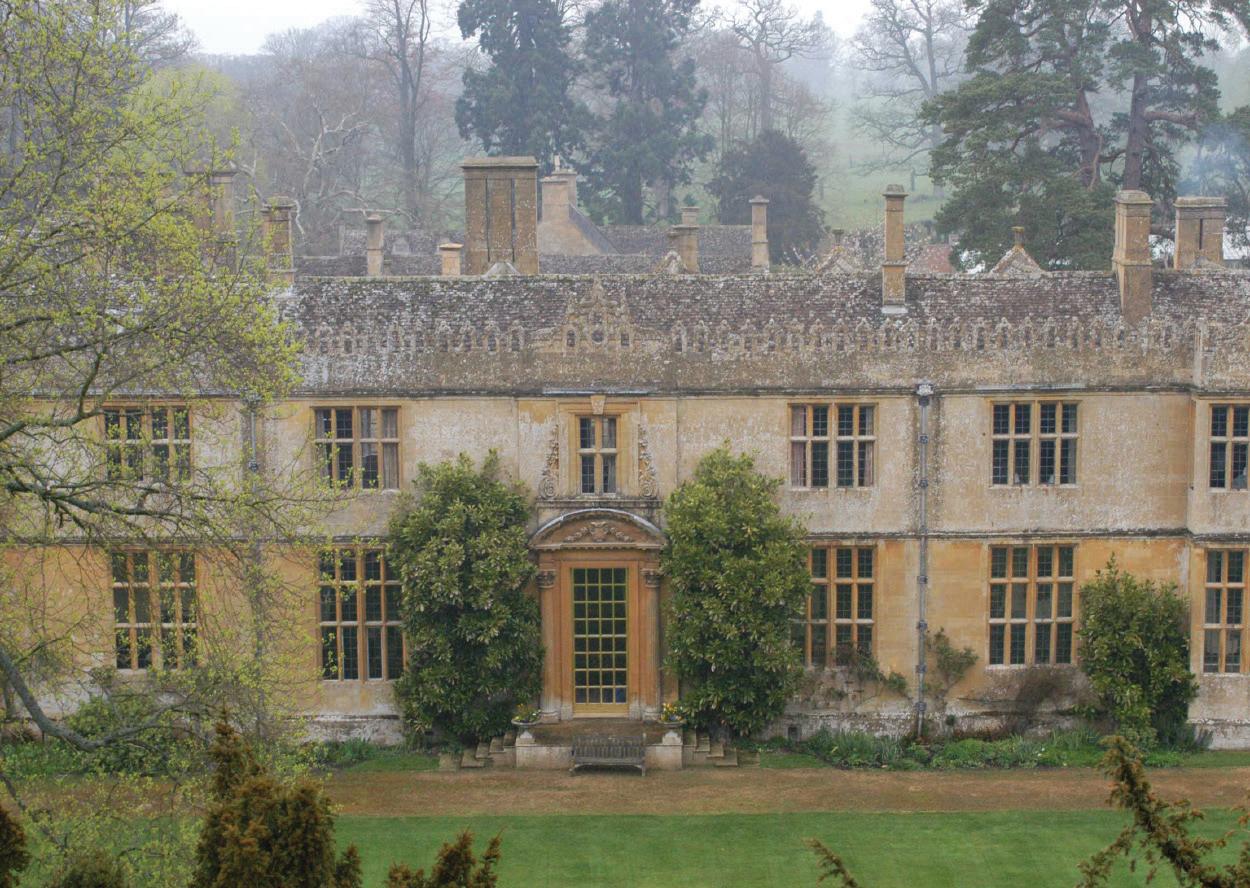
School tours of the Water Mill by arrangement.
Telephone for full details of access. Please contact for all corporate enquiries.
Dogs are welcome in the grounds of Stanway. Please keep on leads.
Audio tours available.
Group visits, coach parties & personal tours can be arranged any time of year.
The perfect venue for wedding receptions.
Film and photographic location.
For all upcoming events please see the ‘News & Events’ section of the website.
CONTACT Owner: The Earl of Wemyss and March Contact: Debbie Lewis Tel: 01386 584528 Tours: 07850 585539 Email: office@stanwayhouse.co.uk LOCATION Stanway, Cheltenham, Gloucestershire GL54 5PQ Map Ref: 6:O10 - North of Winchcombe, just off B4077. OPENING TIMES House & Garden: Jun - Aug: Tue & Thu, 2pm - 5pm. Private Tours: By arrangement at other times. ADMISSION Please see
for up-to-date admission prices.
website
Teas, cold drinks and ice cream available.
108 visitheritage.co.uk
South West

HEMERDON HOUSE hemerdonhouse.co.uk
Situated in the beautiful South Hams area of Devon, and set in its own parkland, Hemerdon House was built in the late 18th century by the ancestors of the current owners. Members of the family offer guided tours of the interior on certain days of the year and visitors are also welcome to explore the grounds on those days. The house contains a wealth of local history, with naval and military mementos, paintings, furniture, china and silver collected by the family through many generations.
CONTACT Tel: 07704 708416 Email: hemerdon.house@gmail.com LOCATION Plympton, Devon PL7 5BZ Map Ref: 2:I9 SatNav directions may be misleading so please see website for directions. OPENING TIMES See website for dates. ADMISSION Please see website.
Parties of 6 or more please contact us in advance; parties of 10 or more by prior arrangement only. Toilet facilities available. Free parking. Partial access - please see website for details. Dogs on leads are permitted in the grounds while the house is open. Two tours, approximately 1 hour 15 minutes each, starting at 2.30pm and 4pm.

CAERHAYS ESTATE visit.caerhays.co.uk
Nestled in a sheltered valley on the south coast of Cornwall near Mevagissey you’ll find the world class, magnificent 140 acre woodland garden at Caerhays Castle, often described as a spring-time wonderland for visitors. Home to a National Magnolia Collection, the gardens are also famous for their camellias, rhododendrons and azaleas. Caerhays is a member of the Great Gardens of Cornwall.
CONTACT Tel: 01872 501310 enquiries@caerhays.co.uk
LOCATION Caerhays, Gorran, St Austell, Cornwall PL26 6LY
OPENING TIMES The Gardens are open daily from the 12th February - 16th June 2024. 10am - 5pm (last entry 4pm). The Castle is open for guided tours from the 11th March - 7th June 2024, Monday to Friday (not inc. bank holidays). Booking advised.
ADMISSION Please check website.

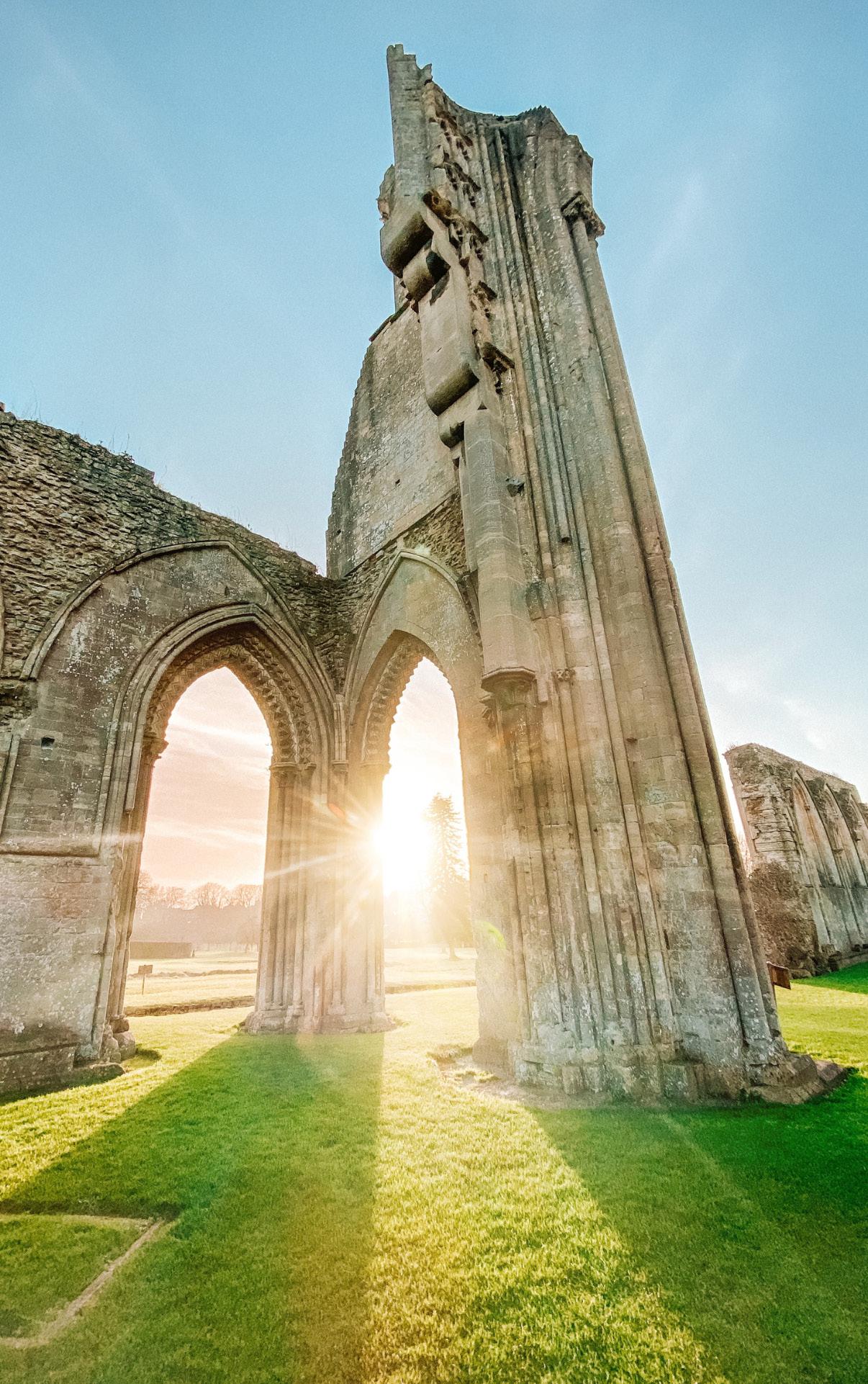
DEANS COURT www.deanscourt.org

An historic private house and garden that has been lived in for 1,300 years. Guided Tours: 10am, 11.30am, 1pm. (approx. 80 mins) Meet at gate on Deans Court Lane.
CONTACT Owner: Sir William & Lady
Hanham Contact: Jonathan Cornish
Tel: 01202 849314
Email: info@deanscourt.org
LOCATION Deans Court Lane, Wimborne, Dorset BH21 1EE , Map Ref: 3:B6
Follow signs to Wimborne Town Centre; pass through the Square, at the end of the
High St. cross the junction (opp. Holmans TV shop) into Deans Court Ln.
OPENING TIMES April 2, 7, 9, 14, 16, 21, 23, 28, 30. May 6, 7, 12, 14, 19, 21, 27, 28. June 2, 4, 11, 18, 25. July 2, 9, 16, 23, 30. Aug 26.
ADMISSION Adults £8, Senior (60+) £6, Child (under-16) & HHA Friend Free.
Parking available only on NGS open days. Three holiday properties, sleeping up to 28.
Restricted access, contact us for further details.
Dogs welcome on NGS open days only.
Tour times: 10am, 11:30am & 1pm.
Meet at the gate on Deans Court Lane.
Healthfood Café. Homestore.
Beautiful venue for licensed weddings. 20 pers. max.
KIFTSGATE COURT GARDENS
www.kiftsgate.co.uk

Kiftsgate is a glorious garden to visit throughout the seasons with spectacular views. Three generations of women gardeners have designed, planted and sustained this garden.
The upper gardens around the house are planted to give harmonious colour schemes, whilst the sheltered lower gardens recreate the atmosphere of warmer countries. The giant Kiftsgate rose rampages here.
A modern water garden provides an oasis of tranquillity and contrast to the exuberance of the flower gardens. Plants from the garden are available for sale on open days.
CONTACT Owner: Mr & Mrs J G Chambers
Contact: Mr J G Chambers, Tel: 01386 438777 Email: info@kiftsgate.co.uk
LOCATION Chipping Campden, Gloucestershire GL55 6LN Map Ref: 6:O94 miles North East of Chipping Campden. ¼ mile West of Hidcote Garden.
OPENING TIMES May, June, July and August; Sun -Thurs, 12 noon - 6pm. April; Sun, Mon and Wed. 2pm to 6pm. Sept; Sun, Mon and Wed. 12 noon to 6pm.
ADMISSION Adults £11; Children £3; Season Ticket £ 30.
South West 109 visitheritage.co.uk
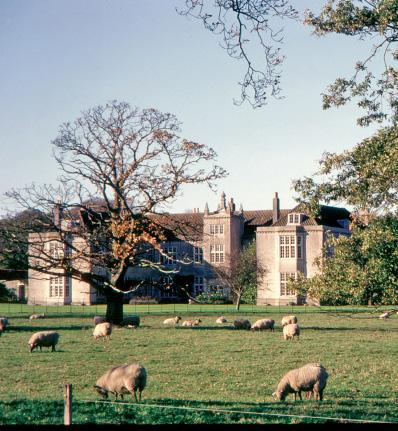
FAIRFIELD HOUSE
www.historichouses.org/house/fairfield
Traditional Elizabethan E-plan House, first built as early as 1166. Family home of the Acland-Hood family for over eight centuries. The oldest part of the building is the west wing, dating to the medieval period.
CONTACT Tel: 01278 732251 or email: fairfieldvisits@gmail.com
LOCATION Stogursey, Bridgwater, Somerset, TA5 1PU.
OPENING TIMES & ADMISSION For opening times and admission please check our website: www.historichouses.org/house/fairfield
Parking available. Dogs welcome on leads at all times. Member of Historic Houses.

TREWITHEN GARDENS & PARKS
www.trewithengardens.co.uk
Trewithen means ‘house of the trees’ and the name truly describes this early Georgian house in its wood and parkland setting. The 30 acre garden is an International Camellia Society Garden of Excellence (1 of only 5 in the UK) and is also renowned for its rhododendrons, magnolias and Champion Trees.
CONTACT Tel: 01726 883647 or email: office@trewithenestate.co.uk LOCATION
Grampound Road, Nr Truro, Cornwall TR2 4DD Map Ref: 1:E9 - On the A390 between Truro & St Austell. OPENING TIMES Gardens and Tea Shed open March 1st to September 30th House opening dates to be confirmed. Please refer to www.trewithengardens.co.uk for further information. ADMISSION Please refer to our website www.trewithengardens.co.uk for pricing. No photography inside. Toilet & disabled toilet. Parking available also for coaches. Partially, mostly level gravel paths. Dogs welcome on leads at all times. Please contact for guided tour details. The Tea Shed, shop & plant centre.
LULWORTH CASTLE
www.lulworth.com
Lulworth Castle was built in the seventeenth century and is steeped in history. Built as a hunting lodge to entertain aristocracy and royalty, it was, for centuries, the seat of the Weld family. Ravaged by fire in 1929, it has now been partly restored in a pioneering partnership between the Weld family and English Heritage.
Learn about the family history, discover the changes to the building over the years and climb the tower for panoramic views of the rolling Purbeck countryside. Within the grounds sits the magnificent Chapel of St Mary, one of Dorset’s finest pieces of Georgian architecture. Extensive parkland, woodland walks and a children’s playground are yours to explore, walk the dog or enjoy a picnic. Enjoy coffee & cake in the castle tearoom and browse our range of souvenirs or visit the nearby Weld Arms, a traditional coaching inn, to enjoy local ciders and freshly made dishes.
Toilet facilities available.
Parking available.
Tearoom.
Suitable for Disabled People. Private hire.
Special events.
Dogs are welcome. Weddings.

ORCHARD WYNDHAM
www.orchardwyndham.com
This is a beautiful medieval house and home, which has been in the same family for over 800 years. Many layers of fascinating history and intriguing stories. A real hidden gem.
CONTACT Tel: 01984 632309 Email: house@wyndhamestate.co.uk
LOCATION Williton, Taunton, Somerset TA4 4HH.
OPENING TIMES Please check website.
ADMISSION Please check website.
Parking Available. Toilet facilities available. Guided Tour. Member of HH giving free access under HH Friends Scheme.

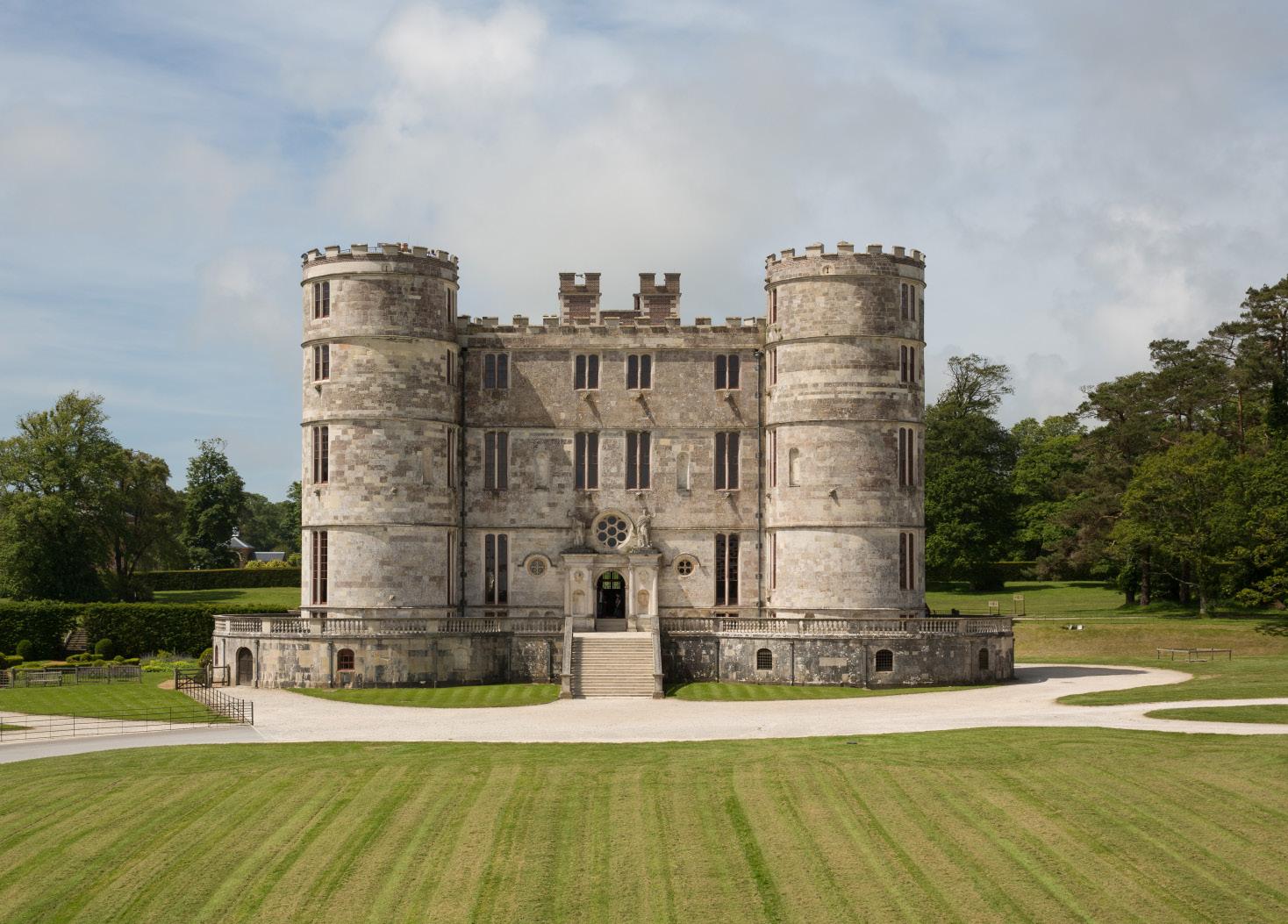
CONTACT Tel: 01929 400352 Email: info@lulworth.com
LOCATION East Lulworth, Wareham, Dorset, BH20 5QS.
OPENING TIMES Sun-Thurs, Mar-Dec 10:30am-5pm (4pm winter months)
ADMISSION Please check website for pricing. www.lulworth.com
Historic House & English Heritage members free. Car Parking £3 for all day.
Educational Visits.
Baby Changing. Restaurant. Historic Houses free access.
South West 110 visitheritage.co.uk
SALISBURY CATHEDRAL
The Close, Salisbury, Wiltshire, SP1 2EJ
A medieval masterpiece, with an original 1215 Magna Carta and the UK’s tallest spire.
Tel: 01722 555120 Email: visitors@salcath.co.uk
Website: www.salisburycathedral.org.uk Open: Subject to season, please see website. Admission: (When pre-booked online) Adult £10, Students 17+ £7.50, Young people (12-16) £6.50, Under 11 free.
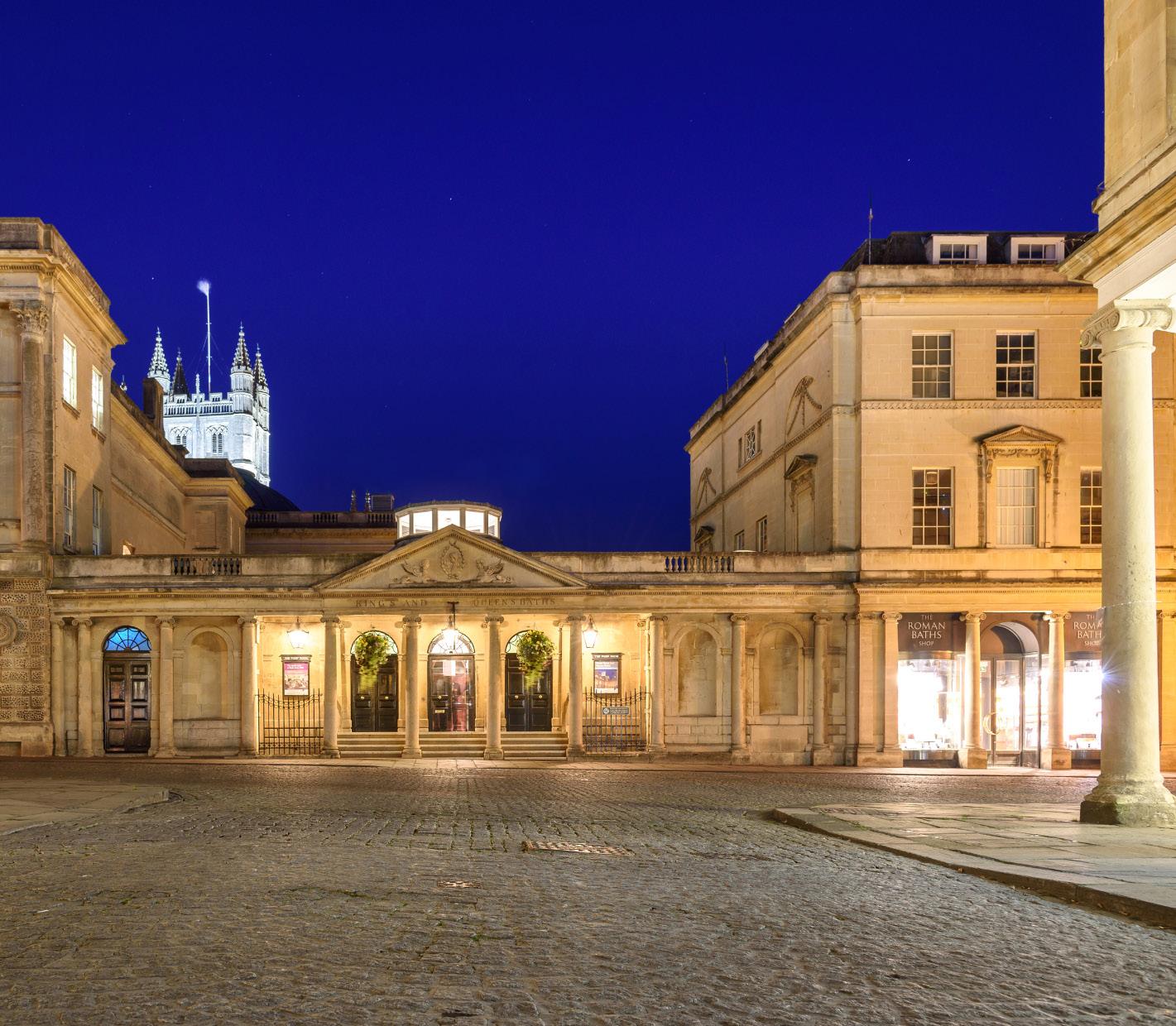

KELMSCOTT MANOR
www.kelmscottmanor.org.uk
Visit Kelmscott Manor, the inspirational country retreat of William Morris, Father of the Arts and Crafts Movement and explore the historic manor he described as “Heaven on Earth”. The Grade 1 listed Farmhouse welcomes visits from around the world every year to experience the same beauty and sense of history that inspired Morris.
Discover the treasures inside including William Morris’s own ceramics, textiles, metalwork and books; furnishings from each of Morris’s London homes; examples of Jane and May Morris’s beautiful and expert needlework; and 17th- and 18th-century furniture and decorations owned by the Turner family, who built the Manor. Stroll around the Manor’s enchanting gardens, original barns, dovecot, stream and meadow – a landscape that was a constant source of inspiration for William Morris.
Enjoy our licensed Tearoom, serving delicious cream teas and light meals – all homemade from locally-sourced products. Step inside our charming shop, located in an historic barn, for unique gifts. Families can drop into our brand-new Learning Barn for crafts and activities that will help you get creative and curious around our special site.
Well behaved dogs on a lead welcome except in the formal garden and house. Assistant dogs welcome.
Toilets including accessible toilet and baby changing facilities.
CORSHAM COURT
Corsham, Wiltshire SN13 0BZ
Historic collection of paintings and furniture. Extensive gardens.
Map Ref: 3:A2 Tel: 01249 701610 \ 01249 712214 Email: staterooms@ corsham-court.co.uk Website: corsham-court.co.uk
Open: T/W/Th/S/Sun 20 Mar-30 Sep, 2-5.30pm. Wkds only: 1 Oct-19 Mar, 2-4.30pm (Closed Dec) Admission: House & Gdns: Adult £12.50 Child £6 Gdns: Adult £5 Child £2.50.
TIVERTON CASTLE
Park Hill, Tiverton, Devon EX16 6RP
Ancient fortified Saxon site became historic Castle first built in 1106 by early Norman Earls of Devon. Captured and slighted in Civil War and partially rebuilt by later owners. Beautiful garden.
Map Ref: 2:K5 Tel: 01884 253200 Email: info@tivertoncastle. com Website: www.tivertoncastle.com Open: Please see website for up to date opening times Admission: See website.
CADHAY
Ottery St Mary, Devon EX11 1QT
Cadhay is a Tudor Manor House. Map Ref: 2:L6 Tel: 01404 813511
Website: www.cadhay.org.uk Open: May-Sept, Fri 2pm-5pm also Late May and Aug Bank Holiday, Sat, Sun and Mon 2-5pm
Admission: Guided Tours - £10 adults, £3 children (over 5yrs). Entrance to gardens only– £5 adults, £1 children (over 5yrs).
WHITTINGTON COURT
Cheltenham, Gloucestershire GL54 4HF
Elizabethan & Jacobean manor house with church.
Map Ref: 6:N11 - 4m E of Cheltenham on N side of A40.
Website: www.whittingtoncourt.co.uk Tel: 01242 820556
Email: lucy@whittingtoncourt.co.uk
Open: 30 March-14 April and 10-26 August, 2-5pm.
Admission: Adults £6, Children £1 and OAPs £5.

CONTACT
Tel: 01367 252486
Email: admin@kelmscottmanor.org.uk
LOCATION
Kelmscott, Lechlade, Gloucestershire GL7 3HJ.
OPENING TIMES
Free parking at edge of village a 10 minute stroll from the Manor- a free shuttle bus is available for visitors unable to make the walk to the Manor.
Disabled access to ground floor of Manor, grounds, tearoom and shop.
April-October Thursday, Friday and Saturday 10.30am-5.30pm.
ADMISSION Adult £14.50, Concession (Student, Child, Accessible) £8.75, Family (2 Adults and up to 2 Children) £34.50.
South West 111 visitheritage.co.uk
EAST of ENGLAND

COUNTRYSIDE
The Fens
The Broads
Constable Country
HERITAGE
Oliver Cromwell
Wool churches
Garden cities FOOD
Cromer crab
Norfolk turkeys Mustard
• Wells-next -the-Sea
• Cromer
• Huntingdon
CAMBRIDGE SHIRE
• Letchworth
BEDFORD SHIRE ESSEX
• Luton
HERTFORD SHIRE
• St Albans
BEDFORDSHIRE • CAMBRIDGESHIRE • ESSEX
HERTFORDSHIRE • NORFOLK • SUFFOLK
NORFOLK
SUFFOLK
Peterborough
Bedford
Norwich
Ely
Ipswich
Chelmsford
Cambridge
visitheritage.co.uk 112
Hertford
Events

EAST OF ENGLAND
CAMBRIDGE FRINGE 2024
25th - 26th May 2024
Situated in the historic city of Cambridge, Cambridge Fringe is a comedy festival and a vibrant platform for emerging and established artists to showcase their creative talents and engage with a discerning audience from all walks of life.

BLACK SHUCK FESTIVAL
2nd - 4th August 2024
The Black Shuck Festival is a unique festival celebrating folklore, imagination, and storytelling in its many forms, based on the strange and terrible wonder that is the Black Dog of Bungay!
From theatre, music and performance, to art, literature, and history, the Black Shuck festival will offer exciting and thrilling activities for all ages and abilities, immersing visitors in the rich folklore of the region.

HARWICH INTERNATIONAL SHANTY FESTIVAL
11th - 13th October 2024
Harwich will come alive with the sound of shanties at the International Shanty Festival. Join in the singing, listen to musicians along the quay, or take a barge trip with on-board entertainment. There are also shanty trains, pirates, street theatre, and historical re-enactments to enjoy.

113 visitheritage.co.uk
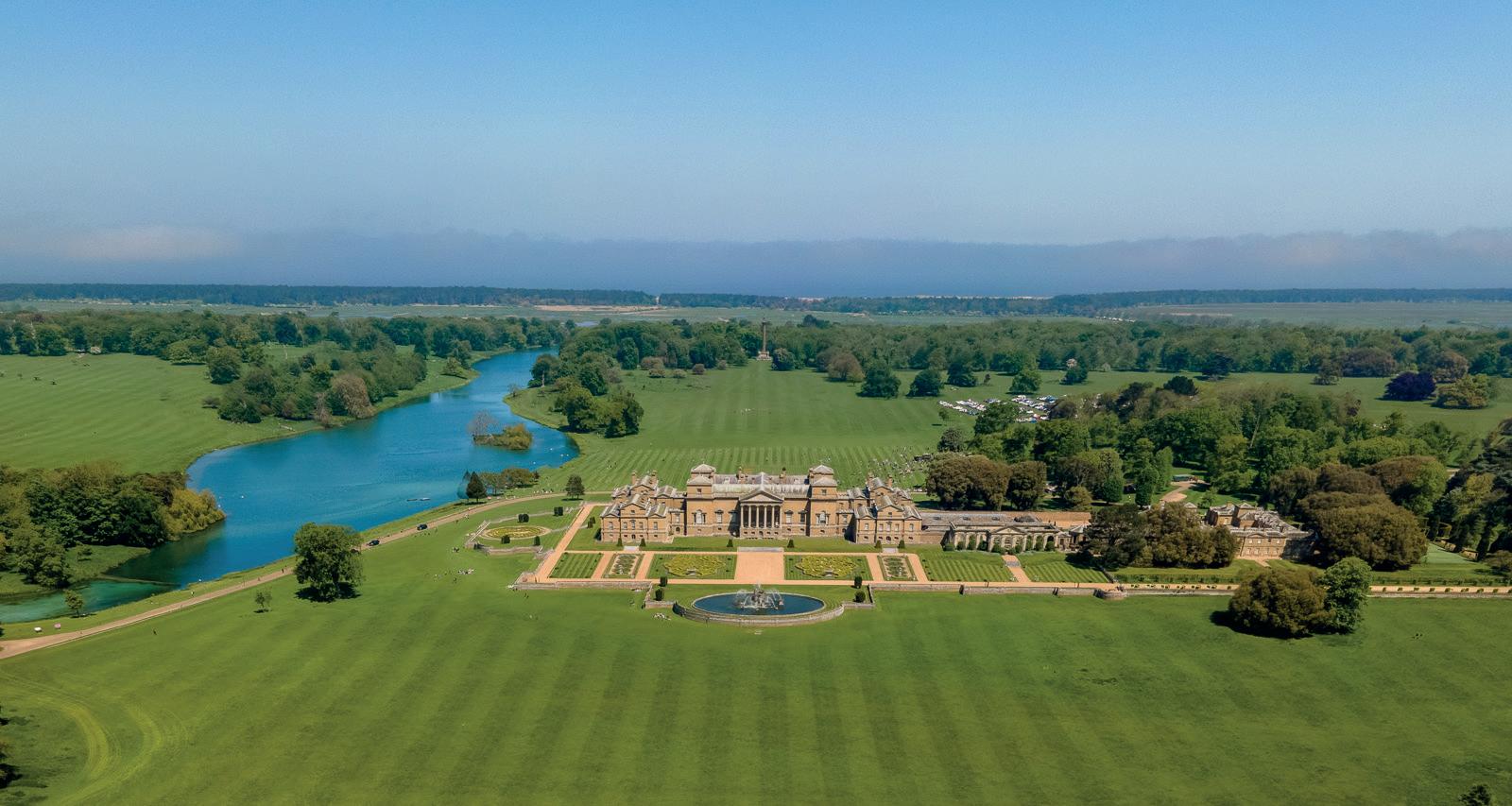
HOLKHAM HALL
www.holkham.co.uk
Marvel at Old Masters and make yourself at home.
Nestled on the North Norfolk coast is the seat of the Earl of Leicester, Holkham Hall. Built by Thomas Coke in the 1700s, it is still very much a lived-in home, which the family takes great pride in sharing with you.
Beginning in the spectacular Marble Hall, you’ll discover a masterpiece at every turn as you move from one state room to the next. Admire paintings by the Old Masters, antiquities, original furniture, tapestries, manuscripts, books, and more!
OWNER
Trustees of the Holkham Estate Home of the Earls of Leicester
CONTACT
Ticket O ce Tel: 01328 713111 Email: info@holkham.co.uk
Photography allowed for personal use, no drones.
Lavatories, including accessible facilities in the courtyard. Lavatories also in the Hall & Walled Garden.
Baby changing facilities are located in the courtyard.
Open for events and functions outside main season.
Accessible lavatories in main courtyard only. Stairclimbing machine in Hall o ers access for most manually operated wheelchairs.
Full accessibility guide on Holkham website.
Ample. Parking charge.
On leads in park. Assistance dogs only in the Hall.
LOCATION
Delve into the Holkham Stories Experience to hear tales of a rich 400-year heritage and steps towards paving the way for a sustainable future, before discovering what lies within the sun trapped walls of the six-acre Walled Garden. Holkham’s parkland is a rolling landscape of natural beauty, full of wildlife and deer, just waiting to be explored. The bursting events calendar, attractions, cycle and boat hire, ropes course, cafés, gift shop, National Nature Reserve and beach make for a grand day out, that exceeds expectations.
Holkham Estate, Wells-next-the-Sea, Norfolk, NR23 1AB
Map Ref: 8:14 Car: London 120m, Norwich 35m, King’s Lynn 30m. Sat Nav: NR23 1RH. OS Ref: TF885 428
Bus: Coastal bus routes from King’s Lynn to North
Cycle hire centre on site.
Check website for details. Sustrans Route No: 1.
The Victoria, Holkham Village
Private guided tours by arrangement.
All year round comprehensive educational programme.
Holkham Estate is a premier location for lm and television. The Marble Hall and The Saloon feature in many scenes of the 2008 lm ‘The Duchess’ and Holkham Beach features in the nal scenes of the lm ‘Shakespeare in Love’.
Civil ceremonies and partnerships.
Walsham, Rail: Norwich 35m. King’s Lynn 30m.
Air: Norwich Airport 32m.
OPENING TIMES / ADMISSION
Please visit our website for details.
Courtyard Café. Licensed. Local produce.
The Courtyard Café in Holkham Park, The Victoria in Holkham Village, The Lookout at Holkham Beach, and The Beach Cafe at Wells-next-the-Sea.
Courtyard Gift Shop. Local Norfolk produce and items.
Plant sales in Gift Shop and Walled Garden.
Hall, Lady Elizabeth Wing and grounds.
Events and functions all year round.
Please see full events programme online.
East of England 114 visitheritage.co.uk

RAVENINGHAM GARDENS
www.raveningham.com
Superb herbaceous borders, 19th Century walled kitchen garden, Victorian glasshouse, herb garden, rose garden, time garden, contemporary sculptures, Millennium lake, arboretum with newly created stumpery, 14th century church, all in a glorious parkland setting surrounding Raveningham Hall.
Visitors welcome to browse through The Raveningham Centre offering antiques, rugs, arts, gifts and crafts.
Toilet facilities available.
Disabled toilet, gardens accessible via gravel paths.
The Raveningham Estate has various properties, both residential and commercial, available to let.
Light bites and refreshments available.
Corporate functions available.
CONTACT Owner: Sir Nicholas Bacon Bt. KCVO OBE DL
Contact: Sonya Roebuck
Tel: 01508 548480 Email: sonya@raveningham.com
LOCATION Raveningham, Norwich, Norfolk NR14 6NS
Map Ref: 8:L7 Between Norwich & Lowestoft off A146 then B1136.
OPENING TIMES & ADMISSION
Please refer to website for full details.
Well behaved dogs on leads welcome.
Parking is available. Plants from the Garden on sale. Please see the website for all upcoming Garden Events.

CASTLE RISING CASTLE
www.castlerising.co.uk

Possibly the finest mid 12th Century Keep in England: it was built as a grand and elaborate palace. It was home to Queen Isabella, grandmother of the Black Prince. Still in good condition, the Keep is surrounded by massive ramparts up to 120 feet high.
CONTACT Owner: Lord Howard
Contact: The Custodian
Tel: 01553 631330
Fax: 01533 631724
Email: thecastle@castlerising.com
LOCATION Castle Rising, King’s Lynn, Norfolk PE31 6AH, Map Ref: 7:H5
Located 4m NE of King’s Lynn off A149. OPENING
2 Nov - 31 Mar, Wed - Sun, 10am - 4pm.
ADMISSION Adults - £6.00, Concession - £5.00, Child - £4.00, Family ticket (2 adult & 2 children) - £18.00. Opening times and prices are subject to change.
Tearoom. Picnic area.
There is an audio guide available to guide you around the Castle.
HATFIELD HOUSE
www.hatfield-house.co.uk

With over 400 years of history, Hatfield Park is an iconic landmark with Hatfield House at its centre, showcasing internationally renowned history and Jacobean craftsmanship. The surrounding grounds accentuate this, with early 17th century gardens and the place where a young Princess Elizabeth heard of her accession to the throne.
CONTACT Tel: 01707 287000
Email: visitors@hatfield-house.co.uk
LOCATION Hatfield House, Hatfield Hertfordshire AL9 5HX
OPENING TIMES The Park and Gardens will be open from Sat 30th Mar-Sun 29th Sept, Weds-Sun. Hatfield House will open for visiting from Thurs 23rd May-Sun 8th Sept, Thurs-Sun and Bank Holidays.
The Old Palace is open for tours on selected dates, up to date information can be found here: www.hatfield-house. co.uk/your-visit/opening-times-prices/
ADMISSION House, Park and Gardens (2024) Adult: £24/Child: £12. Gardens, Park and Woodland Walks: Adult: £12/ Child: £6. The Old Palace Tour: £6 per person. Under 3’s go free.
TIMES 1 Apr - 1 Nov, daily, 10am
6pm
at dusk if earlier in Oct).
-
(closes
East of England 115 visitheritage.co.uk
FULLERS MILL
www.fullersmill.org.uk

This award-winning garden is an enchanting waterside oasis offering unusual shrubs, perennials, lilies and marginal plants. Fresh with new growth in spring, the garden feels full of hope and new beginnings. Scented lilies begin a succession of flowering to create a spectacular show of fragrance and colour into summer. Textures and golden hues illuminate autumn days and the River Lark and Culford Stream sparkle in winter as snowdrops awaken. Fullers Mills was gifted to the charity Perennial by the late Bernard Tickner to help people in horticulture and brings tranquillity to visitors.
CONTACT Tel: 01284 728888
Email: fullersmillgarden@perennial.org.uk
LOCATION
West Stow, Bury St Edmunds IP28 6HD
OPENING TIMES 3 April - 30 October, Wednesday 2pm - 5pm, Friday, Saturday & Sunday 11am – 5pm.
ADMISSION £10, £12.50 gift aid.
GAINSBOROUGH’S HOUSE
www.gainsborough.org
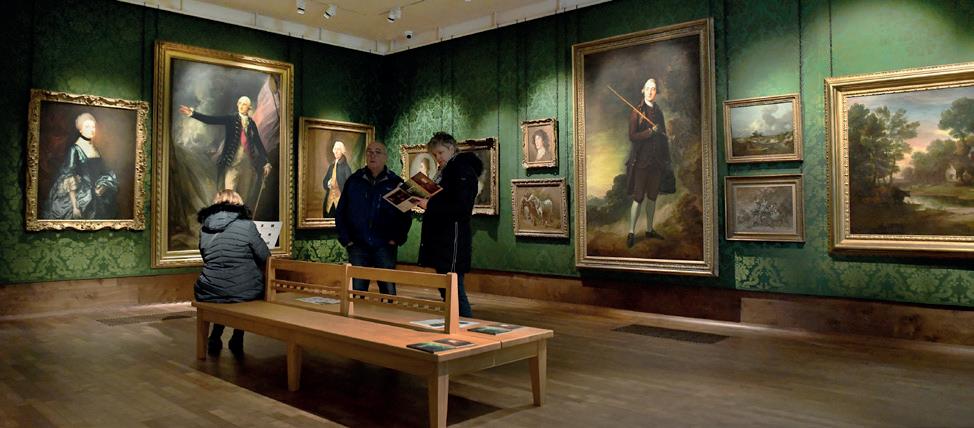
Gainsborough’s House is the childhood home of Thomas Gainsborough RA (1727–88) and it contains the most comprehensive collection of his works. The National Centre for Gainsborough in Sudbury, Suffolk, is a hub for heritage and culture. You will be able to see Gainsborough’s masterpieces, exhibitions of international appeal as well as a landscape studio with panoramic views, alongside the Grade I listed house, crinkle-crankle walled garden, café and shop.
CONTACT Tel: 01787 372958, Email: mail@gainsborough.org
LOCATION 46 Gainsborough Street, Sudbury, Suffolk, C010 2EU. What3words ///sheepish.logo.spotty
Toilets. Baby changing. Shop. Café/tearoom.
OPENING TIMES 10am - 5pm every day, see exceptions on our website.
ADMISSION
See website for admission prices.
Suitable for disabled people. Education/school visits.
Open all year. Special events.
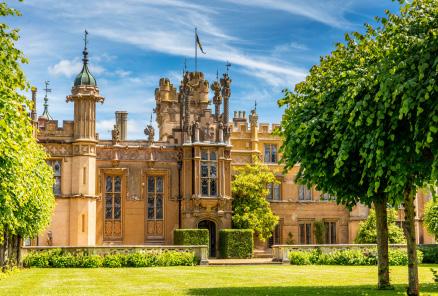
KNEBWORTH HOUSE
www.knebworthhouse.com
Set in 250 acres of beautiful rolling Hertfordshire countryside with 28 acres of Formal Gardens, Knebworth House has been home to the Lytton family for over 19 generations, making for an extraordinary walk through 500 years of local and British history. Stories and heirlooms reflect the family’s contribution to literature, politics, and Foreign Service.
LOCATION Knebworth House, Hertfordshire, SG1 2AX OPENING TIMES AND ADMISSION
Open weekends, bank holidays and school holidays from March to September, check the website for up to date opening dates, times and admission prices.
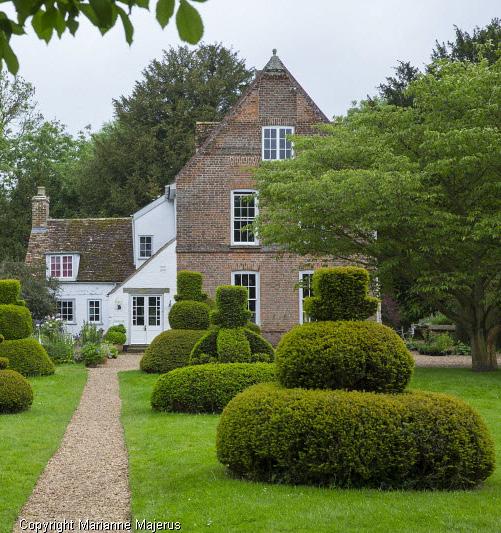
THE MANOR, HEMINGFORD GREY
www.greenknowe.co.uk
Built about 1130. One of Britain’s oldest continuously inhabited houses. Made famous as ‘Green Knowe’ by author Lucy Boston. Her patchwork collection is displayed. Garden with topiary, old roses, award winning irises and herbaceous borders.
CONTACT Owner/Contact: Diana Boston; Email: diana_boston@hotmail.com, Tel: 01480 463134 LOCATION Norman Court, High Street, Hemingford Grey, Cambridgeshire PE28 9BN Map Ref: 7:F8 - A14, 3m SE of Huntingdon. 12m NW of Cambridge. Access via small gate on riverside. OPENING TIMES Mon-Sun 11am-5pm.
ADMISSION House & Garden: Adult £12, Child £4. Garden only: Adult £6, Child Free. House open by appointment.
COPPED HALL
www.coppedhalltrust.org.uk

Mid-18th Century Palladian mansion under restoration. Situated on ridge overlooking landscaped park. Ancillary buildings including stables and racquets court. Former elaborate gardens being rescued from abandonment. Large 18th Century walled kitchen garden - adjacent to site of 16th Century mansion which was built on a site of ancient human habitation.
CONTACT Owner: The Copped Hall Trust Contact: Alan Cox Mobile: 07799 473 108 Email: chairman@coppedhalltrust.org.uk
LOCATION Crown Hill, Epping, Essex CM16 5HS Map Ref: 7:G12 4 miles South West of Epping, North of M25. Satnav postcode for entry is CM16 5HR.
Parking available.
Partial access.
Concerts and theatre.
Workshops, lectures, study days, conferences and AGMs.
OPENING TIMES Ticketed events and special open days. See website for dates.
ADMISSION
Open Days: £10.
Guided Tours: £10. Gardens Only: £6. Private tours by appointment: £15.
Dogs welcome in grounds on leads. No dogs in mansion.
3hr Guided Tours every 3rd Sun of month except Dec. Access 10 - 11am only.
Purchase a variety of goods in the shop appealing to all tastes.
© Gainsborough’s House Anne Purkiss
East of England 116 visitheritage.co.uk
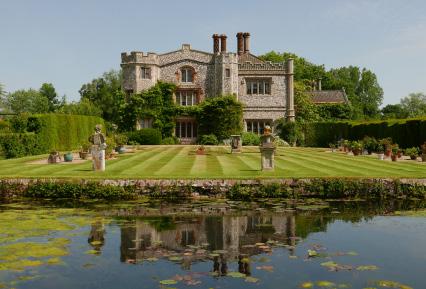
MANNINGTON ESTATE
www.manningtonestate.co.uk
Mannington Hall was built around 1460 and bought by the first Lord Walpole in the 18th Century; it is still a family home today.
The Heritage Rose Garden includes over 1000 varieties of rose in period settings. Newer gardens include Four Elements and Less Able; Enchanted Trail, children’s garden and playground. Around the hall are colour themed borders and a scented garden. There is a woodland walk, wildflower meadow with boardwalk and hide, and a wild garden around ruined Saxon chapel and many varieties of plants and trees.
CONTACT Tel: 01263 584175 Email: admin@walpoleestate.co.uk
LOCATION Mannington Hall, Norwich NR11 7BB Map Ref: 8:K5 OPEN Walks open every day of the year. Gardens from mid May. Events from April. See website for opening times. Party visits and tours by arrangement. ADMISSION Adult £12, Concession £10, Children under 16 free, Parties by arrangement.

GOODNESTONE PARK GARDENS
www.goodnestonepark.co.uk
‘The most perfect English garden’ 14 acres of beautiful tranquillity including a woodland area, large walled garden and Old Dairy Café.
CONTACT Sally Lewis Tel: 01304 840107
Email: office@goodnestone.com
LOCATION Goodnestone Park, Nr Wingham, Canterbury, Kent CT3 1PL Map 4:N3. OS Ref TR254 544. Canterbury, 1½m E of B2046 - A2 to Wingham Road, signposted from this road. Postcode of Car Park: CT3 1PJ.
OPENING TIMES For opening times please refer to website.
ADMISSION For admission prices please refer to website.
Suitable. WCs. Licensed. Partial. By arrangement. Parking. Well behaved dogs on leads welcome. Plant Sales. Events please see website.
INGATESTONE HALL
www.ingatestonehall.com
16th Century mansion with 11 acres of grounds (lawns, shrubs, stew pond and woodland), built by Sir William Petre, Secretary of State to four Tudor monarchs and still occupied by his descendants. The house largely retains its Tudor form and appearance (including two priests’ hiding-places). On display are furniture and family portraits accumulated over the centuries together with memorabilia of fifteen generations of the Petre family.
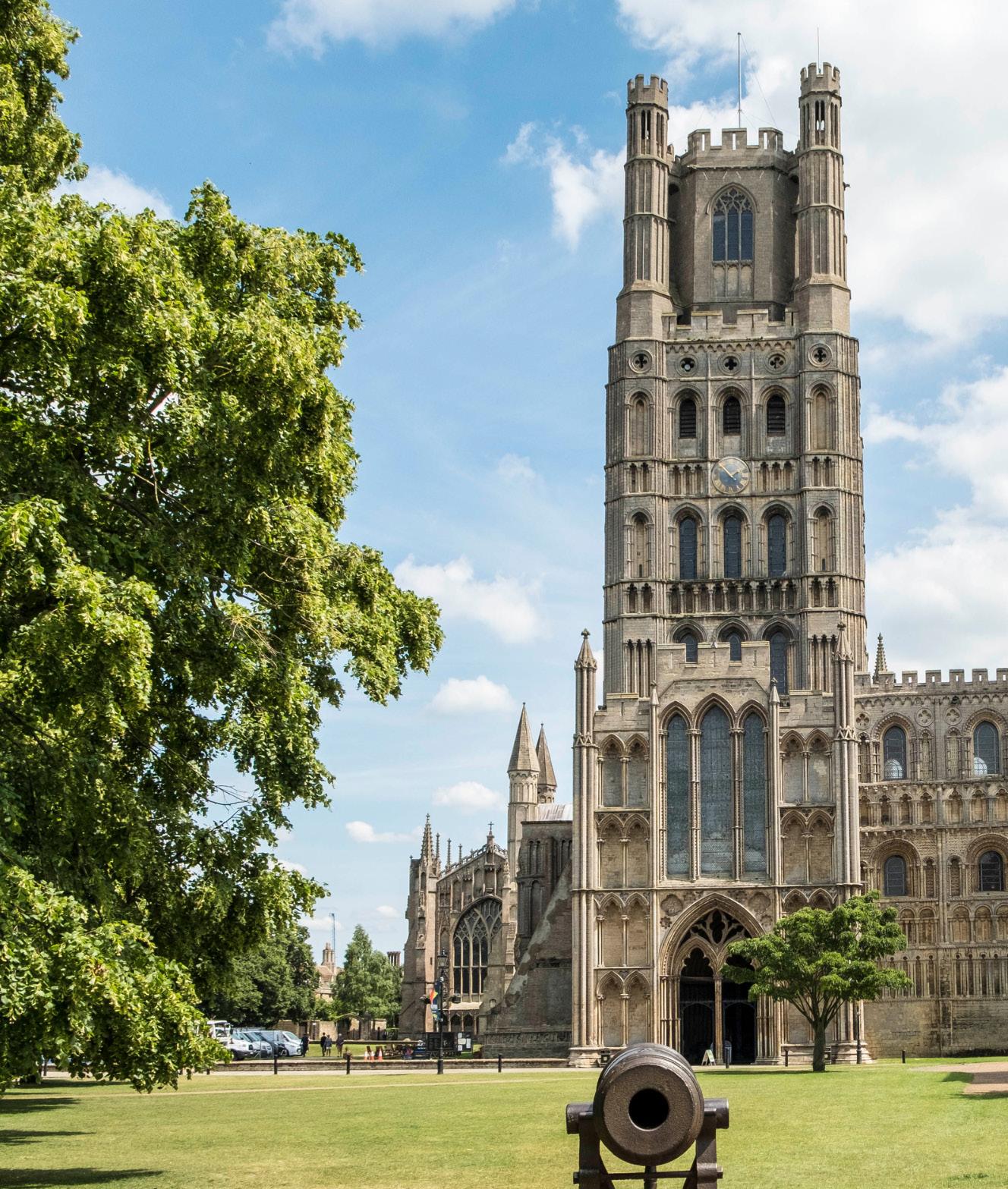
TURVEY HOUSE
Turvey, Bedfordshire MK43 8EL
A neo-classical house set in picturesque parkland bordering the River Great Ouse; with a fine collection of 18th & 19th Century antiques. Map Ref: 7:D9 - Between Bedford and Northampton on A428. Tel: 07747 046398 Email: info@turveyhouse.co.uk
Website: www.turveyhouse.co.uk Open: For opening dates see Turvey House website.
CONTACT Owner/Contact: The Lord Petre Tel: 01277 353010
Email: house@ingatestonehall.co.uk
LOCATION Hall Lane, Ingatestone, Essex CM4 9NR Map Ref: 7:H12
From the London end of Ingatestone High St., take Station Lane and proceed for one mile. What3Words: ///Cake.Reach.Intro
OPEN Easter Sunday until the end of September.
Wed, Sun. & BH. Noon - 5pm.
ADMISSION Adult £10; Child £5; Conc. £8. Under 5 yrs old Free (£1 per head discount for parties of 20+ booked in advance)
Toilet facilities available.
Free parking.
Available out of hours by arrangement.
Teas and light meals.
A range of gifts and souvenirs. Partial Access only.
Receptions up to 100 inside the House. No limit outside
Please see website for special events.
Weddings up to 80.
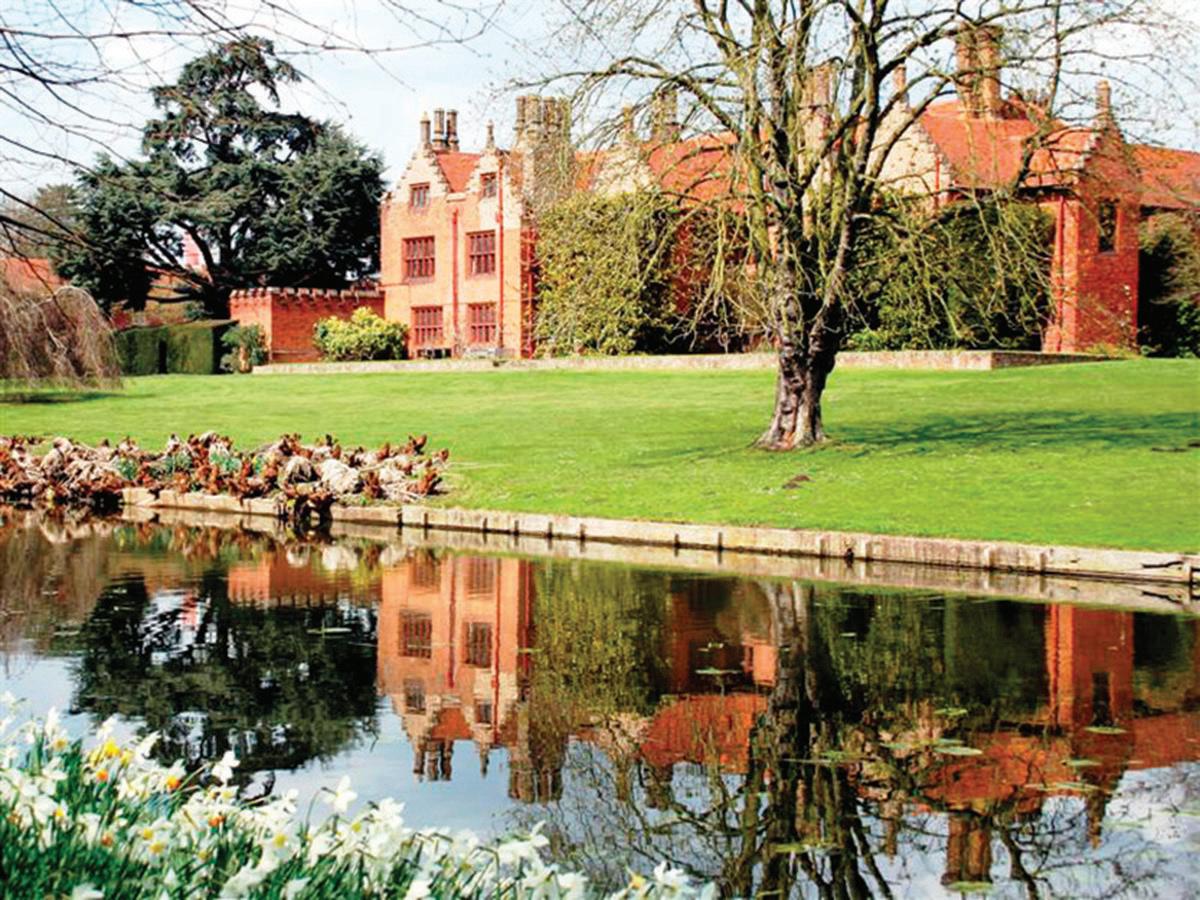
East of England 117 visitheritage.co.uk
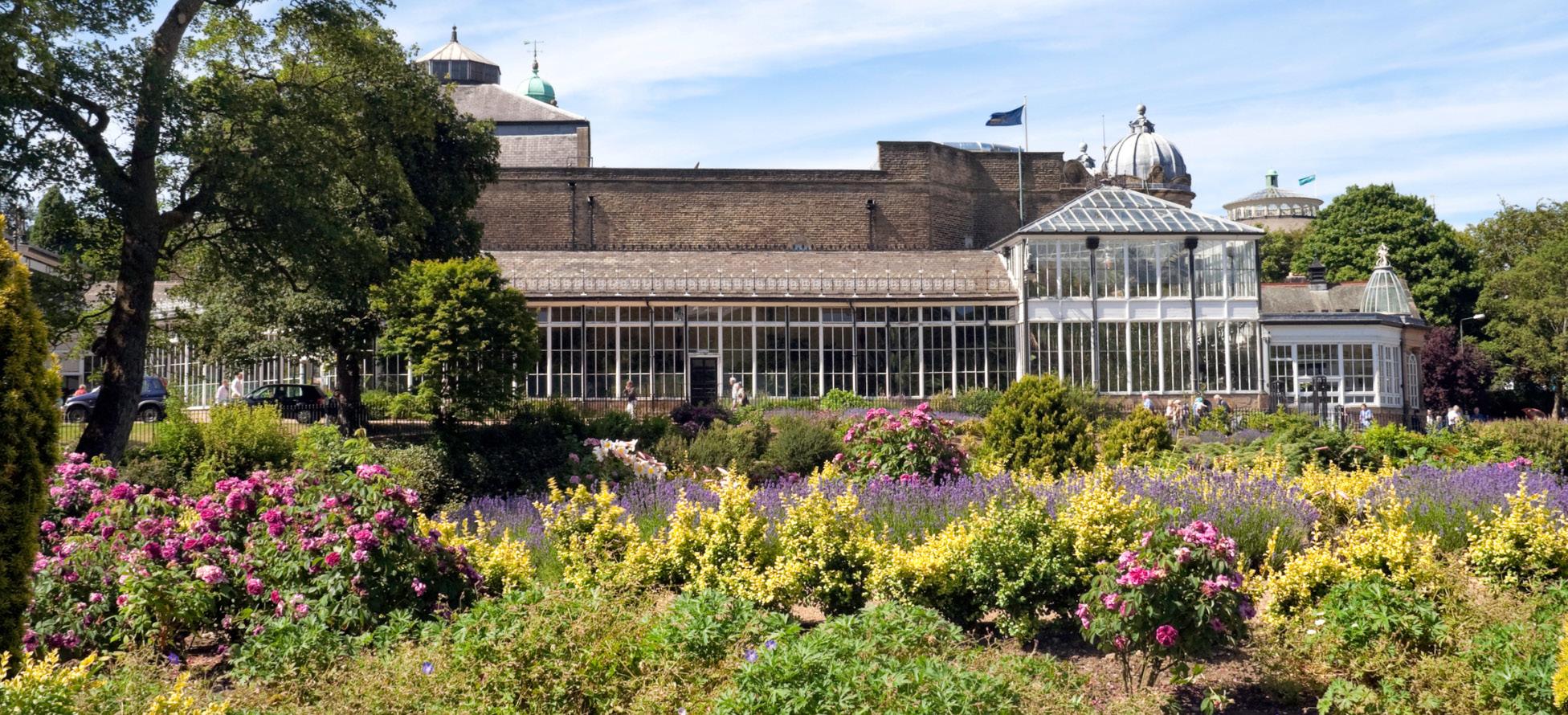
District
Robin Hood Country Rutland Water HERITAGE
Elizabethan prodigy houses
English Civil War
Magna Carta at Lincoln Castle
Grantham gingerbread
Melton Mowbray pork pies
Bakewell tart
• LEICESTERSHIRE & RUTLAND • LINCOLNSHIRE NORTHAMPTONSHIRE • NOTTINGHAMSHIRE
EAST MIDLANDS DERBYSHIRE
COUNTRYSIDE Peak
FOOD
LINCOLNSHIRE NOTTINGHAM SHIRE LEICESTER SHIRE RUTLAND NORTHAMPTON SHIRE
Buxton Grantham • Boston • • Bakewell
Newark
Southwell
Matlock
Melton Mowbray
Northampton Loughborough
Derby Nottingham Lincoln Leicester visitheritage.co.uk 118
DERBYSHIRE •
•
•
•
•
•
•
Events

HOLLOWELL STEAM AND HEAVY HORSE SHOW 2024
6th - 7th July 2024
The 35th Hollowell Steam and Heavy Horse Show hopes to attract over 40.000 visitors with over 800 exhibitors and traders and a couple of hundred volunteer helpers to help you enjoy the show. With a great selection of vehicles, horses, trade stall and attractions to keep the family entertained all day. If you get tired of walking around the exhibits you can always sit down and enjoy one of the best views in Northamptonshire, dogs and even children are more than welcome, and the whole atmosphere is we hope very informal and friendly.
DERBYSHIRE COUNTY SHOW
23rd June 2024
2024 will see the 142nd Show with entertainment for all the family. The Derbyshire County Show is an annual agricultural event celebrating rural life. Showcasing livestock competitions, equestrian events, and agricultural displays, it highlights the region’s agricultural heritage. The show fosters a sense of community, offering a mix of family-friendly entertainment, local produce, and traditional craftsmanship.
GLOSSOP VICTORIAN & HERITAGE WEEKEND 2024
31st May - 2nd June 2024
Glossop Victorian & Heritage Weekend is an annual event in Derbyshire, transporting visitors to the Victorian era. With period costumes, traditional music, and historic reenactments, the town comes alive with a bygone charm. The weekend offers a delightful blend of nostalgia, heritage displays, and family-friendly activities, creating a unique historical experience.


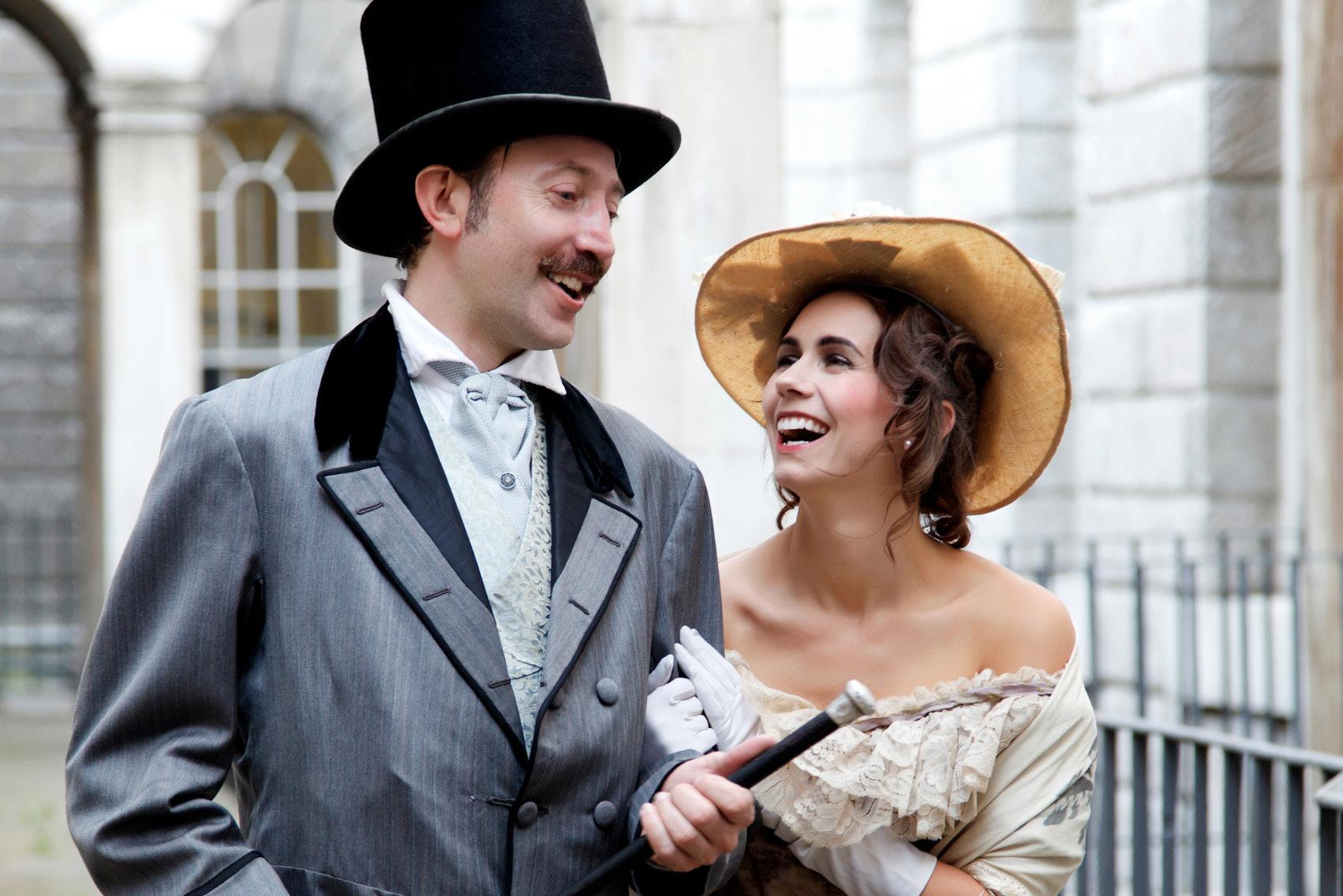
EAST MIDLANDS
119 visitheritage.co.uk

LAMPORT HALL & GARDENS
www.lamporthall.co.uk
Home of the Isham family from 1560-1976, Lamport Hall is an architectural gem, best known for its John Webb classical frontage. The house itself contains a fine collection of paintings, books and furniture accumulated by the family over 400 years.
On your visit, meet the family members who called Lamport home, including the wayward son whose passion for collecting almost brought the family to financial ruin, the Victorian eccentric who had ideologies very ahead of his time, and the 20th century Hollywood film star who gave up the glitz and glamour to save his family home.
The Hall is set in approximately 10 acres of tranquil gardens, the result of over 450 years of love and dedication, enclosed by a spacious park. The gardens are a delight to behold in every season, with extensive herbaceous borders displaying a vibrant array of colour, and a magnificent walled garden which was replanted as a cutting garden in 2010, full of unusual tall perennial plants, using one of Piet Oudolf’s design concepts. Join us in 2024 to celebrate 50 years of the Preservation Trust with a new exhibition and accompanying special events.
OWNER
Lamport Hall Preservation Trust Ltd
CONTACT
Tel: 01604 686272
Email: engagement@lamporthall.co.uk
Photography allowed for personal use. No drones.
Baby-changing facility at front of Hall.
Accessible lavatories at front of Hall. House accessible on the ground oor only.
Assistance dogs only in the Hall. Dogs on leads in the park and gardens.
LOCATION
Lamport, Northamptonshire, NN6 9HD
Map Ref: 7:C8
///Unguarded.Ballooned.Derailed.
Visitor entrance on A508, midway between Northampton and Market Harborough, 3m S of A14, J2.
Easily accessible from Brampton Valley Way.
Education visits welcome. Please ring us to discuss how we can match your curriculum requirements.
Tea room in our beautiful stable yard.
Open for events and functions outside main season. Free parking. Lavatories, at front of Hall.
Holiday accommodation on estate.
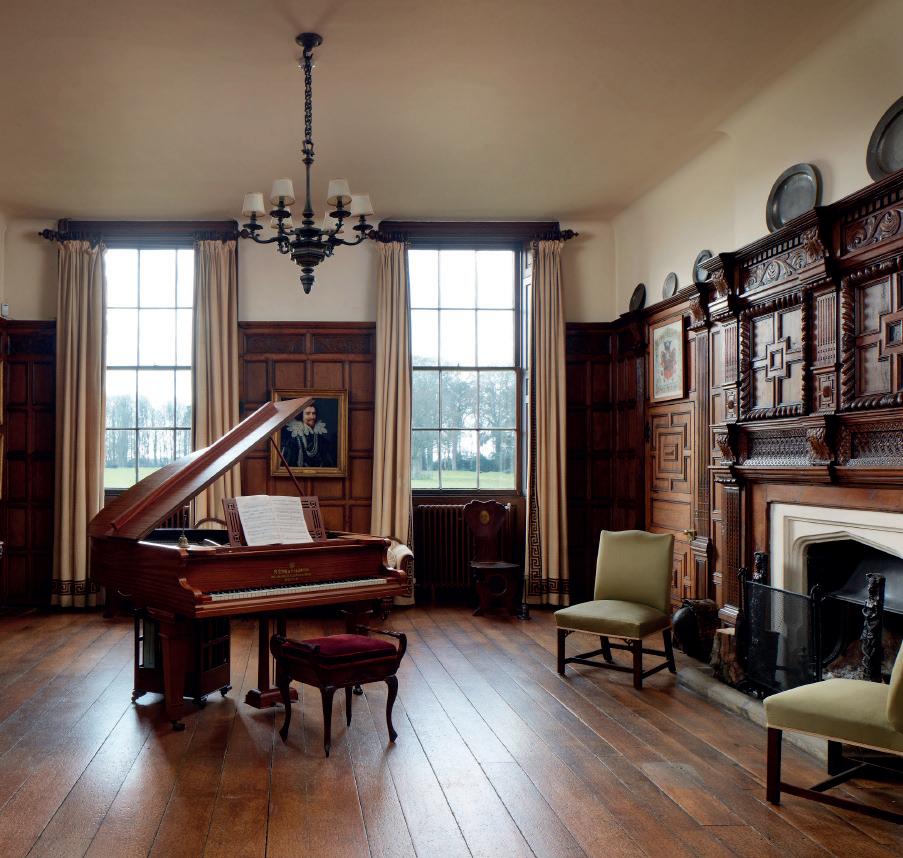
OPENING TIMES/ ADMISSION
Apr-Oct, most Weds and Thurs (guided tours rst week of every month, free ow otherwise). House and Gardens also open on some event weekends - refer to the website for details. Free to Historic House members. Please check website for opening times and prices, or telephone for group visit information pack.
Conferences, seminars, product launches and outdoor events.
Events and functions all year round - theatre, lectures/speakers, antique fairs, concerts, art exhibitions. See our website for up-to-date rolling programme.
Licensed venue with capacity for up to 200 indoors, 500 outdoors.
Hall, Gardens and Farm available as lm & TV location.
East Midlands 120 visitheritage.co.uk
KELMARSH HALL AND GARDENS
www.kelmarsh.com
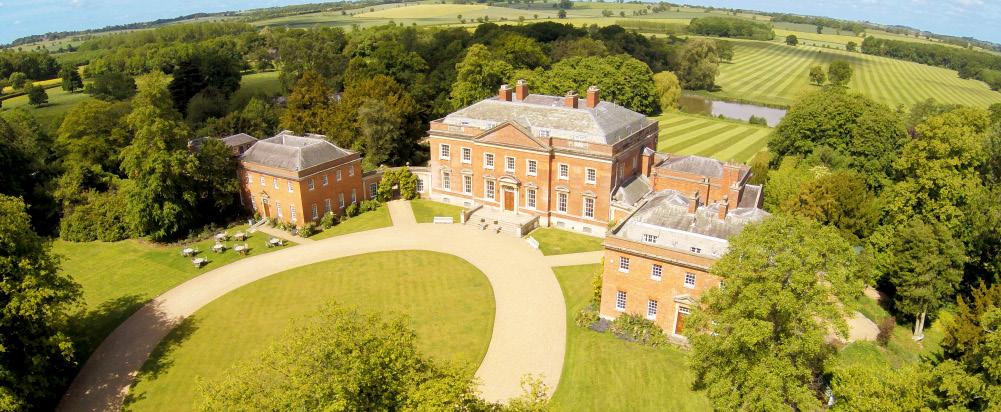
Kelmarsh Hall is a Palladian style house located in the Northamptonshire countryside, with unique fine rooms, the old servants quarters and laundry, and exhibition rooms. Surrounding the Hall are the Grade II* listed gardens, with a beautiful walled garden at the heart. Visitors can enjoy walks through the woodland and lakeside areas. Tearoom, visitor centre and gift shop on site. Open April - September on set days of the week. Café.
CONTACT
Email: enquiries@kelmarsh.com
LOCATION Kelmarsh Hall, Kelmarsh, Northamptonshire, NN6 9LY ///needed.newsreel.comfort
OPENING TIMES
Easter Weekend - September 2024
ADMISSION Check our website for admission prices.
Toilets. Dogs Welcome. Shop. Educational/School Visits.
Suitable for Disabled People.
COTTESBROOKE HALL & GARDENS
www.cottesbrooke.co.uk

Cottesbrooke is a wonderful Queen Anne house dating from 1702 and set in delightful award-winning gardens in rural Northamptonshire. The gardens are a constant source of innovation and development – from the formal gardens that surround the Hall, to the Wild Garden, which flanks a meandering stream where acers, spring bulbs and gunneras create a romantic and tranquil air. The remarkable 18th century landscaping of the Park, its vistas and lakes, provide the backdrop to the Hall.
CONTACT
Owner: Mr & Mrs A R Macdonald-
Buchanan. Contact: The Administrator
Tel: 01604 505808
Email: welcome@cottesbrooke.co.uk
LOCATION
Cottesbrooke, Northamptonshire NN6 8PF 10m N of Northampton near Creaton on A5199. Signed from Junction 1 on the A14. What3Words to visitor entrance: expand.allow.curly.
GRIMSTHORPE CASTLE
www.grimsthorpe.co.uk
Grimsthorpe Castle is an unexpected marriage of architectural styles and the final masterpiece of Sir John Vanbrugh, architect of Blenheim Palace and Castle Howard. The Castle holds a remarkable collection of art, preserved inside lavishly decorated state rooms, where tapestries and paintings adorn the walls.
With 3000 acres of parkland to explore, there’s plenty to do, including cycle and walking trails, formal gardens, a lake and gift shop.
For children there is the Woodland Adventure Playground, which includes an adult trim trail, zip line and climbing frames. The gardens are a wonderful place to relax in cleverly positioned vistas, where you can take in the spectacular views across the lake. Or simply spend the day playing rounders on the lawns, which are ready-made for summer picnics.
Our pop-up trailer offers delicious refreshments, with indoor and outdoor seating available.
Shop.
OPENING TIMES
May-End of Sept.
May & June: Wed & Thurs, 2pm-5:30pm. Jul-Sept: Thurs, 2pm-5:30pm. Open BH Mons (May-Sep), 2pm-5:30pm. The first open day is Wednesday 1st May 2024.
ADMISSION House & Gardens: Adult £16, Child £5, Conc £13.50. Gardens Only: Adult £13, Child £4, Conc £11. 10% discount if tickets are booked through our website in advance. Group &private bookings by arrangement.
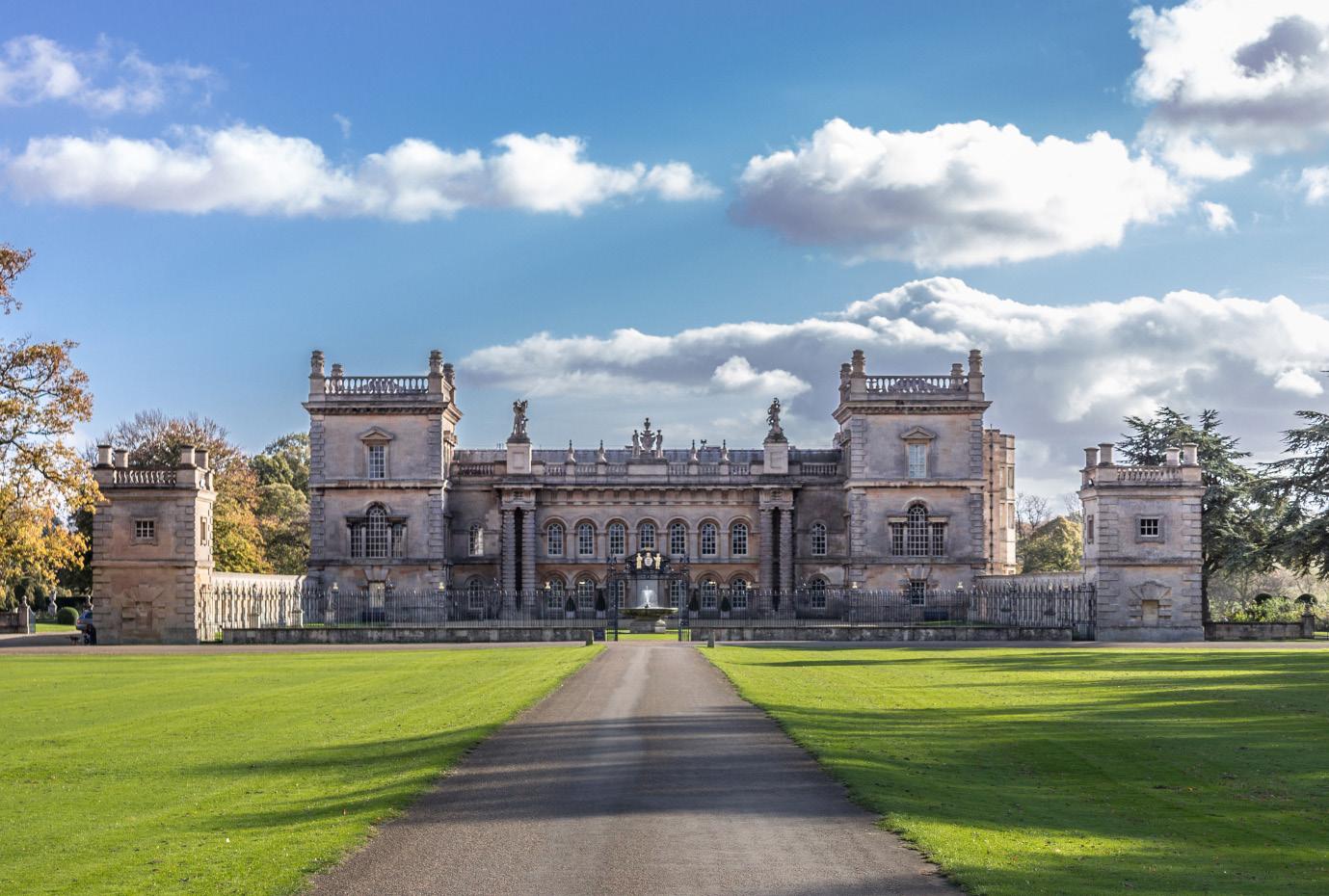
CONTACT Tel: 01778591205 Email: visit@grimsthorpe.co.uk
LOCATION Grimsthorpe Castle, Grimsthorpe, Bourne, Lincolnshire, PE10 0LY. Please follow the brown tourism signs. ///vaulting.owls.meanest.
OPENING TIMES March to October, please see website for details.
ADMISSION Please check our website.
Educational/school visits. Parking available. Plant sales. Special events. Toilets. Baby changing. Cycling routes. Dogs welcome.
Guided tours. Refreshments.
Suitable for disabled people. In the movies.
Member of HH giving free access under HH Friends Scheme.
East Midlands 121 visitheritage.co.uk
MELBOURNE HALL & GARDENS
www.melbournehall.com

This beautiful house of history, in its picturesque poolside setting, was once the home of Victorian Prime Minister William Lamb. The fine gardens, in the French formal style, contain Robert Bakewell’s intricate wrought iron arbour and a fascinating yew tunnel. Upstairs rooms available to view by appointment.
CONTACT Owner: Lord & Lady Ralph Kerr
Contact: Melbourne Hall Estate Office
Tel: 01332 862502
Email: info@melbournehall.com
LOCATION Melbourne, Derbyshire DE73
8EN Map Ref: 7:A5 - 8m South of Derby.
From London, exit M1/J24.
OPENING TIMES Hall open August only
No photography in house.
Toilets available in the Visitors Centre.
Church Square/Castle Square. No coaches.
Partial. WCs.

CONTACT Tel: 01455 290429
everyday (except for the first 3 Mondays) from 2pm - 5pm. Last admission 4.15pm The Gardens open April - September on Weds, Sat, Sun and BH Mondays from 1pm - 5pm and every afternoon in August when the Hall is open.
ADMISSION Please see website or call 01332 862502 for current ticket prices.
Around Melbourne Pool on a lead. Assistance dogs in the hall & gardens.
Obligatory in house Tue-Thurs. Melbourne Hall Tea Room. Variety of shops.
BOSWORTH BATTLEFIELD HERITAGE CENTRE AND COUNTRY PARK
www.bosworthbattlefield.org.uk
Bosworth Battlefield Heritage Centre tells the story of how King Richard III lost his life and crown to Henry Tudor. As well as touring the exhibition, visitors can also take part in guided walks and visit the 1485 Tithe Barn Café.
Email: bosworth@leics.gov.uk
LOCATION Sutton Cheney, Nuneaton, Leicestershire CV13 0AD OPENING TIMES
The exhibition and shop are open daily April to October 10:00am to 5.00pm and November to March 10.00am to 4.00pm
ADMISSION There is an admission charge to the heritage centre, which allows unlimited repeat visits on non-event open days for a 12-month period. See website for more details, including family and group ticket prices. Parking charge £2.50. Facilities: Access lift, visitor centre, toilets and baby changing facilities, disabled toilets, low counters, Induction Loops available for the exhibition areas, Staff assistance, no drone flying.
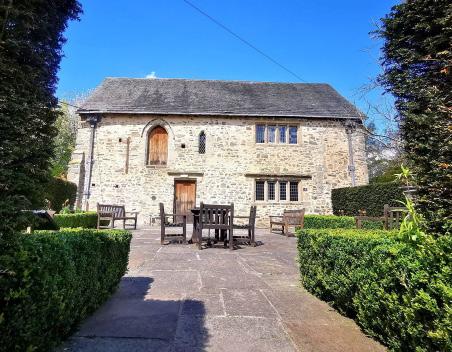
THE 1620S HOUSE AND GARDEN www.1620shouse.org.uk
The house is a surviving example of a family home built in the 13th century and then modernised in 1618. Surrounding the house are period gardens and woodland planted as part of the National Forest.
CONTACT Tel: 01455 290429 Email: 1620shouse@leics.gov.uk
LOCATION The 1620s House and Garden, Manor Road, Coalville, Leicestershire LE67 2FW OPENING TIMES
The House, Tea Room and Gardens are open April- October, Thursday- Sunday plus Bank Holidays 10.30-4.30pm. The Tea Room and gardens are open 10.30-3.30pm on Thursday’s until 24th November.
ADMISSION There is an admission charge to the site, which allows unlimited repeat visits on non-event open days for a 12-month period. Family tickets available. See website for details. Free parking. Facilities: Toilets and wheelchair accessible toilets on site. Due to the nature of the building, there is no disabled access to the upper floors, but videos are available to ensure every visitor has an enjoyable experience of the house in its entirety. Staff assistance available. Hearing loop/equipment available.
FULBECK MANOR
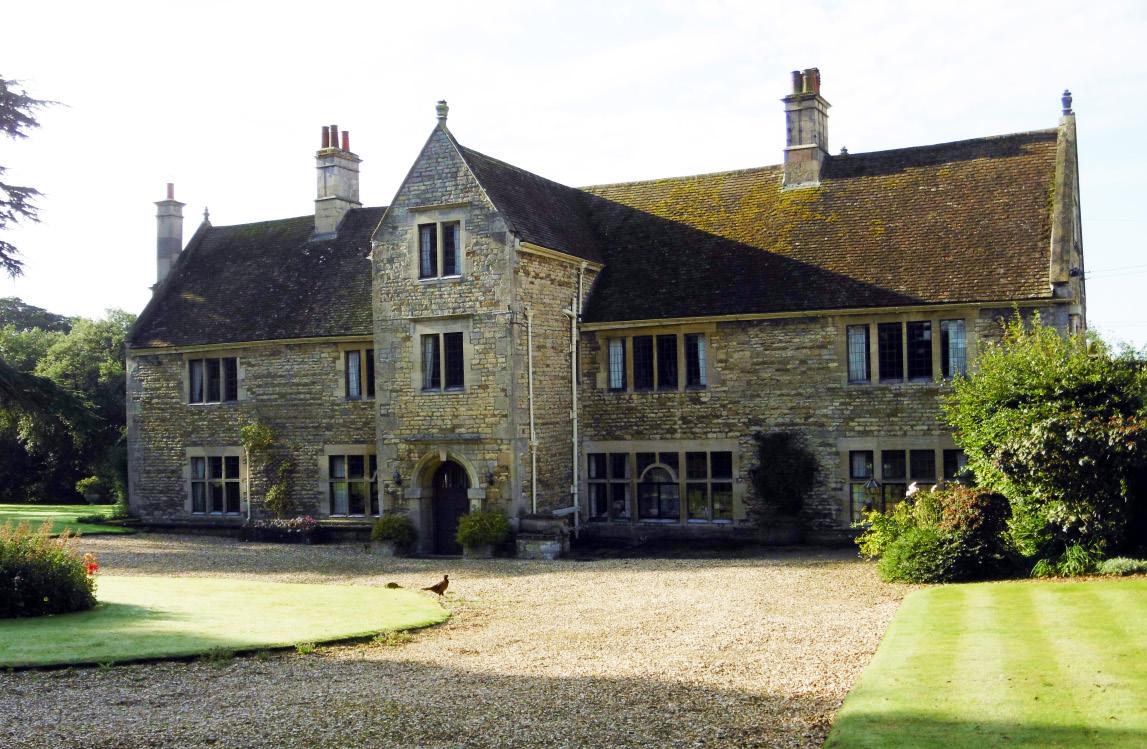
Fulbeck Manor was built in c1580s. The house stands
3 storeys high, including garrets, with a 5 bay front. The interiors feature 80 portraits of the Fane family, who have lived in Fulbeck for over 400 years. The most impressive feature is a 17th Century staircase with spiral balusters.
CONTACT Owner/Contact:
Mr Julian Francis Fane
Tel: 01400 272231
E-mail: jfane22@outlook.com
LOCATION Fulbeck, Grantham, Lincolnshire NG32 3JN Map Ref: 7:D3 11 miles North of Grantham. 15 miles
No photography.
Open all year by written appointment.
Ample for cars. Limited for coaches.
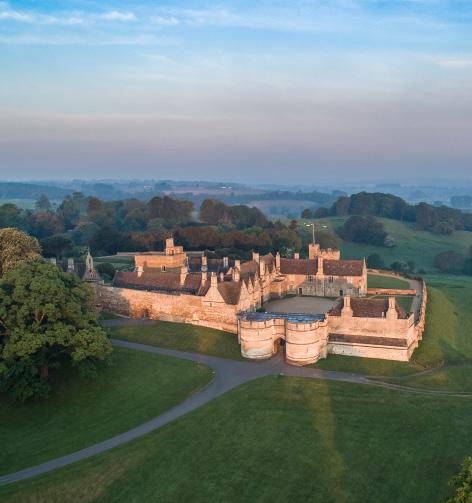
OPENING TIMES
South of Lincoln on A607. Brown signs to Craft Centre, Tearooms and Stables
OPENING TIMES
By written appointment.
ADMISSION £12 group 10+ £10
Partial. WCs.
Obligatory. Tours by owner 1¼ hrs. The Crafty Café at Craft Centre, 100m.
ROCKINGHAM CASTLE
www.rockinghamcastle.com
A remarkable castle built on the instruction of William The Conqueror.
CONTACT Tel: 01536 770240
Email: estateoffice@rockinghamcastle.com
LOCATION Rockingham, Market Harborough, Leicestershire, LE16 8TH. Map 7:D7. OS Ref SP867 913. 1M N of Corby on A6003. 9m E of Market Harborough. 14m SW of Stamford on A427.
Open Sundays and Bank Holiday Mondays from Easter Sunday (31 March) to 27 May.
Open Tuesdays, Sundays & Bank Holiday Mondays from 2 June to 29 September.
ADMISSION See website: www.rockinghamcastle.com for details.
Social Media: @rockinghamcastleofficial
WAKEFIELD LODGE
Potterspury, Northamptonshire NN12 7QX
Georgian hunting lodge with deer park.
Location: 4m S of Towcester on A5. Take signs to Wakefield Estate for directions. Map Ref: 7:C10 Tel: 01327 811395
Open: House 1st May - 13th June 2024, Mon-Fri (closed BHs), 12 noon-4pm. Appointments by telephone.
Access walk open May & June. Admission: £10.
LEADENHAM HOUSE
Leadenham House, Lincolnshire, LN5 0PU
Late 18th Century house in park setting. Tel: 01400 272680 Email: williamreeve@leadenhamestate.com
Location: Map Ref. 7:D3; OS Ref. SK949 518. Entrances on A17 Leadenham bypass and on corner of Gospel Lane and Rectory Lane in Leadenham. Please telephone for access. Open: Mon to Fri throughout April and May; Spring & Aug Bank Holidays. Admission: £5.
East Midlands 122 visitheritage.co.uk
MR STRAW’S HOUSE
www.nationaltrust.org.uk/mr-straws-house
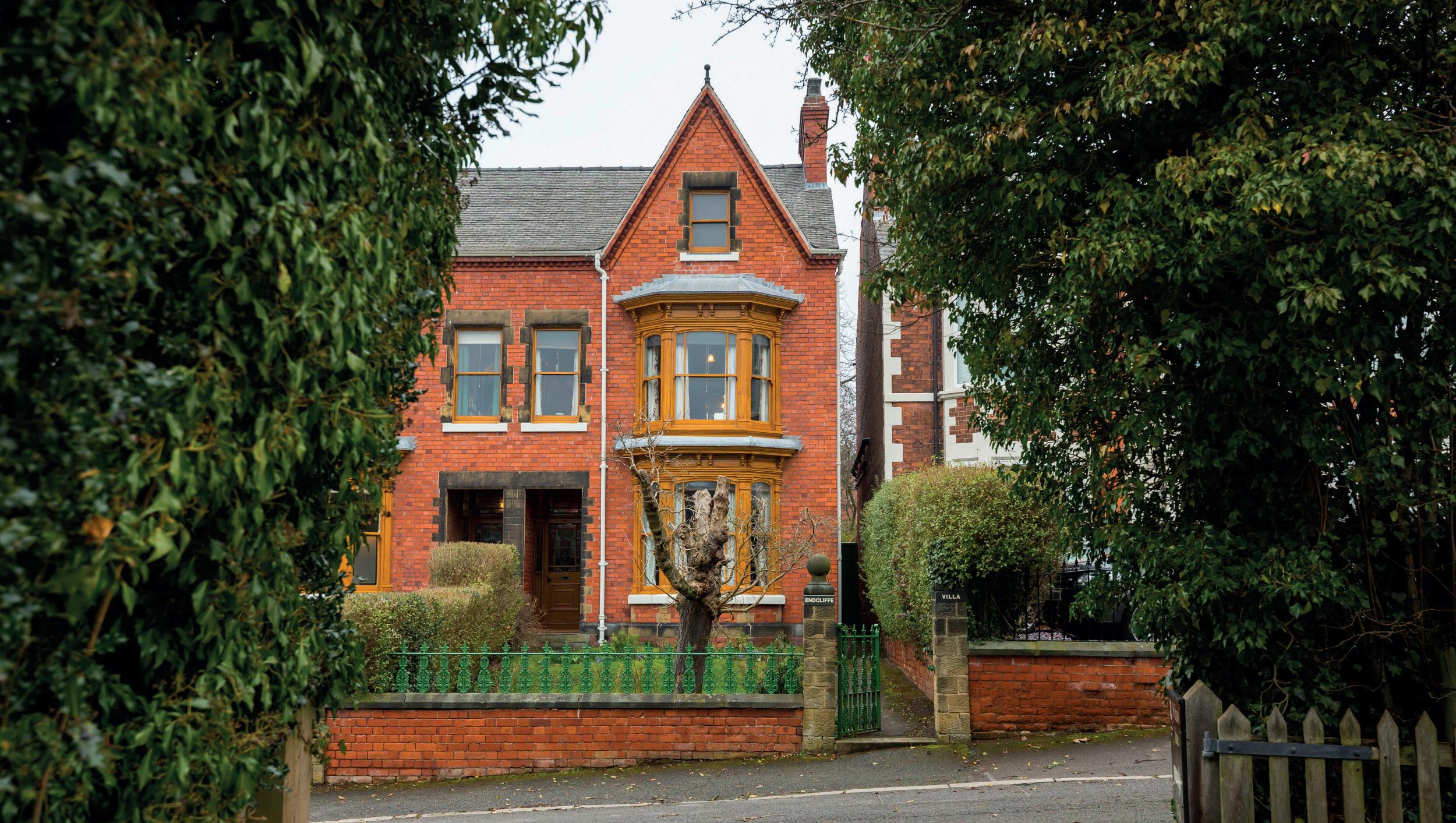
Most National Trust properties inspire thoughts of historic mansions, wealth and grandeur. However, tucked away in a private cul-de-sac in Worksop, Nottinghamshire, you’ll find Mr Straw’s House; the National Trust’s first small domestic property, acquired in 1990.
William Straw moved to Worksop in 1886, to work for his brother Benjamin at his grocers. He later bought the shop and set up on his own. A decade later, aged 32, William married Florence and they had three sons: William Jr, Walter and David, who died in infancy. In 1923, the family moved from the flat above the shop to fashionable Blyth Grove. Florence chose wallpaper, carpets and furniture of the time and filled the house with ornaments and elegant glassware. Sadly, William Straw Sr died suddenly in 1932
and from that day, little changed in the house. After the passing of Florence, neither son saw the need for many modifications and as the world around them changed with accelerating vigour, William and Walter Straw carried on as they always had done.
A true step back in time, come and discover more of the family who refused to modernise. Visitors can spend time in the display rooms learning more about the stories of the family and take a glimpse at some of the collection that is usually hidden in drawers and cupboards. There is also the opportunity to chat with the Collections & House team about how they care for over 30,000 treasured possessions and ordinary domestic items that can still be seen exactly where their owners left them.
CONTACT
Owner: National Trust
Contact: Collections & House O cer, Tel: 01909 482380 Email: mrstrawshouse@nationaltrust.org.uk
LOCATION
Mr Straw’s House, Endcli e Villa, Blyth Grove, Worksop, Nottinghamshire, S80 0JG.
What3words: burns.prep.chains
OPENING TIMES
Thursdays & Fridays, March – October (please see website for details).
ADMISSION
Adult £8.00, Child £4.00, Family £20.00, 1 adult & 2 children £16.00. Free admission to NT members.
To visit Mr Straw’s House book in advance online or by calling the Booking O ce on 0344 249 1895. Admission is by pre-booked timed tours. Visits are in small groups of four people only to help with the conservation work at the property.
No ash photography in the house.
WCs available.
Parking included in admission.
Straw’s Cacti available to purchase on site.
Café/Tearoom/Refreshments: Tea and cake served.
Second-hand books and souvenirs on site.
East Midlands 123 visitheritage.co.uk
www.nationaltrust.org.uk/visit/ peak-district-derbyshire/Hardwick
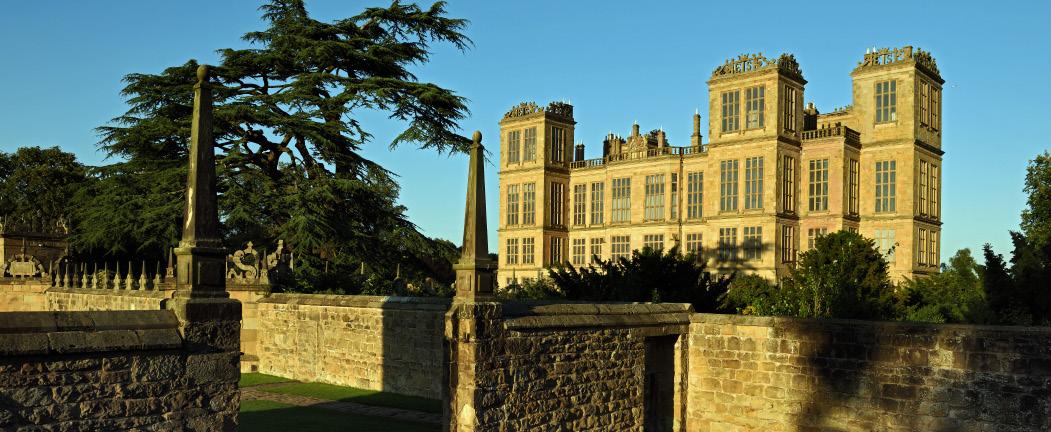
An icon of Elizabethan architecture, Hardwick Hall, stands proudly on a hilltop bordering North-East Derbyshire and Nottinghamshire. Explore the rich history of Hardwick’s matriarch, the formidable Elizabeth Shrewsbury, better known as Bess of Hardwick. Enjoy a warm drink and a slice of cake in the Great Barn Restaurant before taking a walk in Bess’s footsteps around Hardwick’s 2,000 acre estate, enjoying the local wildlife as it changes through the seasons. The Hardwick Estate also includes Stainsby Mill, a 19thcentury water-powered flour mill.
CONTACT Tel: 01246 850430 Email: hardwickhall@nationaltrust.org.uk
LOCATION Hardwick Hall, Doe Lea, Chesterfield, S44 5QJ. If using a Sat Nav please use postcode S44 5RW and then follow the black signs for Hardwick.
What3words: miss.area.from
OPENING TIMES
Please see website for details.
ADMISSION Check our website for admission prices. National Trust members: Free admission.
STANFORD HALL
www.stanfordhall.co.uk
Simon Jenkins (journalist and author) wrote in England’s 1,000 Best Houses; “Stanford is the perfect William & Mary House. When seen from the road, the south front floats like a palace of romance across a distant meadow”.
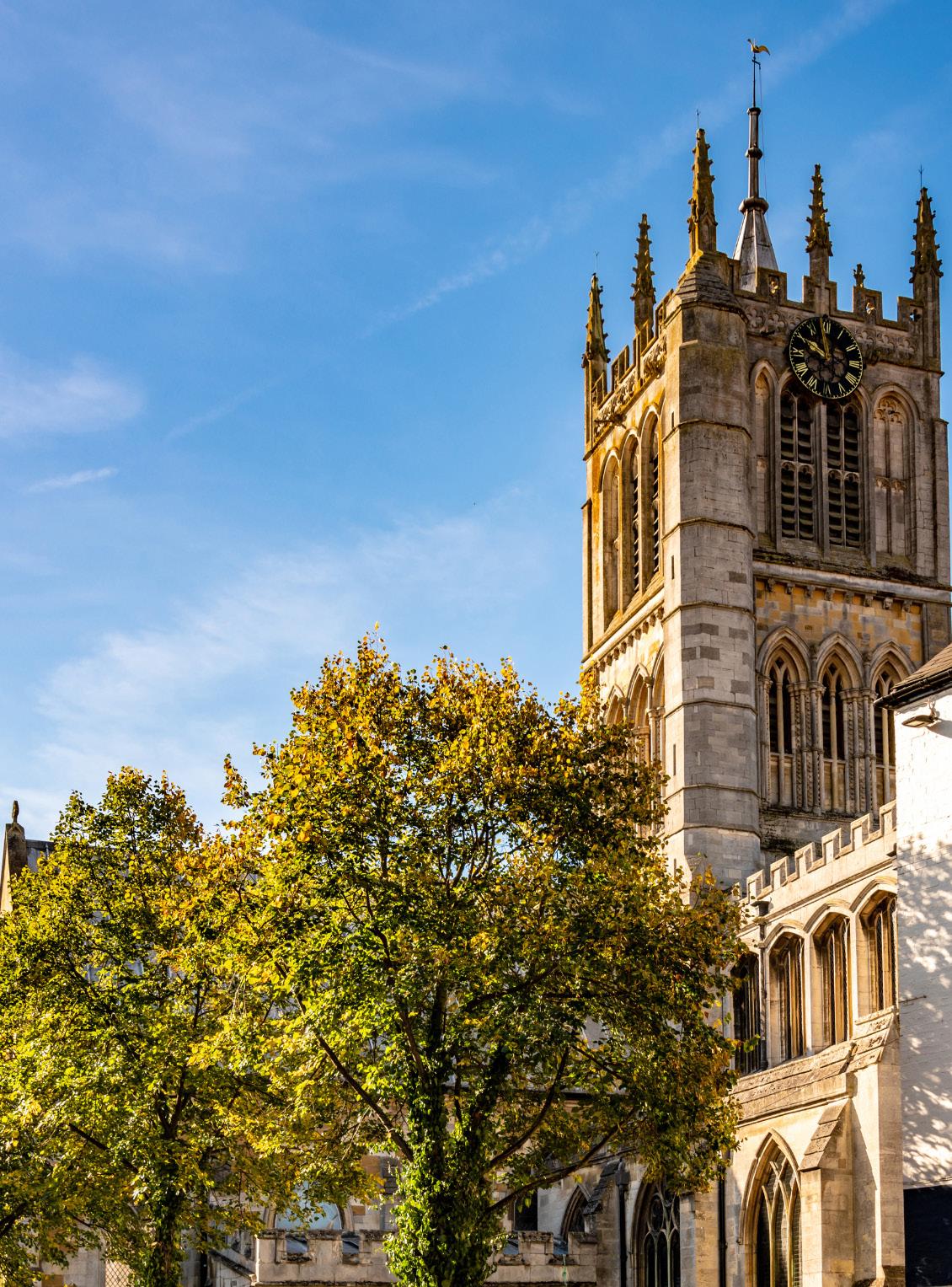
Stanford has been the home of the Cave family, ancestors of the present owner, since 1430. The Hall was built in the 1690s with the oak avenues that radiate from it, which in turn are flanked by two man-made lakes with meadows that stretch beyond to the woodlands on the horizon. Throughout the house are portraits of the family and examples of furniture and objects which they collected over the centuries. There is also a collection of Royal Stuart portraits and a walled Rose Garden.
Parkland, helicopter landing area & lecture room.
Toilet facilities available.
“Easter Opening ONLY” weekdays teas available in historic dining room on request. Stables tearoom open at weekends.
Partial. WCs.
Dogs on leads only.
Educational visits available.
Group tours. Tour time: ¾ hour.
Corporate days including lunches & dinners, small conferences & clay pigeon shoots etc.
Offering civil ceremonies and wedding receptions.
2,500 cars grass standing and 6-8 coaches. Coach parking on gravel in front of house.
For all upcoming events, please see ‘Visit Us & Events’ on the website.
Filming opportunities available.
Accommodation available. Group bookings throughout the year. Caravan Site 01788 86037.

CONTACT Owner: Mr & Mrs N Fothergill
Contact: Nick Fothergill Tel: 01788 860250, Email: enquiries@stanfordhall.co.uk
LOCATION Lutterworth, Leicestershire LE17 6DH
Map Ref: 7:B7 - M1/J18 6m. M1/J20, 6m. M6 exit/access at J1, 4m. Historic House signs
OPENING TIMES From Mon 18th Mar - Sun 7th Apr 2024.Closed Easter Sat 30th Mar. The House is also open in conjunction with park events, please see website or call for details. Pre-booked groups (20+) Mon-Fri by appointment only.
OVERNIGHT STAYS Overnight stays in beautiful Georgian Coach House (including breakfast) are available to HH members at £175 per double room during Easter opening 18th Mar to 7th Apr 2024. Please contact enquires@stanfordhall.co.uk for bookings.
ADMISSION House & Grounds: Adult £15 Child (under 14 yrs) FOC. Grounds only £5 Child (under 14 yrs) FOC. Special admission prices will apply on event days.
HARDWICK HALL
East Midlands 124 visitheritage.co.uk

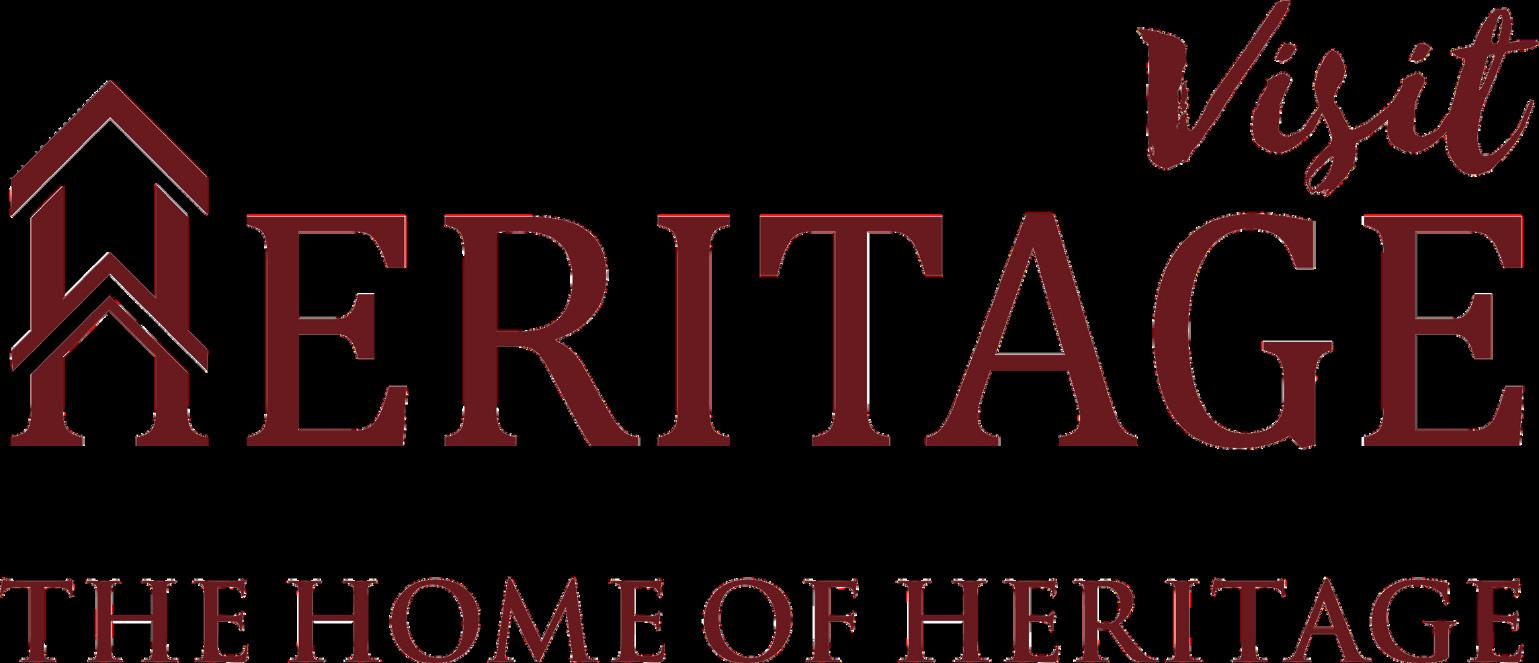
Visit Heritage, home of the Hudson’s Guide and your one stop shop for heritage attractions across the UK. www.visitheritage.co.uk 125 visitheritage.co.uk

HEART of ENGLAND HEREFORDSHIRE • SHROPSHIRE • STAFFORDSHIRE WARWICKSHIRE • WEST MIDLANDS • WORCESTERSHIRE COUNTRYSIDE Cotswolds Canals Offa’s Dyke HERITAGE Shakespeare Gunpowder Plot Industrial Revolution FOOD Beer & cider Apples & pears Staffordshire oatcakes HEREFORDSHIRE STAFFORDSHIRE WORCESTER SHIRE SHROPSHIRE WARWICKSHIRE WEST MIDLANDS • Ross-on-Wye • Evesham • Ludlow • Stafford • Warwick Broadway• • Leamington Spa • Nuneaton • Rugby • Tamworth • Stratford-upon-Avon • Leominster Kidderminster • Telford • Worcester Wolverhampton Birmingham Stoke-on-Trent Lichfield Hereford Coventry visitheritage.co.uk 126
HEART OF ENGLAND
Events

WARWICKSHIRE CLASSIC & PERFORMANCE MOTOR SHOW
12th May 2024
Wroxall Estate, home to the Wroxall Abbey, is the new venue for the Warwickshire Classic & Performance Motor Show. The estate is steeped in a rich history dating back as far as the 11th Century.
There are plenty of chances to browse for bargains, project parts, or that historic insignia with the auto jumble and a range of varied trade stands. Refuel and relax at the many refreshment stops.

THREE CHOIRS FESTIVAL
27th July – 3rd August 2024
The Three Choirs Festival, one of the world’s oldest classical choral music festivals, will be held in Worcester this year. This distinguished event, dating back to the 18th century, showcases exceptional choral and orchestral performances, attracting musicians and audiences from around the globe to celebrate the rich heritage of English choral music.

SHREWSBURY FOLK FESTIVAL 2024
Friday 23rd to Monday 26th August 2024
The Shrewsbury Folk Festival is a four day event blending a tradition of folk music and dance and offers musical and cultural diversity in a family friendly format with something for everyone. Traditionally the festival has four main music stages, a dance tent with a programme including ceilidhs, workshops and dance shows, children and youth festivals, workshops, craft fair, food village, real ale, cocktail and gin bars and on-site camping and glamping.

127 visitheritage.co.uk
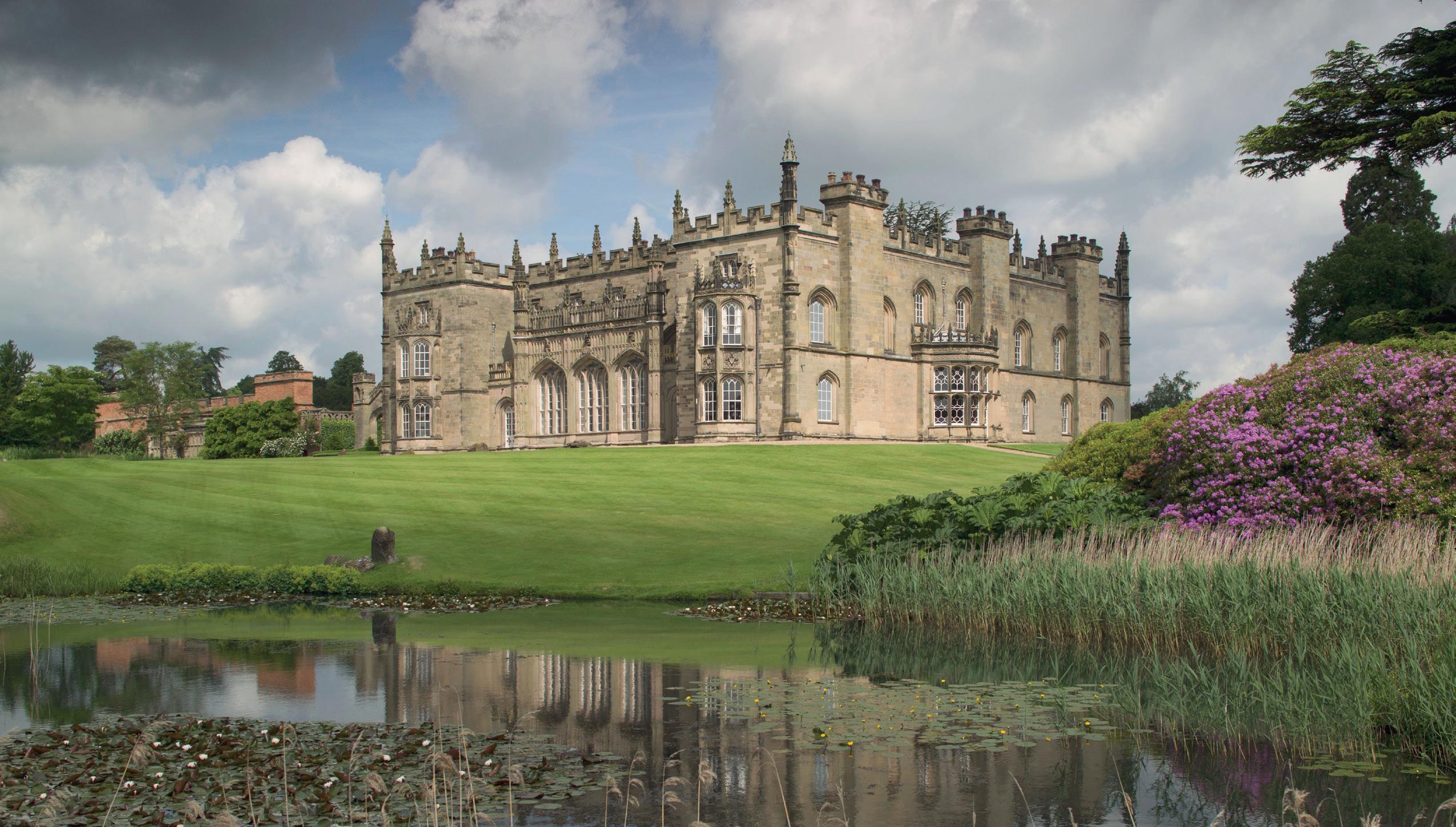
ARBURY HALL
www.arburyestate.co.uk
Arbury Hall, original Elizabethan mansion house, Gothicised in the 18th Century surrounded by stunning gardens and parkland.
Arbury Hall has been the seat of the Newdegate family for over 450 years and is the ancestral home of Viscount Daventry. This Tudor/Elizabethan House was Gothicised by Sir Roger Newdegate in the 18th Century and is regarded as the ‘Gothic Gem’ of the Midlands. The principal rooms, with their soaring fan vaulted ceilings and plunging pendants and filigree tracery, stand as a most breathtaking and complete example of early Gothic Revival architecture and provide a unique and fascinating venue for corporate entertaining, product launches, fashion shoots and activity days. Exclusive use of this historic Hall, its gardens and parkland is offered
CONTACT
Owner: The Viscount Daventry
Contact: Events Secretary
Tel: 01676 540529 Email: info@arburyestate.co.uk
LOCATION
Arbury Hall, Nuneaton, Warwickshire CV10 7PT (for SATNAV use CV10 7NF)
Map Ref: 6:P7 - London, M1, M6/J3 (A444 to Nuneaton), 2m SW of Nuneaton. 1m W of A444.
No cameras or video recorders indoors.
Baby changing facilities available.
200 cars & 3 coaches 250 yds from house. Follow signs. Approach map available for coach drivers.
Partial, WCs.
to clients. The Hall stands in the middle of beautiful parkland with landscaped gardens of rolling lawns, lakes and winding wooded walks. Spring flowers are profuse and in June rhododendrons, azaleas and giant wisteria provide a beautiful environment for the visitor. George Eliot, the novelist, was born on the estate and Arbury Hall and Sir Roger Newdegate were immortalised in her book ‘Scenes of Clerical Life’.
Nuneaton 5 mins. Birmingham City Centre 20 mins. London 2 hrs, Coventry 20 mins.
OPENING TIMES
Hall & Gardens: Bank Holiday weekends (Suns & Mons) from Easter - Aug Bank Holiday from 1pm - 6pm.
Last guided tour of the hall 4.30pm.
Groups: 25+ weekdays by prior arrangement from Apr - end Sep.
Dogs on leads in garden. Guide dogs only in house.
Obligatory. Tour time: 50mins.
Stables Tea Rooms (on first floor) open from 1pm.
Small selection of souvenir gifts.

ADMISSION
Hall & Gardens:
Adult £12, Child (under 16) £6.50, Family (2+2) £28.
Garden Only:
Adult £7.50, Child (under 16) £6.
Exclusive lunches and dinners for corporate parties in dining room, max. 50, buffets 80.
Available to host a wide variety of outside events throughout the spring & summer season.
A marquee in the historic parkland with the Hall as a backdrop is available for Wedding receptions.
As a film location, Arbury presents a variety of atmospheric settings for period and contemporary dramas.
of England 128 visitheritage.co.uk
Heart


LONGNER HALL
www.longner.co.uk

Designed by John Nash in 1803, Longner Hall is a Tudor Gothic style house set in a park landscaped by Humphry Repton. The home of one family for over 700 years. Longner’s principal rooms are adorned with plaster fan vaulting and stained glass.
CONTACT Sarah Easthope
Tel: 01743 636348
Email: info@longner.co.uk
LOCATION Uffington, Shrewsbury, Shropshire SY4 4TG. Map Ref: 6:L6 4 miles SE of Shrewsbury on Uffington road, ¼ mile off B4380, Atcham.
OPENING TIMES Tours at 2pm and 3.30pm on weekdays from Monday 27 May until Friday 28 June. Bank Holiday Monday 1 April, Monday 6 May, Monday 26 August.
ADMISSION Adult £7.50, Child £3
No photography in house. Obligatory.
Partial. Guide dogs only. By arrangement. Limited for coaches.
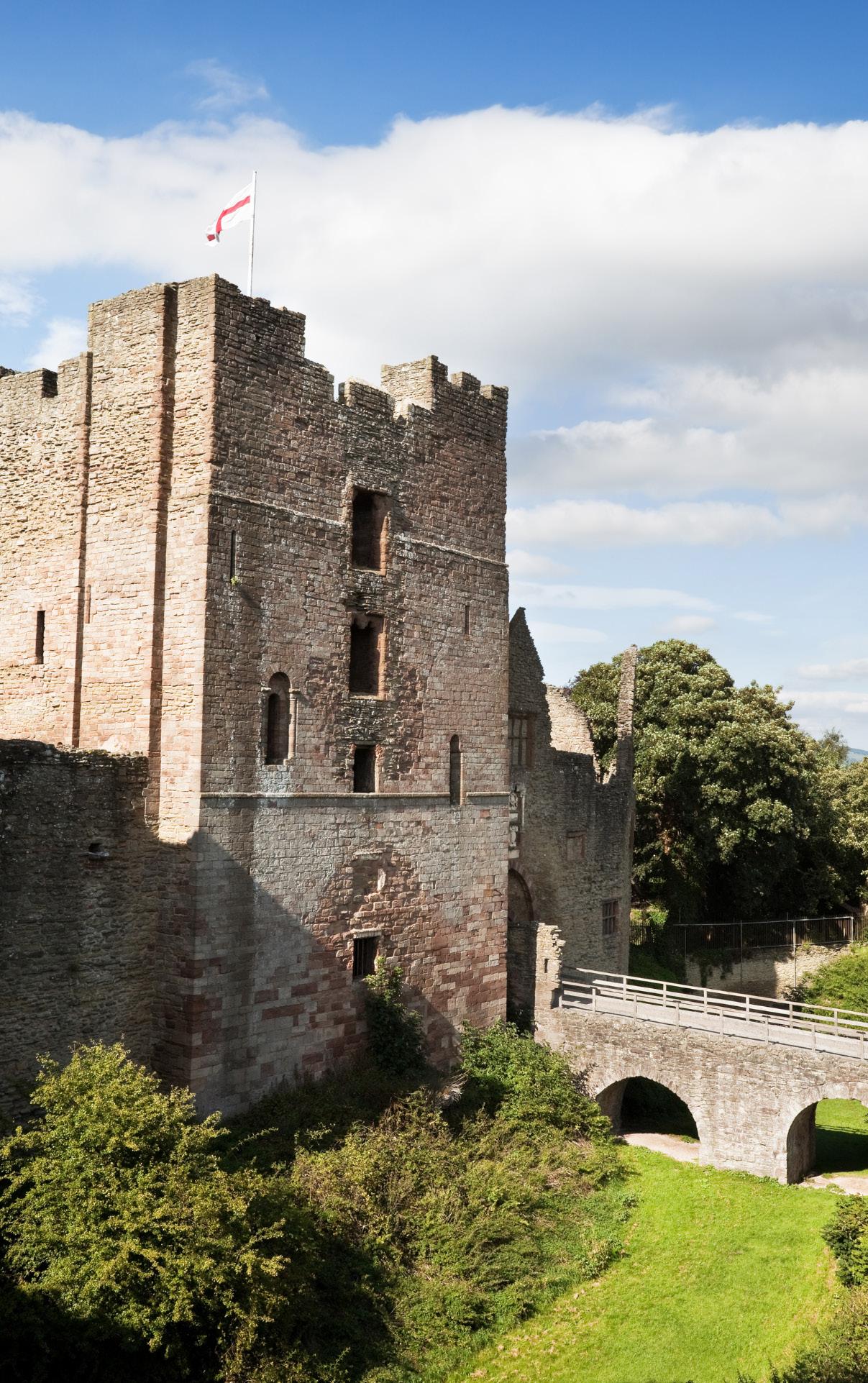
SUFTON COURT
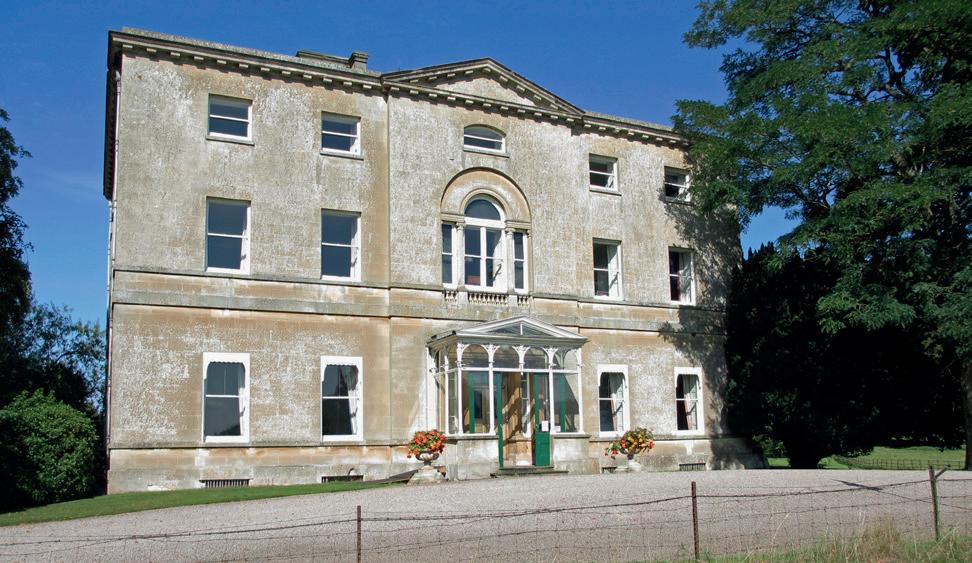
Sufton Court is a small Palladian mansion house. Built in 1788 by James Wyatt for James Hereford. The park was laid out by Humphry Repton whose ‘red book’ still survives. The house stands above the rivers Wye and Lugg giving impressive views towards the mountains of Wales.
CONTACT Owner: J N Hereford
Contact: James Hereford Tel: 07896 149449
Email: james@sufton.co.uk
LOCATION Mordiford, Hereford HR1 4LUMap Ref: 6:L10 Mordiford, off B4224 Mordiford - Dormington Road.
Only small coaches.
OPENING TIMES 14 - 27 May, 13 - 26 Aug. 2pm-5pm.
Guided tours: 2pm, 3pm & 4pm
ADMISSION Adult £5, Child 50p.
Accessible.
In grounds, on leads. Small groups. No special facilities.
Obligatory.
THE LASKETT
thelaskett.org.uk

Be inspired by this remarkable year-round garden that brings a biographical celebration of the arts to the Herefordshire countryside. A celebration of tulips proudly proclaims the arrival of spring. Summer makes a grand entrance with fantastic vistas. Theatrical topiary and architecture take centre stage in autumn. While winter merrily welcomes Advent with scent, colour and foliage. Sir Roy gerenrously gifted The Laskett to the charity Perennial to help people in horticulture; their creation makes a wonderful setting for an aesthetic tour and the exclusive Laskett picnic.
CONTACT
Tel: 01432 805454
Email: thelaskett@perennial.org.uk
LOCATION Laskett Lane, Much Birch, Herefordshire, HR2 8HZ.
OPENING TIMES 2 April - 31 October, Tuesday and Thursday, 10:30am and 2:30pm.
ADMISSION £12.
Heart of England 129 visitheritage.co.uk
OLD SUFTON
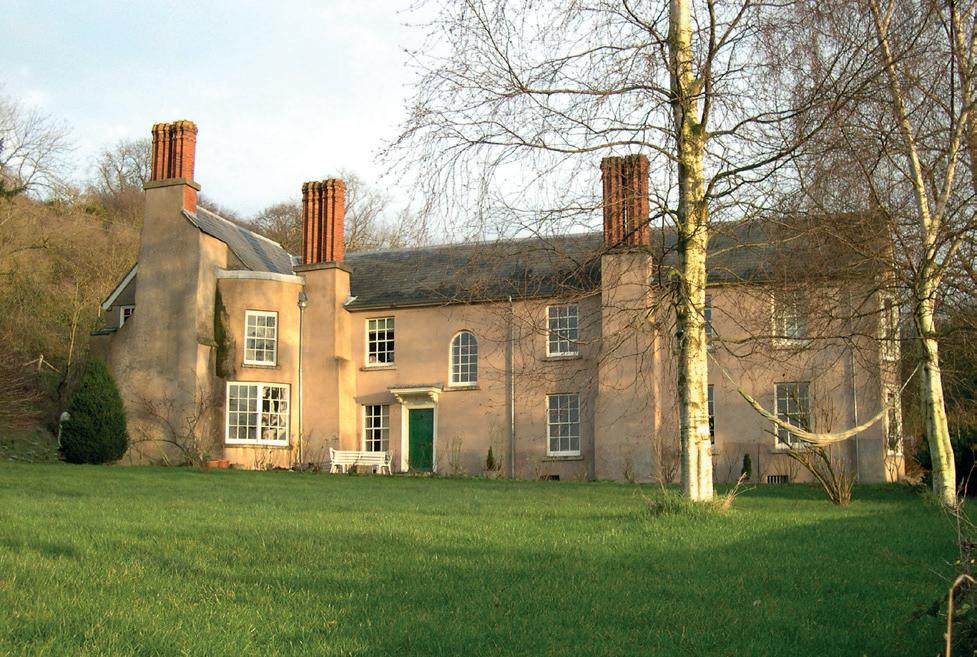
A 16th Century manor house which was altered and remodelled in the 18th and 19th Centuries and again in this Century. The original home of the Hereford family (see Sufton Court) who have held the manor since the 12th Century.
CONTACT Owner: Trustees of Sufton Heritage Trust. Contact: James Hereford Email: james@sufton.co.uk
LOCATION Mordiford, Hereford HR1 4EJ. Map Ref: 6:L10. Mordiford, off B4224 Mordiford - Dormington Road.
ADMISSION Adults £5
OPENING TIMES By appointment to: james@sufton.co.uk
Obligatory. Open all year by appointment.
Partial. Small groups. No special facilities. Parking is available.
HODNET HALL GARDENS
www.hodnethallgardens.org
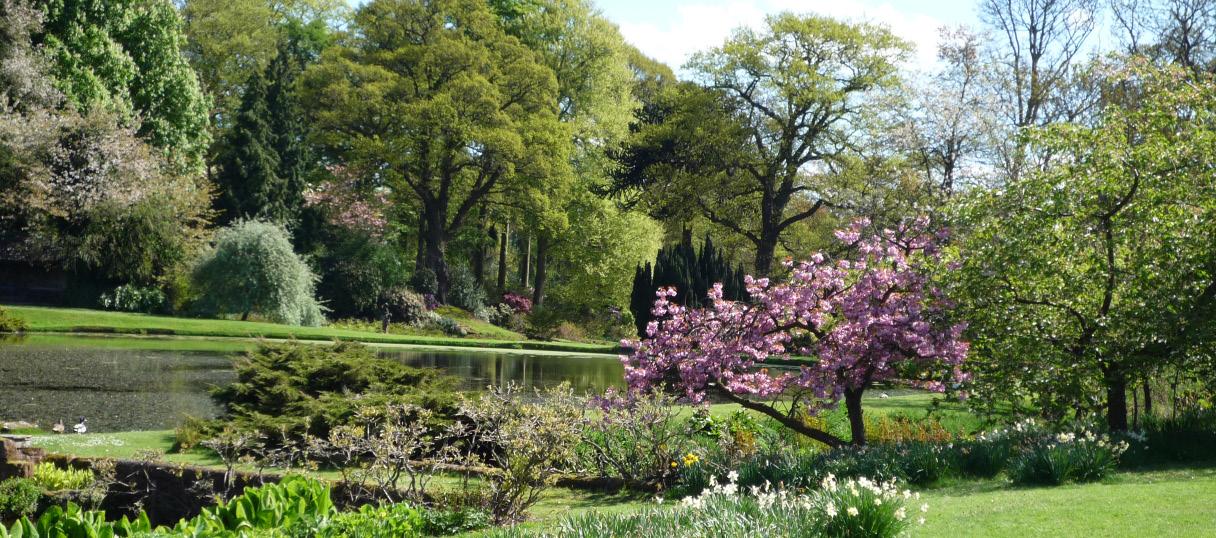
Over 60 acres of brilliant coloured flowers, magnificent forest trees, sweeping lawns and a chain of ornamental pools which run tranquilly along the cultivated garden valley to provide a natural habitat for waterfowl and other wildlife. No matter what the season, visitors will always find something fresh and interesting to ensure an enjoyable outing.
CONTACT Owner: Sir Algernon and the Hon Lady Heber-Percy.
Contact: Secretary Tel: 01630 685786
Email: secretary@hodnethall.com
LOCATION Hodnet, Market Drayton Shropshire TF9 3NN Map Ref: 6:L5 - 12 miles North East of Shrewsbury on A53; M6/J15, M54/J3.
Facebook: /hodnethall
Instagram: /Hodnethallgardens
Parking available.
Partial. WCs.
Dogs welcome on leads.
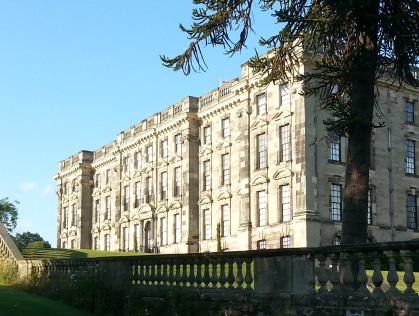
STONELEIGH ABBEY www.stoneleighabbey.org
A fine Grade 1 listed English mansion. One of the seats of the Leigh Family, Stoneleigh has played host to several people of note, including King Charles I, Queen Victoria and Novelist Jane Austen.
CONTACT Tel: 01926 858535 Email: Bookings@stoneleighabbey.org LOCATION
Stoneleigh Abbey, The Estate Office, Stoneleigh Abbey, Kenilworth, Warwickshire CV8 2LF. Located on the B4115 Ashow Road, Kenilworth. What3Words: Petal.Paint.Tribune
OPENING TIMES 10am to 5pm Sunday to Thursday. ADMISSION Adults £7 grounds entry or £15 with a Guided Tour. Children £1.50 (ages 4-16) £5 with a tour. Guided tours available to book on the day of visit from 11am to 3pm on the hour. Tour takes around 50 minutes.
Toilets. Parking available. Guided tours. Café/tea room/refreshments. Baby changing facilities. Open all year. Shop. Private/corporate functions. Special Events. Weddings.

LITTLE MALVERN COURT littlemalverncourt.co.uk
Prior’s Hall, associated rooms and cells, c1489. Former Benedictine Monastery. Oak-framed roof, five bays. Library, collection of religious vestments and relics. Embroideries and paintings. Gardens: 10 acres of former monastic grounds with spring bulbs, blossom, old fashioned roses and shrubs. Access to Hall only by flight of steps.
CONTACT Owner: Trustees of the late TM Berington Contact: Mr Hugh Thomas Tel: 07856 035599
Email: littlemalverncourt@hotmail.com LOCATION Nr Malvern, Worcestershire, WR14 4JN Map Ref: 6:M9 3m S of Great Malvern on Upton-on-Severn Rd (A4104).
OPENING TIMES Opening Times: 17 April until 20 July, Wed & Thurs and alternate Saturday afternoons 2.00pm - 5.00pm. ADMISSION House & Garden (booking required): Adult £12, Child £3. Garden only: Adult £9, Child £2.
Toilet facility on site upstairs. Parking across the road - signposted. Partial. Garden on a slope and access to the Prior’s Hall is also up steps. Timed guided tours of house only. Tea, coffee, cake in Courtyard Tea Room 2.30pm-4.30pm. See our website for up to date information.
PITCHFORD HALL & TREEHOUSE
Condover, Shrewsbury, Shropshire SY5 7DN
In the grounds of Britain’s finest half-timbered house; Pitchford Hall. Perched in a lime tree is the world’s oldest treehouse; standing since the late 1600s. Map Ref: 6:K6 - Sat Nav Postcode: SY5 7DN Website: www.pitchfordestate.com Admission: £25
Open: Please book 90 minute guided tours in advance through www.historichouses.org/house/pitchford-hall/tours/
WINTERBOURNE HOUSE AND GARDEN
58 Edgbaston Park Road, Birmingham B15 2RT
Winterbourne is set in 7 acres of botanic garden. Map Ref: 6:O7
Tel: 0121 414 3003 Email: winterbourne@contacts.bham.ac.uk
Website: www.winterbourne.org.uk
Open: Mar-Oct 10.30am to 5pm, Nov-Feb 10.30am to 4pm. Last admission 30 mins before closing. Closed around Christmas/New Year, please check website.
Admission: Adult £8.00, Child/Concessions £6.90, Family £26.30.
OPENING TIMES Every Wed, Sun and Bank Holiday Mon from Sun 10th Mar until Wed 30th Oct; 11am-5pm. Plant Fair: Sat 8th and Sun 9th June; 10am-5pm.
National Garden Scheme Day: Sun 7th July.
ADMISSION Adult £9.00;
Light lunches and afternoon teas during garden open days.
Garden restaurant.
See Facebook page for upcoming special days and events.

Child £1.00; Plant Fair (8th-9th June): Adult
£5.00.
of England 130 visitheritage.co.uk
Heart

131 visitheritage.co.uk
Heart of England
YORKSHIRE
EAST YORKSHIRE • NORTH YORKSHIRE
SOUTH YORKSHIRE •
WEST YORKSHIRE
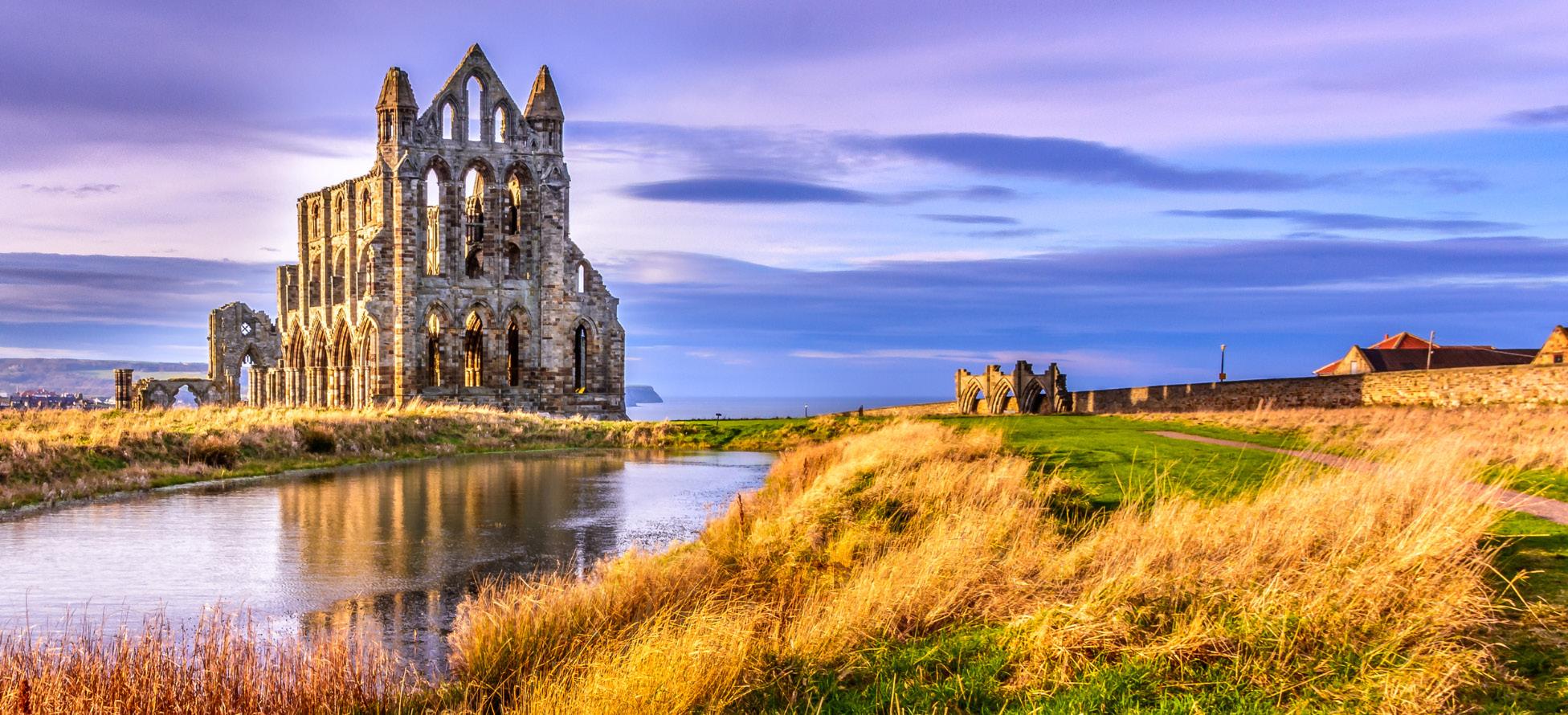
COUNTRYSIDE Dales, Moors & Wolds
Tour de Yorkshire
Herriot Country
HERITAGE
Wars of the Roses
Thomas Chippendale
Abolition of slavery
FOOD
Yorkshire parkin
Pontefract cakes
Yorkshire pudding
Ripon
NORTH YORKSHIRE
Whitby •
Skipton •
Bradford
Halifax •
WEST YORKSHIRE
Sheffield
Leeds
Wakefield
SOUTH YORKSHIRE
York
EAST YORKSHIRE
Hull
Beverley •
Harrogate •
Thirsk • Scarborough •
North Allerton • •Doncaster
visitheritage.co.uk 132
Events

SHEFFIELD CHAMBER MUSIC FESTIVAL
17th to 25th May 2024
Sheffield Chamber Music Festival is an annual cultural event in Sheffield, England, showcasing the beauty of chamber music. Renowned musicians perform a diverse repertoire in various venues, creating an intimate and immersive musical experience. The festival enriches the city’s cultural landscape, attracting classical music enthusiasts and fostering appreciation for chamber compositions.
BRIDLINGTON KITE FESTIVAL
18th and 19th May 2024
Some of the world’s largest inflatable kites will take to the skies above the dramatic cliffs of the East Yorkshire coast for the annual Bridlington Kite Festival.
Kites of all descriptions, sizes and colours will take to the air for two days of aerial displays over Sewerby Fields
From flying frogs to sky-high snakes and leaping lizards to daredevil dragons, scores of exotic inflatables will add a splash of colour to the cliff tops above the popular seaside resort of Bridlington.
WHITBY FOLK WEEK 2024
17th - 23rd August 2024
Whitby Folk Week is an annual celebration of traditional music, dance, and song in the picturesque coastal town of Whitby, England. Renowned for its vibrant atmosphere, the festival features concerts, workshops, and lively performances, attracting folk enthusiasts from around the country. It blends heritage with contemporary expressions, fostering a sense of community and cultural appreciation.
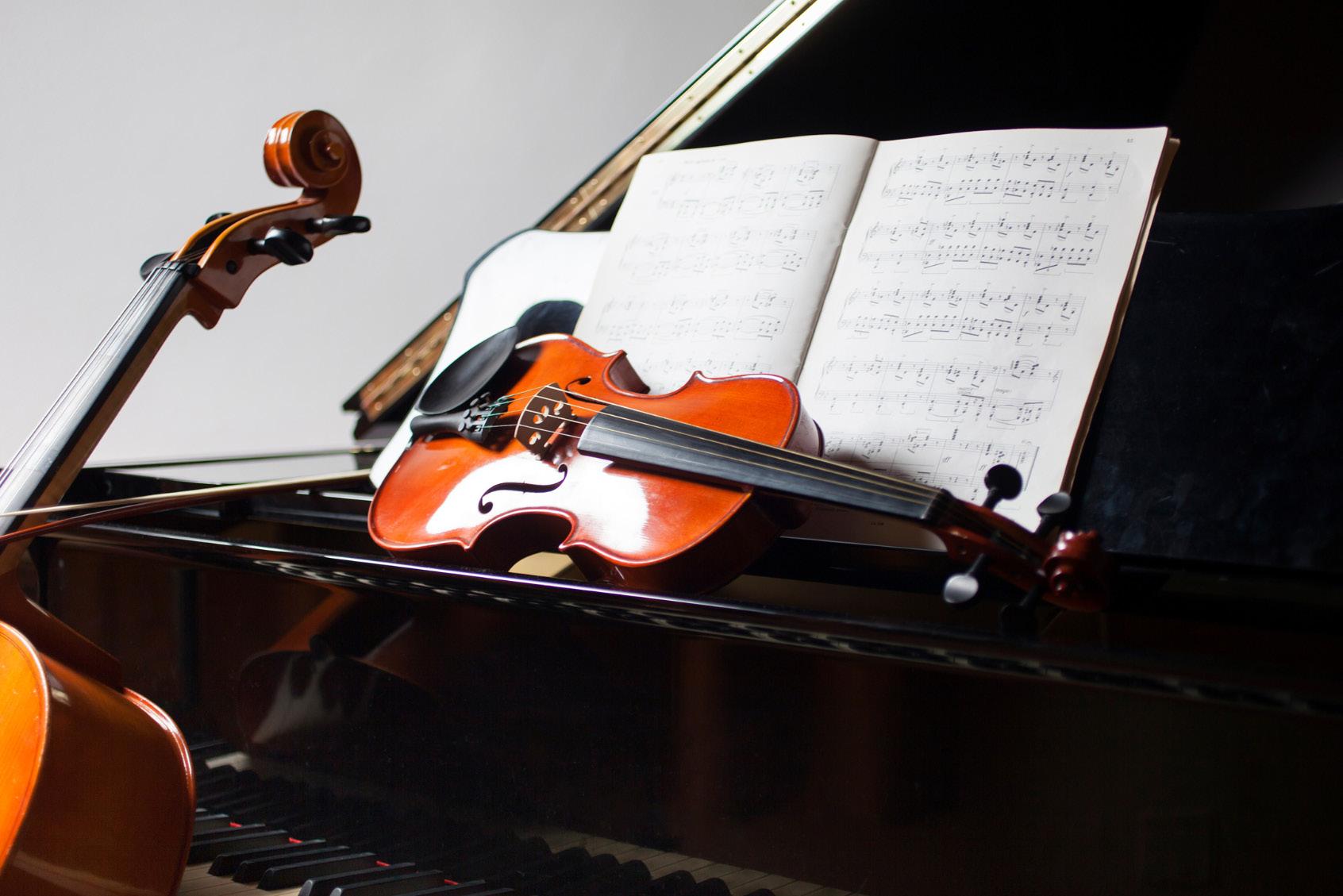

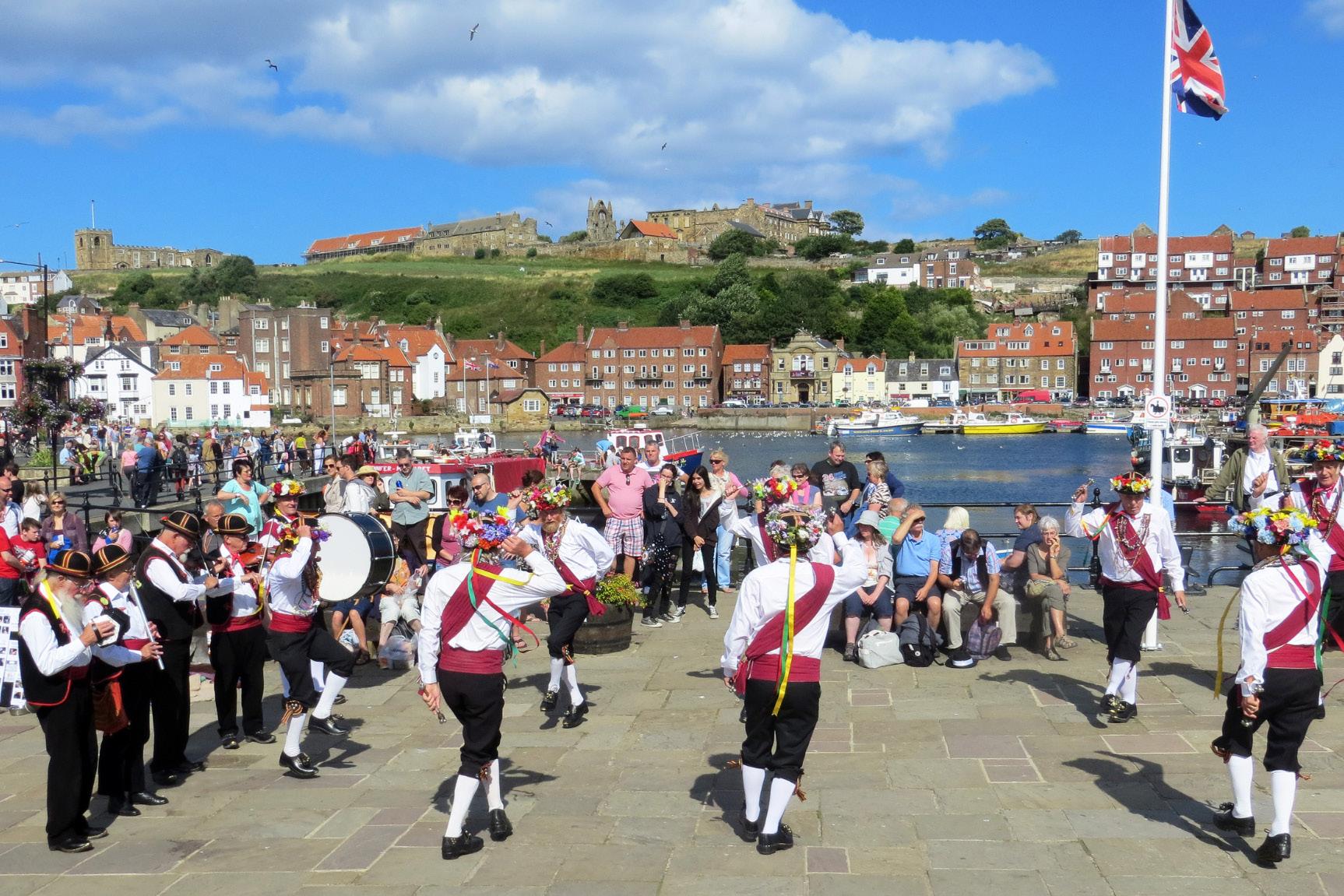
YORKSHIRE
133 visitheritage.co.uk
HOVINGHAM HALL
www.hovingham.co.uk

Attractive Palladian family home, designed and built by Thomas Worsley. The childhood home of Katharine Worsley, Duchess of Kent. It is entered through a huge riding school and has beautiful rooms with collections of pictures and furniture. The house has attractive gardens with magnificent Yew hedges and cricket ground.
CONTACT Owner: Sir William Worsley
Tel: 01653 628771
Email: office@hovingham.co.uk
LOCATION Hovingham, York, North Yorkshire YO62 4LU Map Ref: 11:C8 18 miles North of York on Malton/ Helmsley Road (B1257)
OPENING TIMES & ADMISSION
Please see the information on our website www.hovingham.co.uk
No photography in the Hall. Partial ground floor only. Magnificent reception rooms are special setting for entertaining. Limited. None for coaches.
WASSAND HALL
www.wassand.co.uk
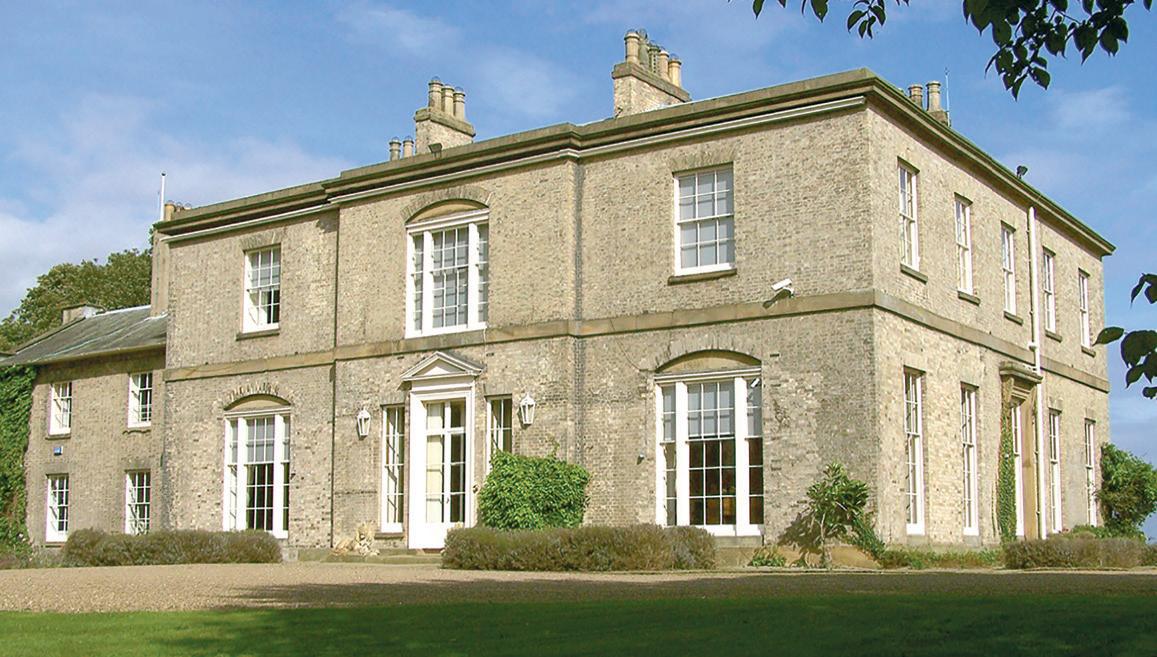
Fine Regency house by Thomas Cundy the elder. Beautifully restored Walled Gardens, woodland walks, parks and vistas over Hornsea Mere, part of the Estate since 1530. The Estate has been in the family since 1530 to the present day, Rupert Russell being the great nephew of the late Lady Strickland-Constable and being the resident Trustee.
CONTACT
Owner: Trustees of Wassand Will Trust
Contact: Shirley Power - 01964 537474
Office: 01965 537047 / 01672 564352
Email: rupert@reorussell.co.uk
LOCATION
Seaton, Hull, East Yorkshire HU11 5RJ Map Ref: 11:F9 - On the B1244
Seaton-Hornsea Road. Approximately 2 miles from Hornsea.
OPEN DAYS (2024)
May 24-25th, June 5-9th, 20th-21st and 23rd-24th, July 4-6th and 31st, August 1st-5th and 23rd-26th.
ADMISSION
See website for full times and details.

Yorkshire & the Humber 134 visitheritage.co.uk
NEWBY HALL & GARDENS
www.newbyhall.com

Create wonderful memories with friends and family at Newby Hall. A perfect place to have some quality family time; discover, relax and smile all in the stunning setting of Newby’s award-winning gardens. There’s so much on offer, tour the house and discover the fascinating history or take a stroll around the gardens. Our adventure playground, miniature railway, pedalo boats, and water play area will keep the children entertained for hours. The Dollhouse Exhibition and Teddy Bear House delight visitors of all ages. Meet friends and family in the Garden Restaurant then finish your day with a browse in our gift shop and plant nursery.
CONTACT Tel: 01423 322583
Email: info@newbyhall.com
LOCATION Newby Hall & Gardens, Ripon, North Yorkshire, HG4 5AE what3words: ///applause.upholding.rags
OPENING TIMES & ADMISSION
Open 29 Mar-29 Sept 2024. See website for times. Online gardens only entry from: Adults £20, Child/Dsbd £15, Family £54. House Upgrade from: Adult £10, Child £9.

YORK GATE
www.yorkgate.org.uk
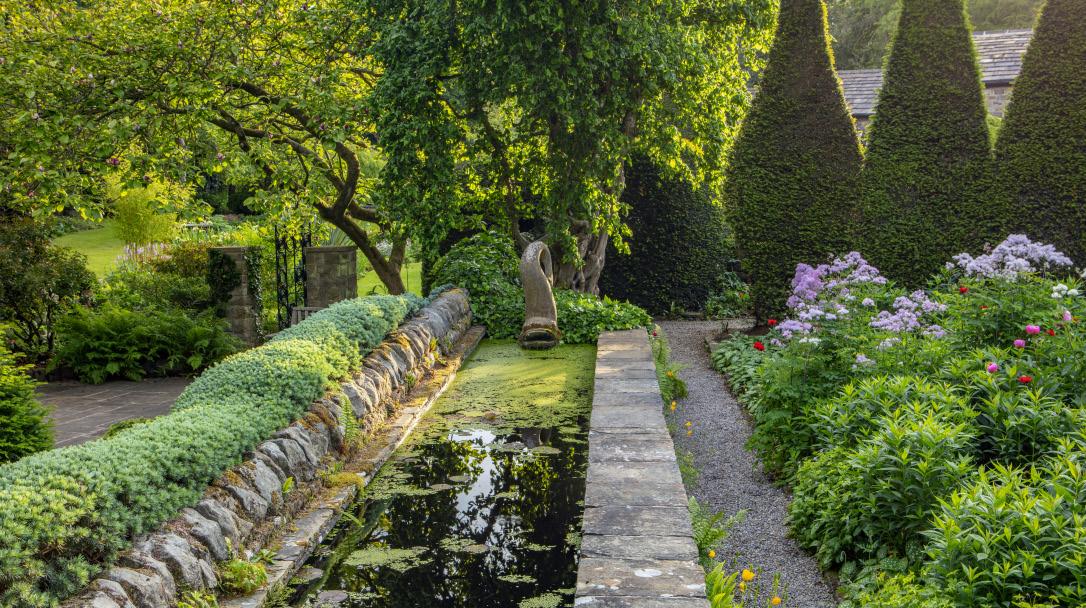
This magical garden with Grade II National Heritage status is brimming with inspirational garden rooms inspired by the arts and crafts movement. A palette of colour from diverse plant combinations bursts to life in spring and summer displaying tulips, bulging borders, tropical plants and wildflowers. Timeless structure draws the eye in autumn and winter with a masterpiece of pattern and topiary, and a finale of snowdrops. Following the death of Sybil Spencer, York Gate was gifted to the charity Perennial to help people in horticulture and is an award-winning visitor attraction.
CONTACT Tel: 0113 267 8240
Email: yorkgate@perennial.org.uk
LOCATION Back Church Lane, Leeds, West Yorkshire LS16 8DW

OPENING TIMES 3 April - 31 October, Wed - Sun 10am till 4pm.
ADMISSION £10, £12.50 gift aid.
SUTTON PARK
www.sutton-park.co.uk
The Yorkshire home of Sir Reginald and Lady Sheffield. Early Georgian architecture. Magnificent plasterwork by Cortese. Rich collection of 18th century furniture. Notable contemporary art collection. Award-winning gardens attract enthusiasts from home and abroad. Tranquil Glamping Site. Tearooms.
CONTACT Administrator Tel: 01347 810249 Email: suttonpark@statelyhome.co.uk
LOCATION Sutton-On-The-Forest, N. Yorkshire YO61 1DP Map 11:B9. 8 miles N of York on B1363 York-Helmsley road follow brown signs. OPENING TIMES Private parties all year by appointment (min. 10). For House and gardens opening dates, tour times & admission prices please see website.
No photography. Limited for coaches. Partial. WCs. Obligatory. Tearooms. Events, please visit our website.

& the
135 visitheritage.co.uk
Yorkshire
Humber
NORTH WEST
CHESHIRE • CUMBRIA • LANCASHIRE
MANCHESTER • MERSEYSIDE

COUNTRYSIDE
Lake District
Forest of Bowland
Morecambe Bay
HERITAGE
Gillow of Lancaster
Maritime heritage
Textile heritage
FOOD
Black pudding
Cumberland sausage
Damson gin
MERSEYSIDE
CUMBRIA
LANCASHIRE
CHESHIRE
• Chester
MANCHESTER • Blackpool
• Whitehaven • Barrow -inFurness
• Kendal Penrith • Carlisle
visitheritage.co.uk 136
Salford
Manchester Lancaster Preston Liverpool
Events

ARLEY GARDEN FESTIVAL
29th - 30th June 2024
The Arley Garden Festival is a captivating annual event held at Arley Hall & Gardens in Cheshire. Renowned for its stunning horticultural displays, the festival showcases beautiful gardens, floral arrangements, and expert gardening advice. Visitors can enjoy plant sales, artisan stalls, and a delightful blend of nature and artistry, making it a mustattend for gardening enthusiasts.
COCKERMOUTH SHOW
3rd Augst 2024
The Cockermouth Show is an annual agricultural event in Cockermouth, Cumbria, celebrating rural life. Featuring livestock exhibitions, agricultural displays, and family entertainment, the show attracts visitors with its vibrant atmosphere. From livestock competitions to local produce showcases, it offers a delightful experience, promoting community engagement and appreciation for agricultural heritage.
BLACKPOOL AIR SHOW
10th - 11th August 2024
The Blackpool Air Show is a thrilling aviation spectacle held annually along the iconic Blackpool seafront. Drawing aviation enthusiasts and families alike, the event features dazzling aerobatic displays by both military and civilian aircraft. The stunning aerial maneuvers and synchronised performances create a breathtaking experience against the backdrop of the seaside skyline.
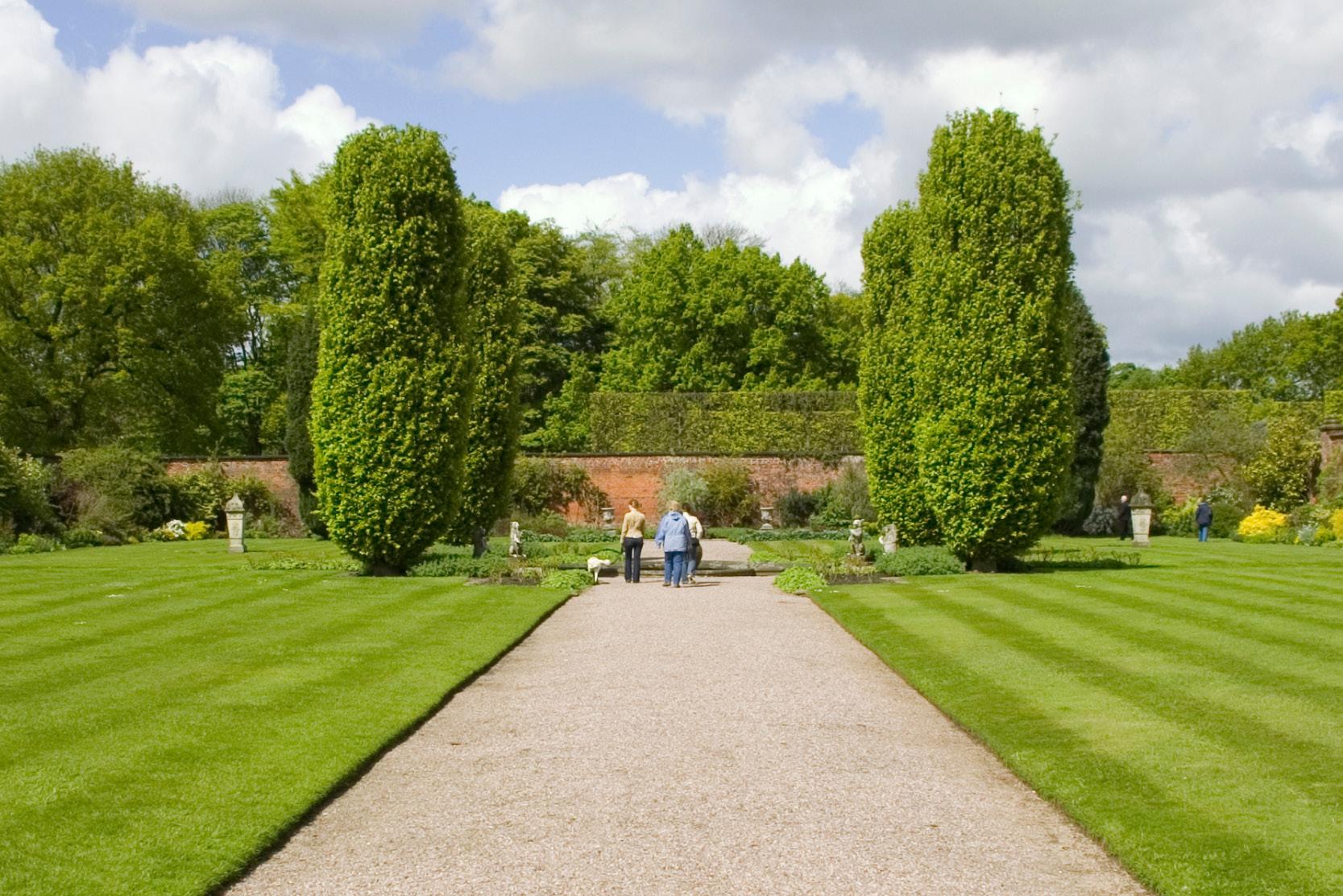


137 visitheritage.co.uk
NORTH WEST
MEOLS HALL
www.meolshall.co.uk

Enlarged in the Palladian style in the 1960’s to showcase a family collection of pictures and furniture, Meols Hall combines comfort and informality with a sense of grand parade. The Tithe Barn and picturesque grounds are available all year round for weddings and receptions: both formal or informal.
CONTACT Owner: The Hesketh Family
Contact: Julia Mutch 01704 228326
Email: events@meolshall.com
LOCATION Churchtown, Southport, Merseyside PR9 7LZ Map Ref: 10:K11 - 3m NE of Southport town centre in Churchtown. SE of A565.
Accessible. Parking available. Assistance dogs only.
One month of the year, visitors to Meols Hall have the unique opportunity to visit the house.
OPENING TIMES May BH 6 & 27 May, BH 26 Aug - 20 Sept 2024 1.30pm-5.30pm daily.
ADMISSION Adult £5, Child £1. Groups welcome. Afternoon Tea is only available for bookings of 25+ by prior arrangement.
See the website for all upcoming events. Wedding ceremonies/receptions in the Tithe Barn.
Hosting challenging outdoor activities, product launches, staff motivation & incentive schemes.
LEIGHTON HALL
www.leightonhall.co.uk
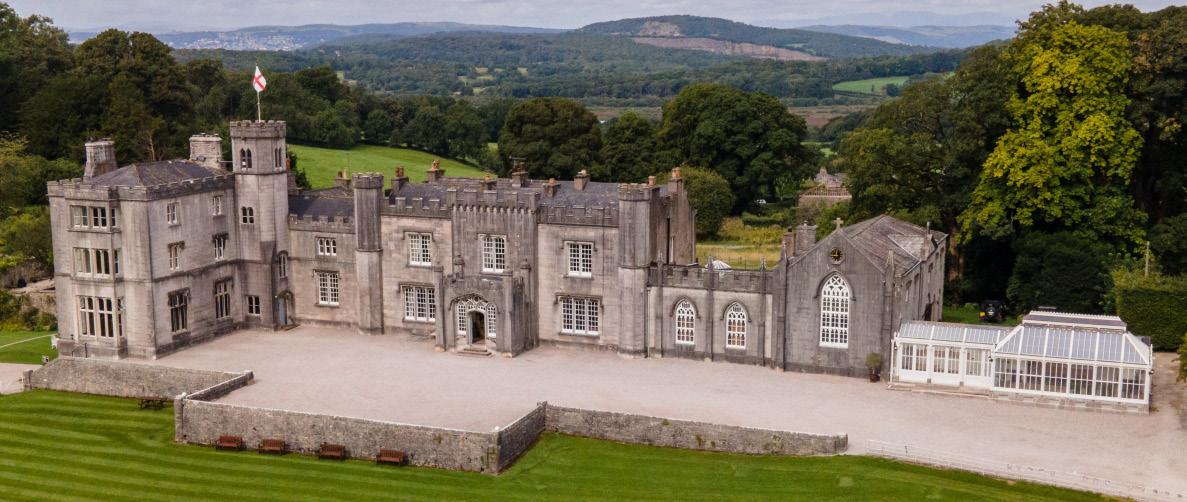
Nestled in a bowl of parkland, with a back drop of the Lakeland fells, Leighton Hall is the lived-in home of the famous Gillow furniture making family, with unique pieces on display. Visits include: entertaining and informal house tours with no roped off areas, charming tea rooms, children’s activities and play area, beautiful gardens, woodland walk and birds of prey flying displays (Summer season only, weather permitting).
CONTACT
Tel: 01524 734474
Email: info@leightonhall.co.uk
Facebook: LeightonHallLancashire
LOCATION Leighton Hall, Carnforth, Lancashire LA5 9ST Map Ref: 10:L8
Located 10 minutes drive from the M6, junction 35. Follow brown tourism signs. Do not follow Satnav.
OPENING TIMES General public May – September. (See website). Pre-booked groups and coach parties (20+) welcome all year.
ADMISSION
Please see website for details.
Enthusiastic guided tours. Café. Gift shop. Free and ample parking. Baby changing facilities. Toilet facilities.

North West 138 visitheritage.co.uk

CAPESTHORNE HALL
www.capesthorne.com

Capesthorne Hall is a beautiful stately home owned by the Bromley-Davenport family and set in 100 acres of picturesque Cheshire countryside. The venue overlooks two lakes, a private family Chapel and stunning formal gardens with woodland beyond and an abundance of bluebells in Spring.
CONTACT Hall Office Tel: 01625 861221, Email: info@capesthorne.com
LOCATION Siddington, Macclesfield, Cheshire SK11 9JY. 30 minutes South of Manchester on A34. Near M6, M60 and M62.
OPENING TIMES 29th March to 28th
October 2024 (Sundays, Mondays and Bank Holidays only)
ADMISSION Car parking - £2 per vehicle.
Garden Entry Pricing - Sundays, Mondays and Bank Holidays: Adults £9, Children (5-16 yrs) £5, Family Ticket (2 x adults and 2 x children) £25. Children under 5 go free.

Hall & Garden Entry PricingSundays, Mondays and Bank Holidays: Adults £13, Children (5-16 yrs) £6, Family Ticket (2 x adults and 2 x children) £33. Children under 5 go free.
Carers accompanying a disabled visitor (proof required to be shown on entry) and Historic Houses Members (HH membership card to be shown on entry) FOC.
ASKHAM HALL www.askhamhall.co.uk
A multi award winning Lake District hideaway, Askham Hall is a 13th-century Grade 1 listed Pele Tower house with a Michelin starred / 4 AA rosette restaurant, 19 luxurious individually designed bedrooms and Grade II listed terraced gardens. It has been in the Lowther family for over 200 years.
CONTACT Owner: Charles Lowther, Contact: Marie-Louisa Raeburn, Tel: 01931 712350
Email: hello@askhamhall.co.uk LOCATION Askham, Penrith, Cumbria CA10 2PF
Map Ref: 10:L5 Askham Hall in Cumbria is situated in a quiet and picturesque village within easy access (about 10 mins’ drive) from Penrith and junction 40 of the M6. Follow the brown tourist signs.
Parking available. Restaurant. Dogs Welcome.

PEOVER HALL & GARDENS
www.peoverhall.co.uk
A charming Grade 2 Elizabethan house that boasts a fascinating history that stems back to 1585. Situated within some 500 acres of 18th Century parkland with delightful gardens, stables and the church of St Lawrence.
CONTACT Mr & Mrs Brooks Tel: 01565 654107 Email: bookings@peoverhall.com
LOCATION Over Peover, Knutsford WA16 9HW Map Ref: 6:M2 - 4 miles S of Knutsford off A50 at Whipping Stocks Inn. OPENING TIMES May-Aug, Tue & Thu afternoons. Stables & Gardens: 2-5pm. Church: 2pm-4pm. ADMISSION Please see website for updated admission prices. Hall tours at 14.30 and 15.30, other days and times by arrangement. Teas and cakes.
North West 139 visitheritage.co.uk
NORTH EAST
COUNTY DURHAM • NORTHUMBERLAND TYNE & WEAR
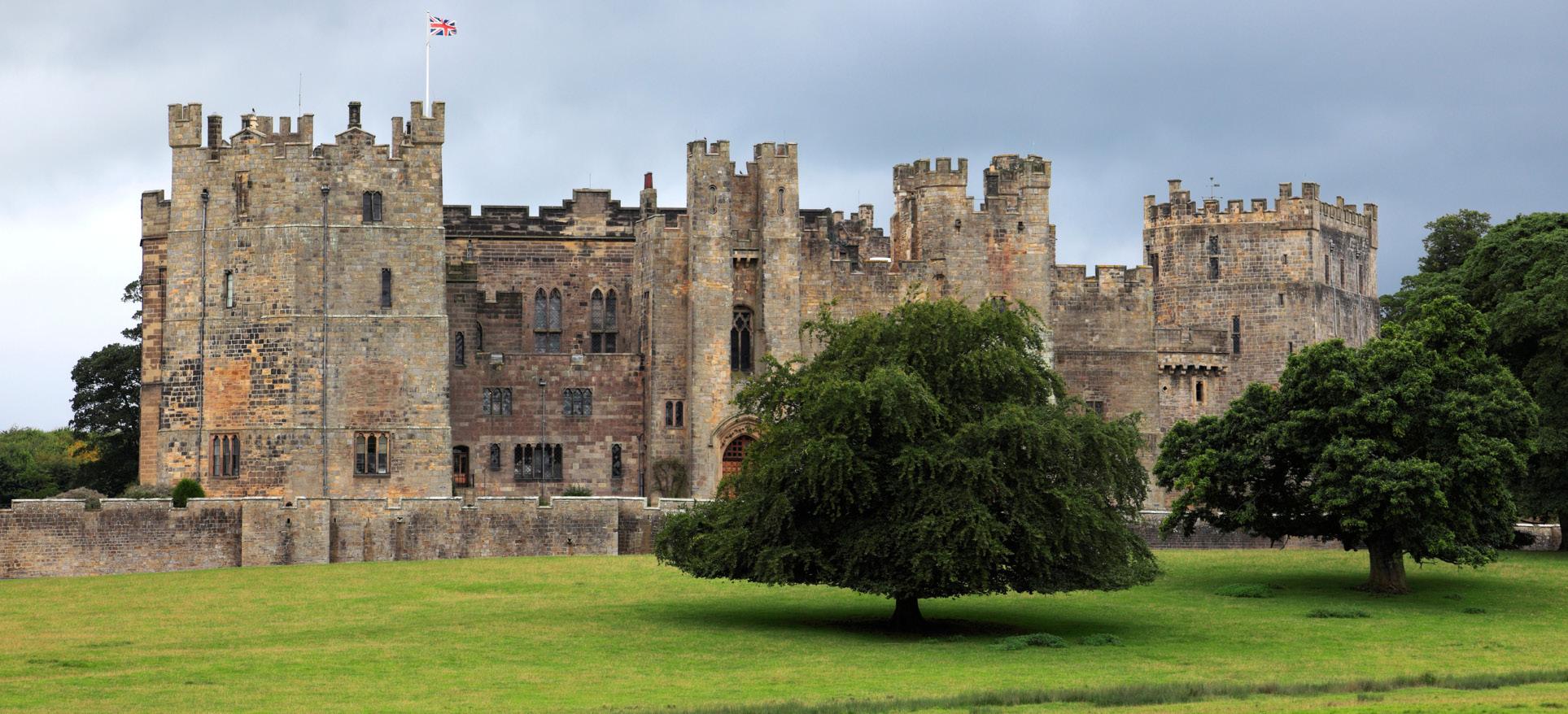
COUNTRYSIDE
Heather moorlands
Sandy beaches
Dark skies
HERITAGE
Hadrian’s Wall
Border castles
Mining & railway heritage
FOOD Pease pudding
Craster kippers
Singing Hinnies
COUNTY DURHAM TYNE & WEAR NORTHUMBERLAND
• Berwick -uponTweed Sunderland Durham
Rothbury • Alnwick • Hartlepool •
Hexham •
Darlington •
Bishop Auckland •
Morpeth •
visitheritage.co.uk 140
Newcastle upon Tyne
NORTH EAST
Events

HEXHAM REGATTA
8th June 2024
Hexham Regatta, held along the River Tyne in Northumberland, is a prestigious rowing event. Established in 1834, it attracts rowers from across the country. The regatta showcases thrilling rowing competitions, fostering a competitive yet friendly atmosphere. With a scenic backdrop, it has become a staple in the rowing community, blending tradition and athleticism.
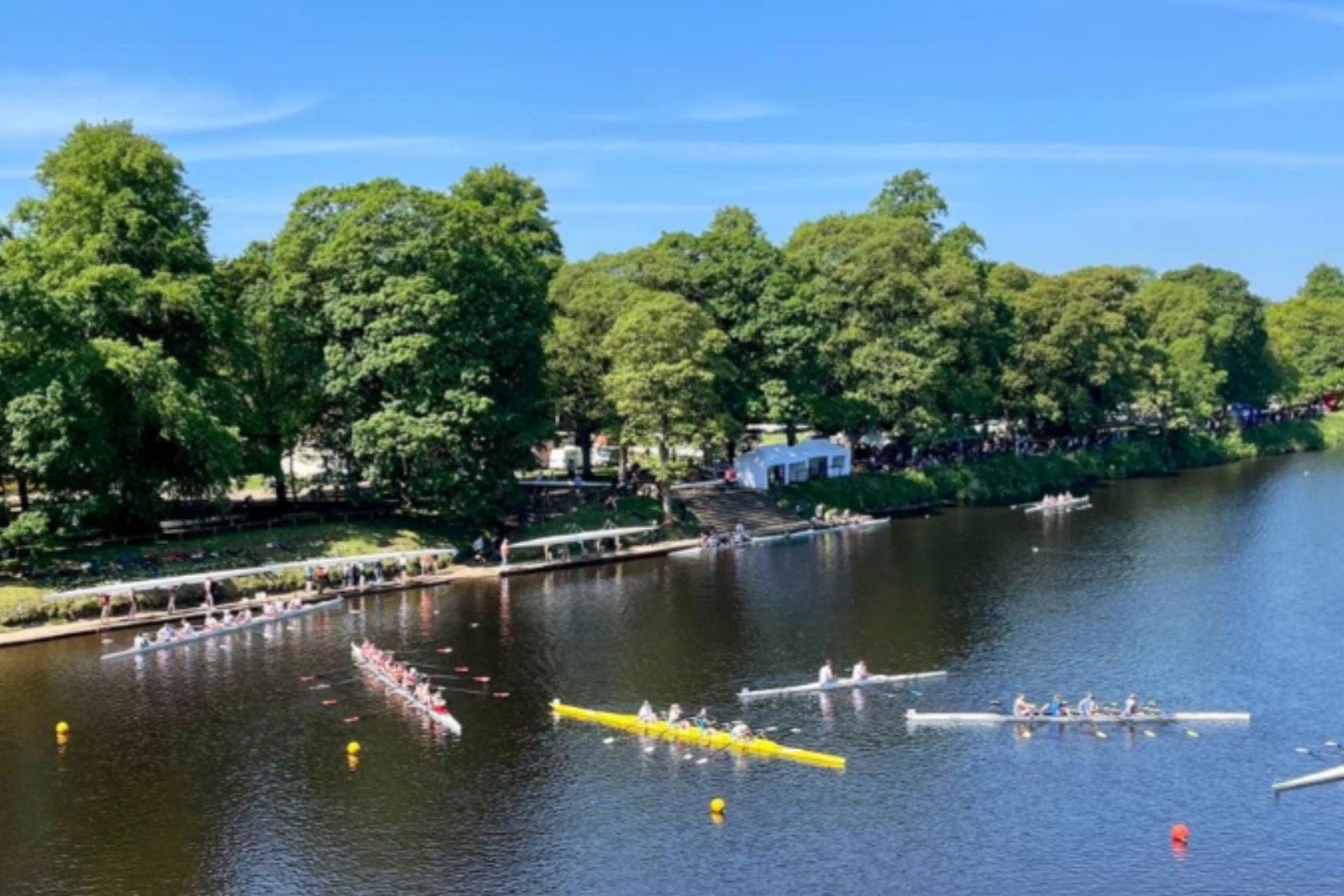
DURHAM BRASS FESTIVAL
9th - 16th July 2024
The Durham Brass Festival is a vibrant celebration of brass music held in Durham, England. Showcasing a diverse range of brass ensembles and genres, the festival attracts international performers and enthusiastic audiences. Through concerts, workshops, and street performances, it fosters a rich cultural experience, uniting communities through the power of brass.

WOLSINGHAM SHOW
September 2024 - Dates to be confirmed
Wolsingham Show, an annual agricultural event in County Durham, England, highlights rural traditions and community spirit. Established in 1763, it features livestock competitions, craft exhibitions, and family entertainment. The show provides a platform for local farmers and artisans while offering visitors a charming glimpse into the region’s agricultural heritage.
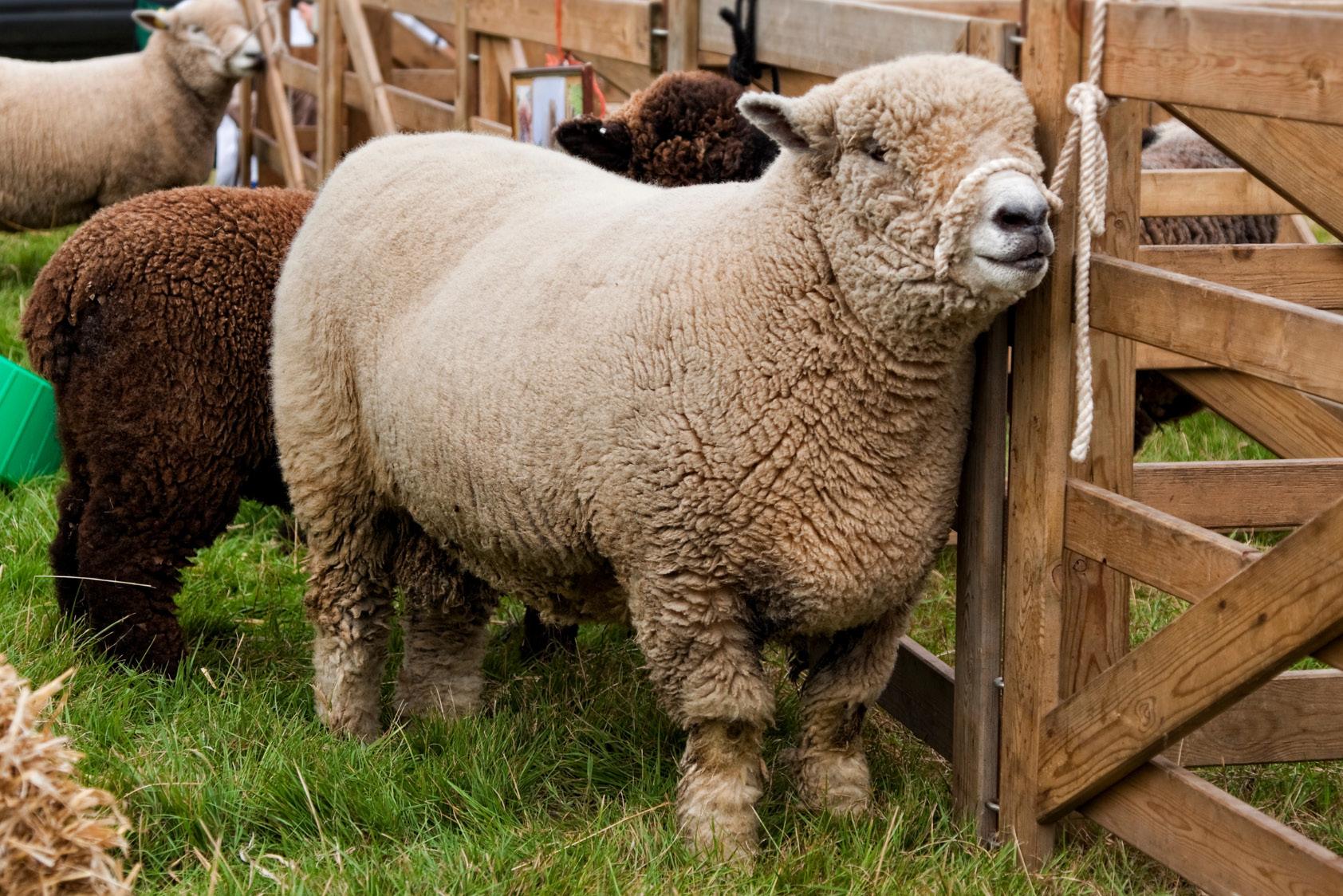
141 visitheritage.co.uk
ALNWICK CASTLE
www.alnwickcastle.com
Alnwick Castle, home to the Percy family for 700 years, has a fascinating history, rich with drama, intrigue and extraordinary people; from a gunpowder plotter to medieval England’s most celebrated knight, Harry Hotspur. Combining medieval architecture with spectacular Italianate interiors housing world-class art, Alnwick Castle is one of the UK’s most significant heritage destinations. With a history beginning with the Norman Age, Alnwick Castle was originally built as a border defence, before being transformed from a fortification into a family home for the first Duke and Duchess of Northumberland in the 1760s. In recent years it has also taken starring roles in a number of film and television productions, most famously featuring as a location for Hogwarts School of Witchcraft and Wizardry in the Harry Potter and the Philosopher’s Stone and for ITV’s Downton Abbey.
Toilet facilities available.
Baby changing facilities available.
Accessible WCs. Wheelchair/mobility scooter hire. Limited access in areas. Free tours of the rooms and grounds.
Coach parking also available.
Photography not permitted in the state rooms.

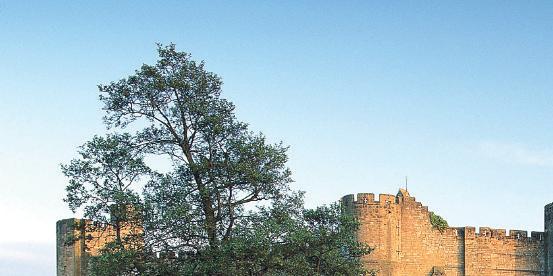

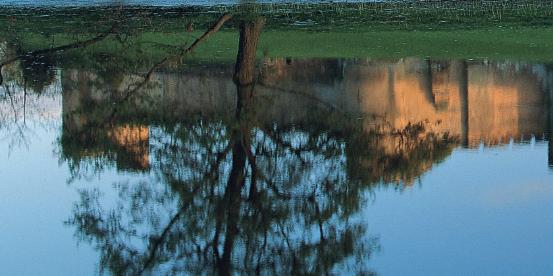



CONTACT Tel: 01665 511100 Group bookings: 01665 511100
Media & Filming: 01665 511100
Email: info@alnwickcastle.com
LOCATION Alnwick, Northumberland NE66 1NQ Map Ref: 14:M11
Signposted o A1; 35 miles N of Newcastle and 80 miles S of Edinburgh.
OPENING TIMES Grounds: Mar- Oct, 10am-5.30pm (last adm 3.45pm).

Courtyard Café, Stables Fryery and Dragon’s Delight.
Courtyard Café. Workshops and activities.
HOWICK HALL GARDENS AND ARBORETUM
www.howickhallgardens.com
Howick Hall Gardens and Arboretum have been owned by the Grey family since 1319. Discover the history of the 2nd Earl, after whom the famous tea is named, wander through the beautiful gardens and arboretum.
CONTACT Email: estateoffice@howickuk.com telephone: 01665 577285 or 01665 577191
LOCATION Howick, Alnwick, Northumberland, NE66 3LB. OPENING TIMES Early February to 31st March 2024, 10.30am-4pm. 1st April - 30th Sept 2024, 10.30am- 6pm (last entry 5pm). 1st Oct - Sunday 10th Nov 2024 (inclusive), 10.30am-last entry 4pm. ADMISSION Adults £11.00, Over 60s £9.90, Children (5 -16 years) £3.30. Children (4 years & Under) FREE. Family Ticket 2024 (2 Adults / 2 Child) £24.75.
Suitable for Disabled People. Tearoom / Refreshments. Baby Changing. Educational/School Visits. Toilets Parking Available. Guided Tours.
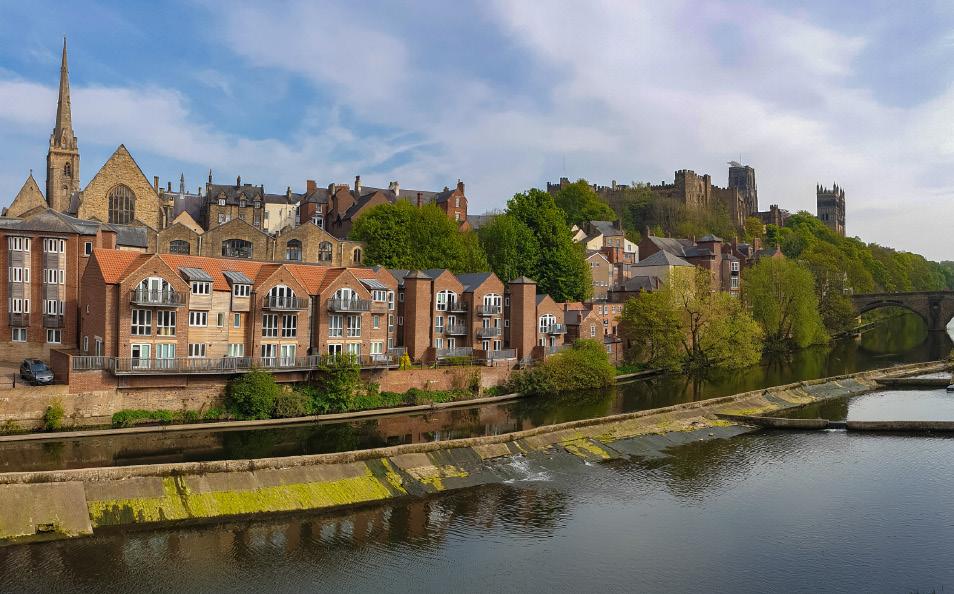
State Rooms: 10.30am-4.30pm (last adm 4pm, Chapel closes at 2.30pm).
Check website for up-to-date opening dates & times.
ADMISSION Please refer to our website for the most up to date information.
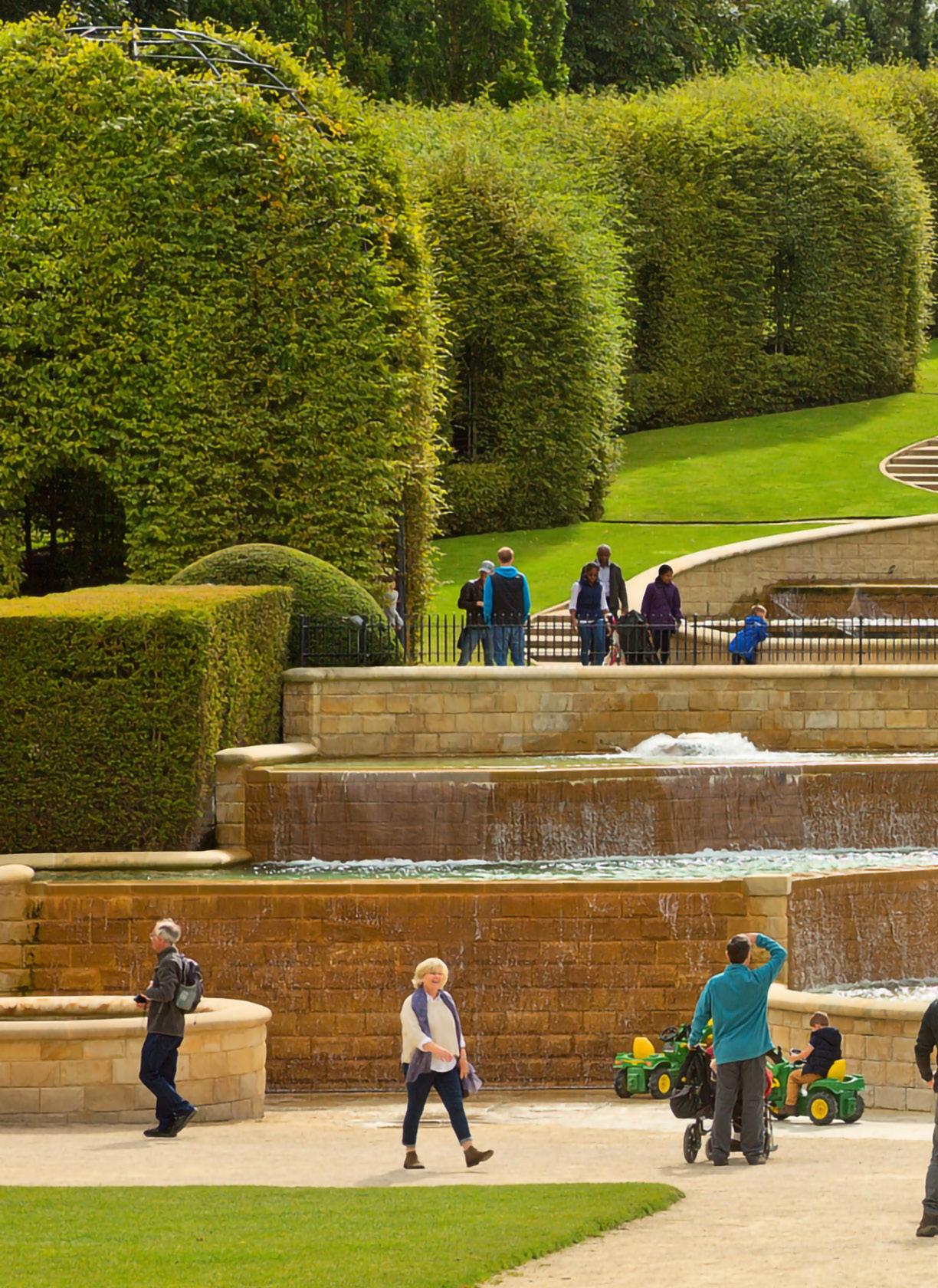
North East 142 visitheritage.co.uk

CHILLINGHAM CASTLE
www.chillingham-castle.com
This remarkable and very private castle has been continuously owned by just one family line since the 1200’s. A visit from Edward I in 1298 was followed by many other Royal visits right down through this century. See Chillingham’s alarming dungeon, as well as active restoration in the Great Halls and State Rooms, which are gradually brought back to life with tapestries, arms and armour. We even have a very real torture chamber.
Gardens: With romantic grounds, the castle commands breathtaking views of the surrounding countryside.
As you walk to the lake, you will see, according to season, drifts of snowdrops, daffodils or bluebells and an astonishing display of rhododendrons. This emphasises the restrained formality of the Elizabethan topiary garden, with its intricately clipped hedges of box and yew. Lawns, the formal gardens and woodland walks are all fully open to the public.
Toilet facilities available.
Coaches by prior arrangement. Limited for coaches.
Self-catering apartments to hire all year round.
Gift shop. Please call for details on educational visits.
Groups & Coach Tours at any time by appointment.
Medieval Castle Tea Room - delicious home-made lunches & treats.
CONTACT Owner: Sir Humphry Wakefield Bt
Contact: The Administrator Tel: 01668 215359
Email: enquiries@chillingham-castle.com
LOCATION Northumberland NE66 5NJ
Map Ref: 14:L11 45 miles North of Newcastle between A697 & A1.
2 miles South of B6348 at Chatton. 6 miles South East of Wooler.
Rail: Alnmouth or Berwick.
OPEN Saturday 30th March and close on Sunday 3rd November. Please refer to our website for up to date information.
ADMISSION Adults £11, Concessions £10, Children £7, Family £30 (2 adults & up to 3 children under 15).
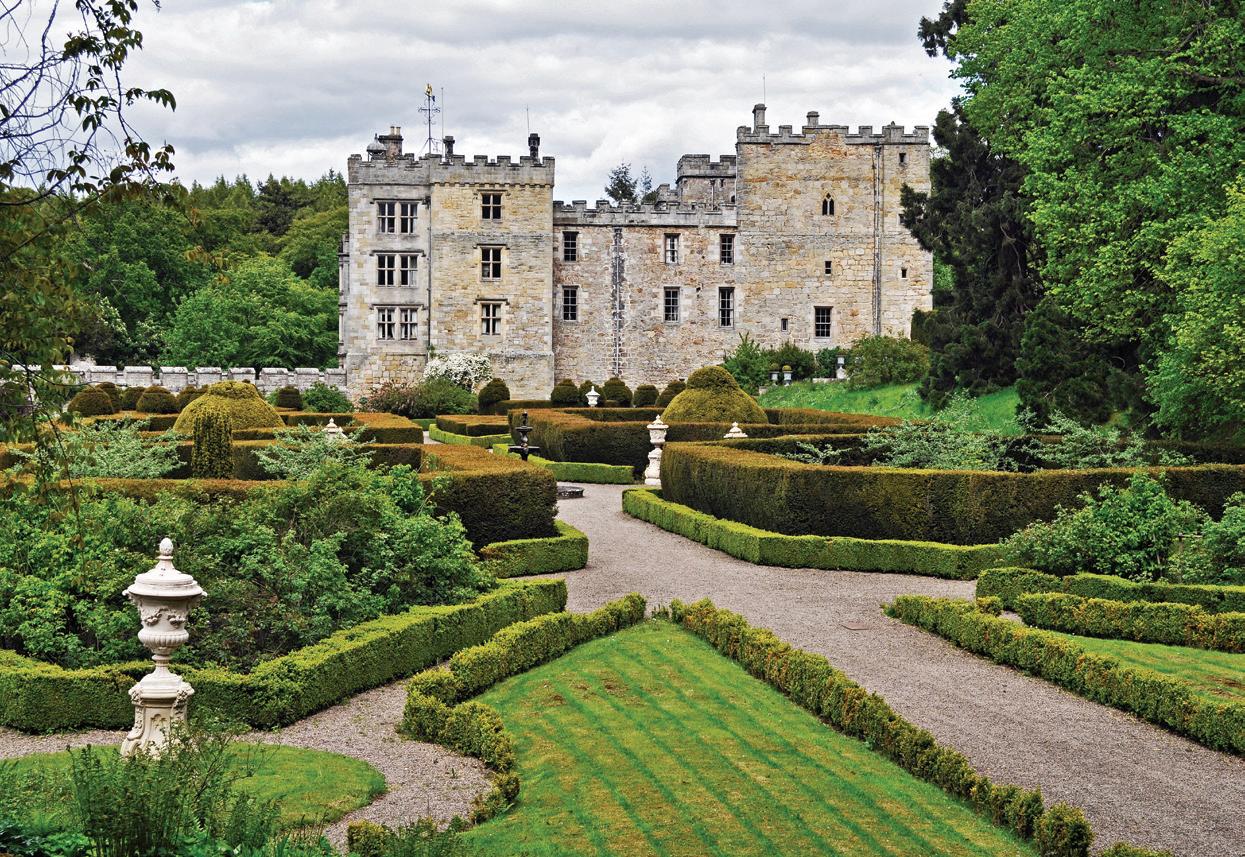

North East 143 visitheritage.co.uk
SCOTLAND
BORDERS • SOUTH WEST SCOTLAND • EDINBURGH
GREATER GLASGOW • TAYSIDE • WEST HIGHLANDS & ISLANDS
GRAMPIAN HIGHLANDS • HIGHLANDS & SKYE
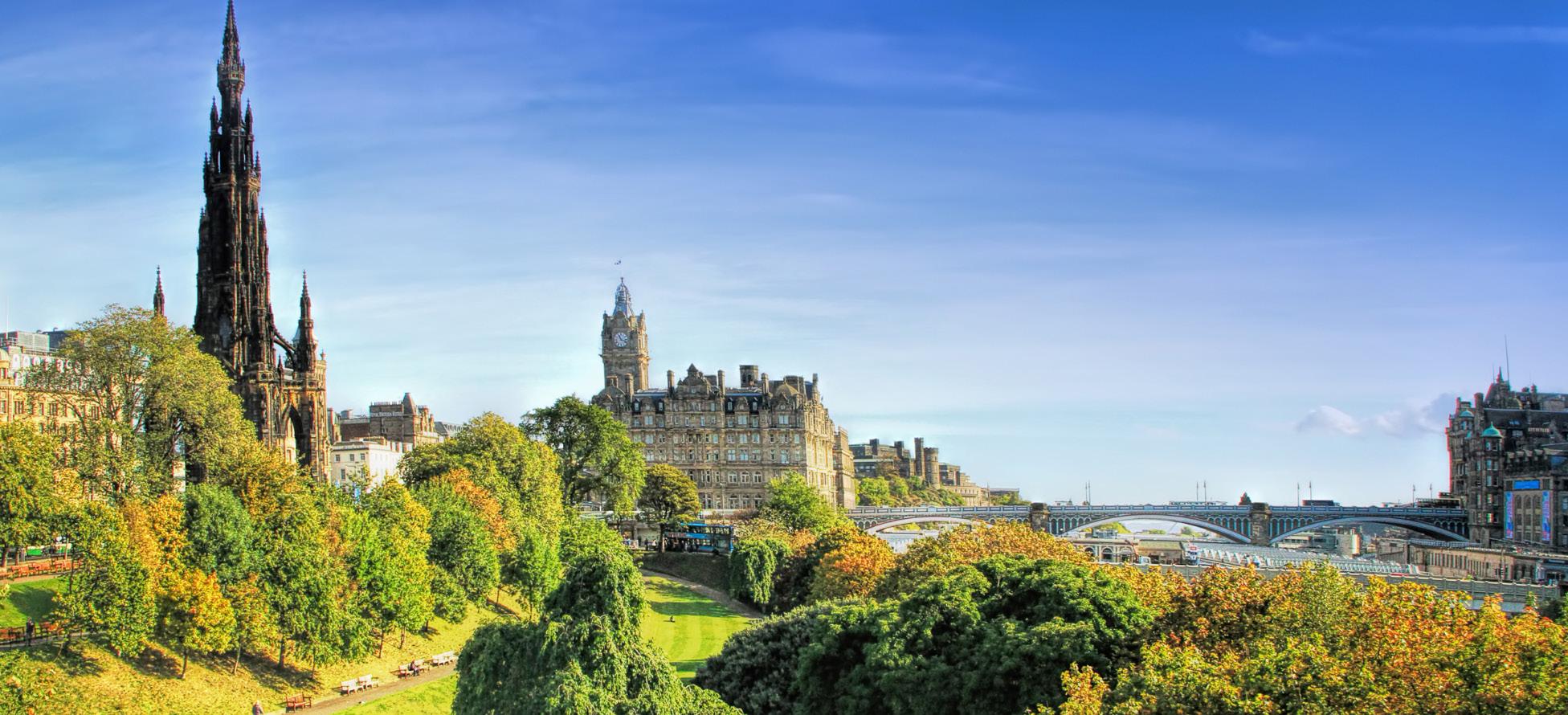
COUNTRYSIDE
Bens & glens
Links golf courses
Lochs & beaches
HERITAGE
Clan history
Highland castles
Lowland palaces
FOOD
Whisky
Salmon
Shortbread
WEST HIGHLANDS & ISLANDS
Inverness
Aberdeen
SCOTTISH HIGHLANDS
Braemar •
ABERDEEN SHIRE
ANGUS (TAYSIDE)
Dundee
PERTHSHIRE (TAYSIDE)
ARGYLL & BUTE
Glasgow
Stirling
STIRLING
LANARKSHIRE FIFE
Edinburgh
LOTHIAN
SCOTTISH BORDERS
AYRSHIRE
DUMFRIES & GALLOWAY
Dumfries
Inverurie •
• Ullapool • Ayr • Oban
•
•
• Stonehaven • Montrose Forfar
• Arbroath •St Andrews •Lanark • Falkirk Culross•
visitheritage.co.uk 144
Events

INVERNESS CLASSIC VEHICLE SHOW
20th May 2024
The Inverness Classic Vehicle Show is an annual event celebrating automotive history in the heart of the Scottish Highlands. Showcasing an impressive array of vintage cars, motorcycles, and commercial vehicles, it attracts enthusiasts and families alike. The event offers a nostalgic journey through time, highlighting the timeless charm of classic vehicles.
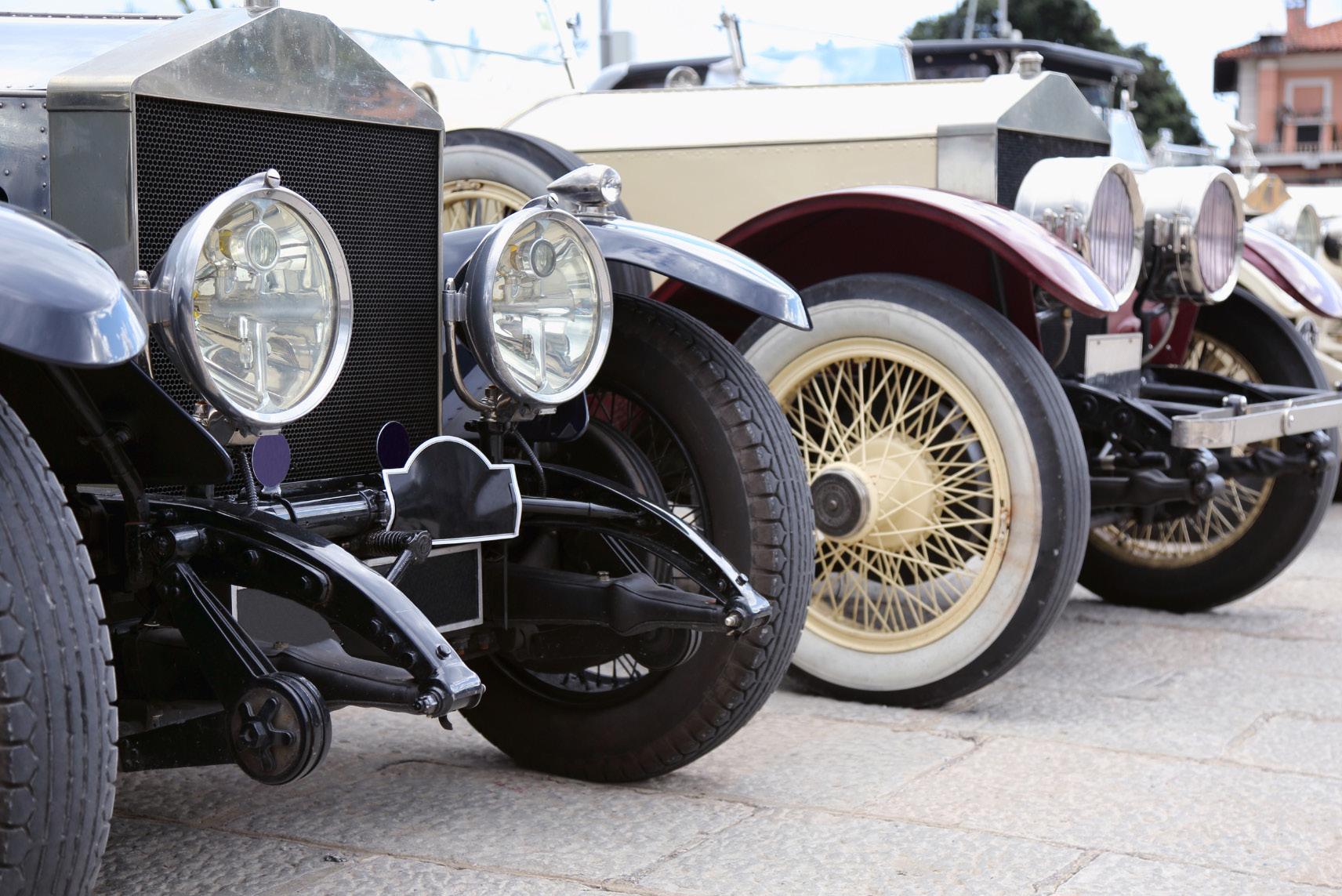
ROYAL EDINBURGH MILITARY TATTOO
2nd - 24th August 2024
The Royal Edinburgh Military Tattoo is a captivating annual event held at Edinburgh Castle. Showcasing a mesmerising blend of music, military precision, and cultural performances, the Tattoo attracts audiences from around the world. With a backdrop of the historic castle, it is a spectacular celebration of tradition, pageantry, and global talent.

THE ROYAL NATIONAL MÒD
11th to 19th October 2024
The Royal National Mòd is an esteemed celebration of Scottish Gaelic language and culture. Held annually, it features a vibrant array of competitions in music, literature, and drama. Participants showcase their talents, fostering a sense of community pride. The Mòd plays a vital role in preserving and promoting Scotland’s rich Gaelic heritage.

145 visitheritage.co.uk
SCOTLAND
GOSFORD HOUSE
www.gosfordhouse.co.uk
In 1791, the 7th Earl of Wemyss embarked on the construction of Gosford House, commissioning Robert Adam to build one of the grandest houses in Scotland. No visit would be complete without a mention of the architectural evolutions of the house, culminating in the creation of the Marble Hall, 1891. Discover the family’s incredible private art collection and take a stroll along the lovely water features in the pleasure grounds.
NO photographs are allowed to be taken inside the house. NO bags are allowed into the house.
Toilet facilities available.
Limited for coaches.
The house has very limited disabled access and part of the tour requires climbing stairs.
Each tour of the house lasts approximately 1 hour. Private tours available out with open days.
Providing the back drop you need for your event; such as black tie grandeur or party informality.
Hosting a variety of large scale group activity days for groups.
Dogs allowed in grounds on leads. Gosford House is available for a limited number of wedding receptions each year.
Played host to several major feature films, series and fashion shoots.
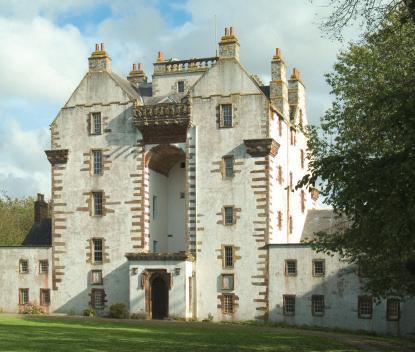
CRAIGSTON CASTLE
www.craigston-castle.co.uk
The beautiful sculpted balcony, unique in Scottish architecture, depicts a piper, two grinning knights and David and Goliath. Carved oak panels of Scottish kings’ biblical heroes, originally from the family seat at Cromarty Castle were mounted in doors and shutters in the early 17th Century.
CONTACT Owner: William Pratesi Urquhart Contact: Elisabetta Calvi Tel: 01888551707
Email: info@craigston.co.uk LOCATION Turriff, Aberdeenshire AB53 5PX Map Ref: 17:D8On B9105, 4.5 miles North East of Turriff. OPENING TIMES Please see our website for up to date information. ADMISSION Please see our website for up to date information.
Please contact for details. Parking available. Very limited wheelchair access. Dogs welcome in the castle grounds. Your choice of room, with period furniture. Craigston is available for exclusive self catering lets. Guided tours are obligatory. Bespoke events can be organised. Please see our website.
TULLIBOLE CASTLE
Crook of Devon, Kinross KY13 0QN
Tel: 01577 840236 Email: hitched@tullibolecastle.com

CONTACT Owner/Contact: The Earl of Wemyss and March Tel: 01875 870201 Email: tours@gosfordhouse.co.uk
LOCATION Longniddry, East Lothian EH32 0PX
Map Ref: 14:17 - Off A198 2 miles North East of Longniddry.
OPENING TIMES Please check our website for most up-to-date opening times/days: www.gosfordhouse.co.uk/house-tours-grounds
ADMISSION Adults £10, Seniors £8, Children (12-18) £6, under 12s Free.

RED ROW
Aberlady, East Lothian EH32 0DE Terraced Cottages.
Location: Main Street, Aberlady, East Lothian. Map Ref: 14:I7
Tel: 01875 870201 Fax: 01875 870620
Open: Exterior only. By appointment, Wemyss and March Estates Office, Longniddry, East Lothian EH32 0PY.
Admission: Please contact for details.
HARELAW FARMHOUSE
Nr Longniddry, East Lothian EH32 0PH
Early 19th Century 2-storey farmhouse built as an integral part of the steading. Dovecote over entrance arch. Location: Between Longniddry and Drem on B1377. Map Ref: 14:I8 Tel: 01875 870201
Open: Exteriors only: By appointment, Wemyss and March Estates Office, Longniddry, East Lothian EH32 0PY.
Admission: Please contact for details.
BEANSTON
Nr Haddington, East Lothian EH41 3SB
Georgian farmhouse with Georgian orangery.
Map Ref: 14:I8 - Between Haddington and East Linton on A199
Tel: 01875 870201
Open: Exterior only: By appointment, Wemyss and March Estates Office, Longniddry, East Lothian EH32 0PY.
Admission: Please contact for details.
COREHOUSE
Lanark ML11 9TQ. Grade A Tudor style house designed by Sir Edward Blore and built in 1820s Map Ref: 13:E9, located on South bank of Clyde above Kirkfieldbank. At West Lodge, drive to bottom of hill. Tel: 01555 663126 Email: dcranstouncorehouse@gmail.com Open: 4-8 & 25-29 May, 27
Jul-14 Aug, Sat-Wed, Tours wkdays 1 & 2.15pm, wkends 1.45 & 3pm.
Admission: Adults £10, Conc. £5. Groups by arrangement.
Scotland 146 visitheritage.co.uk
BALCARRES

A semi fortified tower house built in 1510 with 19th Century additions by Burn and Bryce. Formal terraced and woodland gardens.
CONTACT
Owner: Balcarres Heritage Trust, Contact: Estate Office, Tel: 01333 340 205, Email: office@balcarresestate.co.uk
LOCATION
Colinsburgh, Fife KY9 1HN, Map Ref: 14:I6, ½ mile north of Colinsburgh
OPENING TIMES
Garden & woodlands: Mar-Sep, 2pm5pm. House by appointment only 1-30 April excl Sun.
ADMISSION
Garden: £10, House: £12, Both: £20.
Guided Tours: By arrangement. Suitability for disabled: Gardens – partial. Dogs on leads only.
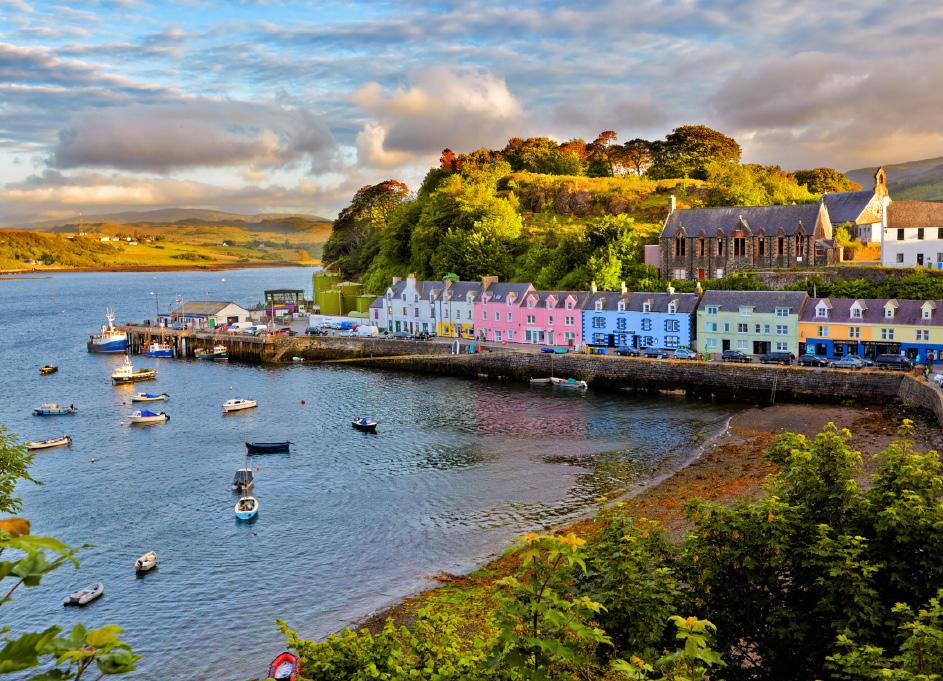
ARNISTON HOUSE
Gorebridge, Midlothian EH23 4RY
What three words: ///crescendo.expired.shape
Tel: 01875 830515 Email: info@arniston-house.co.uk
Web: arnistonhouse.com Open: 1st May-June 2024 on Tues & Wed the Guided Tour starts at 2pm. July to 15th Sept 2024 on Sun, Tues & Wed the Guided Tour start at 2pm.
STRATHTYRUM HOUSE & GARDENS
St Andrews, Fife KY16 9SF
Built in 1753 and a Georgian front added in 1820. The gardens include formal lawns, the restored Victorian walled garden, Doocot and Mausoleum. Map Ref: 14:I5 Tel: 01334 473600
Email: info@strathtyrum.com Open: 17th Apr-18th May inclusive, Mon to Sat. Tours at 9:30, 10:30, 11:30 and 12:30.
Admission: £10 for house tour and mapped walk. No concessions.

CORTACHY ESTATE
www.airlieestates.com
Countryside walks, including access through woodlands to Airlie Monument on Tulloch Hill with spectacular views of the Angus Glens and Vale of Strathmore. Footpaths are waymarked and colour coded.
CONTACT Owner: Trustees of Airlie Estates
Contact: Estate Office Tel: 01575 530387
Email: office@airlieestates.com
LOCATION Cortachy, Kirriemuir, Angus DD8 4LX Map Ref:13:H3 Off the B955 Glens Road from Kirriemuir. OPENING TIMES Walks all year. Gardens: 8th May - 1st June 2024 inclusive. Last admission 3.30pm.
The estate network of walks are open all year round. Limited. Unsuitable Dogs on leads only Please contact for corporate events. Weddings and Celebrations can be held either in a marquee or inside Downiepark House.
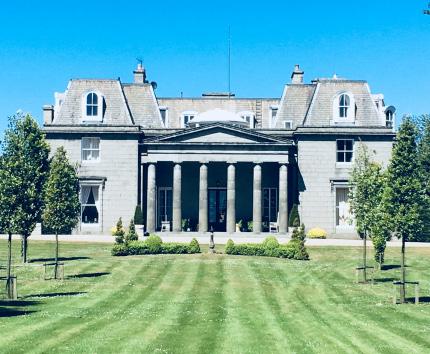
CRIMONMOGATE
www.crimonmogate.com
Situated in Aberdeenshire, Crimonmogate is a Grade A listed mansion house and one of the most easterly stately homes in Scotland. It is now owned by William and Candida, Viscount and Viscountess Petersham. Pronounced ‘Crimmon-moggat’. This exclusive country house stands within beautiful, seasonal parkland and offers one of Aberdeenshire’s most outstanding and unusual venues for corporate events, parties, dinners and weddings.
CONTACT Owner/Contact: Viscount Petersham Tel: 01346 532401
Email: info@cmg-events.co.uk LOCATION Lonmay, Fraserburgh, Aberdeenshire AB43 8SE
Map Ref:17:F8 OPENING TIMES Please refer to the website for visiting dates.
ADMISSION Adult £7, Conc £6, Child £5. Max of 12 at any one time, guided tours only.
Parking available. Principal rooms only in tour. Weddings & special events: max 60 in hall & up to 200 in marquee. Please see website for all upcoming events. Fully licensed for civil ceremonies - and receptions are held in the unique marquee, or ‘yurt’.
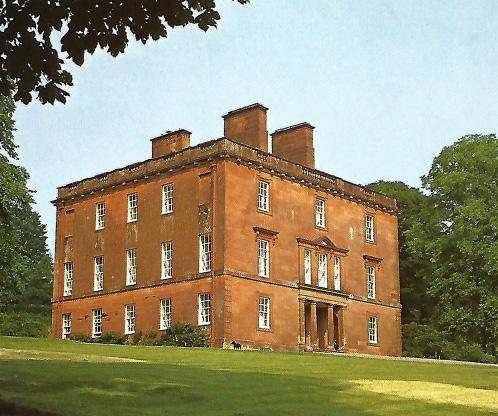
RAMMERSCALES
www.rammerscales.com
Built in the reign of George III, this classic Scottish mansion faces due East, high over the Annan valley. Commissioned by Dr. Jacobus Mounsey in 1768 it was purchased by the Bell family 22 years later whose descendant is still in residence. Rammerscales House was completed in 1768 and remains largely untouched during the last 250 years. It boasts a fine Library and stunning views over Annandale.
CONTACT Tel: 01387 810229, Email: malcolm@rammerscales.co.uk
LOCATION Lockerbie, Dumfriesshire DG11 1LD.
OPENING TIMES Open May 1 to May 25 every day 1pm to 5 pm. £5.00 entry. Open other times for groups by appointment. See Rammerscales website for further details.
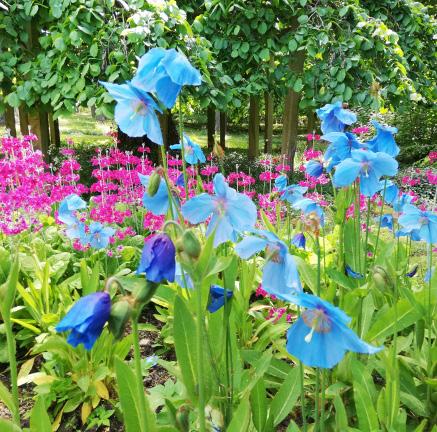
MERTOUN GARDENS
www.mertoungardens.co.uk
Mertoun Gardens lie to the north and east of Mertoun House extending to about 26 acres. On a south facing slope the walled garden is situated containing fruit trees, vegetables and flowers.
CONTACT Email: estateoffice@mertoun.com, Telephone: 01835 823236.
LOCATION Mertoun Gardens can be found by the B6404, 2 miles north-east of St Boswells.
OPENING TIMES & ADMISSIONS Mertoun Gardens is open 1 April to 30 September, Fridays, Saturdays, Sundays and Mondays, 2pm to 6pm, or by appointment.
Last entry 5.30pm.
Scotland 147 visitheritage.co.uk
• Caernarfon • Llandudno

COUNTRYSIDE
Snowdonia
Brecon Beacons
Pembrokeshire Coast
HERITAGE
Medieval castles
Tudor manor houses
Mining heritage
FOOD
Welsh cakes
Welsh rarebit
Lamb cawl NORTH WALES
• Aberystwyth
MID WALES SOUTH WALES
WALES SOUTH WALES • MID WALES • NORTH WALES
Cardiff Bangor Newport Swansea St David’s WYE VALLEY AND FOREST OF DEAN. visitheritage.co.uk 148
• Machynlleth • Pembroke
Events

HAY FESTIVAL
23rd May - 2nd June 2024
Hay Festival, held annually in the charming town of Hay-onWye, is a world-renowned literary and arts event. Gathering writers, thinkers, and audiences, it offers a dynamic platform for intellectual exchange. With a diverse programme of talks, performances, and workshops, the festival celebrates literature, ideas, and the joy of storytelling.

ROYAL WELSH SHOW 22nd -25th July 2024
The Royal Welsh Show, held annually in Llanelwedd, is one of Europe’s largest agricultural events. Showcasing the best in farming, livestock, and rural life, it attracts farmers, exhibitors, and visitors from around the world. The event features competitions, demonstrations, and a vibrant atmosphere, celebrating the rich agricultural heritage of Wales.

GREEN MAN FESTIVAL
15th - 18th August 2024
Green Man Festival, set in the scenic Brecon Beacons, is a renowned cultural event blending music, arts, and nature. With a diverse lineup of performers, workshops, and immersive experiences, it creates a vibrant, communal atmosphere. Surrounded by the picturesque landscape, the festival is a unique celebration of creativity and environmental consciousness.

149 visitheritage.co.uk
WALES
ABERCAMLAIS HOUSE
www.abercamlais.com
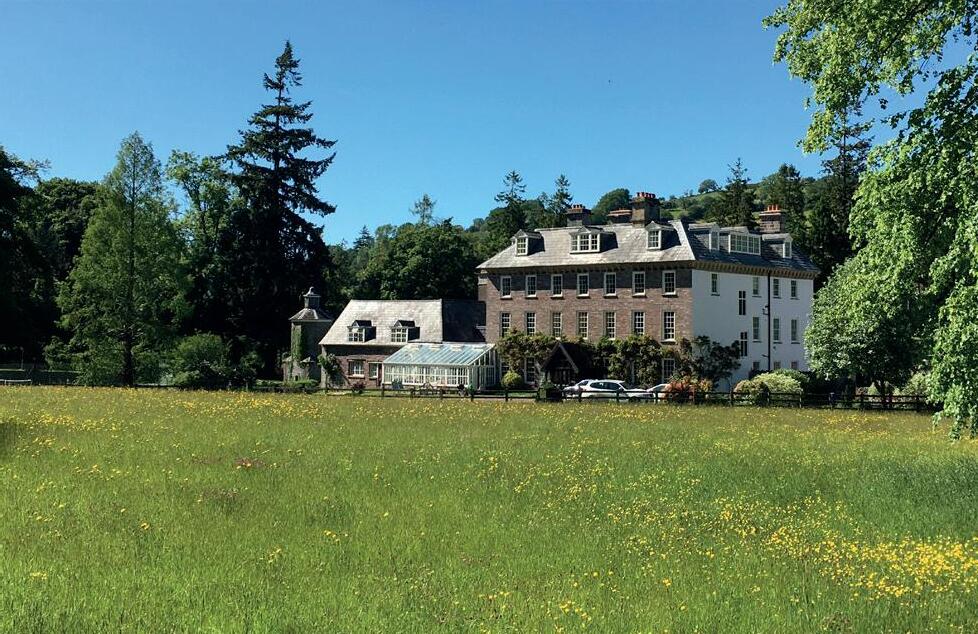
Abercamlais is a splendid Grade 1 listed mansion set in the heart of the Brecon Beacons. Come and explore the beautiful walled garden and the unique suspension bridge in the historic grounds.
CONTACT Owner: Mr & Mrs Ballance
Contact: Mrs Ballance Tel: 07789930064
Email: andreajballance@gmail.com
LOCATION Abercamlais, Brecon, Powys LD3 8EY Map Ref: 6:I10 5m W of Brecon on A40.
OPENING TIMES Apr-End Sep See website for further details.
ADMISSION Adult: £7.50, Child: Free.
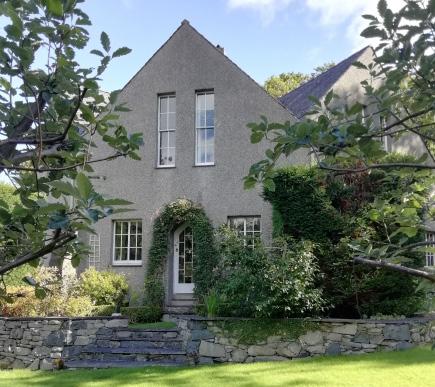
WERN ISAF
This Arts and Crafts house was built in 1900 by the architect H L North as his family home and contains much of the original furniture and William Morris fabrics. Situated in a woodland garden with extensive views over the Menai Straits and Conwy Bay.
CONTACT Owner/Contact: Mrs P J Phillips Telephone: 01248 680437
OPENING TIMES April 1 - 29, 2024. Every day except Wednesdays between 11am - 3pm
LOCATION Penmaen Park, Llanfairfechan, Conwy LL33 0RN. Map ref: 5:G2 off A55 midway between Bangor and Conwy.
ADMISSION Free.
Guided Tours Parking Available For all further enquiries please contact Mrs Phillips.

CONTACT
GLEN YR AFON HOUSE HOTEL
www.glen-yr-afon.co.uk
Nestling in the heart of the Monmouthshire countryside and located a short stroll from the picturesque town of Usk, our family-run hotel offers relaxation and a high level of personal service. We also host business conferences, family celebrations, short breaks, birthday gatherings or dinner parties in our Clarkes Restaurant.
No photography in house. Parking available. Dogs welcome on leads only. Obligatory. The tour lasts for about 2 hours.
Accessible.
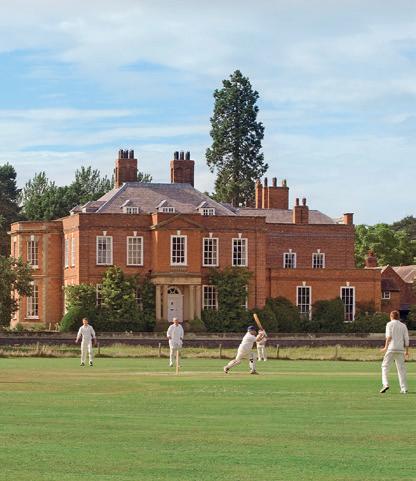
ISCOYD PARK www.iscoydpark.com
A red brick Georgian House in an idyllic 18th Century parkland setting situated on the Welsh/ Shropshire border. Still a family home, Iscoyd has undergone a complete restoration over the last thirteen years, whilst building a reputation as an award-winning wedding and events venue.
CONTACT Contact/Owner: Philip L Godsal
Tel: 01948 780785 E-mail: info@iscoydpark.com
LOCATION Nr Whitchurch, Shropshire SY13 3AT
Map Ref: 6:L4 - 2 miles West of Whitchurch off A525. OPENING TIMES House visits by prior appointment.
Open all year. Limited for coaches. Obligatory. Please see website. WCs. By arrangement. Licensed. Private dinners and weddings a speciality.
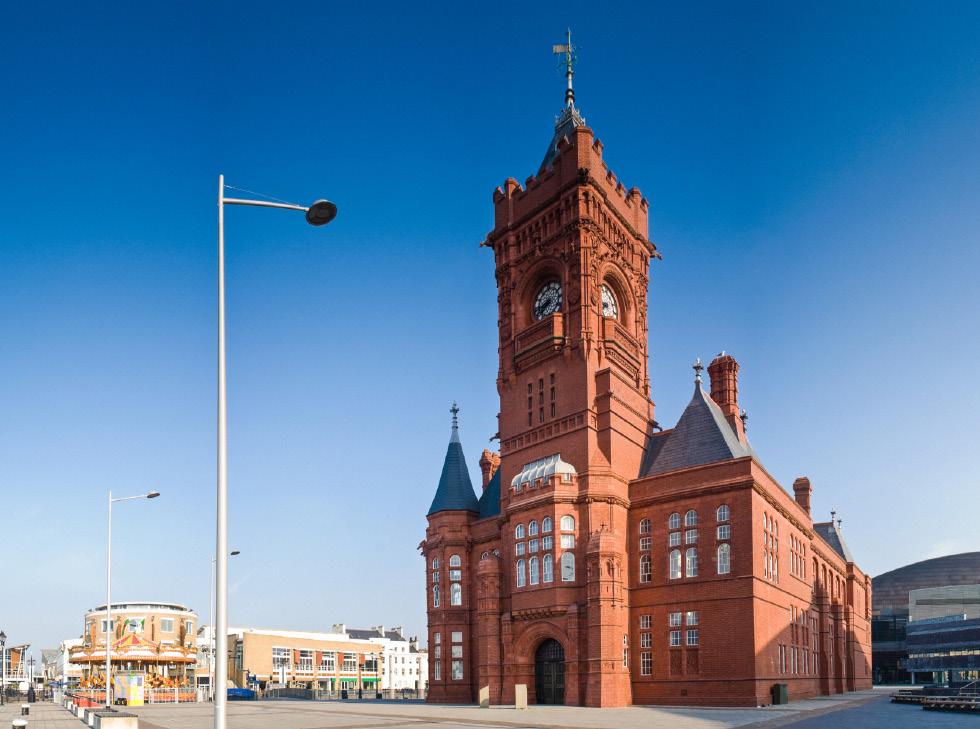
Tel: 01291 672302 or 01291 673202
Email: enquiries@glen-yr-afon.co.uk
LOCATION
Glen-Yr-Afon House Hotel Ltd. Pontypool Road, Usk, Monmouthshire NP15 1SY
LLANVIHANGEL COURT
www.llanvihangelcourt.com

Llanvihangel Court is a beautiful Grade 1 Elizabethan manor with origins in the C14th. There is a magnificent C17th staircase of yew, moulded plaster ceilings & early stables. The C17th owners, the Arnold family, were notorious for their extreme anti-Catholic beliefs, the persecution of Catholic priests & the arrest of David Lewis, the last priest to be hanged in Wales.
CONTACT Tel: 07806 768 788
Email: enquiries@llanvihangelcourt.com
LOCATION Nr Abergavenny, Monmouthshire NP7 8DH
No inside photography. Limited, no coaches.
Private hire.
Map 6:K11 4m N of Abergavenny on A465.
OPENING TIMES & ADMISSION
Visit our website: www.llanvihangelcourt.com/visit
Obligatory.
Partial. Dogs on leads only.
Wales 150 visitheritage.co.uk
TREOWEN
Wonastow, Monmouth, NP25 4DL
The most important early 17th Century gentry house in the county. Particularly fine open well staircase. Location: What three words: ///trapdoor.arrow.icebergs Tel: 07530 357390 Website: www.treowen.co.uk Open: May-Aug, Fri 10am-4pm. Also Sat & Sun 13-14, 20-21 & 27-29 Apr; 11-12 & 18-19 May 2-5pm.
Admission: £7.50, Free to H H members Fridays only.
CORNWALL HOUSE
58 Monnow Street, Monmouth NP25 3EN Town house, Georgian street façade, walled garden.
Location: What Three Words: ///ships.trucked.manly
MapRef: 6:L11 Tel: 01600 712031 Email: jane2harvey@tiscali.co.uk
Open: 2-5pm on Fridays in July and August and also March 28-31; April 1; May 4-6, 25-27; August 3-4 and 24-26.
Admission: Adult £5, Conc. £2.50.
CRESSELLY
Kilgetty, Pembrokeshire SA68 0SP
Home of the Allen family for 250 years. The house is of 1770 with matching wings of 1869 and contains good plasterwork and fittings of both periods.
Email: hugh@cresselly-estate.com Map Ref: 5:C12
Website: www.cresselly.com Open: Please see website for details.
Admission: Adult £5.00, no children under 12.
TREBINSHUN
Llangasty, Nr Brecon, Powys LD3 7PX
Tel: 01874 730653
LLANCAIACH FAWR MANOR
www.llancaiachfawr.co.uk
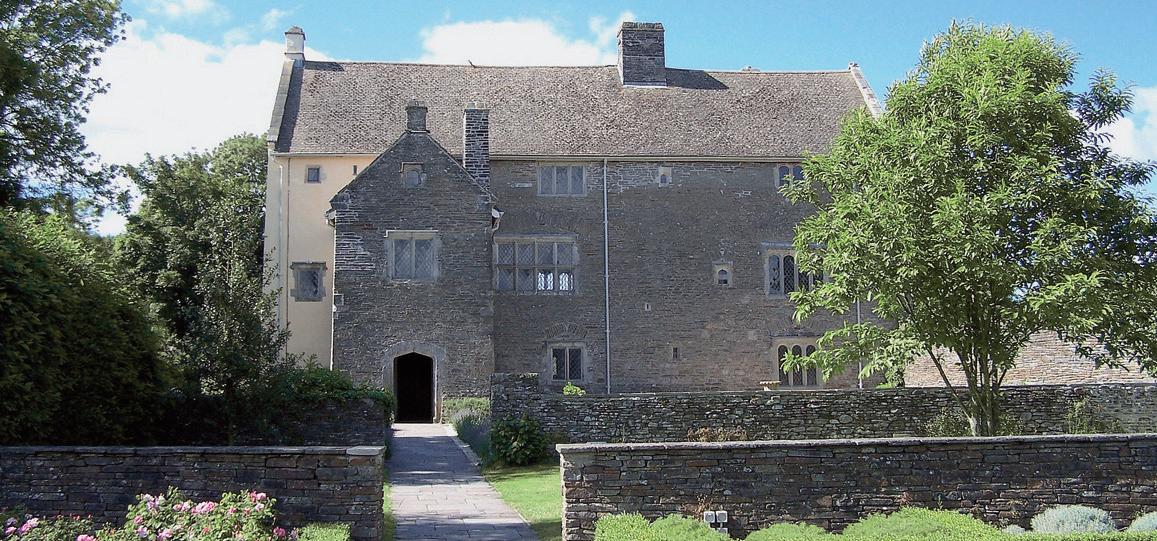
Llancaiach Fawr Manor is no ordinary heritage attraction. History here is tangible. The costumed servants of the house are living in 1645 and allow you to share in their world. Fires crackle, candles flicker and the sounds of domestic life make your visit a memorable experience of the past.
CONTACT Owner: Caerphilly County Borough Council Contact: Reception
Tel: 01443 412248
Email: llancaiachfawr@caerphilly.gov.uk
LOCATION Gelligaer Road, Nelson, Treharris, Caerphilly County Borough CF46
6ER Map Ref: 2:M1 South side of B4254, 1 mile North of A472 at Nelson.
OPENING TIMES 2nd Jan - 24th Dec 2024, closed Mondays and Bank holidays.
ADMISSION Adult £8.50, Conc £6.95, Child £6.95, Family (2+3) £25
Historic tours activities, trails and workshops. 90 free spaces.
Costumed 17th century servants lead tours which take approx. 1.5 hours Licensed café / restaurant serving hot and cold drinks, snacks and meals.
Boutique gift shop. Provides a distinctive environment for any conference, business meeting, banquet or dinner party. Ideal location for your wedding overlooking the peaceful surroundings of the Rhymney Valley.

Wales 151 visitheritage.co.uk
NORTHERN IRELAND
ANTRIM • ARMAGH • DOWN FERMANAGH • LONDONDERRY • TYRONE

COUNTRYSIDE
Causeway Coast
Mourne Mountains
Lough Neagh
HERITAGE
Norman castles
Plantation houses
Game of Thrones locations
FOOD
Stout & whiskey
Potato breads
Irish stew
ANTRIM
DERRY
TYRONE
FERMANAGH
ARMAGH DOWN Antrim
Belfast Lisburn Newry
Londonderry
Armagh
visitheritage.co.uk 152
Enniskillen
Events

OMAGH SHOW
5th - 6th July 2024
Omagh Show is an annual agricultural showcase in County Tyrone, Northern Ireland. It features a diverse array of events, including livestock competitions, equestrian displays, and craft exhibitions. Embracing rural traditions, the show provides a platform for local farmers, artisans, and families to come together in celebration of agriculture and community.

BELFAST INTERNATIONAL ARTS FESTIVAL
October 2024 - Dates to be confirmed
Belfast International Arts Festival is a dynamic cultural showcase held annually in October. Embracing diversity, it features a rich tapestry of performances in music, theater, dance, and visual arts. International and local artists converge, creating a platform for creative expression and fostering a vibrant cultural exchange in the heart of Belfast.
HALLOWEEN CELEBRATIONS IN DERRY/LONDONDERRY
31st October 2024
Halloween Celebrations in Derry/Londonderry are among Europe’s most spectacular. The city transforms with a hauntingly vibrant atmosphere on October 31. The festival includes a captivating parade, fireworks, and a range of spooky events, showcasing the city’s unique blend of tradition and contemporary creativity, drawing visitors for an unforgettable Halloween experience.
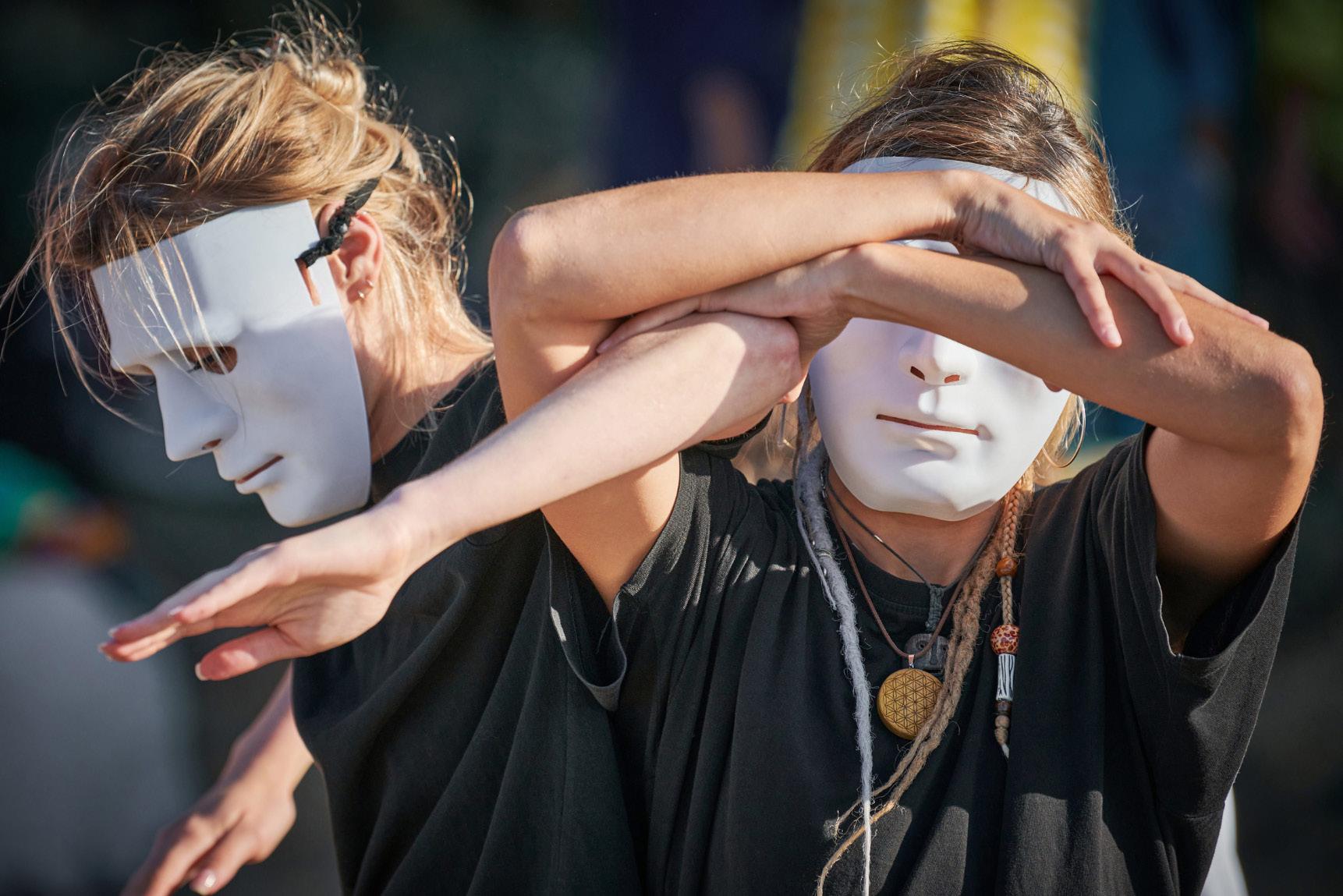

153 visitheritage.co.uk
NORTHERN IRELAND

BARONS COURT www.barons-court.com
The home of the Duke of Abercorn, Barons Court was built between 1779 and 1782, and subsequently extensively remodelled by John Soane (1791), William and Richard Morrison (1819-1841), Sir Albert Richardson (1947-49) and David Hicks (1975-76).
CONTACT The Estate Office Tel: 028 8166 1683
Email: info@barons-court.com
LOCATION Newtownstewart, Omagh, Co Tyrone BT78 4EZ Map Ref:18:M3 - 5km South West of Newtownstewart.
OPENING TIMES By appointment only ADMISSION Tour of House and Gardens £20 per person. Tour inc. tea/coffee/scones £25 per person. Groups max. 50. No photography. Guided Tours by appointment only. Parking available. Partially accessible. The Carriage Room in the Stable Yard.
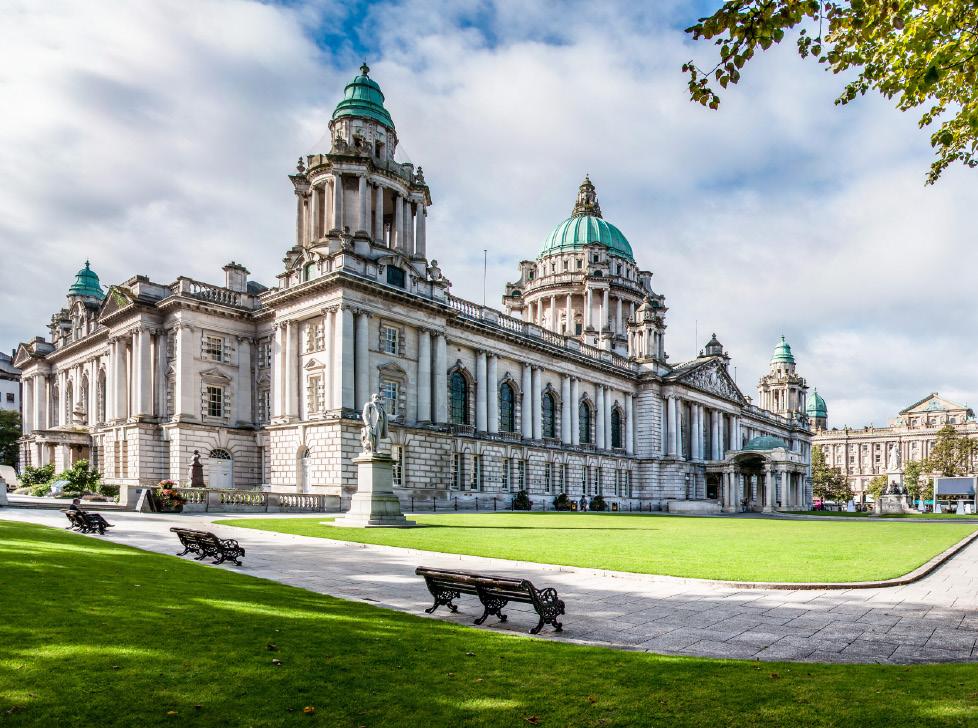

Northern Ireland visitheritage.co.uk 154
NORTHERN IRELAND explore
One of the least known heritage destinations in the British Isles but it should be top of your list. Combining beautiful countryside with relatively short distances between must-see destinations, the province offers a distinctive heritage to visitors.
BELFAST
Belfast is a powerhouse for industry and a city bursting with heritage and culture. The main attraction of the city is Titanic Belfast. The stunning landmark building dominates the skyline in the old docklands and is where you can discover the story of the most famous ship in the world and its ill-fated journey across the Atlantic Ocean. There are many museums, Botanic Gardens and the iconic Belfast Castle, all well worth exploring.
COUNTY ANTRIM
County Antrim is a perfect snapshot of Northern Ireland and home to the dynamic city of Belfast. Whether it’s the ruins of 400-year-old Shane’s Castle on Lough Neagh or the spectacular Norman fortress of Carrickfergus, there is plenty to fire your imagination. Every fan of Game of Thrones will want to make their way to the world famous Dark Hedges in Ballymoney.
DERRY - LONDONDERRY
Behind the 400 year old city walls, which are one of the world’s best preserved, and you will find a city crammed full of history and heritage. Part of Derry’s history since 1887, is the beautifully ornate building of The Guildhall. Wander the streets of Derry to find some of the celebrated Derry murals, not just the 12 which marked The Troubles in the 1970s but more recent additions, celebrating popular TV series Derry Girls and the role of female factory workers in the city.
Just outside of the city is Seamus Heaney Homeplace which gives an inspiring glimpse of the life and work of one of Northern Ireland’s greatest writers.
CAUSEWAY COASTAL ROUTE
The Causeway Coastal Route captures the rugged beauty of Northern Ireland and the dramatic coastline has
inspired mythical stories. There’s a lot to see along the way, from the medieval ruins of Dunluce Castle, an extinct volcano where, according to legend, Saint Patrick tended sheep after being captured, stunning panoramas and the iconic Mussenden Temple.
And of course, Northern Ireland’s most celebrated tourist attraction – the Giant’s Causeway. The first UNESCO Heritage Site in the country, is a geological wonder and home to a wealth of history and legend.
COUNTY DOWN
County Down offers plenty of castles to explore, with a few acquiring fame thanks to the hit HBO series, Game of Thrones. Another magnificent monument is Scrabo Tower in Newtownards. Standing on a steep hill 540 feet above sea level and even visible from Belfast on a clear day, it gives incredible views over across rolling hills, forest and Strangford Lough. Strangford Lough itself has a long maritime history that’s worth exploring.
COUNTY FERMANAGH
County Fermanagh boasts a wealth of fine country estates and castles. Fermanagh’s largest town, Enniskillen, is dominated by the walls and battlements of Enniskillen Castle. Set on the shores of Upper Lough Erne in County Fermanagh, Crom is one of Northern Ireland’s most important nature conservation areas. The 2000 acre site contains ancient woodland, tranquil islands, estate cottages and Old Crom Castle. Formerly the home of the Earls of Enniskillen, the National Trust’s Florence Court is one of the most important Georgian estate in Northern Ireland, and holds a fascinating collection of Irish Furniture and some of the best Rococo plasterwork in Ireland.
COUNTY TYRONE
Visiting Northern Ireland’s largest county includes spectacular landscapes and history.
The Hill of The O’Neill is one of the most important sites in the history of Ireland and is a place of authority and power for a region ruled for over 400 years by the O’Neills, one of the most powerful dynasties in Ulster. The ruins of Harry Avery’s Castle are thought to have been built around 1320 by a local chieftain of the O’Neill.
COUNTY ARMAGH
Armagh is the smallest county and the heartland of St Patrick. The story tells that he built a church here in 445AD and today, you have two impressive options to explore. Within walking distance of the city centre, the 300-acre Palace Demesne was, until 1975, home to the Archbishops of the Church of Ireland. West of the City lies Navan Fort, the ancient “Emain Macha” of Irish legend and one of the earliest provincial capitals of Ulster. It is a large earthwork on top of a drumlin and is thought to be the site of a Pagan sanctuary.
Ireland 155 visitheritage.co.uk
Northern
Places listed by name in alphabetical order

B
Abercamlais House, Wales 150 Alnwick Castle, North East 142 Arbury Hall, Heart of England 128 Arniston House, Scotland 147 Askham Hall, North West 139
A
Balcarres, Scotland 147 Barons Court, Northern Ireland 154 Beanston, Scotland 146 Beaulieu, South East 103 Bosworth Battlefield Heritage Centre & Country Park, East Midlands 122 Broadlands, South East 104 Broughton Castle, South East 98
Cadhay, South West 111 Caerhays Castle & Garden, South West 109 Canterbury Cathedral, South East 102 Capesthorne Hall, North West 139 Castle Rising Castle, East of England 115 Chillingham Castle, North East 143 Copped Hall, East of England 116 Corehouse, Scotland 146 Cornwall House, Wales 151 Corsham Court, South West 111 Cortachy estate, Scotland 147 Cottesbrooke Hall & Gardens, East Midlands 121 Craigston Castle, Scotland 146 Cresselly, Wales 151 Crimonmogate, Scotland 147
NDEX
C
I
156 visitheritage.co.uk

H
Deans Court, South West 109 Dorney Court, South East 103
Fairfield House, South West 110 Firle Place, South East 104 Fulbeck Manor, East Midlands 122 Fullers Mill, East of England 116
Gainsborough’s House, East of England 116 Glen Yr Afon House Hotel, Wales 150 Goodnestone Park Gardens, East Of England 117 Gosford House, Scotland 146 Grimsthorpe Castle, East Midlands 121
Hardwick Hall, East Midlands 124 Harelow Farmhouse, Scotland 146 Hatfield House, East of England 115 Hemerdon House, South West 109 High Beeches Woodland & Water Park, South East 102 Hodnet Hall Gardens, Heart of England 130 Holkham Hall, East of England 114 Houghton Lodge gardens, South East 104 Hovingham Hall, Yorkshire 134 Howick Hall Gardens & Arboretum,North East 142
Ingatestone Hall, East of England 117 Iscoyd Park, Wales 150 157 visitheritage.co.uk
D
F
G
I
K Keats House, London 95 Kelmarsh Hall & Gardens, East Midlands 121 Kelmscott Manor, South West 1 11 Kiftsgate Court Gardens, South West 109 Kingston Bagpuize House, South East 100 Knebworth House, East of England 116 Knole, South East 104 L Lamport Hall & Gardens, East Midlands 120 Lancing College Chapel, South East 99 Leadenham House, East Midlands 122 Leighton Hall, North West 138 Little Malvern Court, Heart of England 130 Llancaiach Fawr Manor, Wales 151 Llanvihangel Court, Wales 150 Longner Hall, Heart of England 129 Lulworth Castle, South West 110 M Mannington Estate, East of England 117 Meols Hall, North West 138 Melbourne Hall & Gardens, East Midlands 122 Mertoun Gardens, Scotland 147 Minterne Gardens, South West 108 Mr Straw’s House, East Midlands 123 N Nether winchendon House, South East 104 Newby Hall & Gardens, Yorkshire 135 Nymans, South East 104 O Old Sufton, Heart of England 130 Orchard Wyndham, South West 110 P Parham House and Gardens, South East 104 Peover Hall, North West 139 Pitchford Hall & Tree House, Heart of England 130 R Rammerscales, Scotland 147 Raveningham Gardens, East of England 115 Red Row, Scotland 146 Restoration House, South East 98 Rockingham Castle, East Midlands 122 S Salisbury Cathedral, South West 111 Sezincote, South West 108 St Marys House & Gardens, South East 101 Standen Hall, South East 104 Stanford Hall, East Midlands 124 Stanway House & Water Garden, South West 108 Stoneleigh Abbey, Heart of England 130 Strathtyrum House & Gardens, Scotland 147 Sufton Court, Heart of England 129 Sutton Park, Yorkshire 135 Syon Park, London 94 158 visitheritage.co.uk
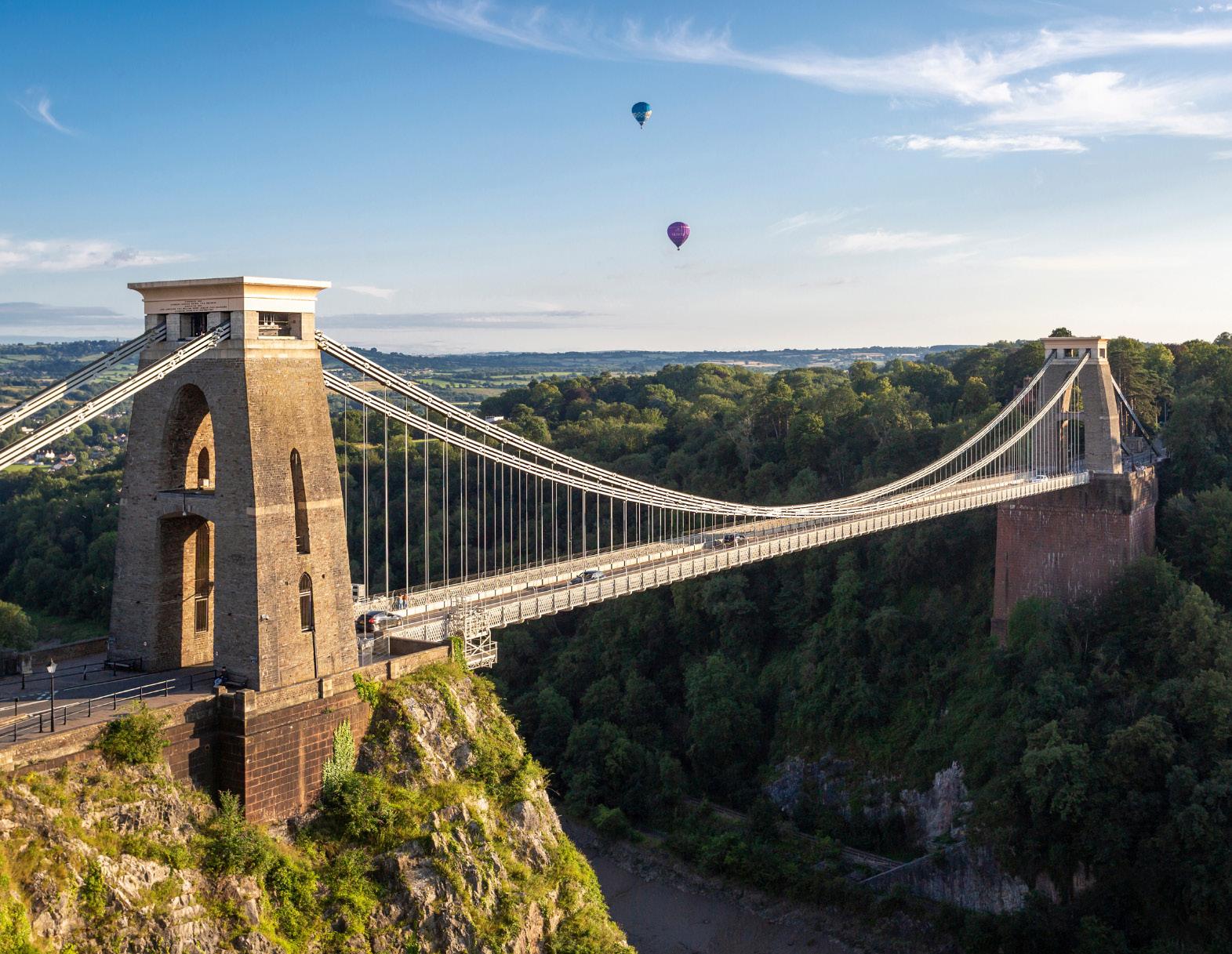
The Laskett, Heart of England 129 The 1620’s House & Garden, East Midlands 122 The Manor, Hemingford Grey East of England 116 Tiverton Castle, South West 111 Trebinshun, Wales 151 Treowen, Wales 151 Trewithen Gardens & Parks, South West 110 Tullibole Castle, Scotland 146 Turvey House, East of England 117
Wakefield Lodge, East Midlands 122 Wassand Hall, Yorkshire 134 Wern Isaf, Wales 150 Whittington Court, South West 111 Winterbourne House & Gardens, Heart of England 130 Wotton House, South East 102
York Gate, Yorkshire 135
THE DEFINITIVE GUIDE TO HERITAGE IN THE UNITED KINGDOM
For 36 years, Hudson’s has been the definitive source of information and inspiration for visits to heritage places in the UK.
We match up to date details arranged by region to help you find historic houses, cathedrals and places where history was made, with stunning photographs that make the most of the beauty of Britain’s heritage places.
You can take inspiration from history, art, gardens, architecture or find the stories that bring the past alive. Enjoy all the ingredients of a great day out with things for kids to do, shopping, eating out and plenty of walks.
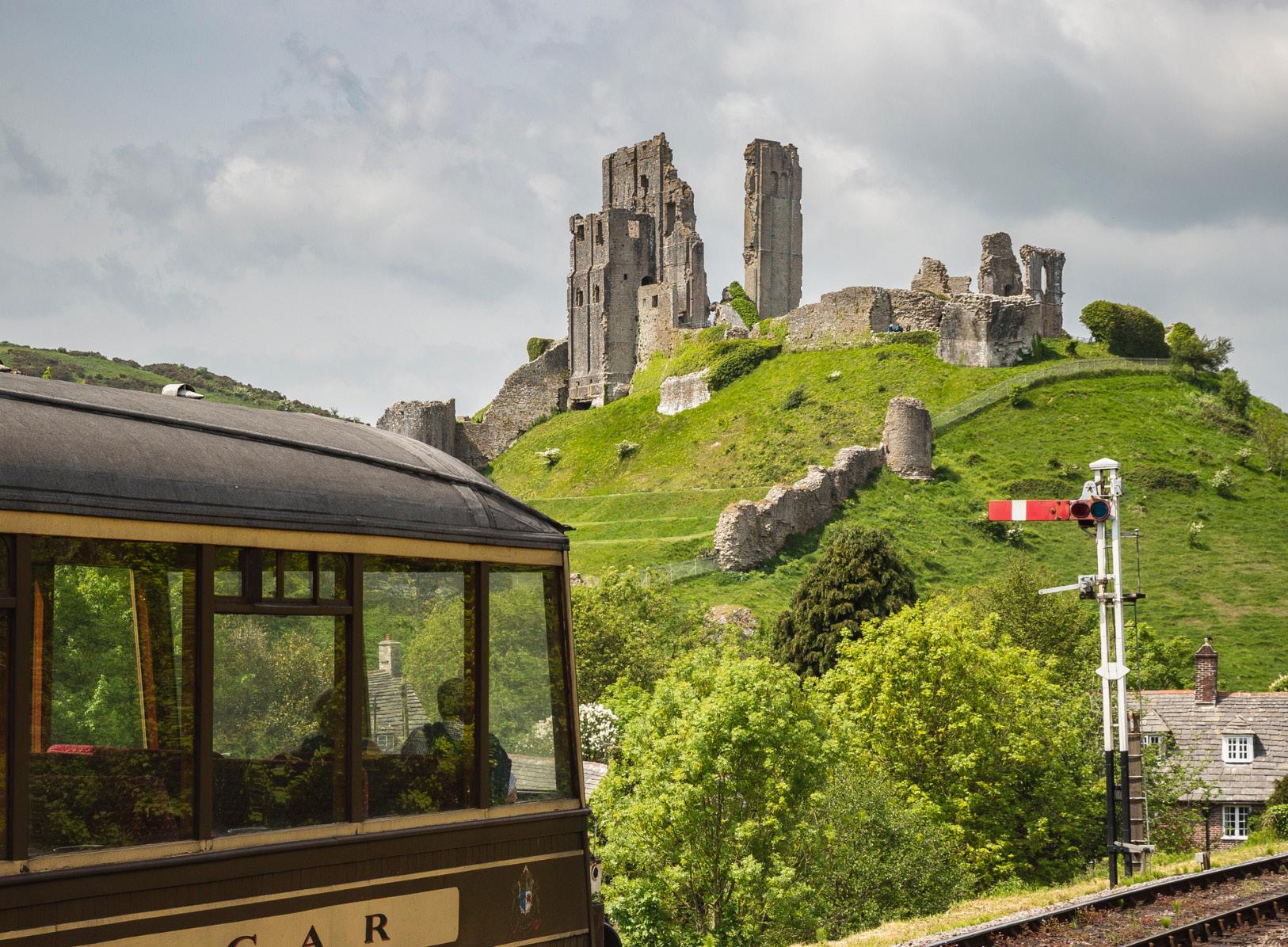

visitheritage.co.uk
£19.99
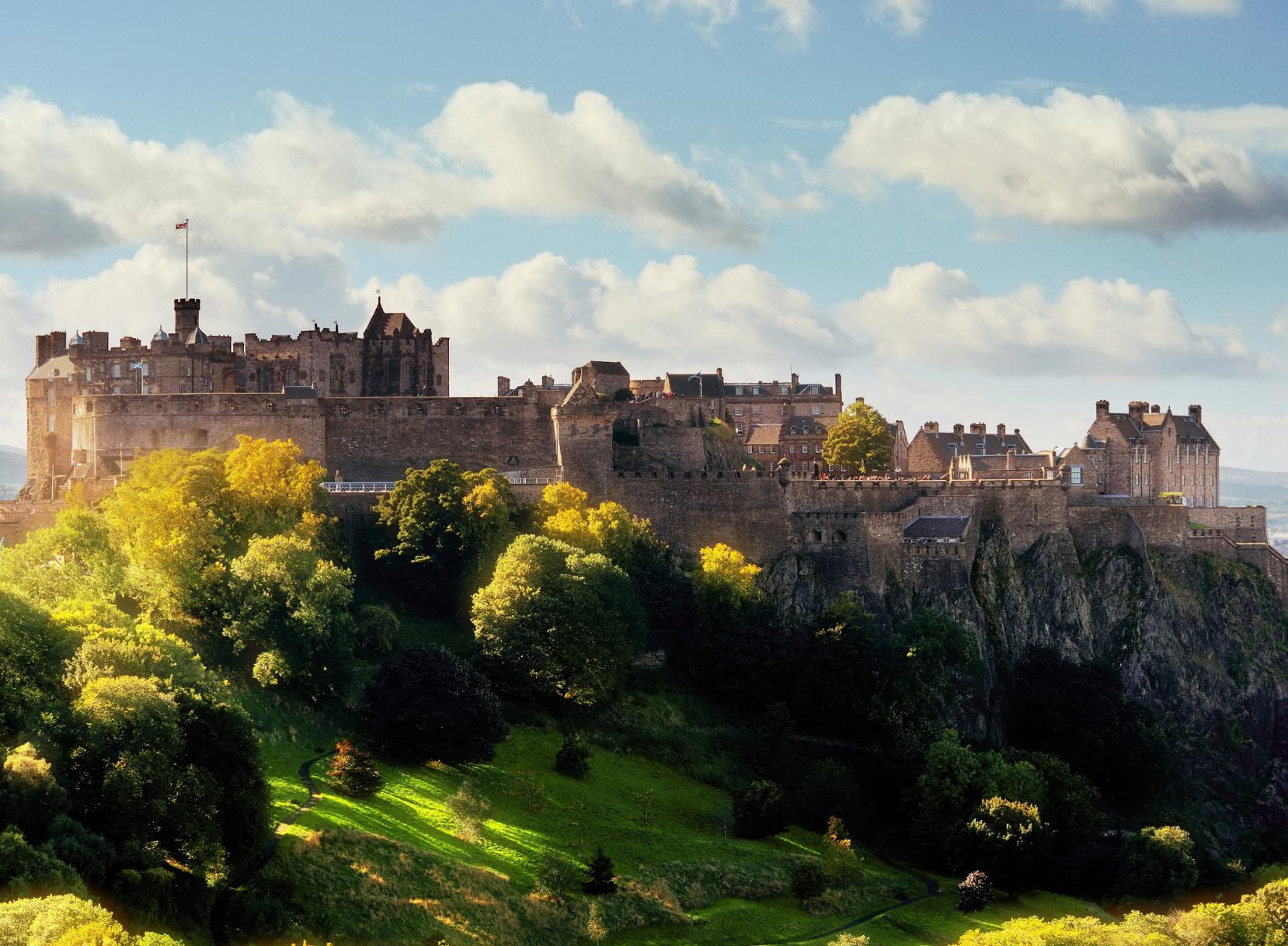













 Royal Collection Trust / © His Majesty King Charles III 2023
Royal Collection Trust / © His Majesty King Charles III 2023

































 HOLY THORN TREE, GLASTONBURY ABBEY
HOLY THORN TREE, GLASTONBURY ABBEY
























 CARRICKFERGUS CASTLE
CARRICKFERGUS CASTLE
















 HENRY VIII’S GREAT HALL, HAMPTON COURT PALACE
HENRY VIII’S GREAT HALL, HAMPTON COURT PALACE


















 LORD MONTAGU AND LABOUR MP FOR ENFIELD, TED GRAHAM, DELIVER A ONE MILLION STRONG PETITION TO THE HOUSES OF PARLIAMENT IN 1973
RALPH, LORD MONTAGU, SON OF THE FOUNDING PRESIDENT OF HISTORIC HOUSES, ADDRESSES THE DELEGATES AT THE 50TH ANNIVERSARY AGM IN NOVEMBER 2023
LORD MONTAGU AND LABOUR MP FOR ENFIELD, TED GRAHAM, DELIVER A ONE MILLION STRONG PETITION TO THE HOUSES OF PARLIAMENT IN 1973
RALPH, LORD MONTAGU, SON OF THE FOUNDING PRESIDENT OF HISTORIC HOUSES, ADDRESSES THE DELEGATES AT THE 50TH ANNIVERSARY AGM IN NOVEMBER 2023



























 VENETIAN CANAL, BELCHAMP WALTER
DEREK AT GAINSBOROUGH’S HOUSE, SUDBURY
PRINT OF MR AND MRS ANDREWS PORTRAIT, BULMER CHURCH
VENETIAN CANAL, BELCHAMP WALTER
DEREK AT GAINSBOROUGH’S HOUSE, SUDBURY
PRINT OF MR AND MRS ANDREWS PORTRAIT, BULMER CHURCH


 PLAQUE IN GAINSBOROUGH’S HOUSE GARDEN, SUDBURY
PLAQUE IN GAINSBOROUGH’S HOUSE GARDEN, SUDBURY









 MELFORD HALL MOAT AND TOWER OF BABEL CEDAR TREE, KENTWELL
SIR WILLIAM CLOPTON’S TOMB, LONG MELFORD CHURCH
ELIZABETH DE MOWBRAY, QUEEN OF HEARTS, LONG MELFORD CHURCH
BULL INN, LONG MELFORD
THE GREAT HALL, KENTWELL
THE FORECOURT, KENTWELL HALL
MELFORD HALL MOAT AND TOWER OF BABEL CEDAR TREE, KENTWELL
SIR WILLIAM CLOPTON’S TOMB, LONG MELFORD CHURCH
ELIZABETH DE MOWBRAY, QUEEN OF HEARTS, LONG MELFORD CHURCH
BULL INN, LONG MELFORD
THE GREAT HALL, KENTWELL
THE FORECOURT, KENTWELL HALL
 TERRY GILLIAM’S GALLEON FROM THE ADVENTURES OF BARON MUNCHAUSEN, KENTWELL
TERRY GILLIAM’S GALLEON FROM THE ADVENTURES OF BARON MUNCHAUSEN, KENTWELL








 THE SWAN, LAVENHAM GUILDHALL, LAVENHAM
THE SWAN, LAVENHAM GUILDHALL, LAVENHAM






















 LEFT: SIR HARRY FETHERSTONHAUGH BY POMPEO BATONI ©NATIONAL TRUST IMAGES/PRUDENCE CUMING, WWW.NATIONALTRUST.ORG.UK / RIGHT: MARY ANN FETHERSTONHAUGH FROM A PHOTOGRAPH OF 1874 BY RNC USDELL © NATIONAL TRUST / ANDREW FETHERSTON, WWW.NATIONALTRUST.ORG.UK
LEFT: SIR HARRY FETHERSTONHAUGH BY POMPEO BATONI ©NATIONAL TRUST IMAGES/PRUDENCE CUMING, WWW.NATIONALTRUST.ORG.UK / RIGHT: MARY ANN FETHERSTONHAUGH FROM A PHOTOGRAPH OF 1874 BY RNC USDELL © NATIONAL TRUST / ANDREW FETHERSTON, WWW.NATIONALTRUST.ORG.UK













 BLENHEIM PALACE FROM A GUIDEBOOK BY WILLIAM MAVOR OF 1810
HAMPTON COURT PALACE, OPEN TO VISITORS FROM 1838
BLENHEIM PALACE FROM A GUIDEBOOK BY WILLIAM MAVOR OF 1810
HAMPTON COURT PALACE, OPEN TO VISITORS FROM 1838



























































































































































































































